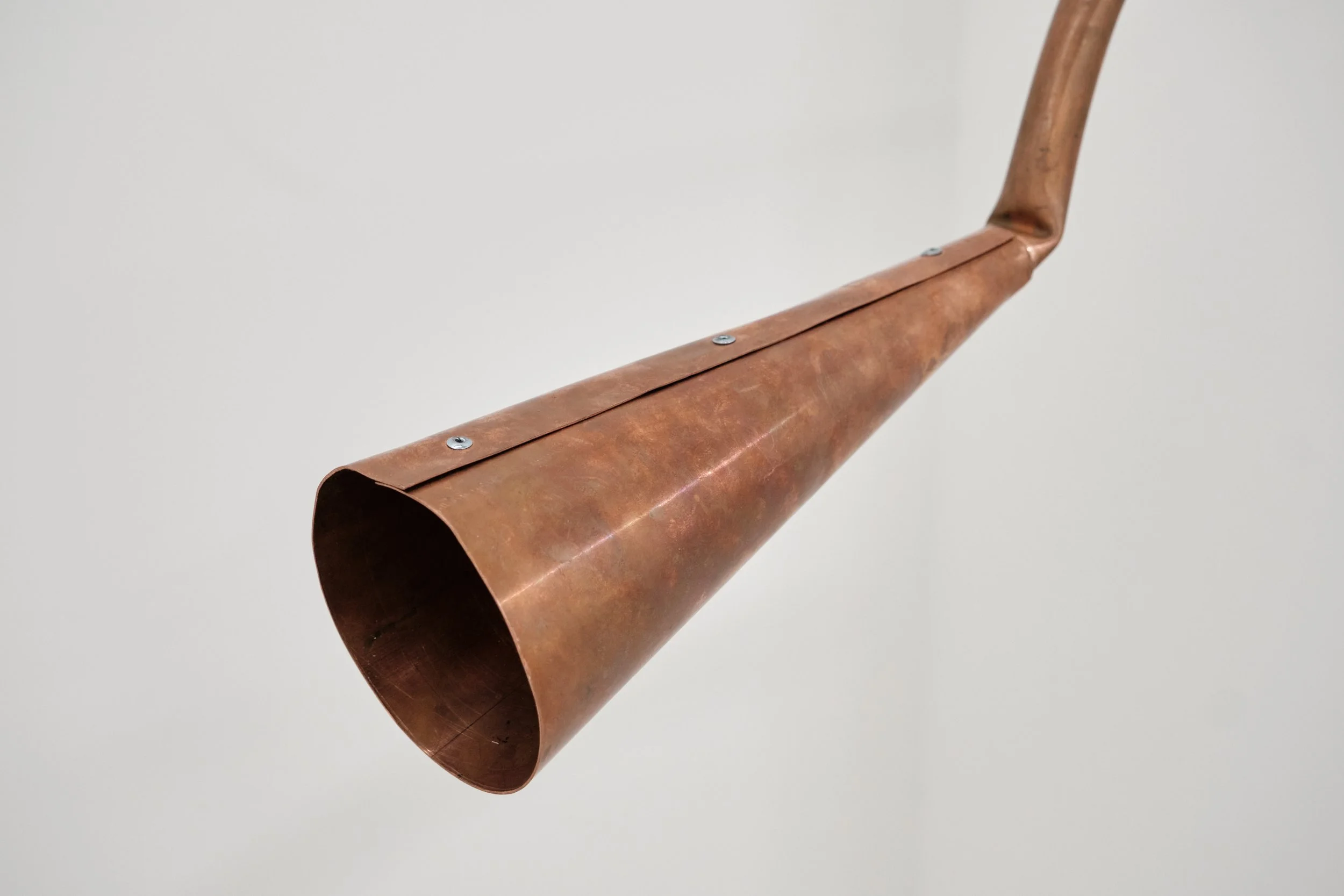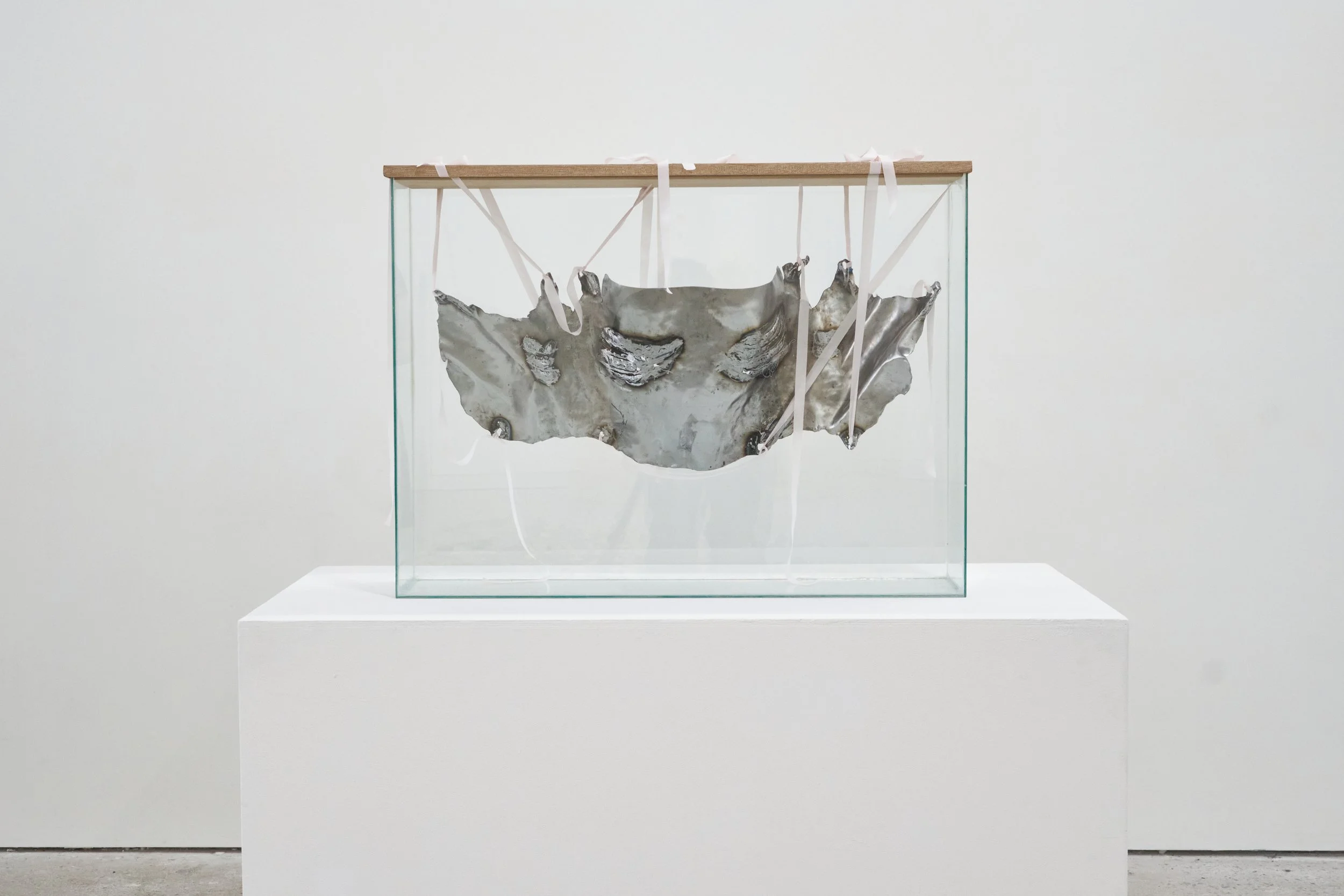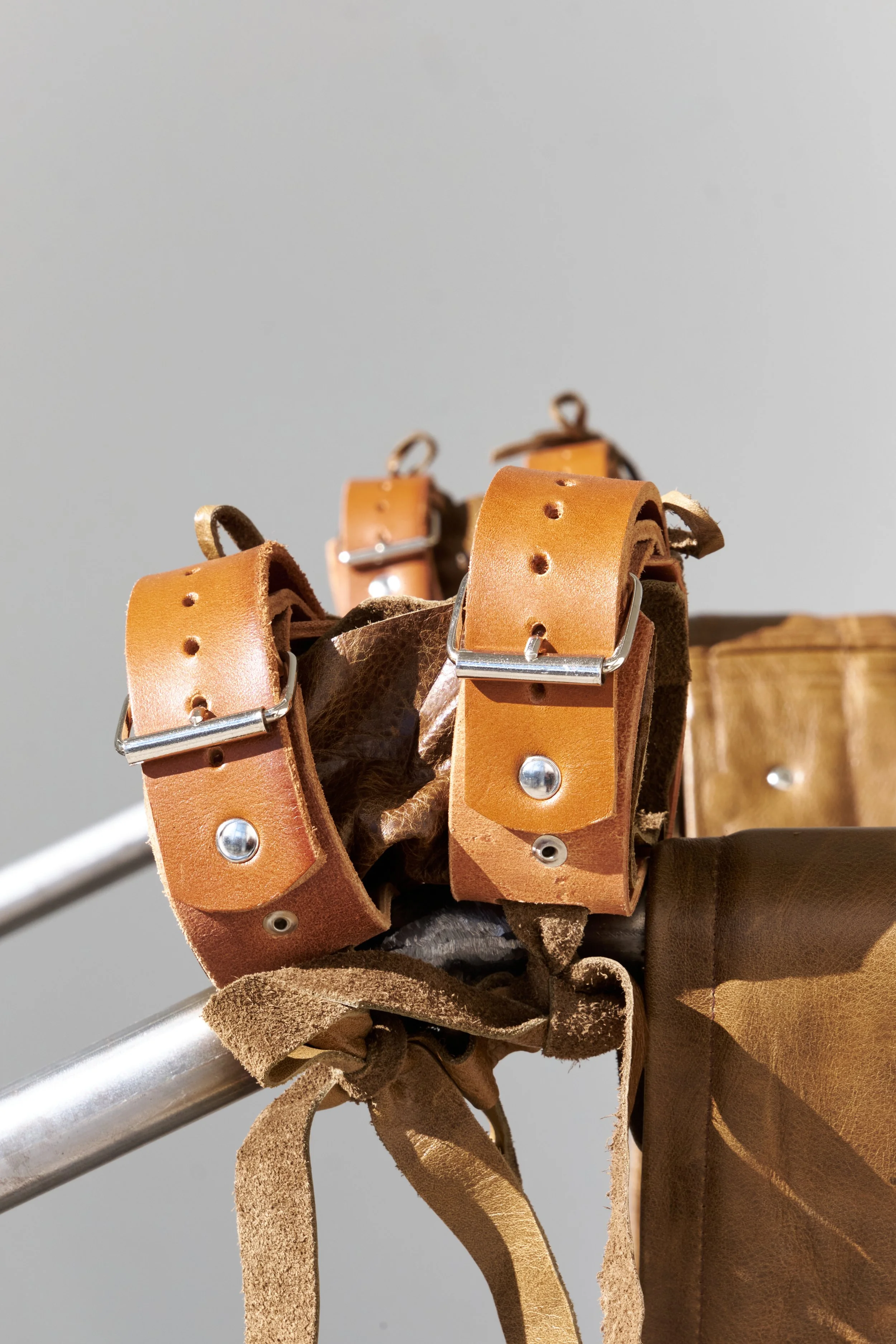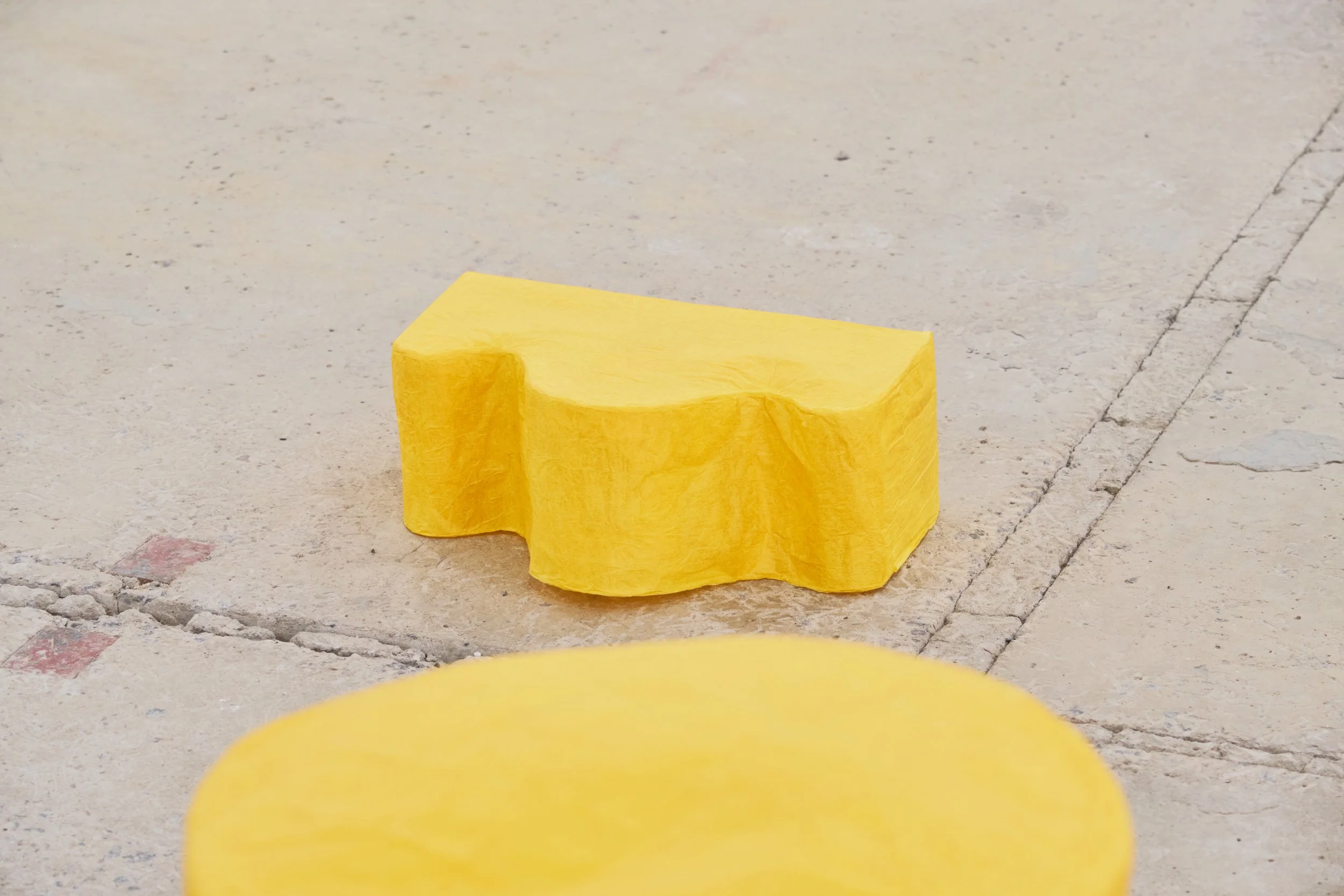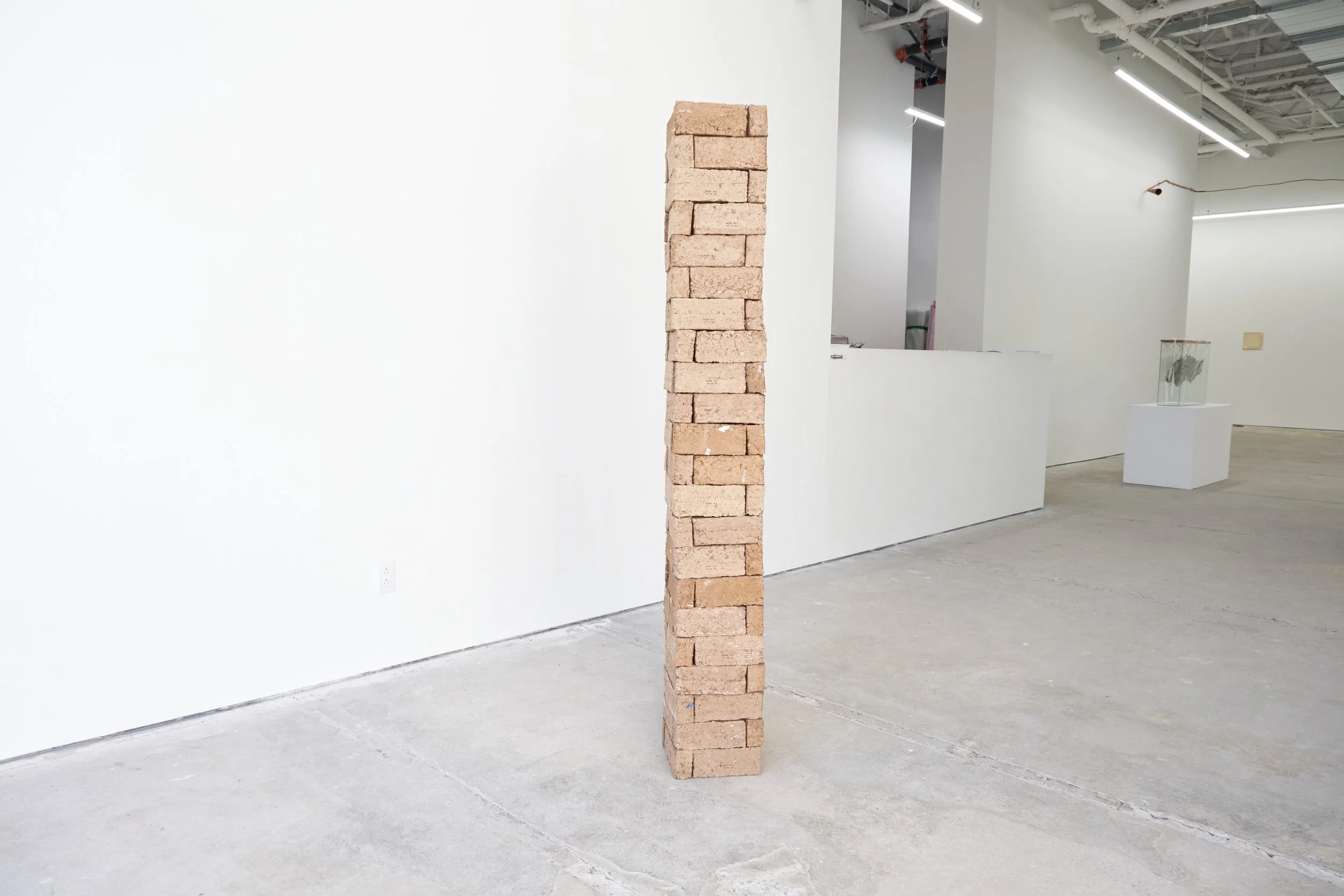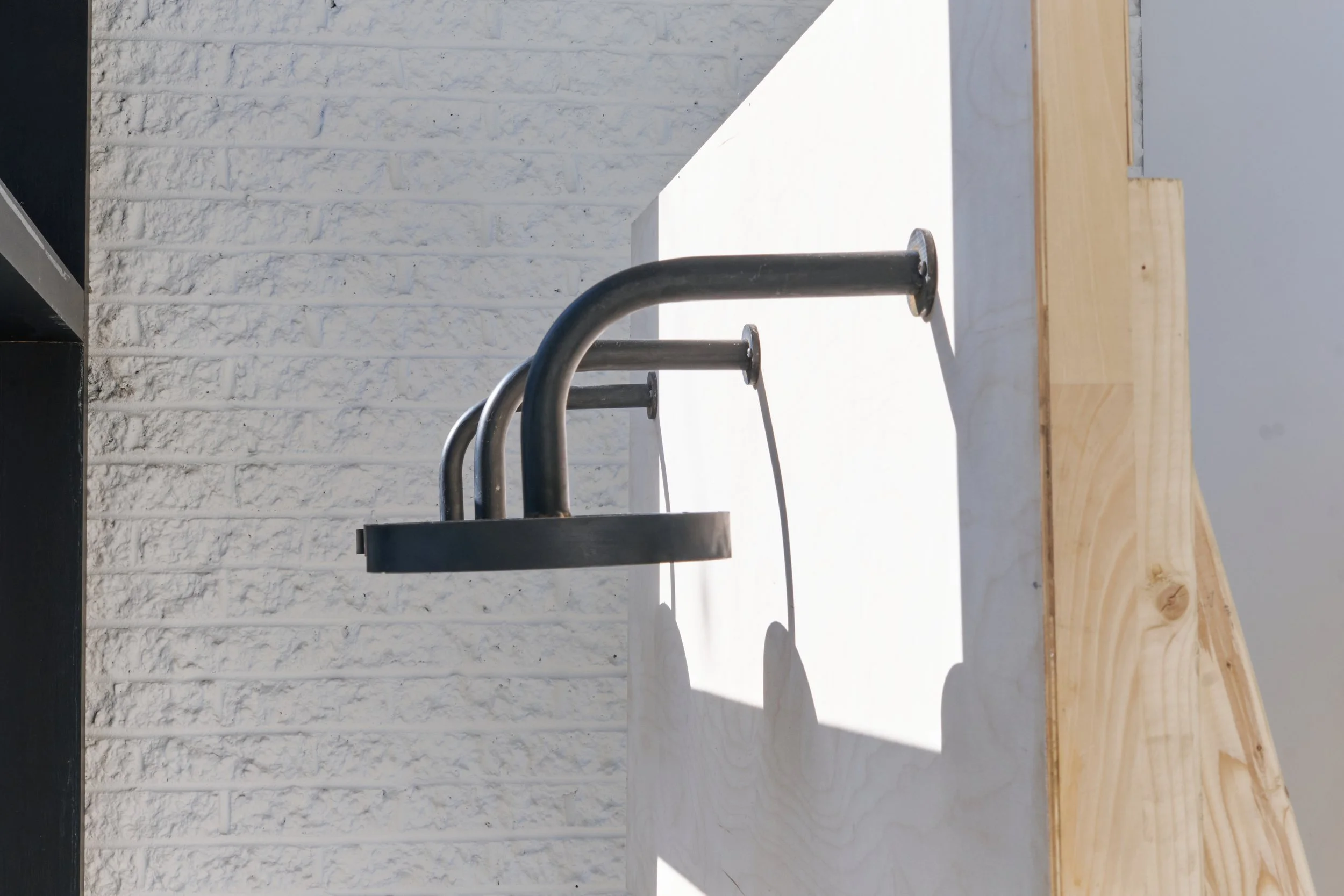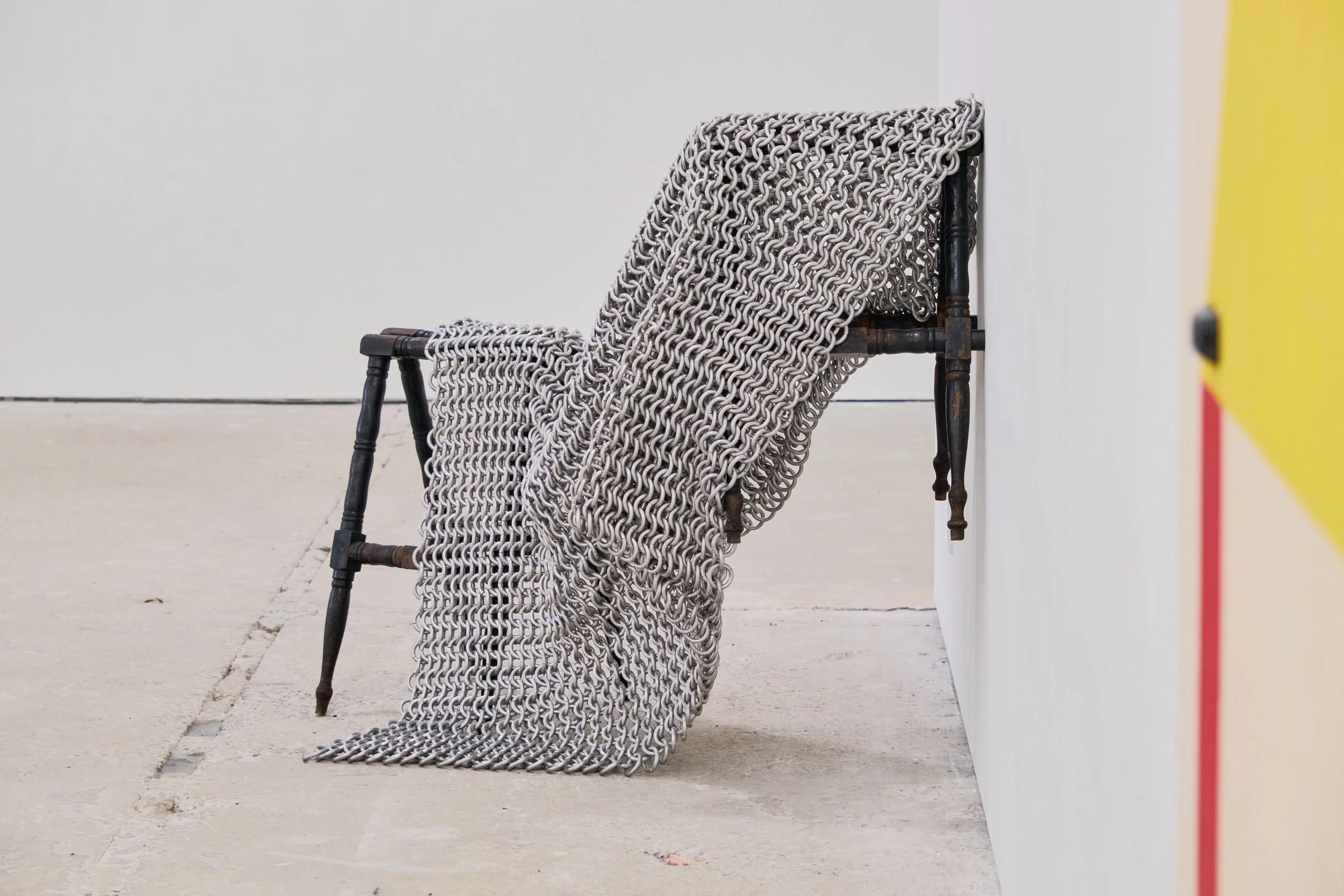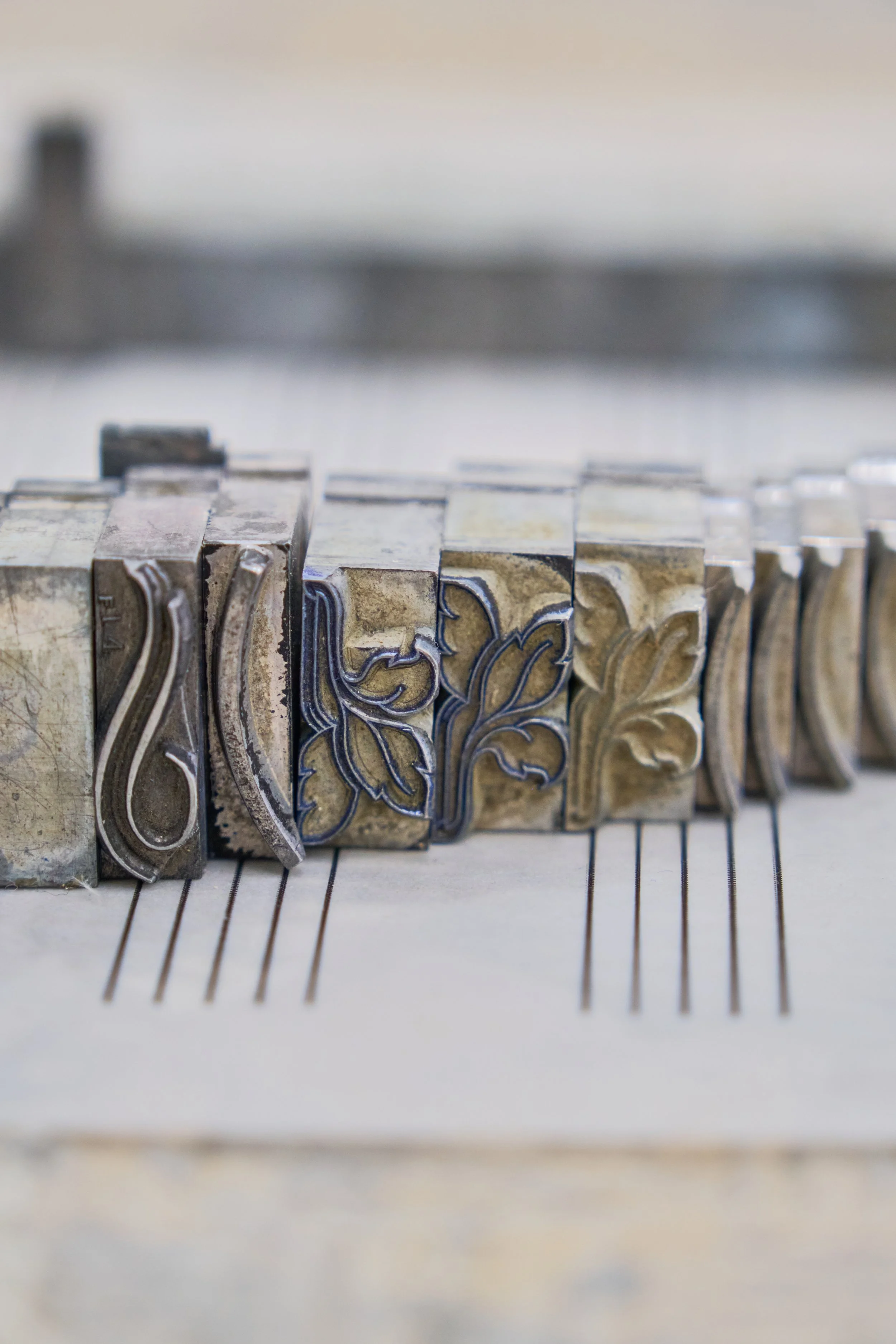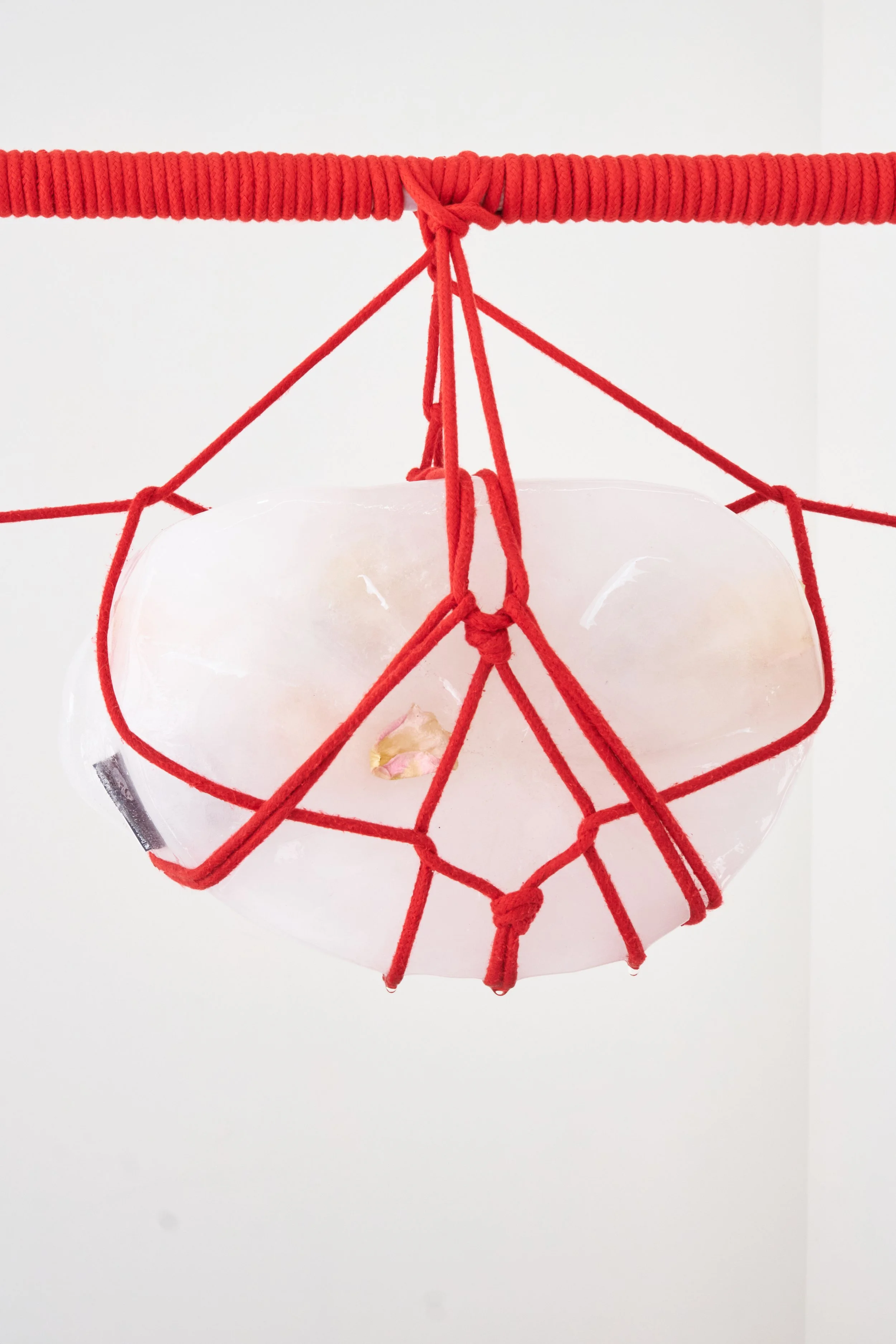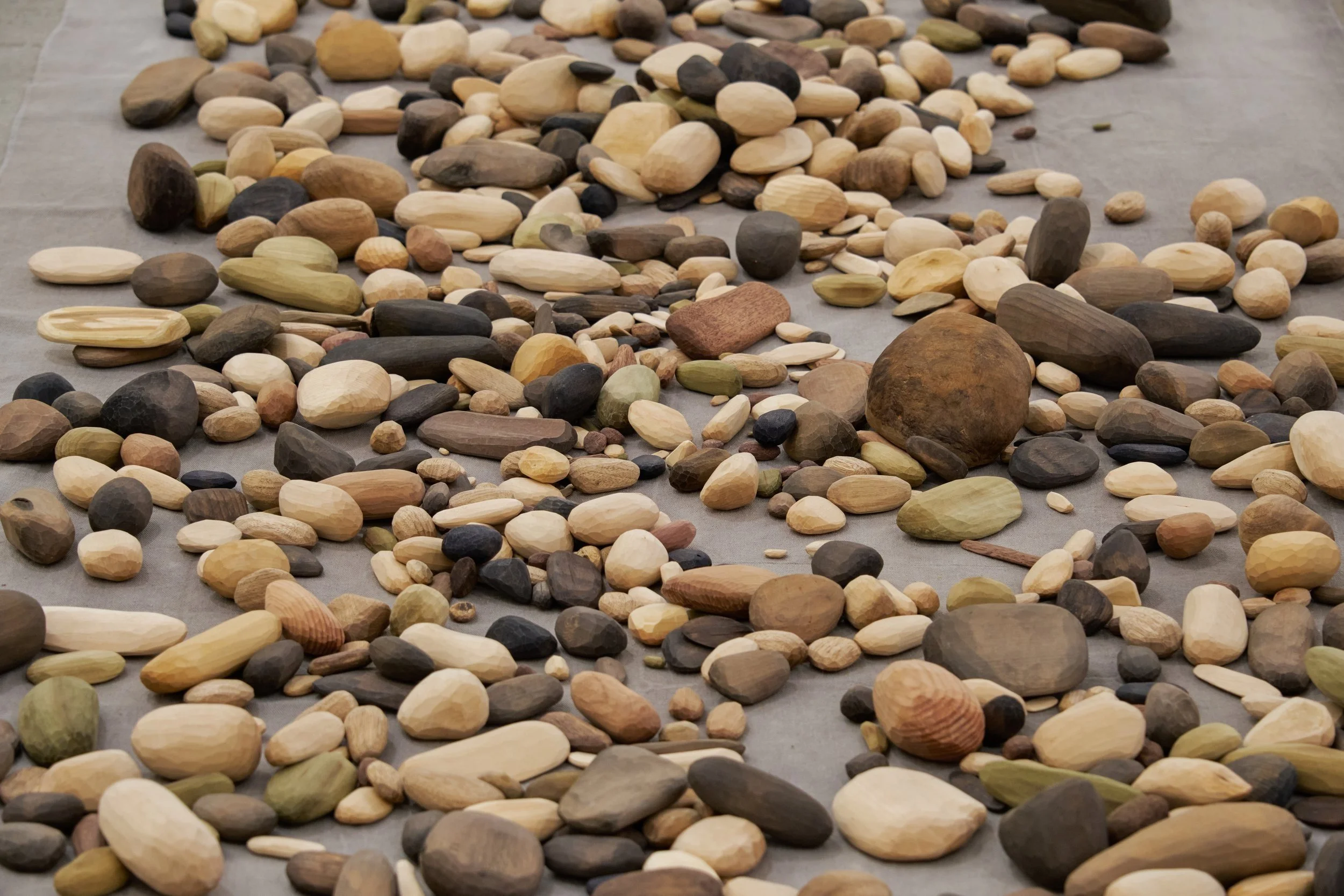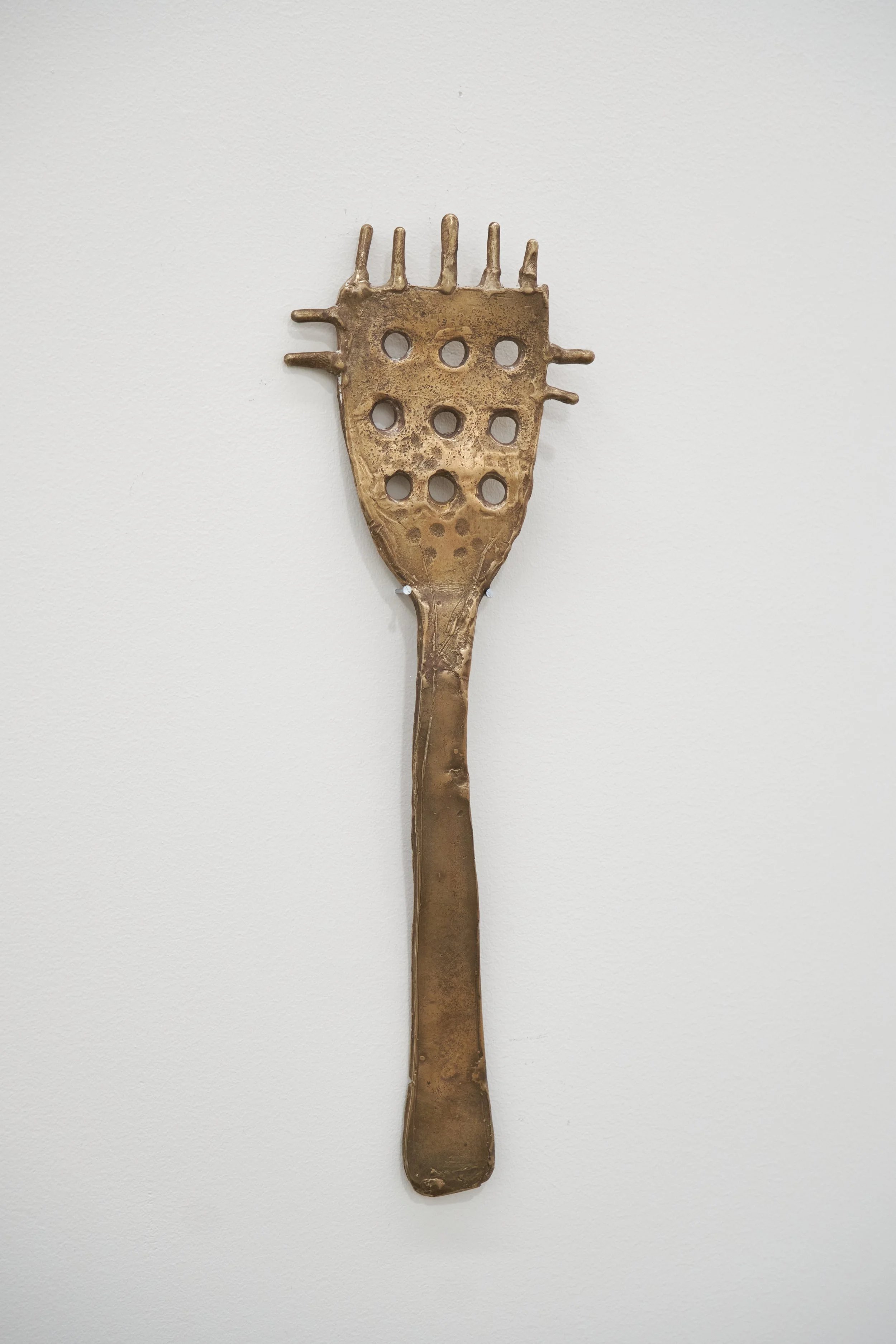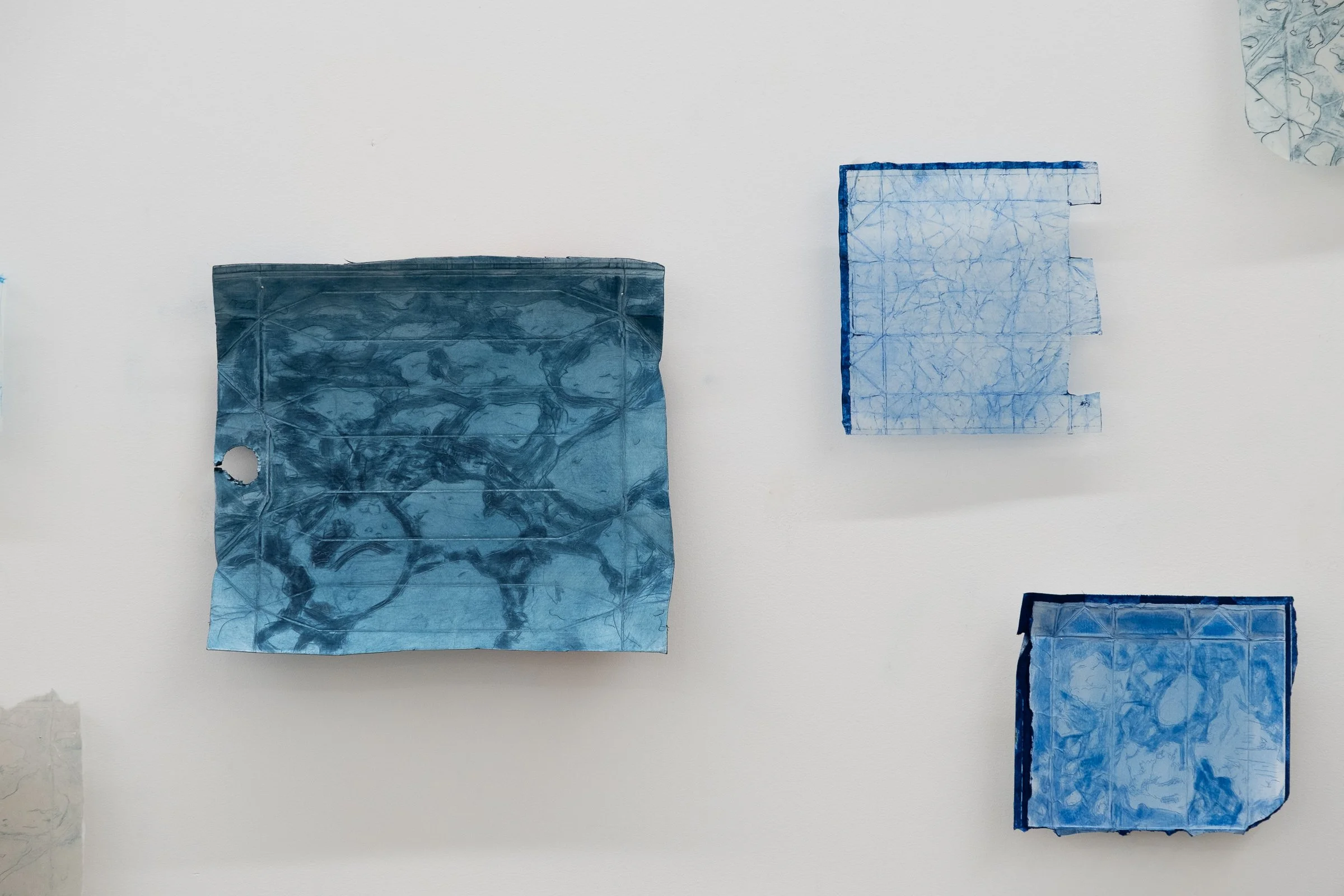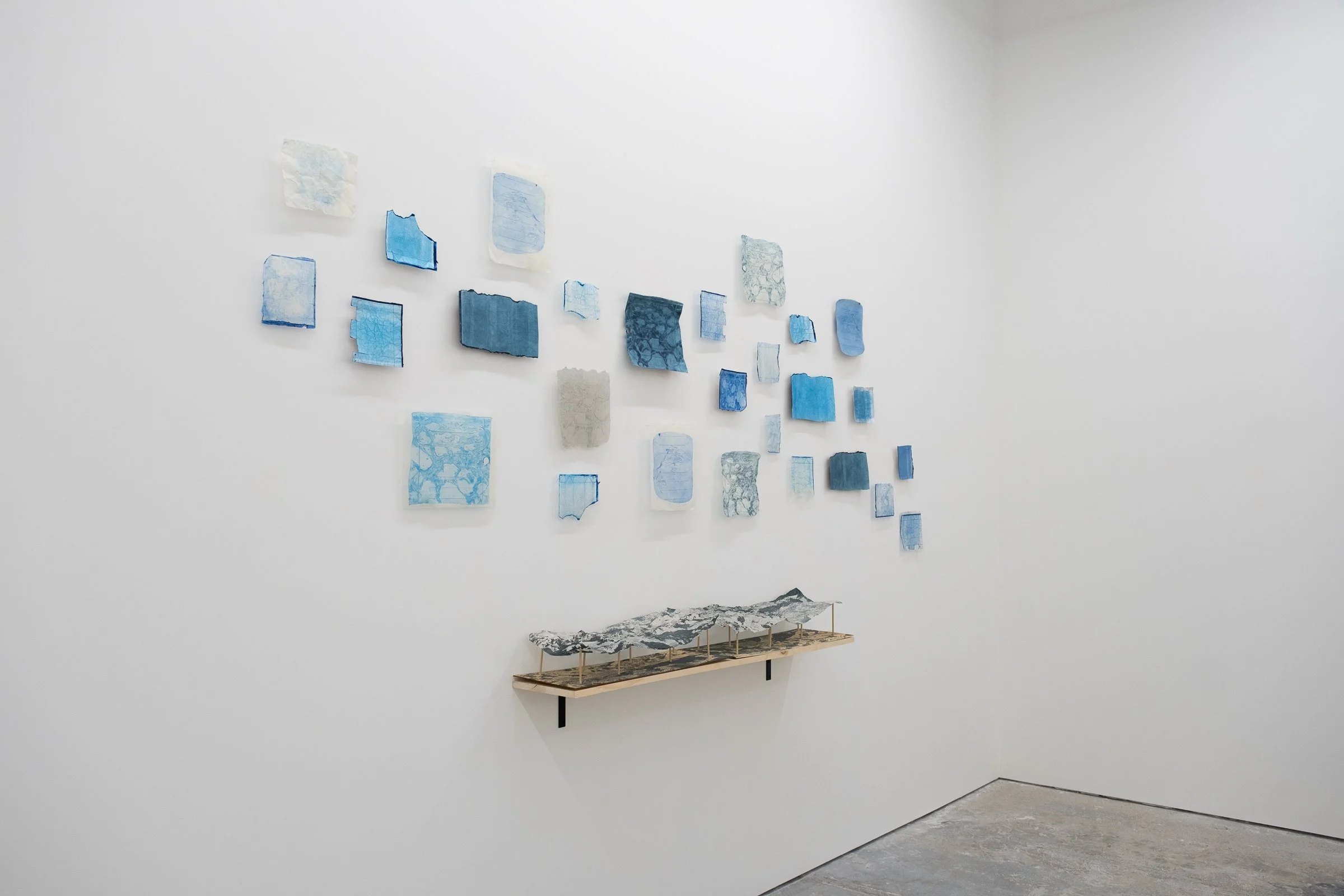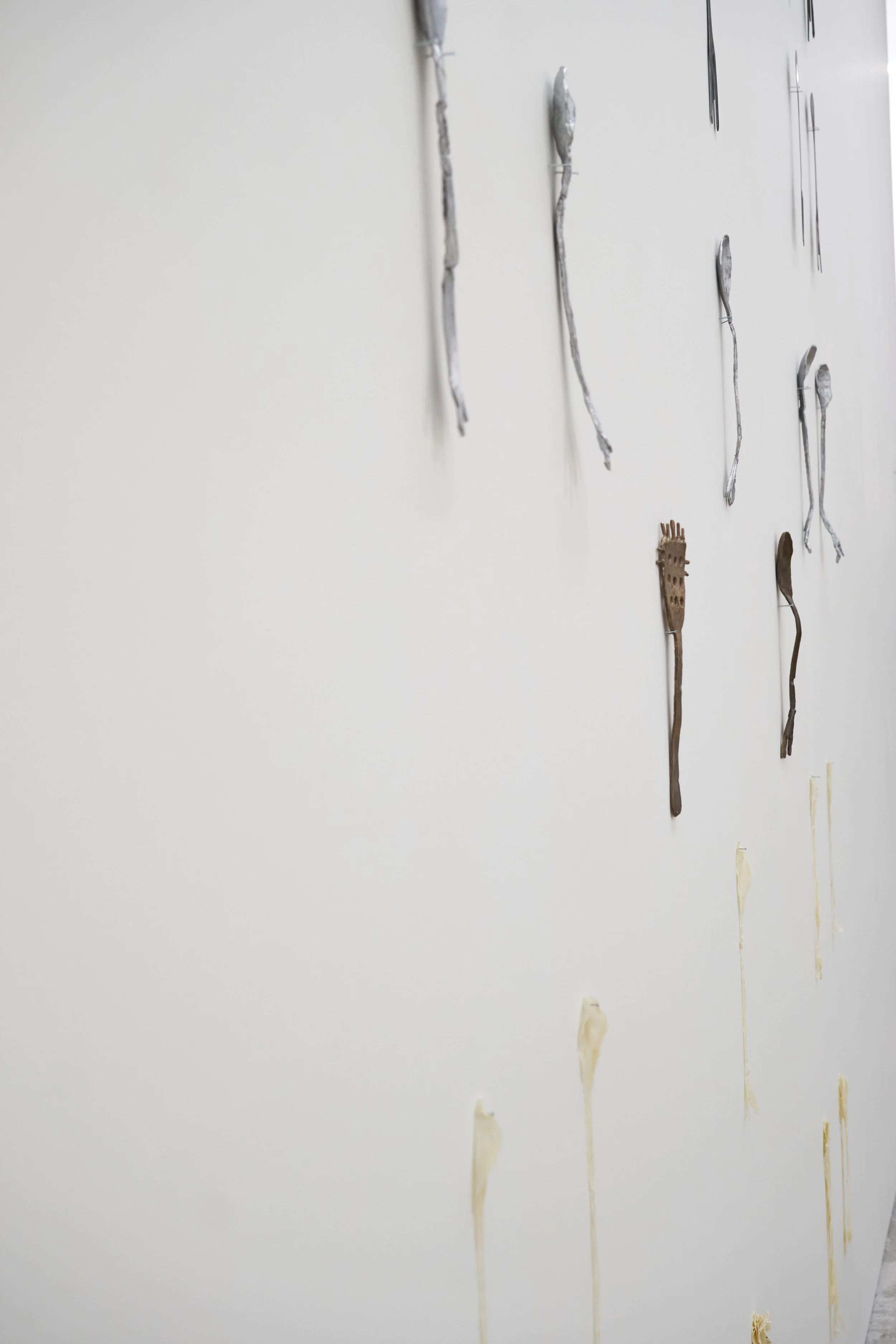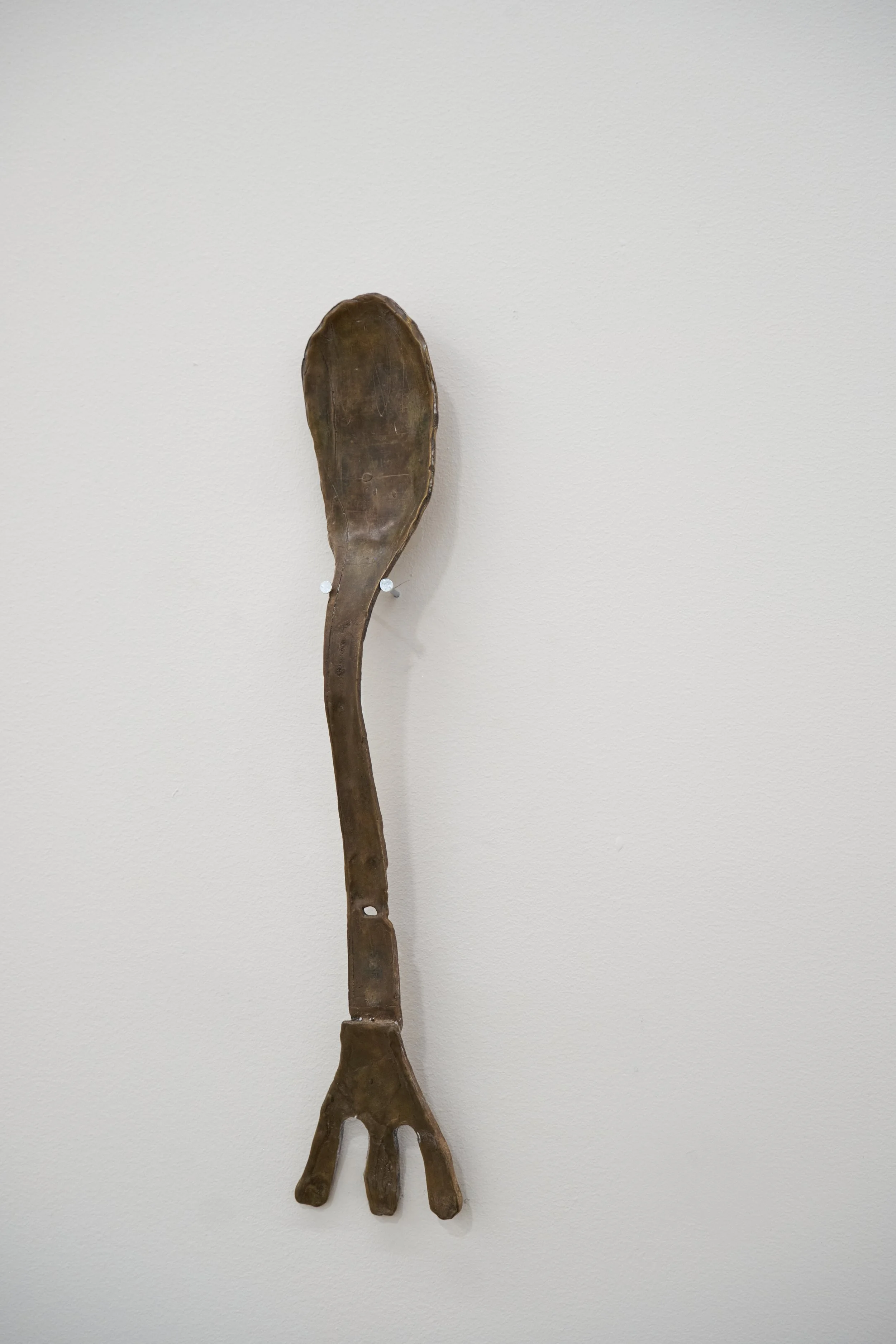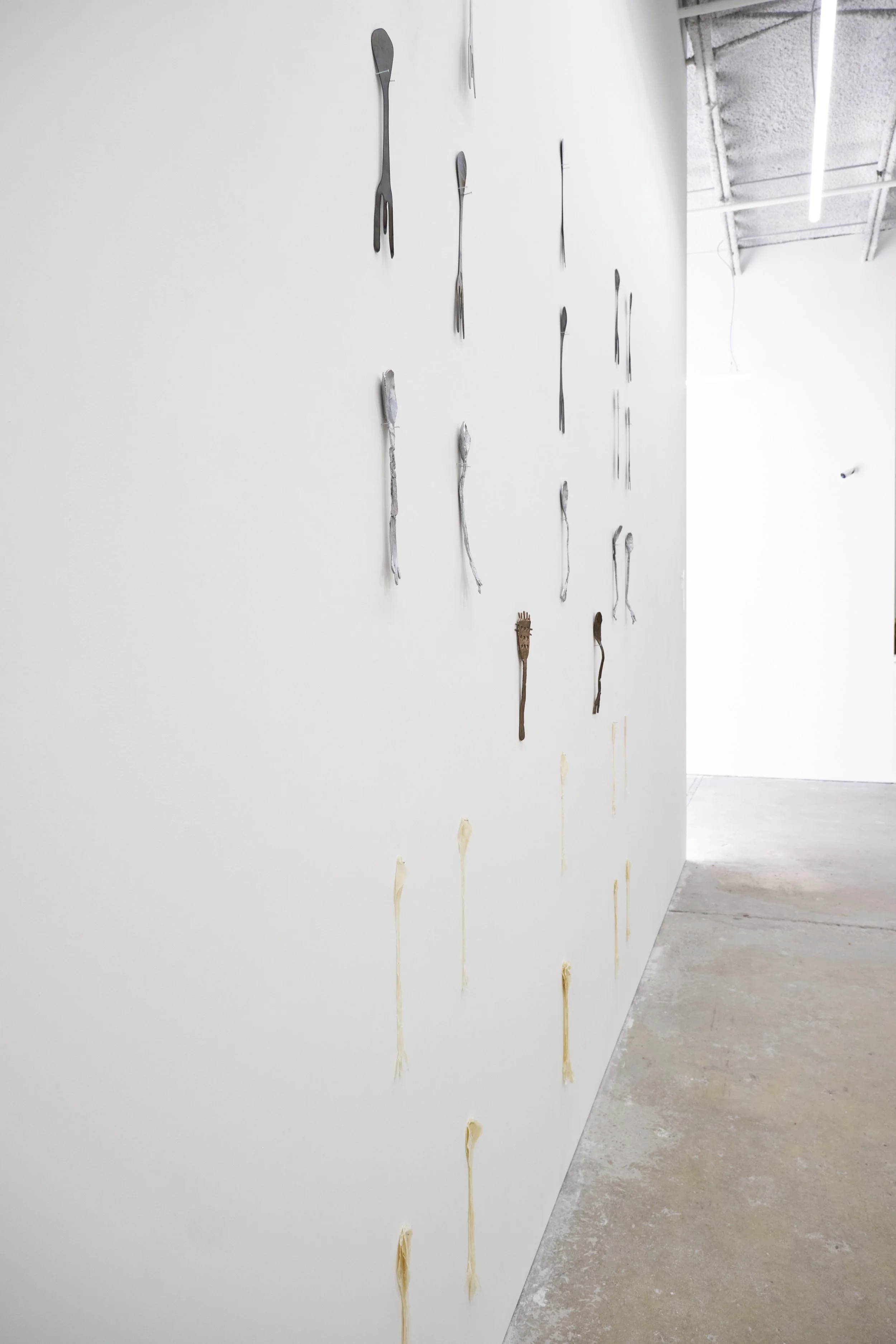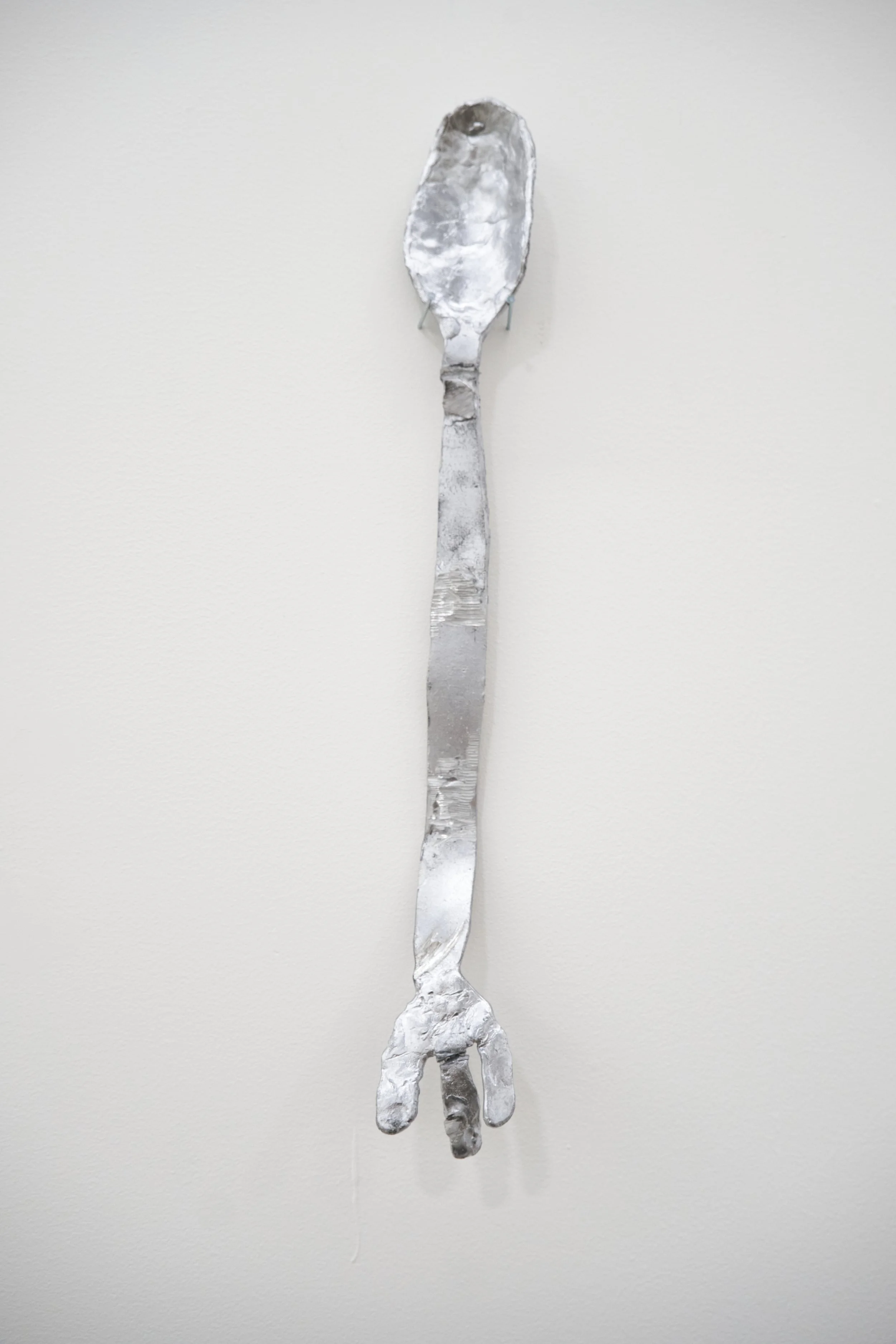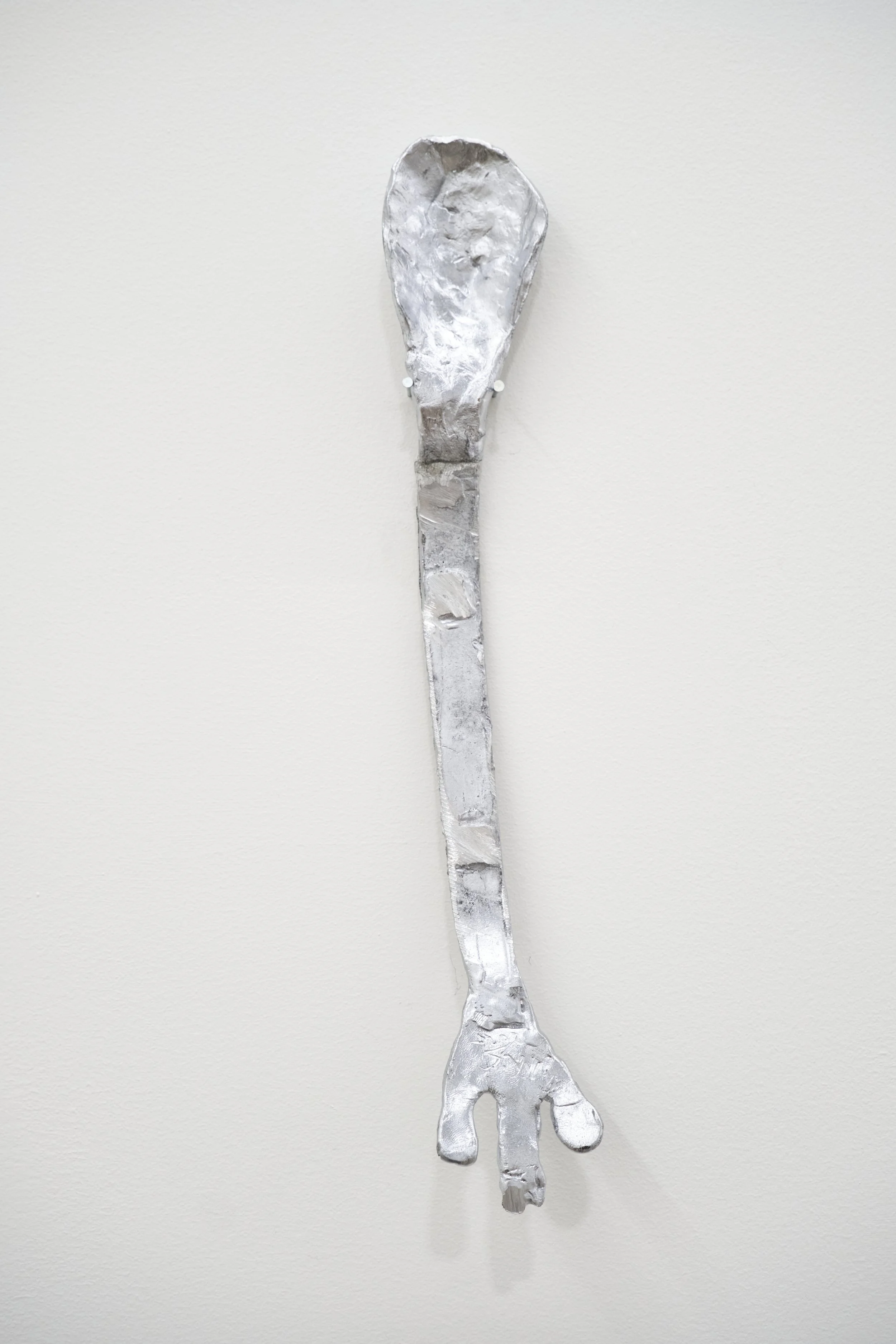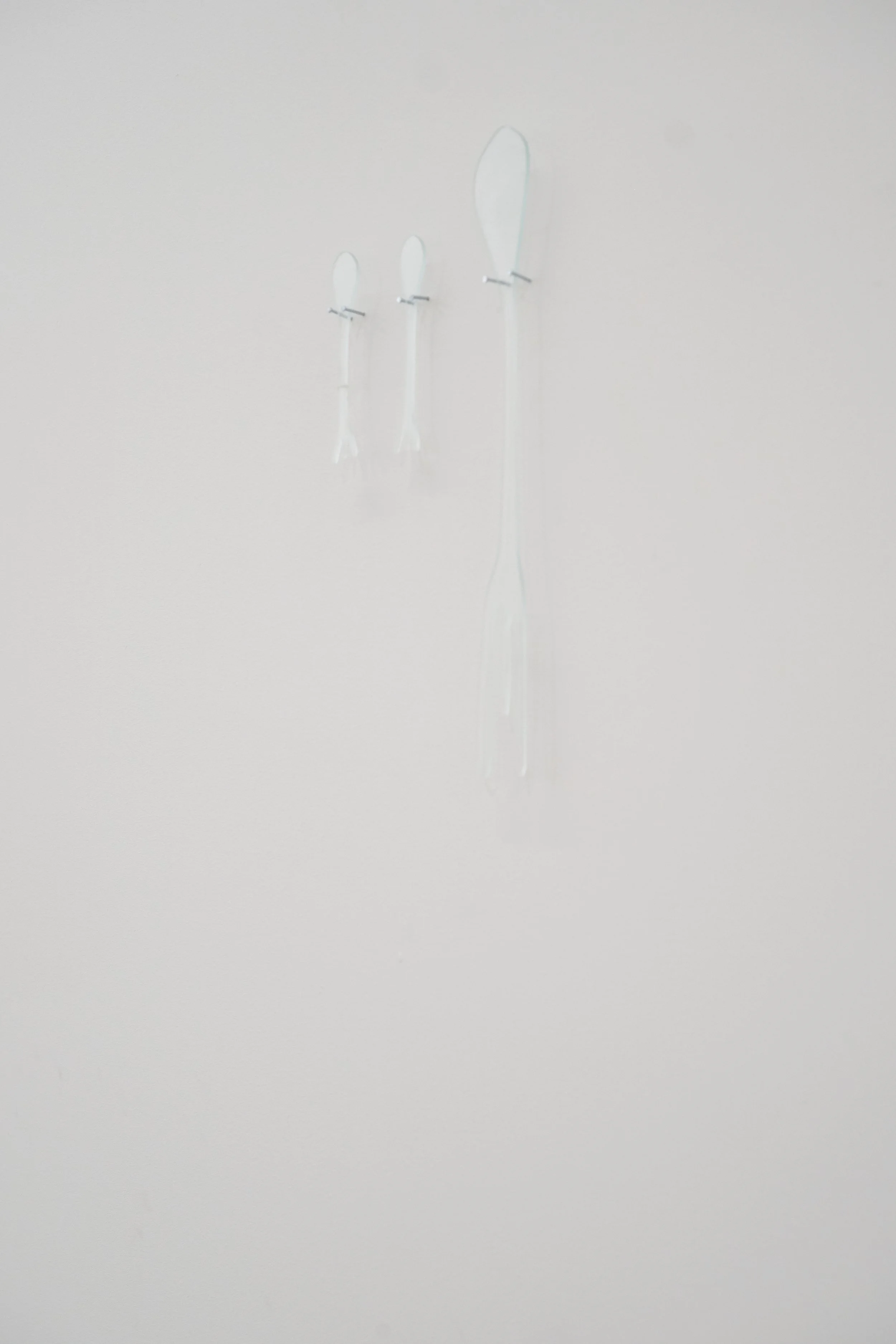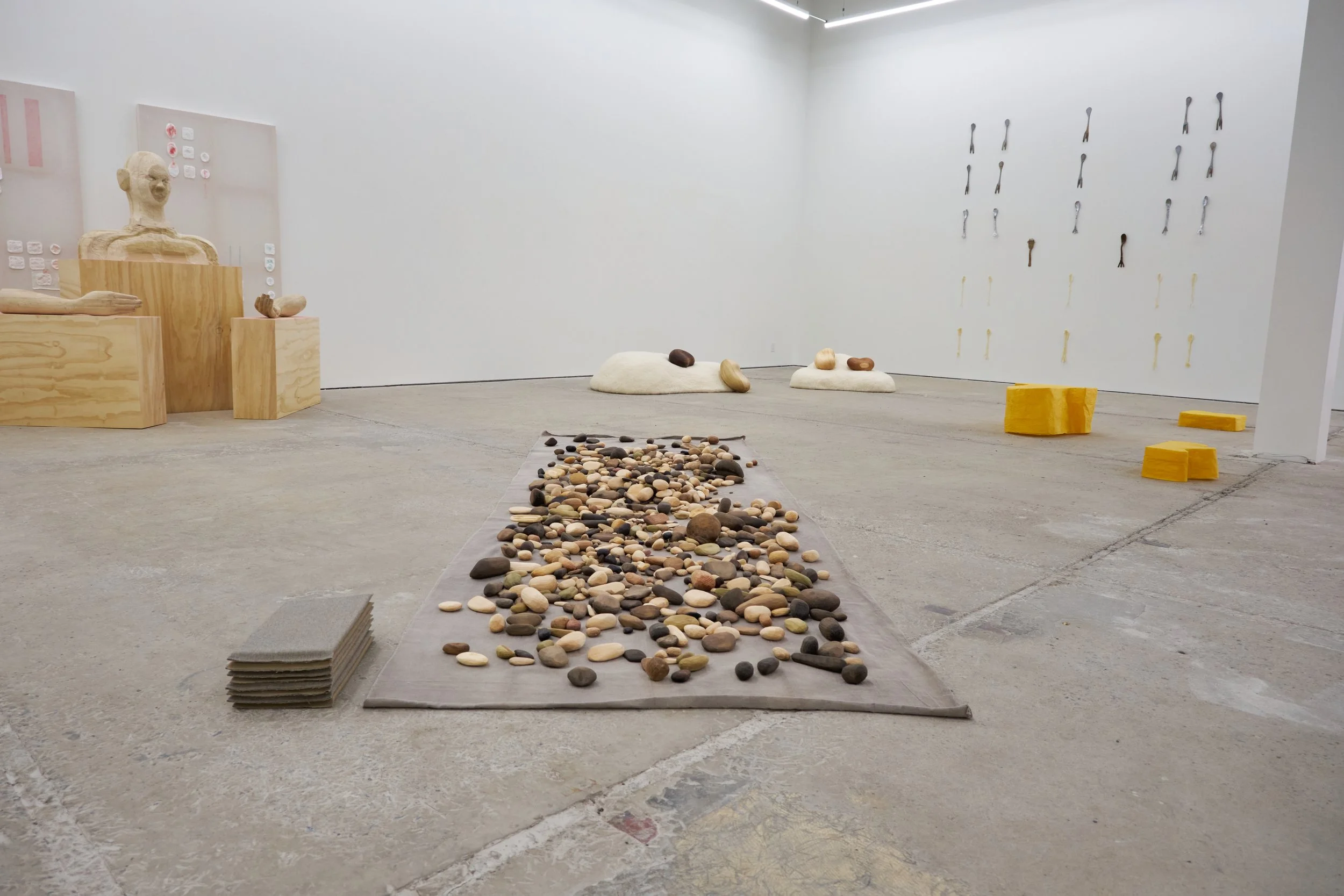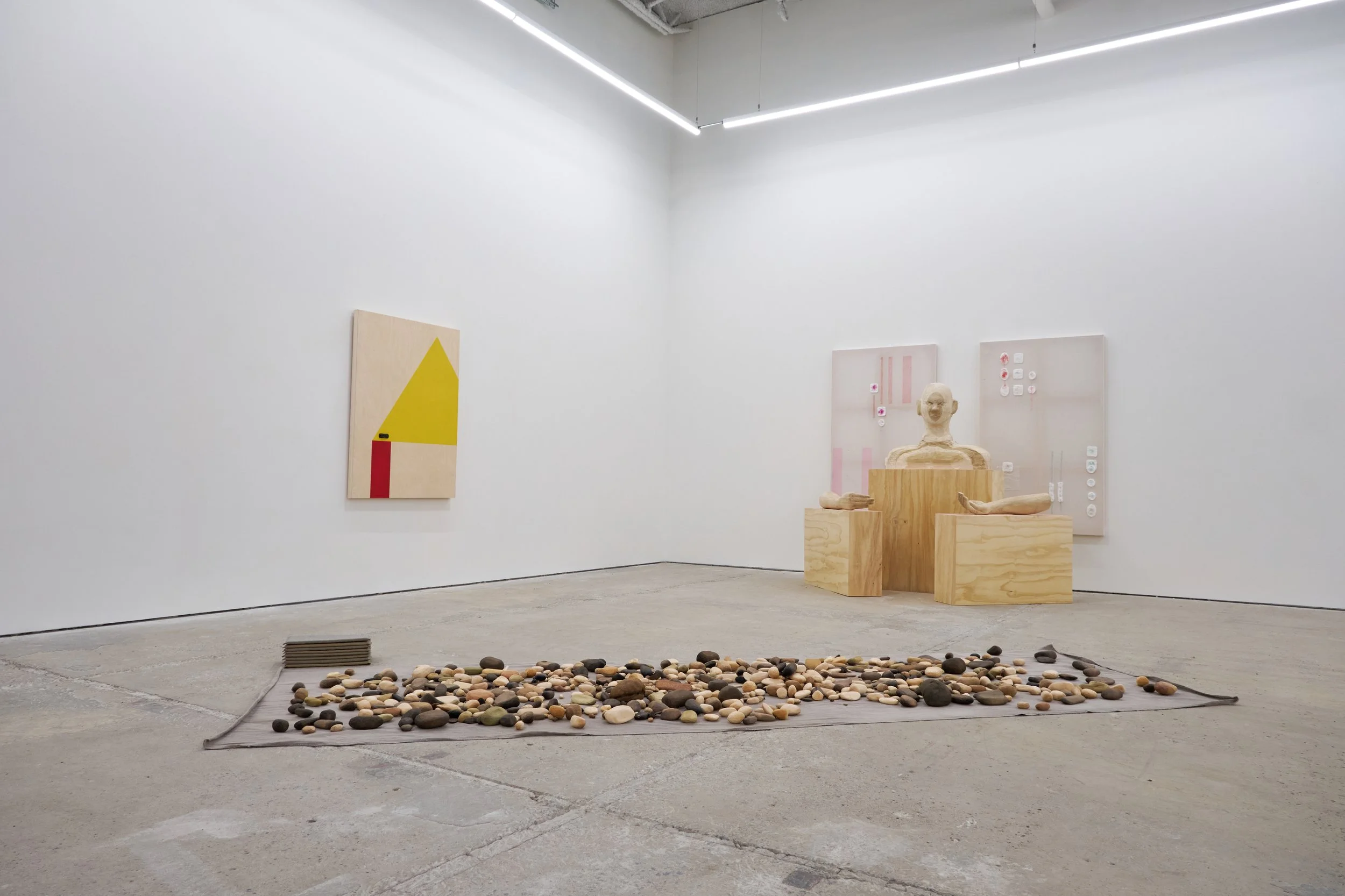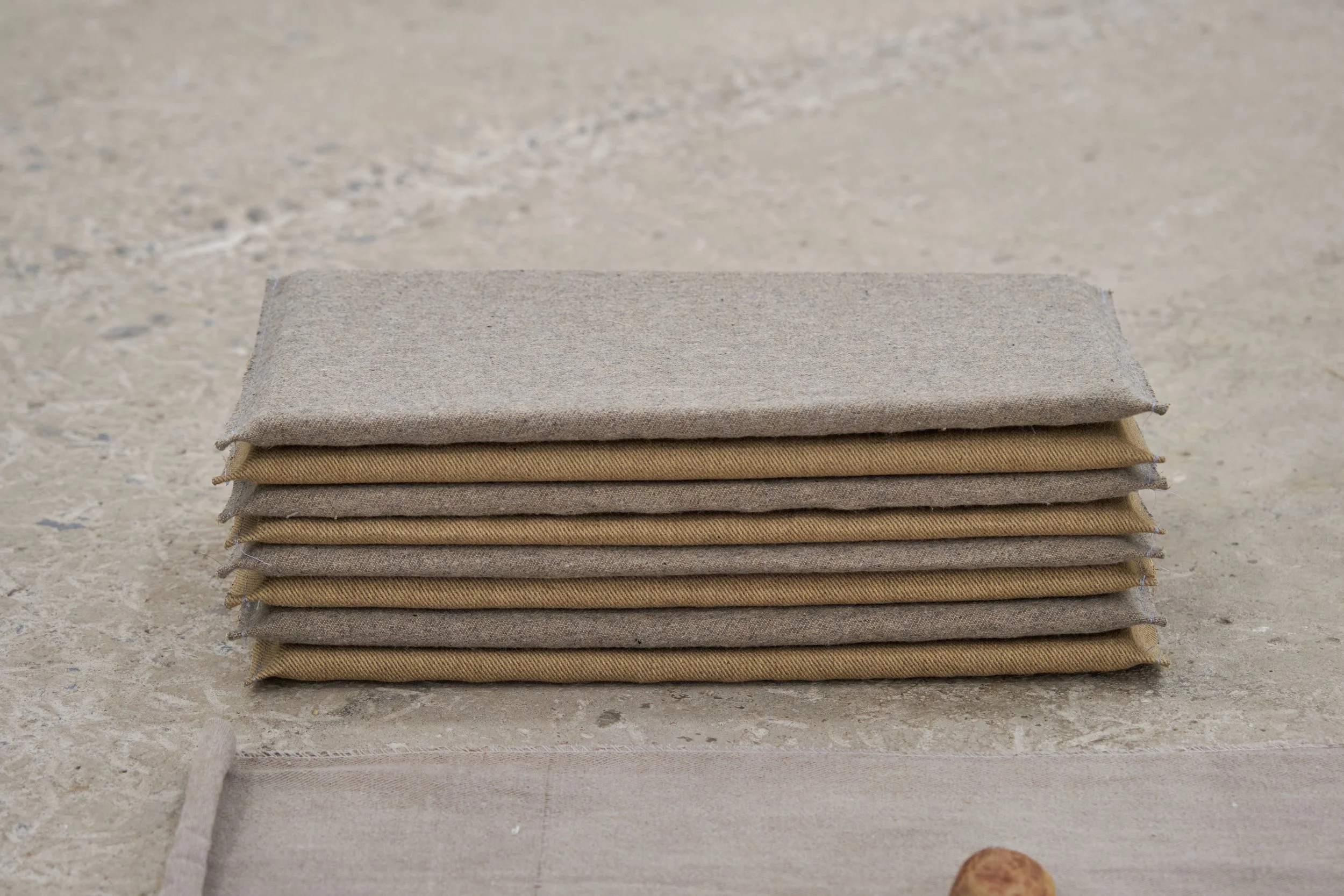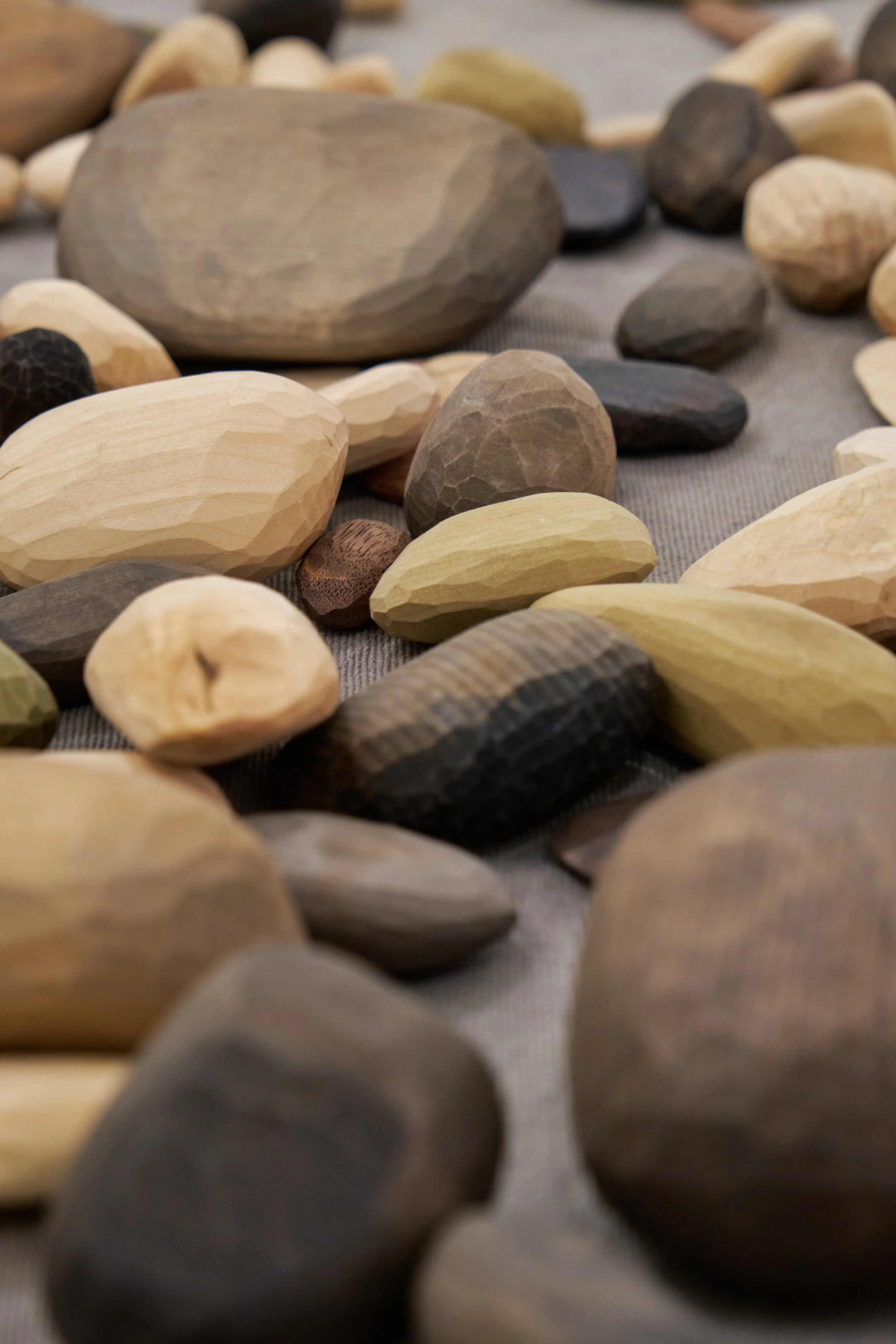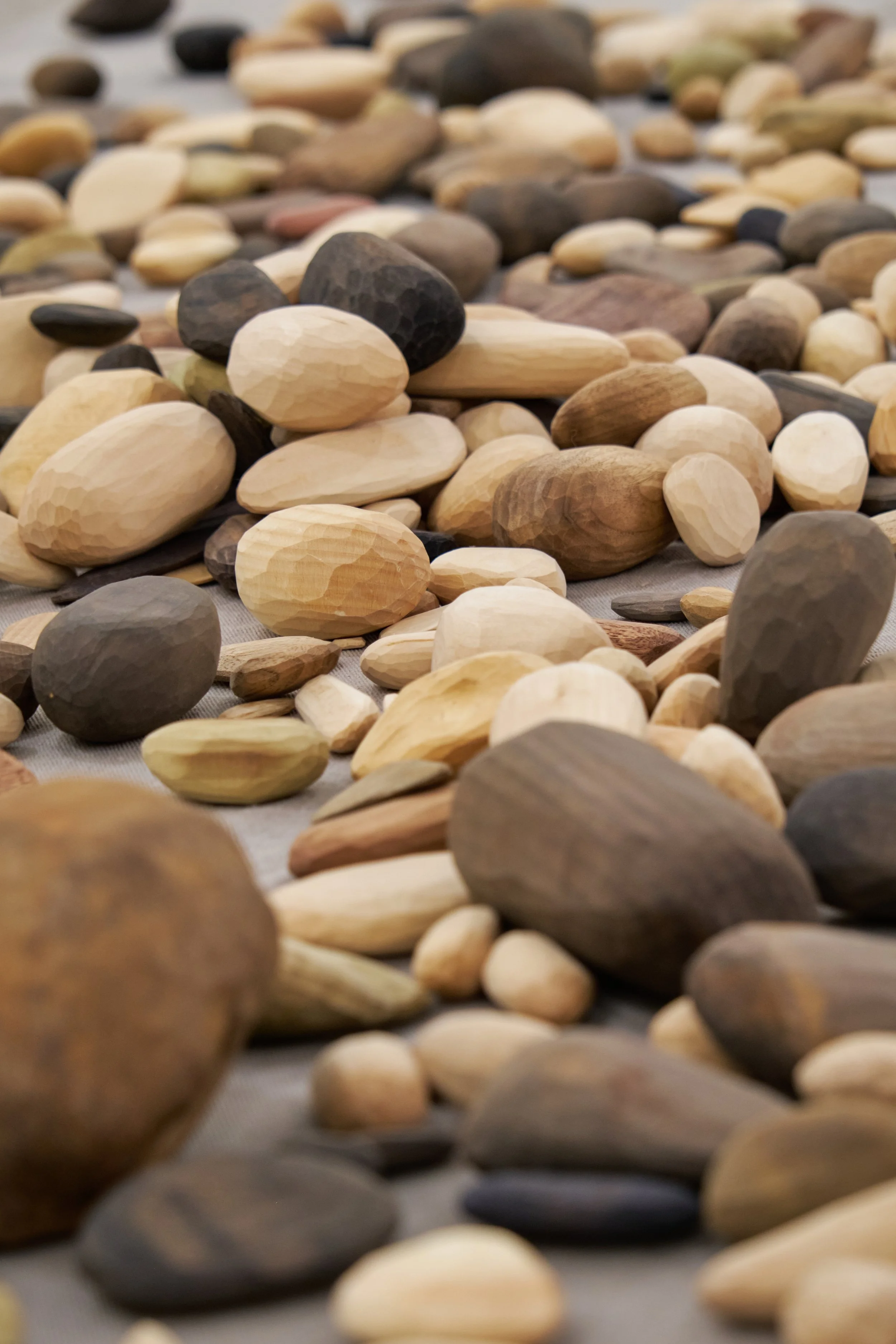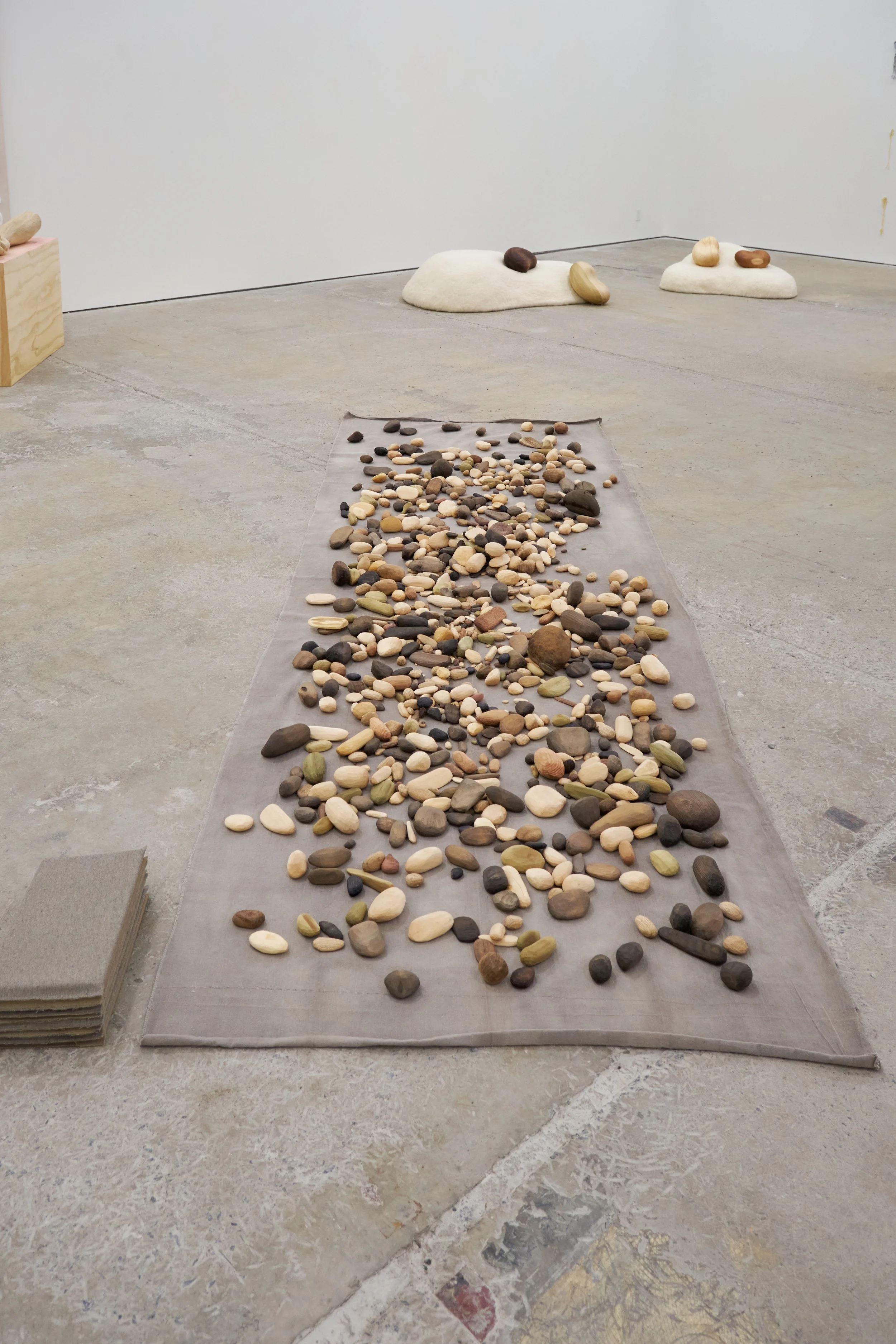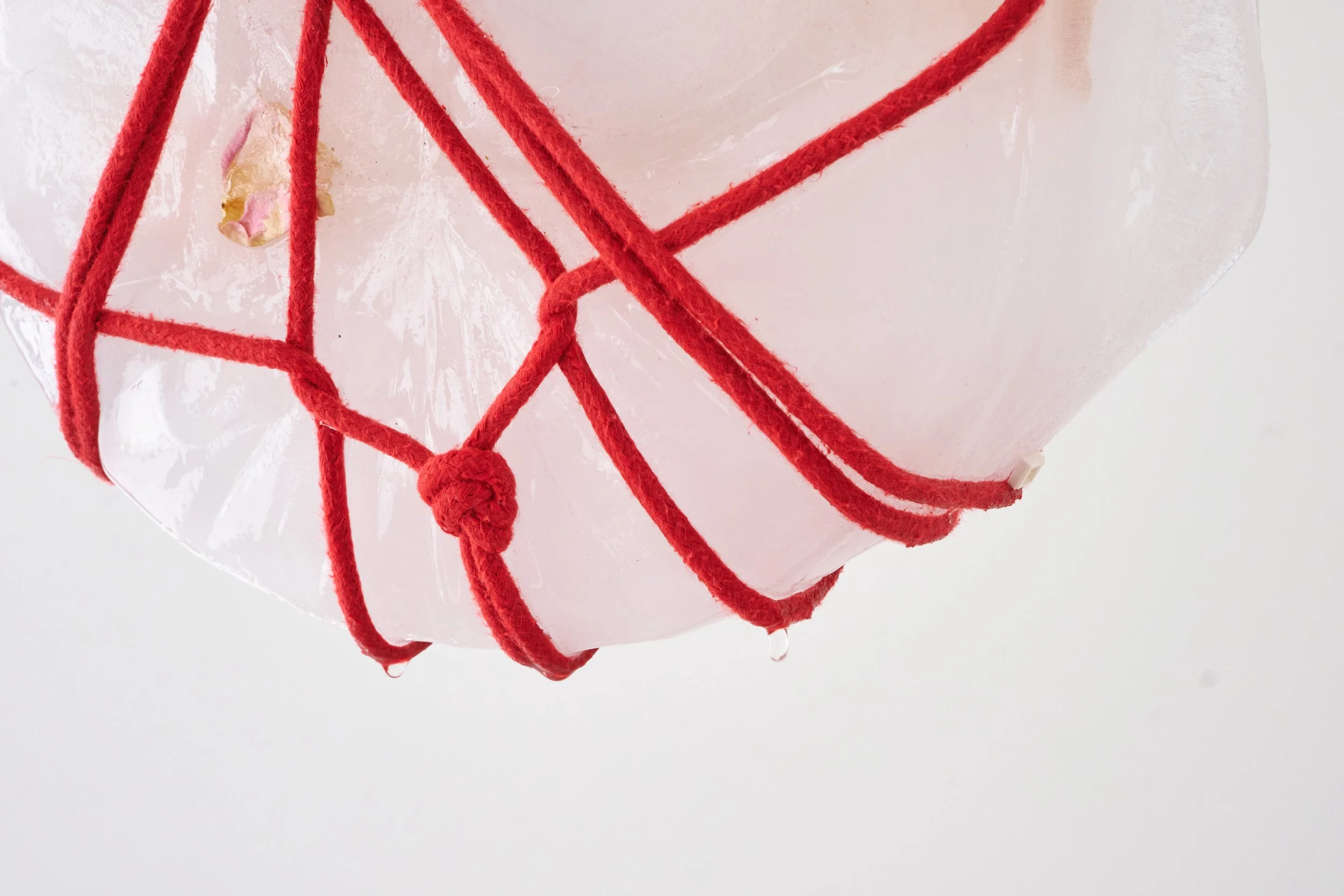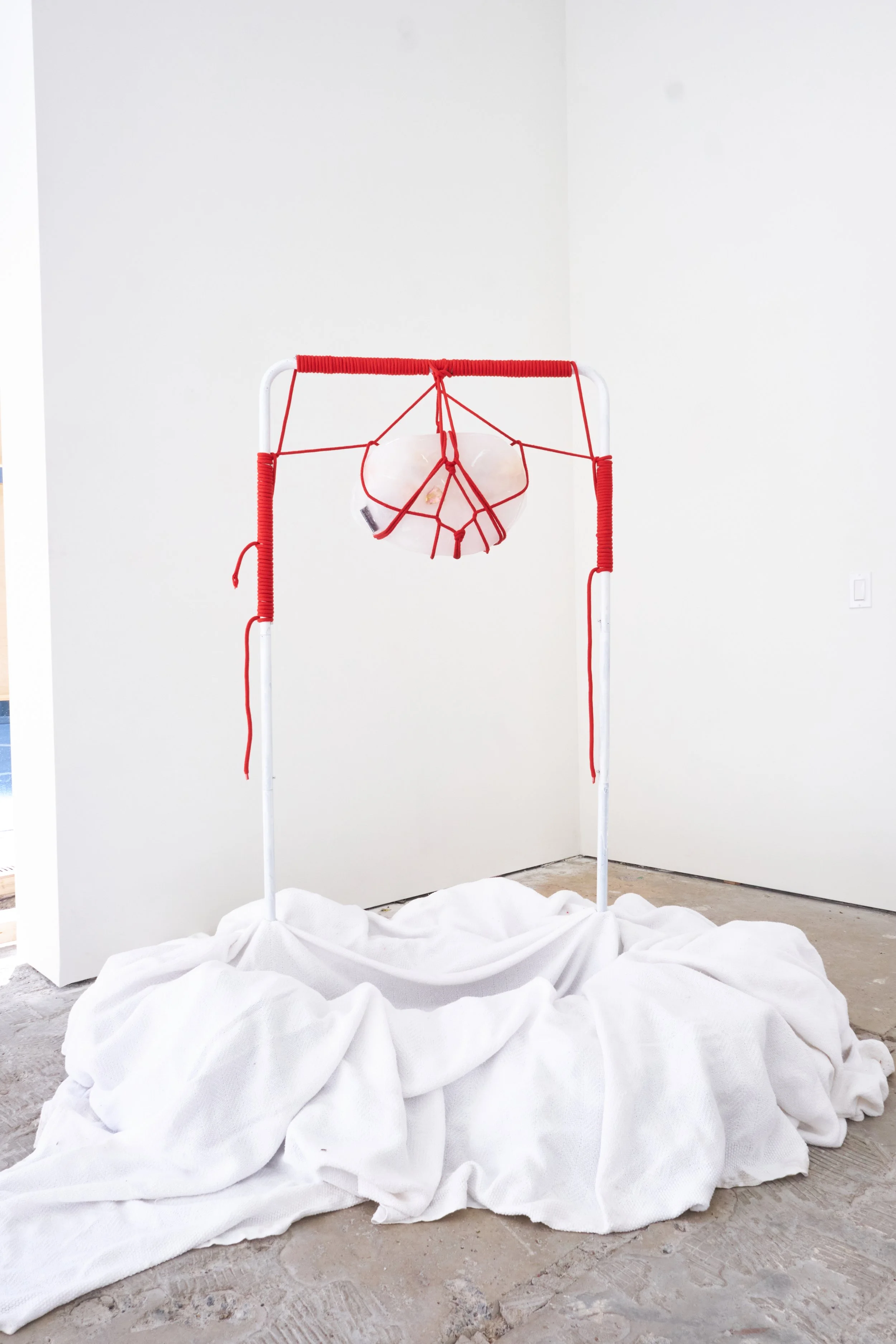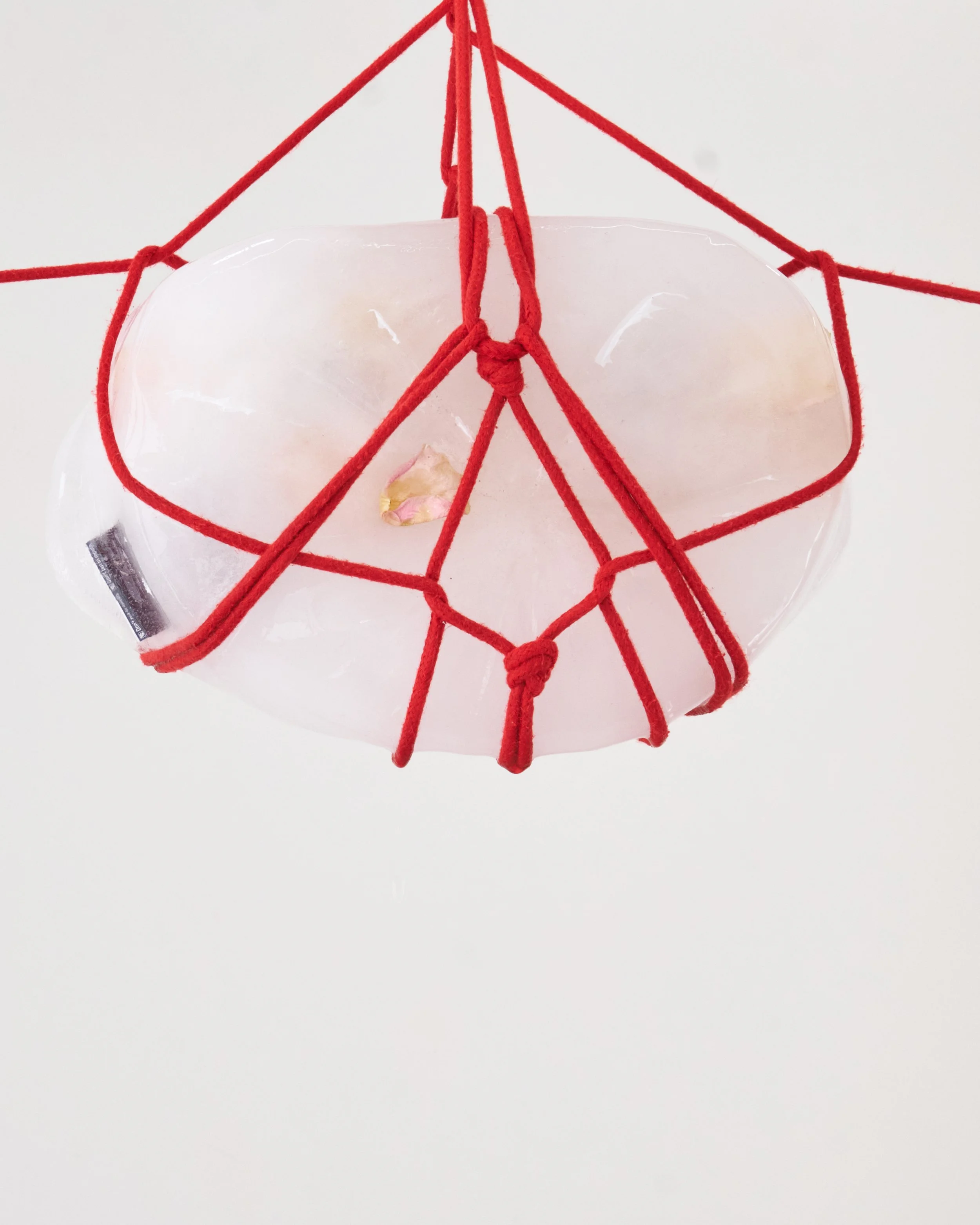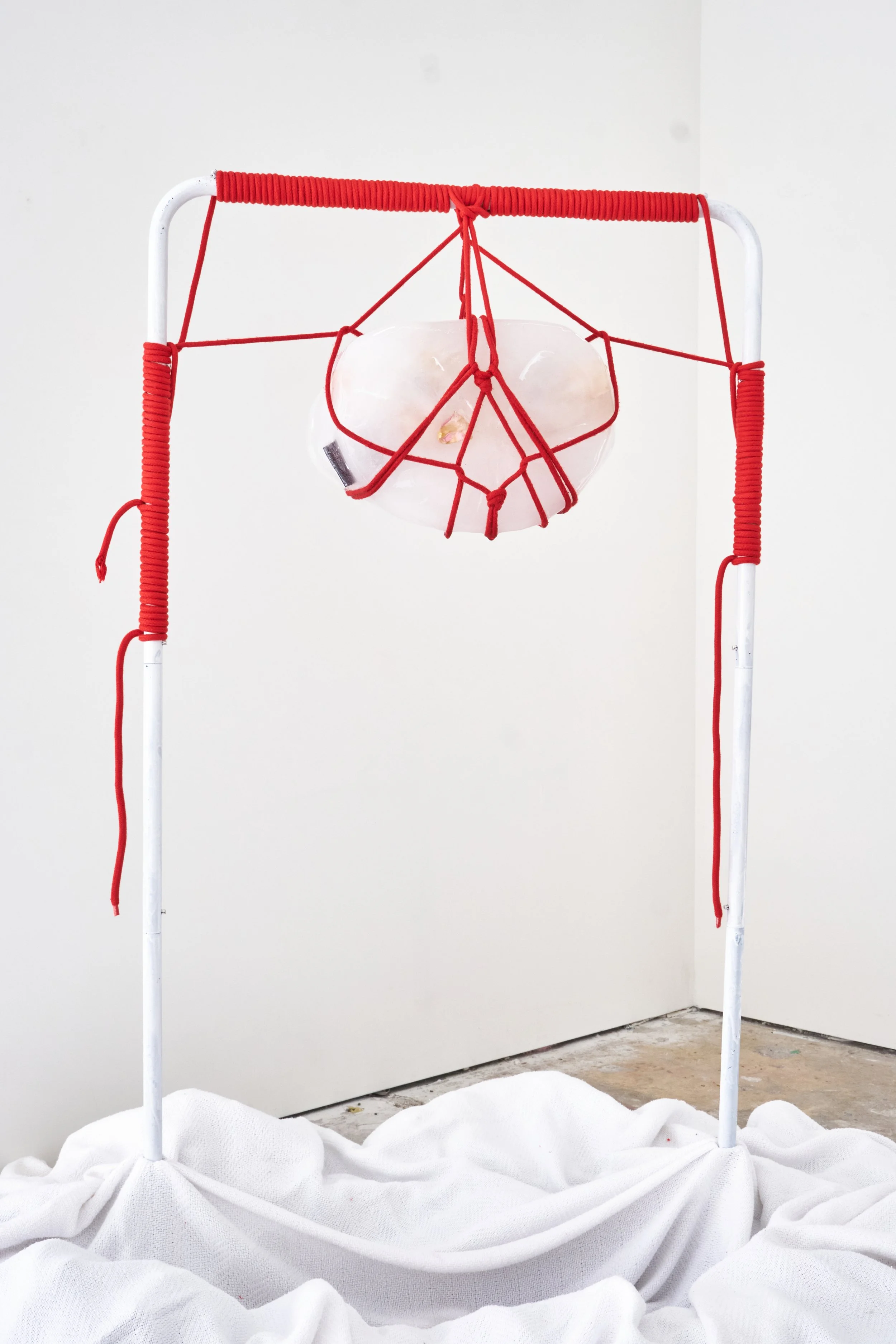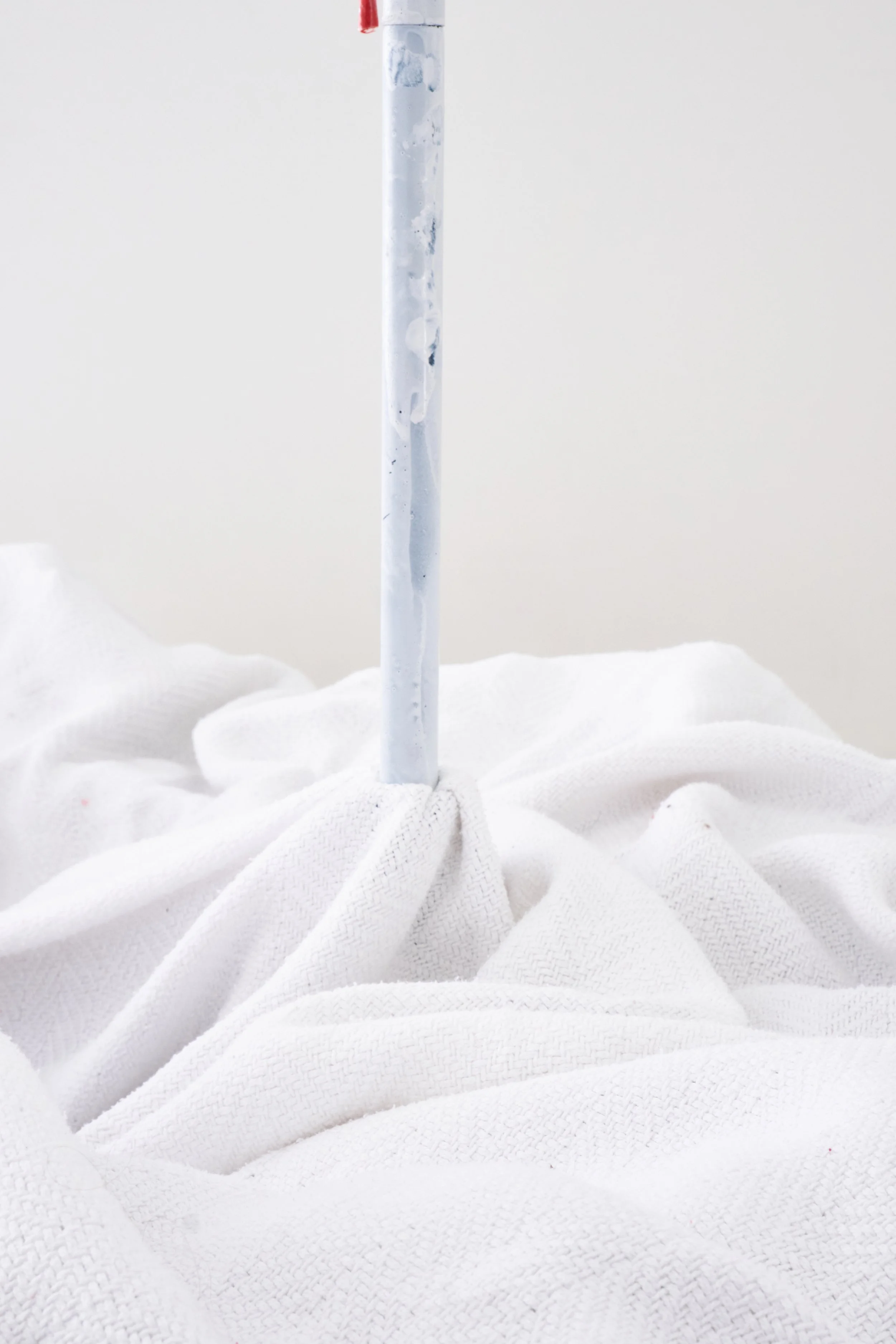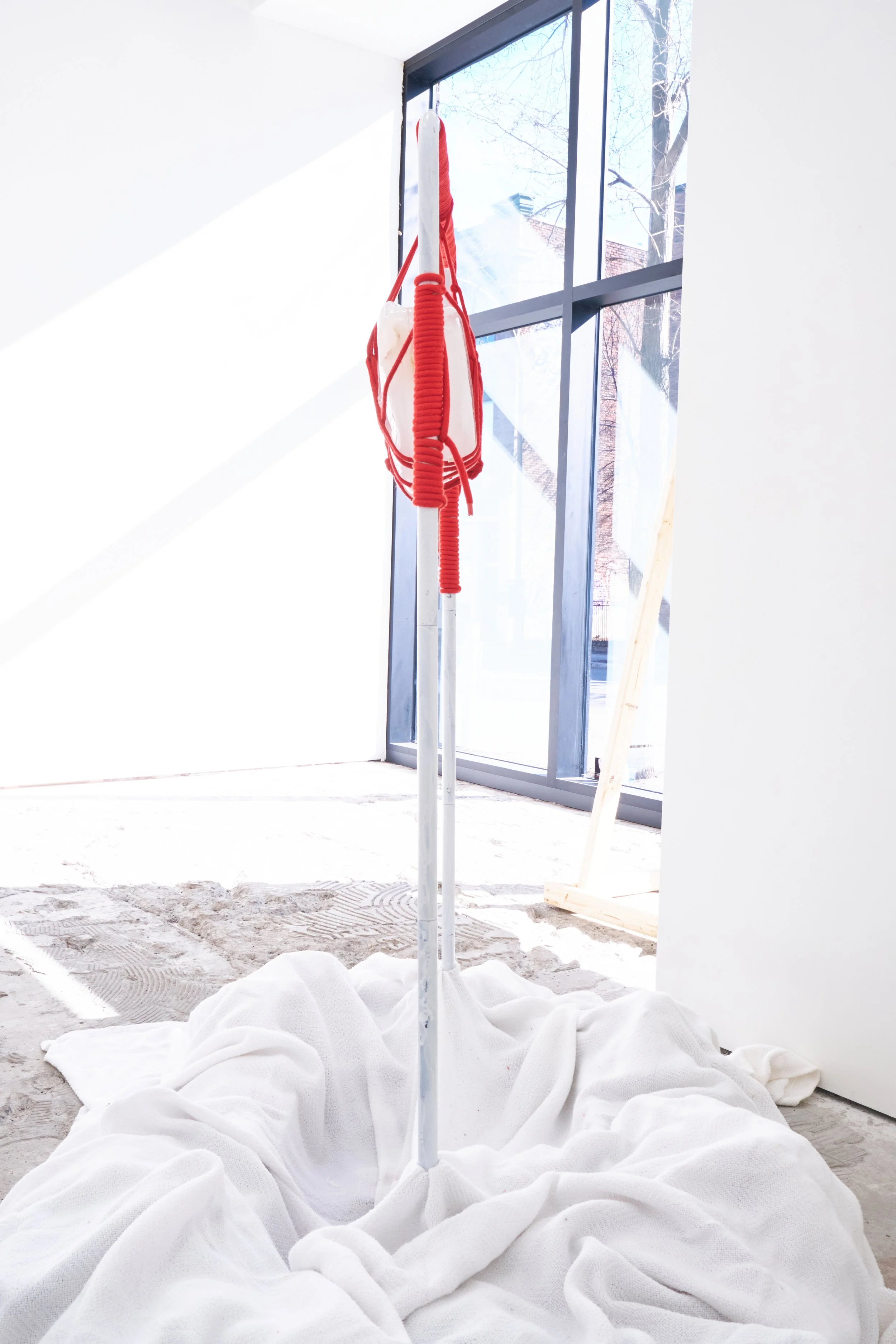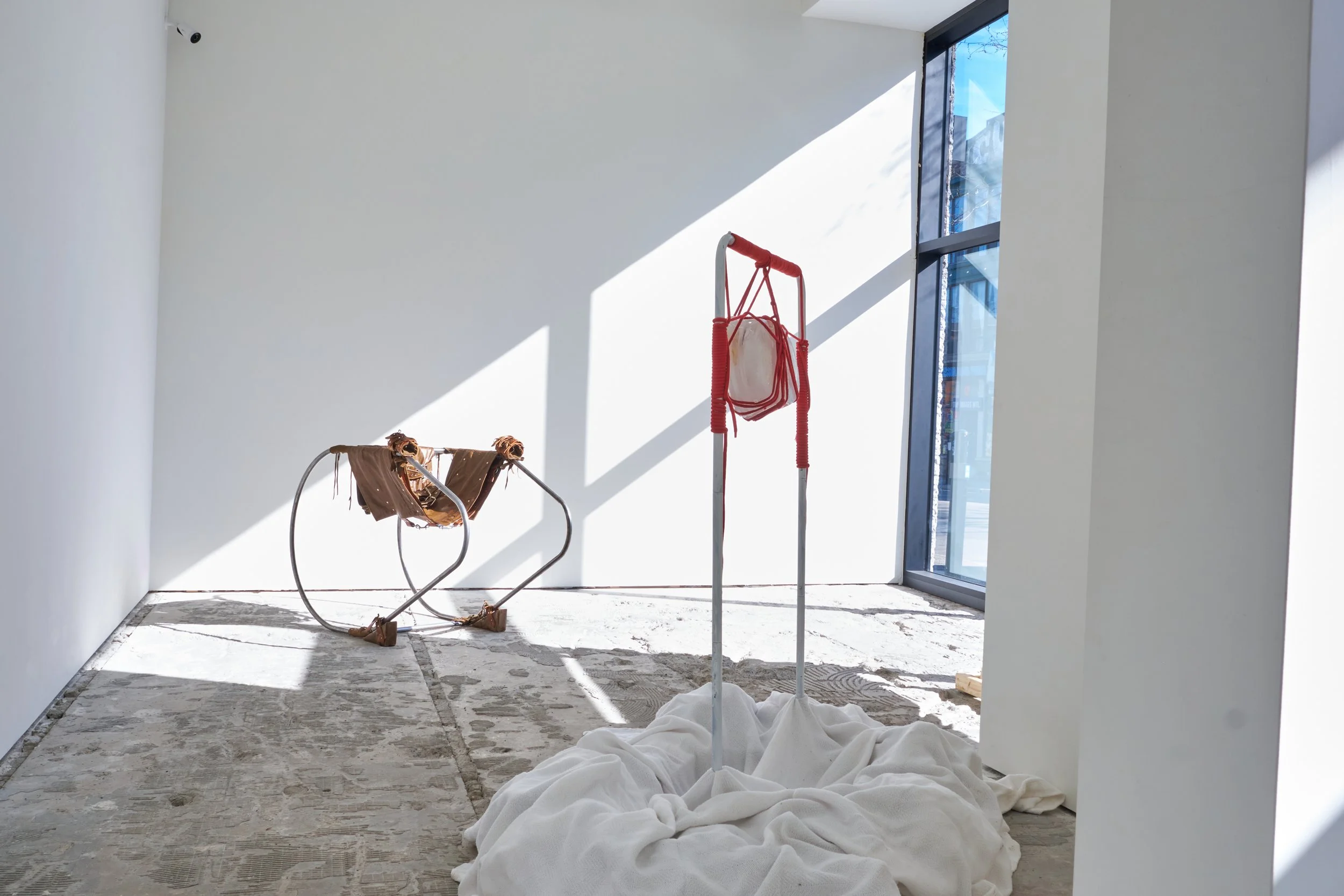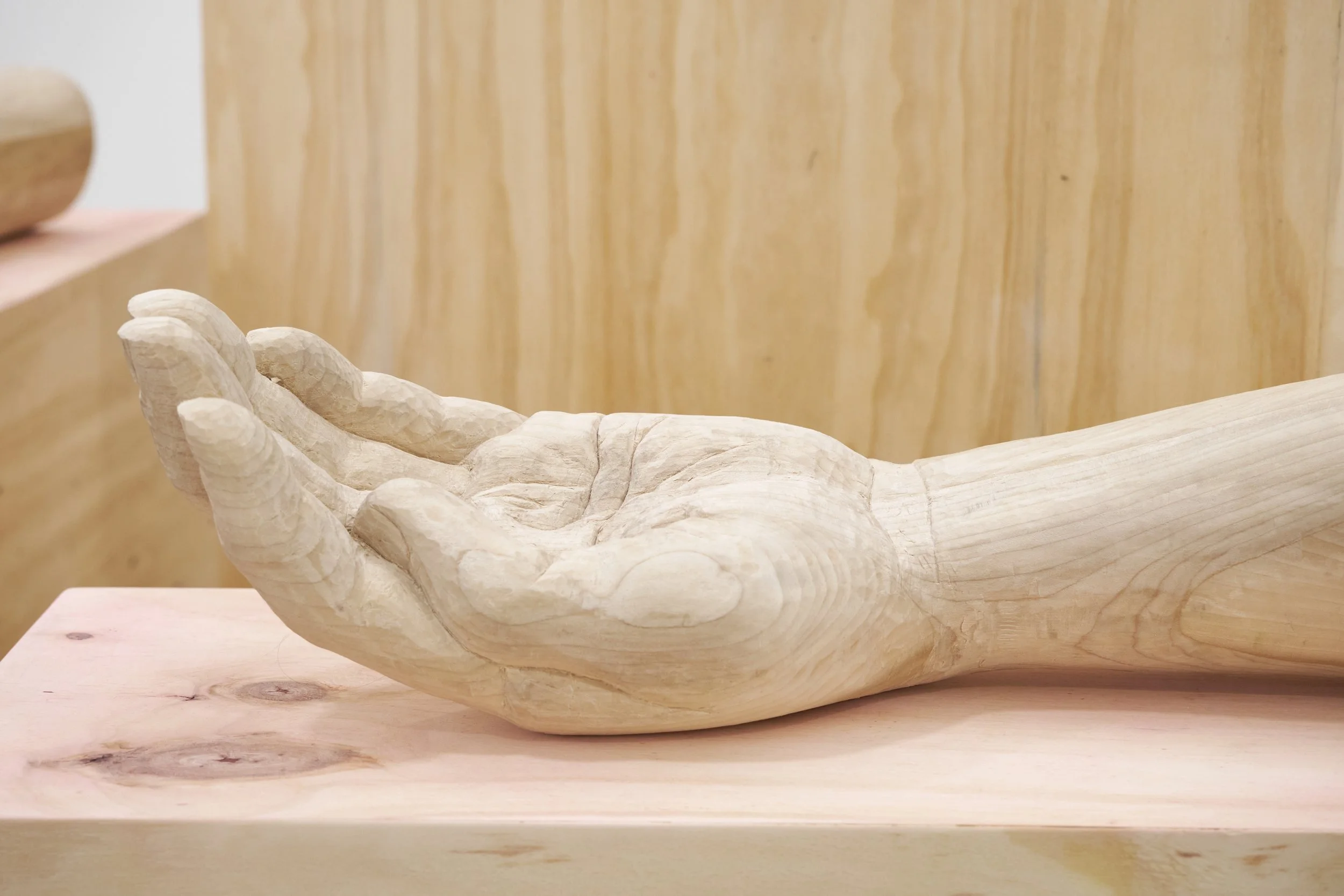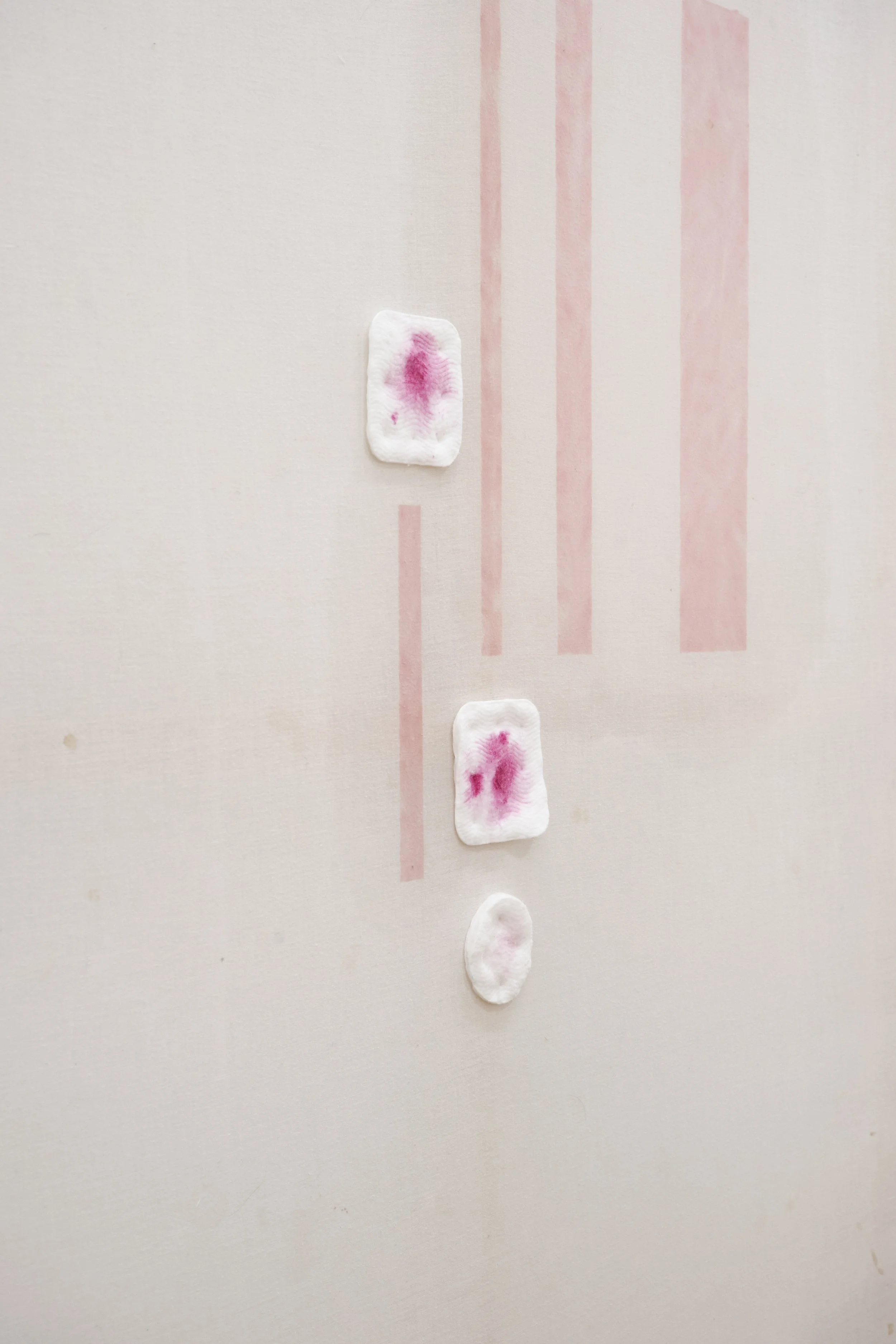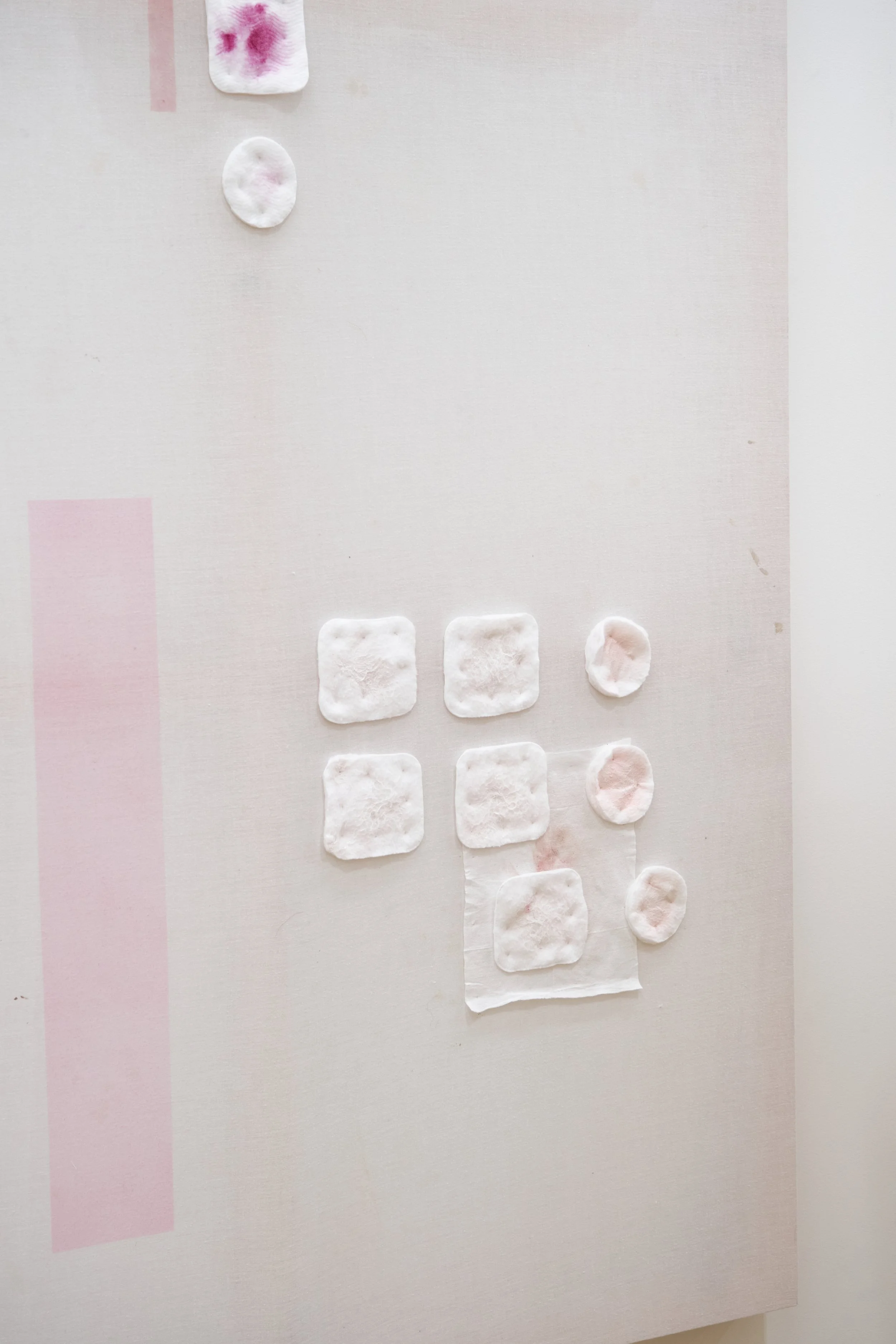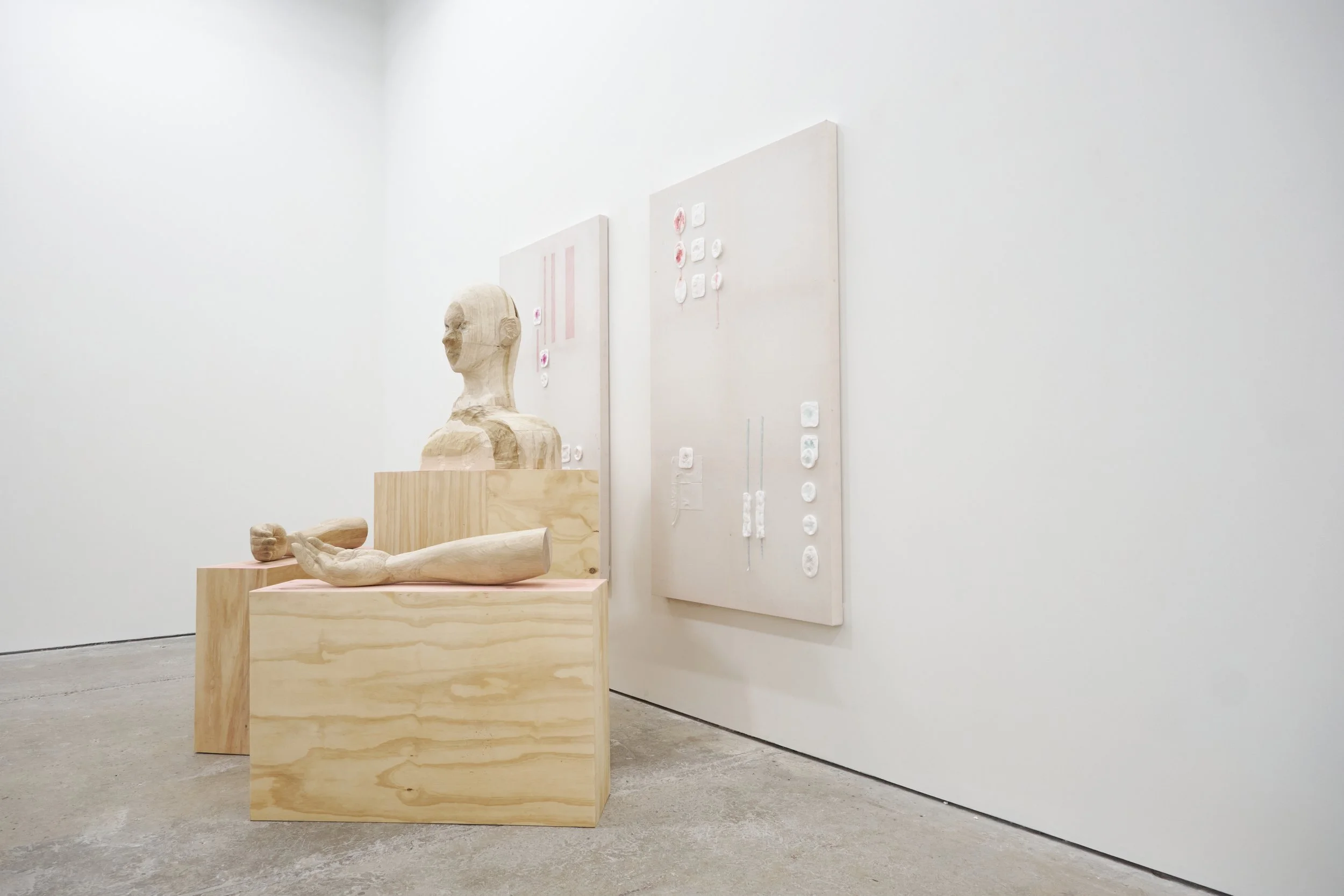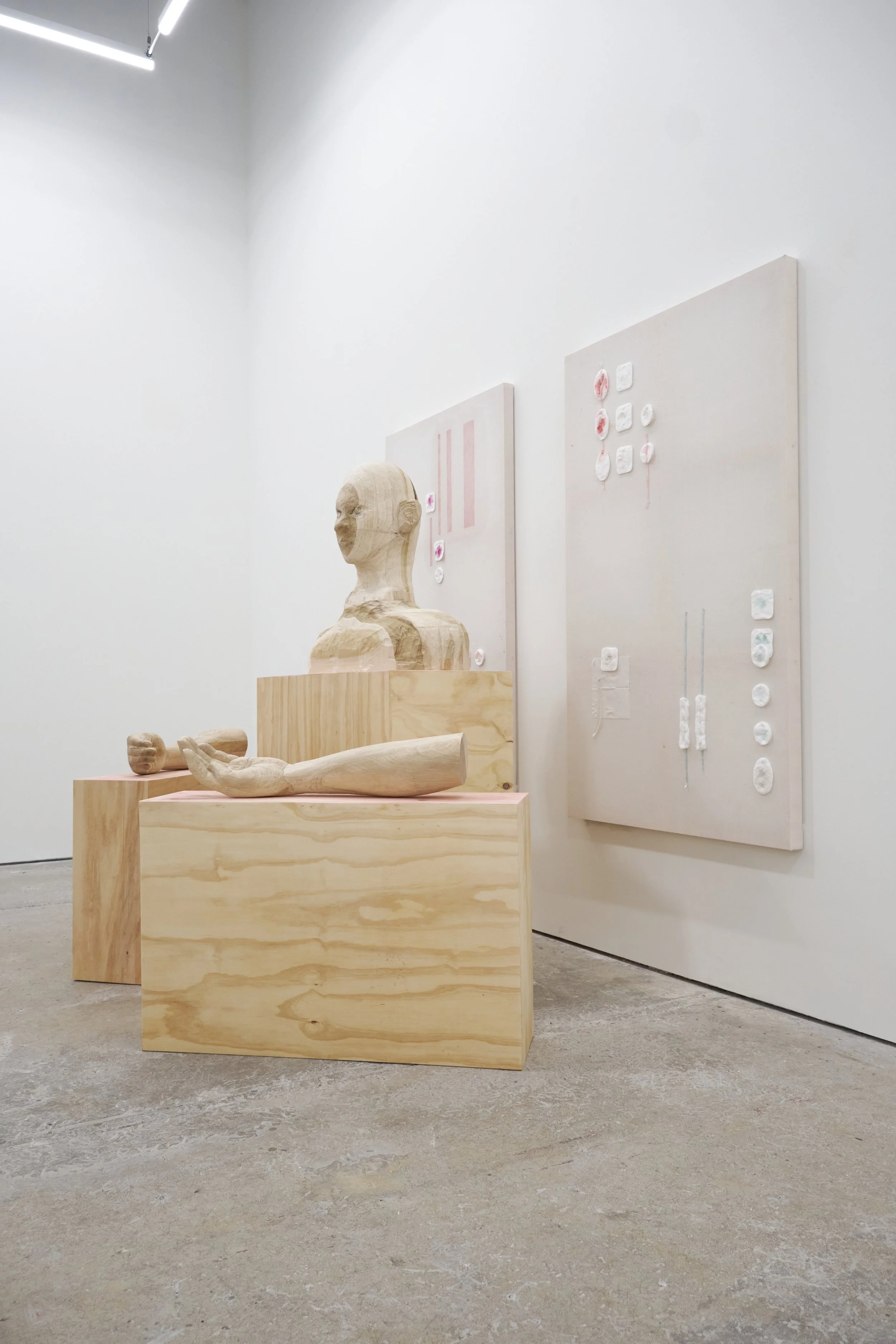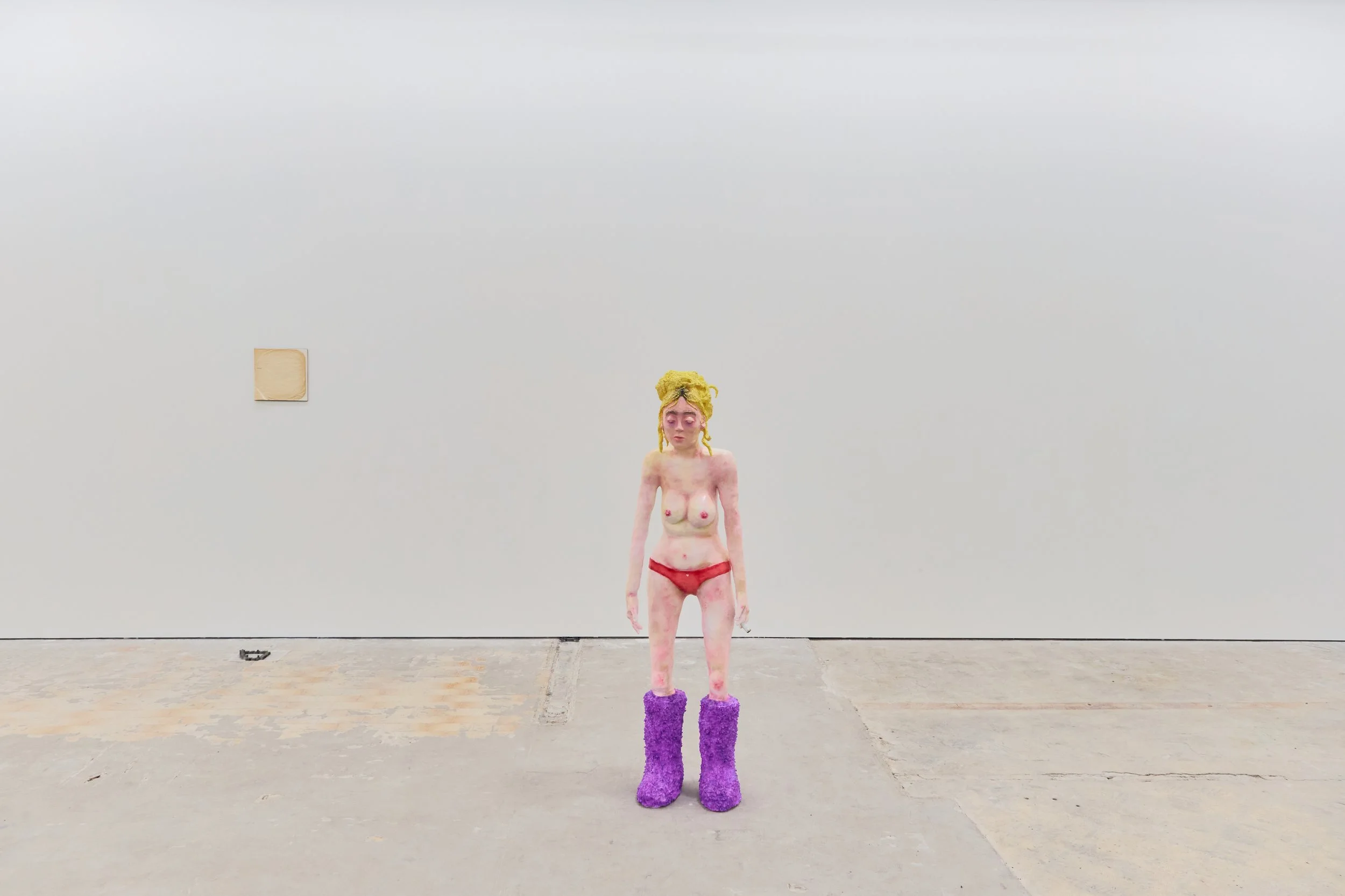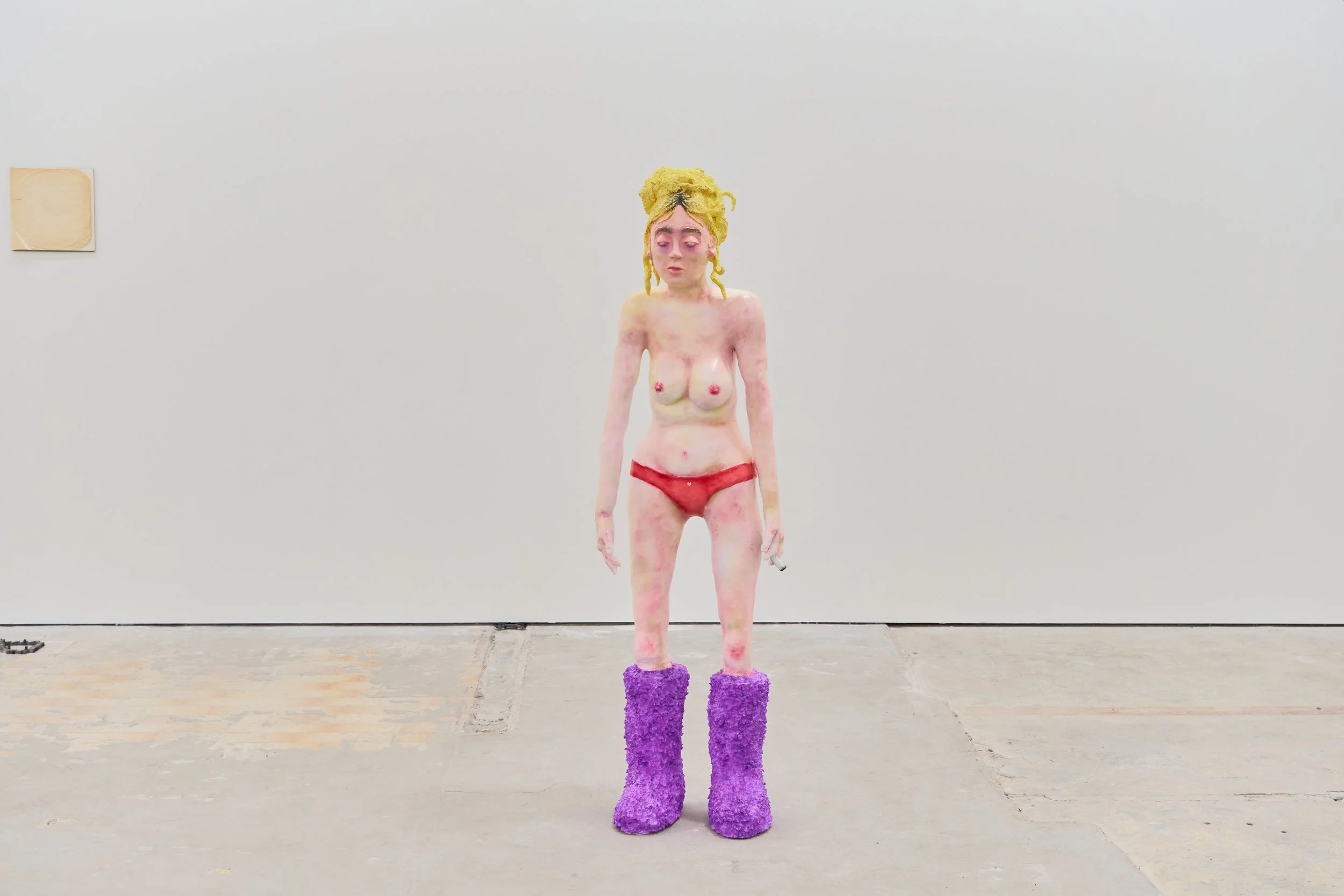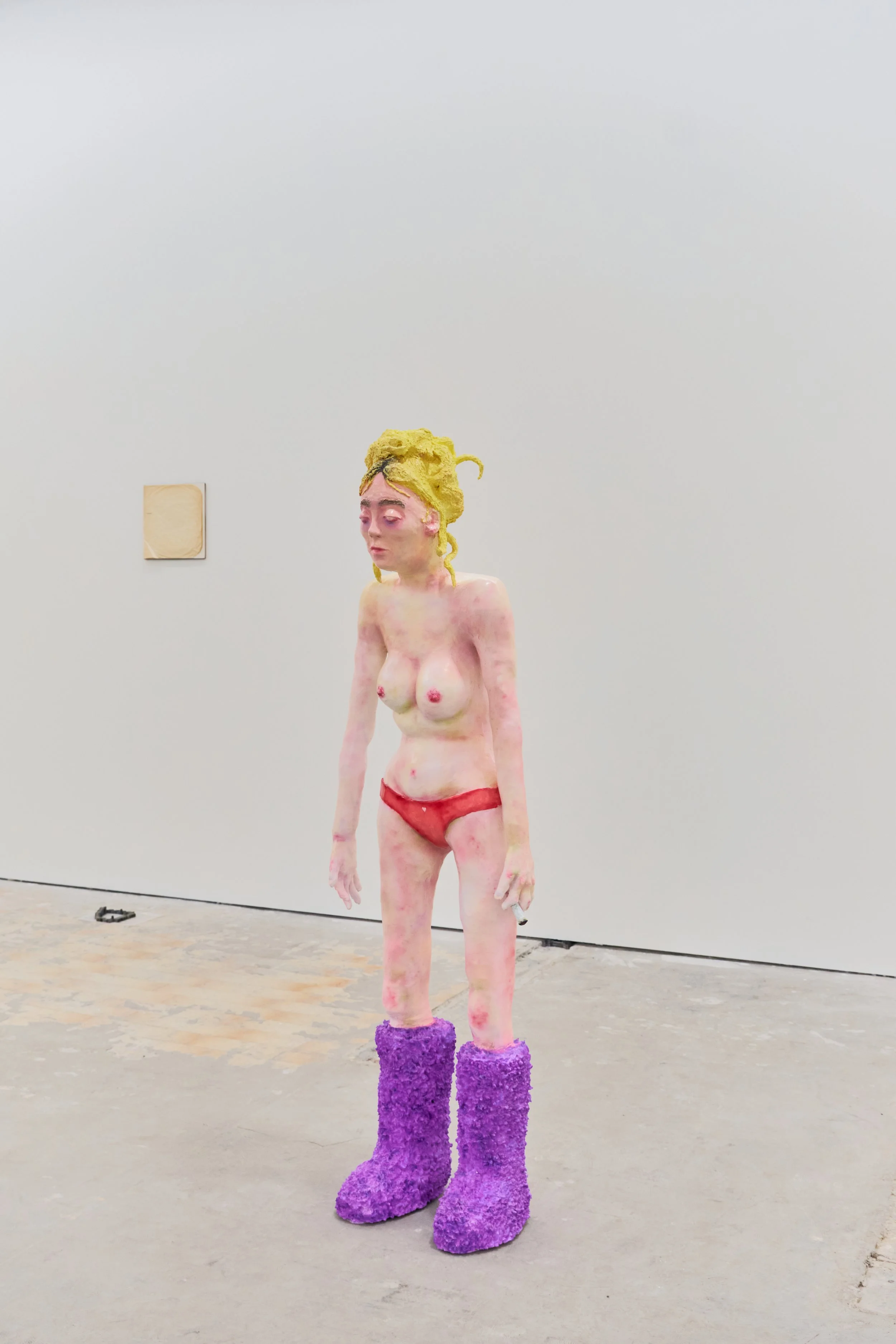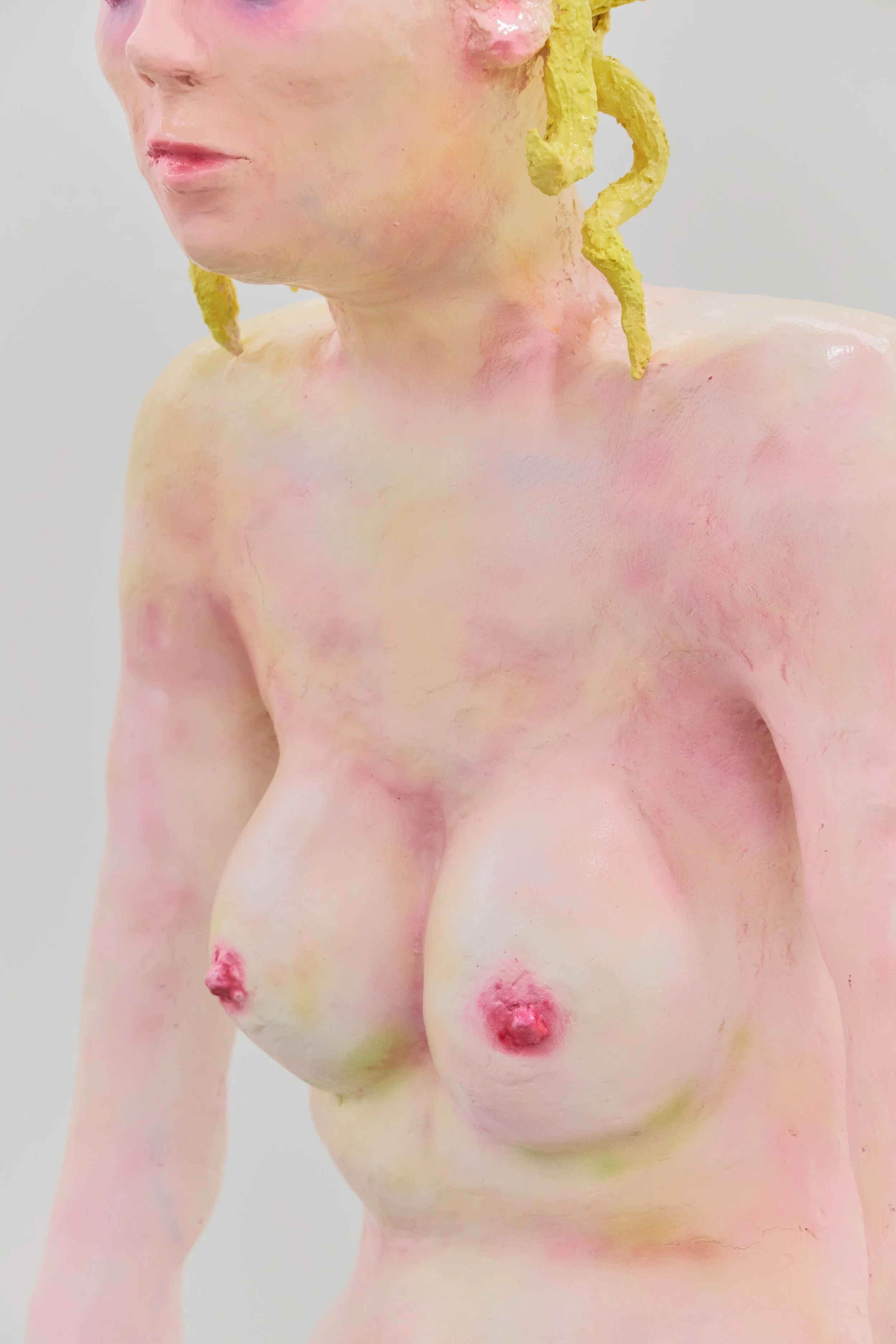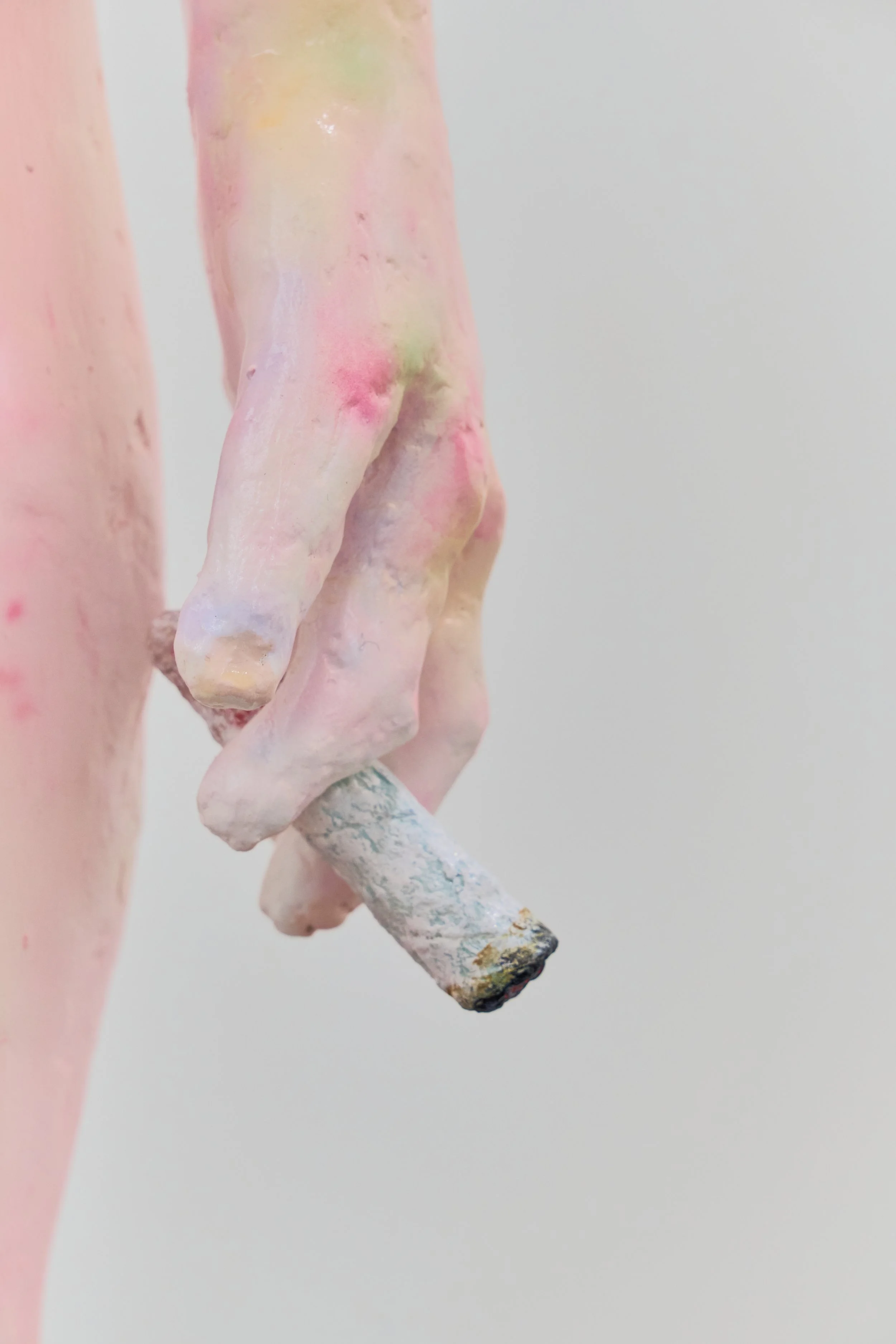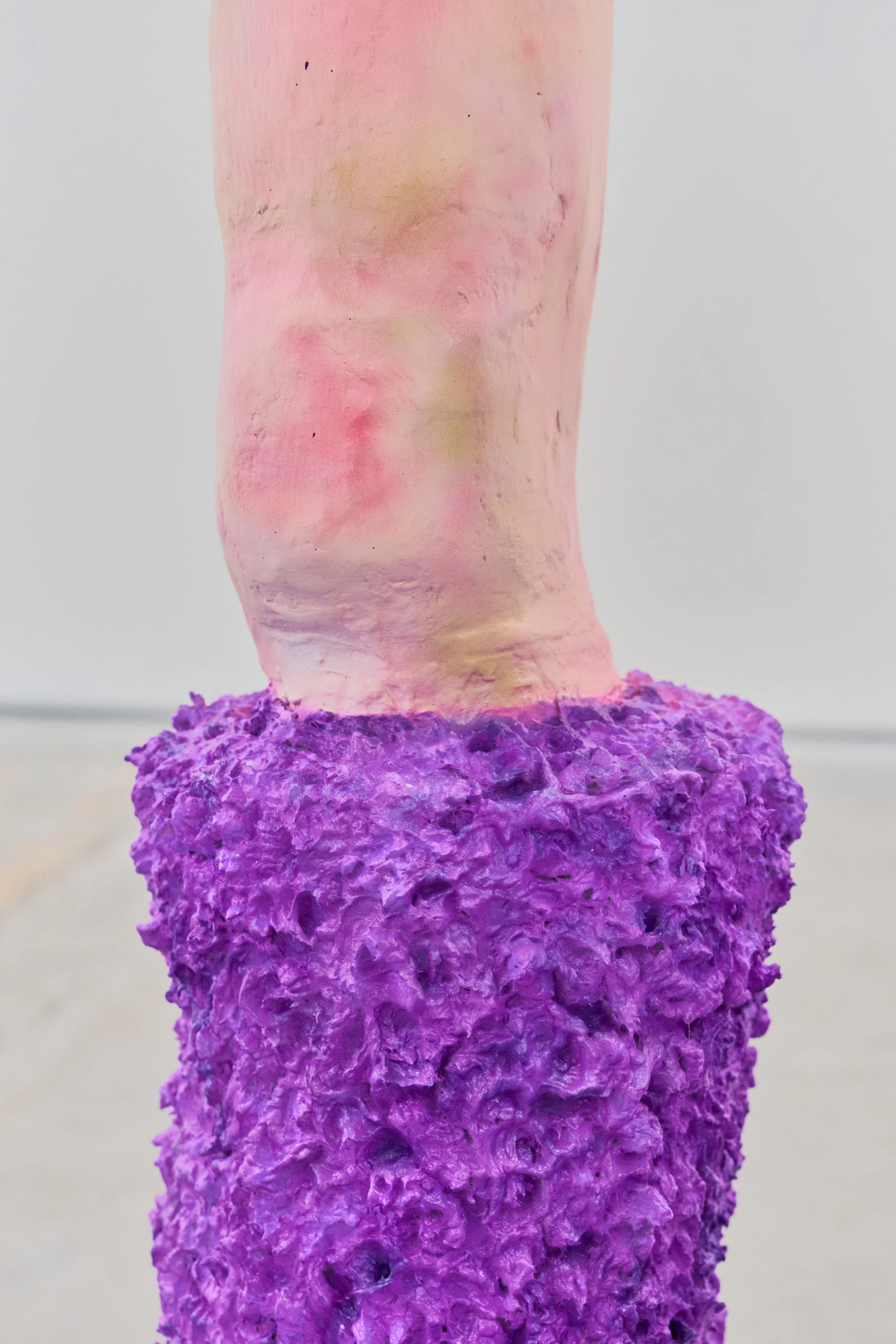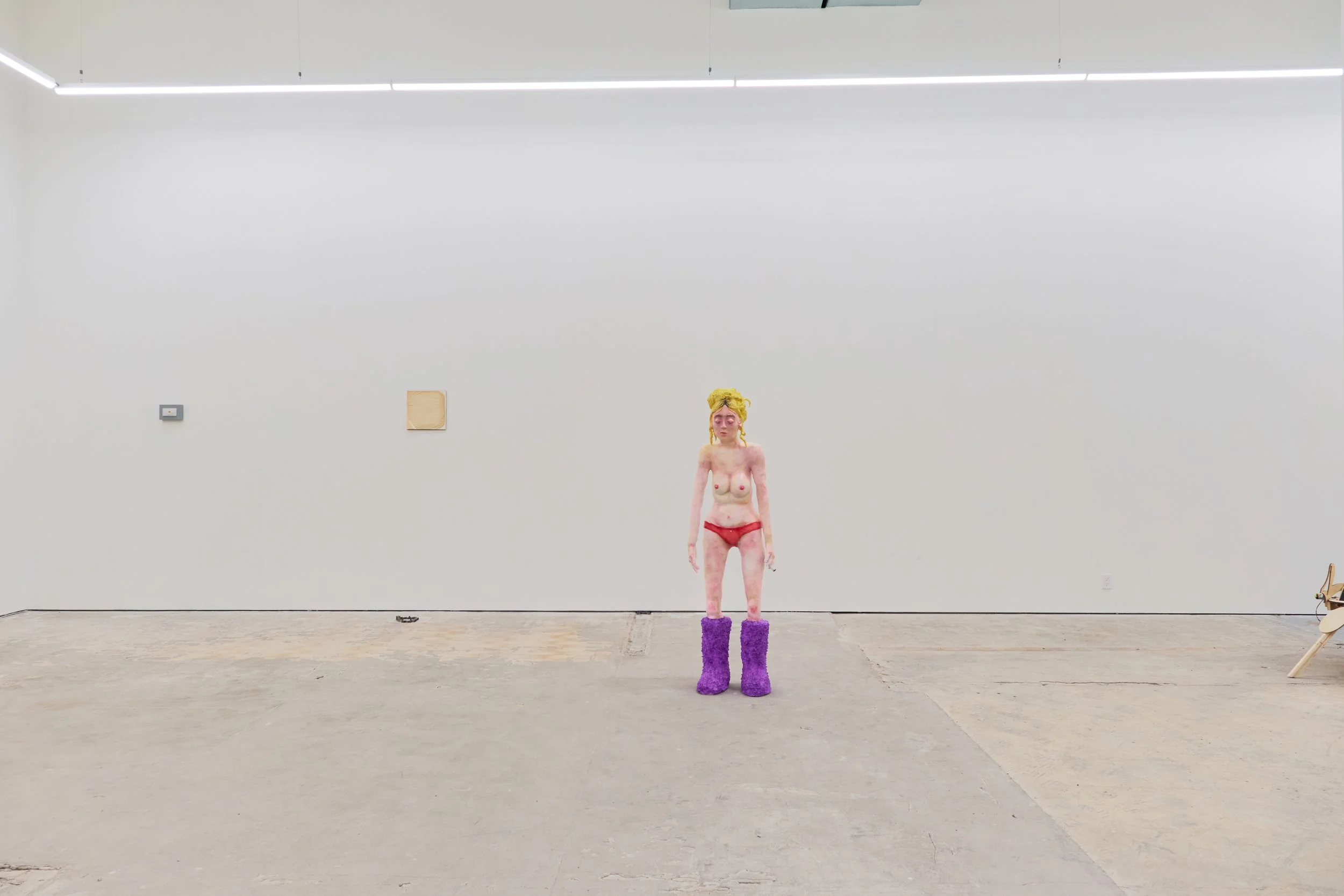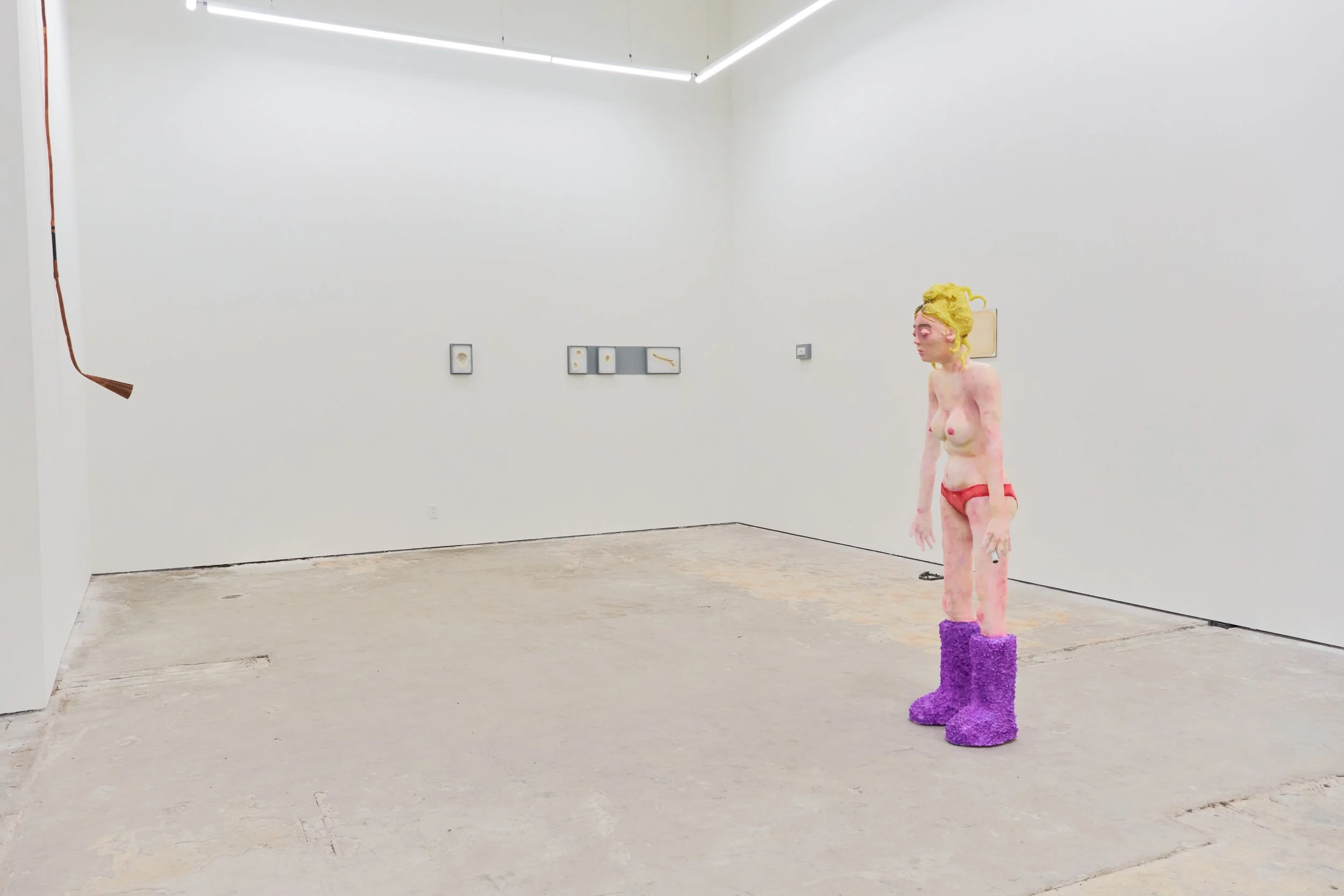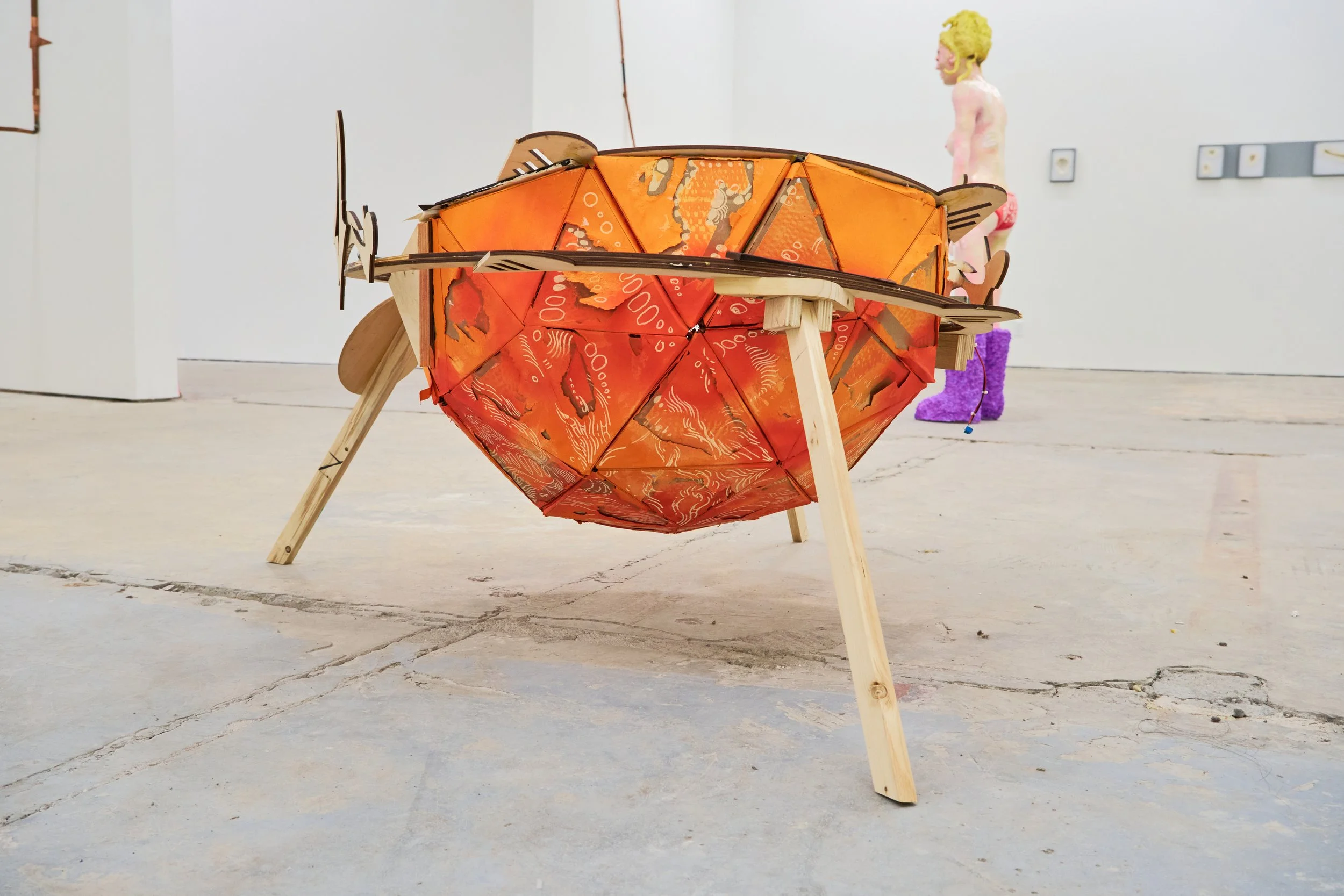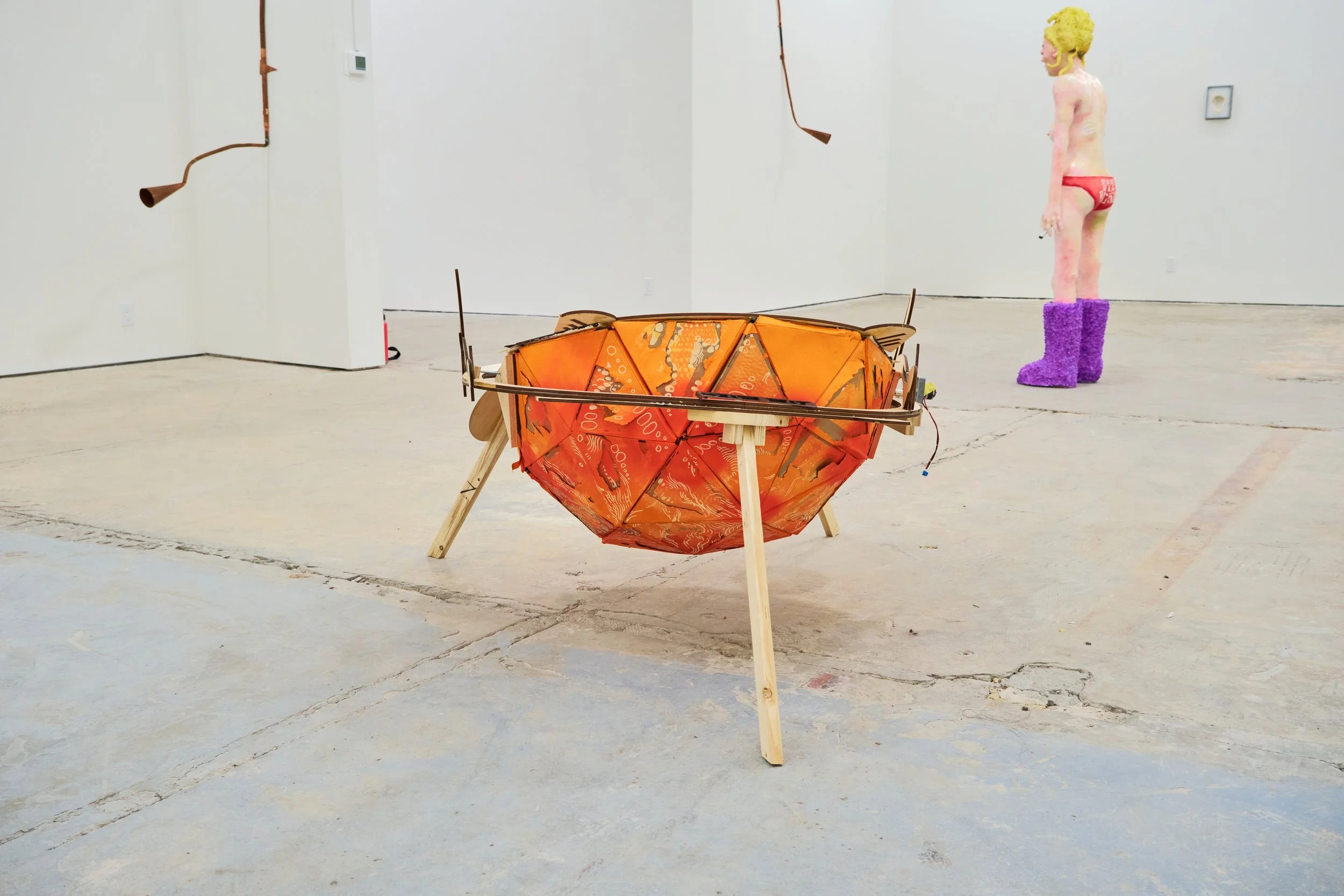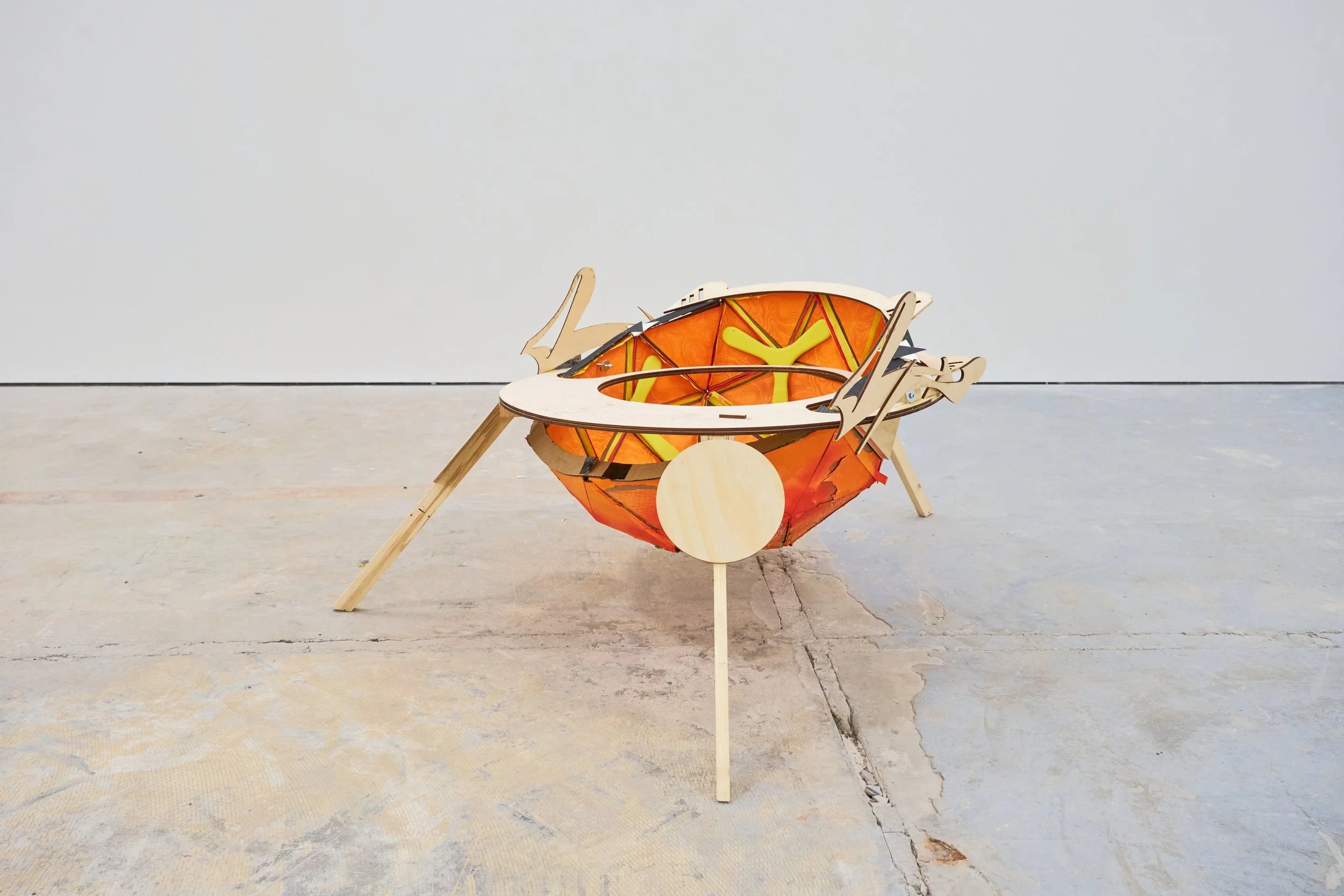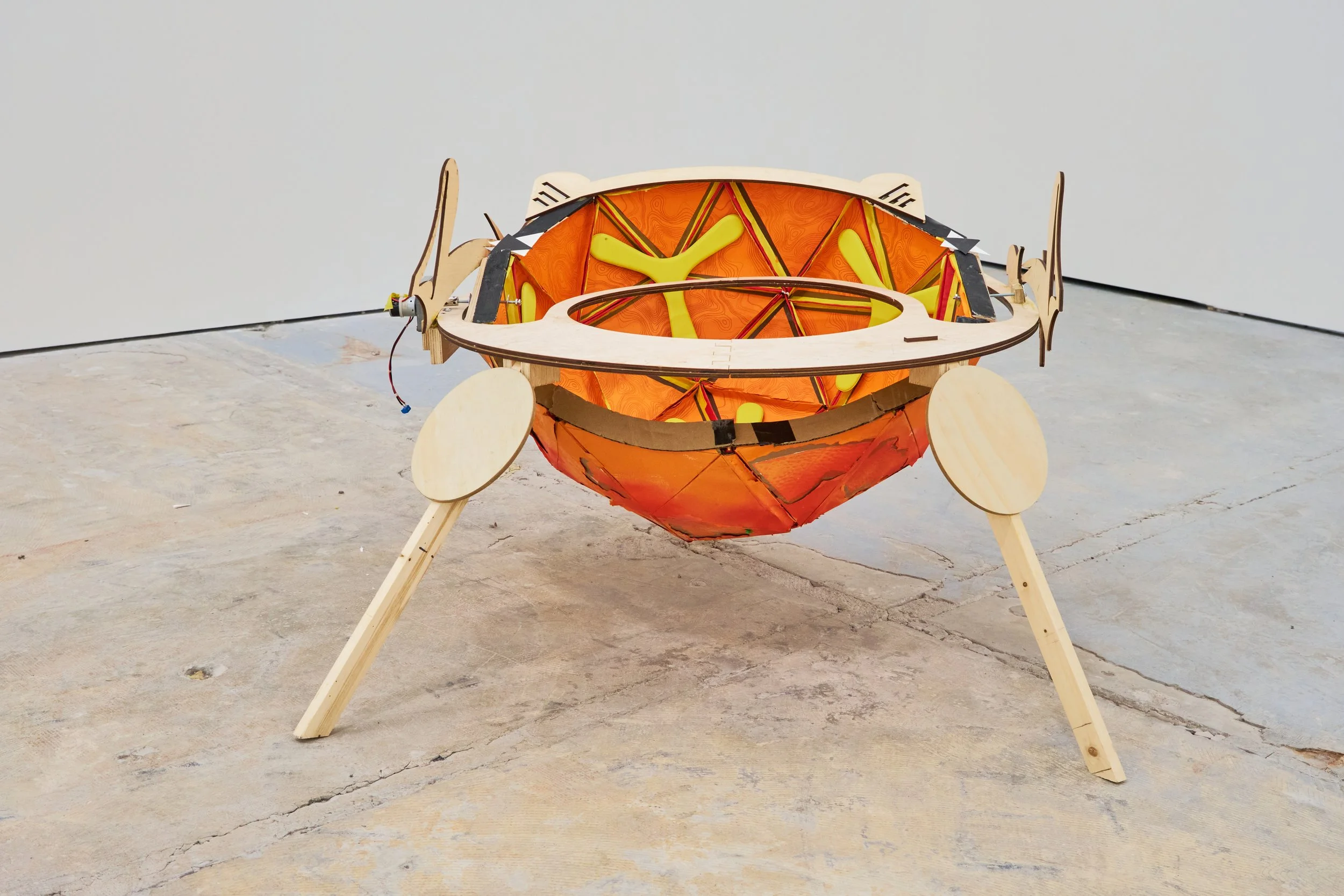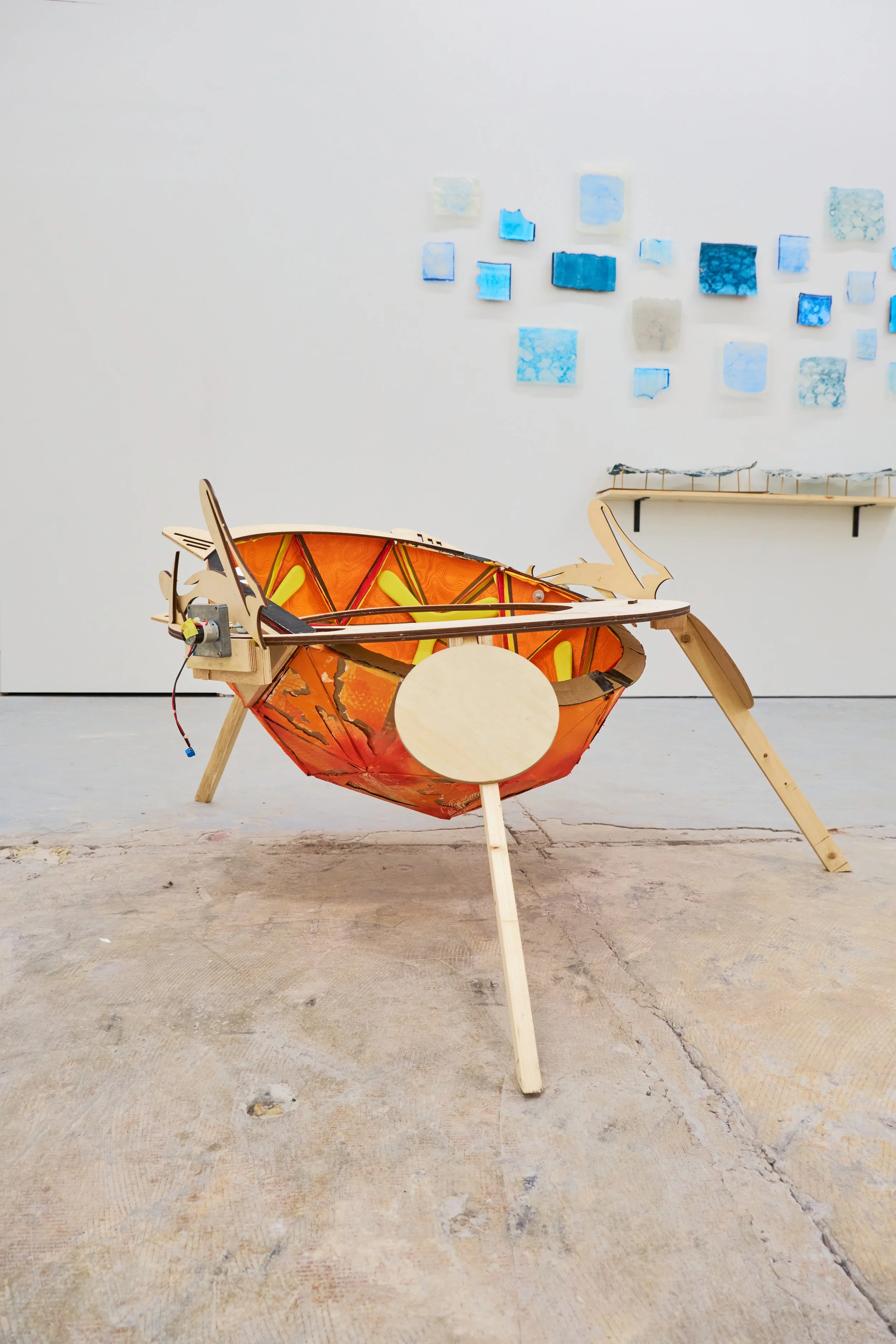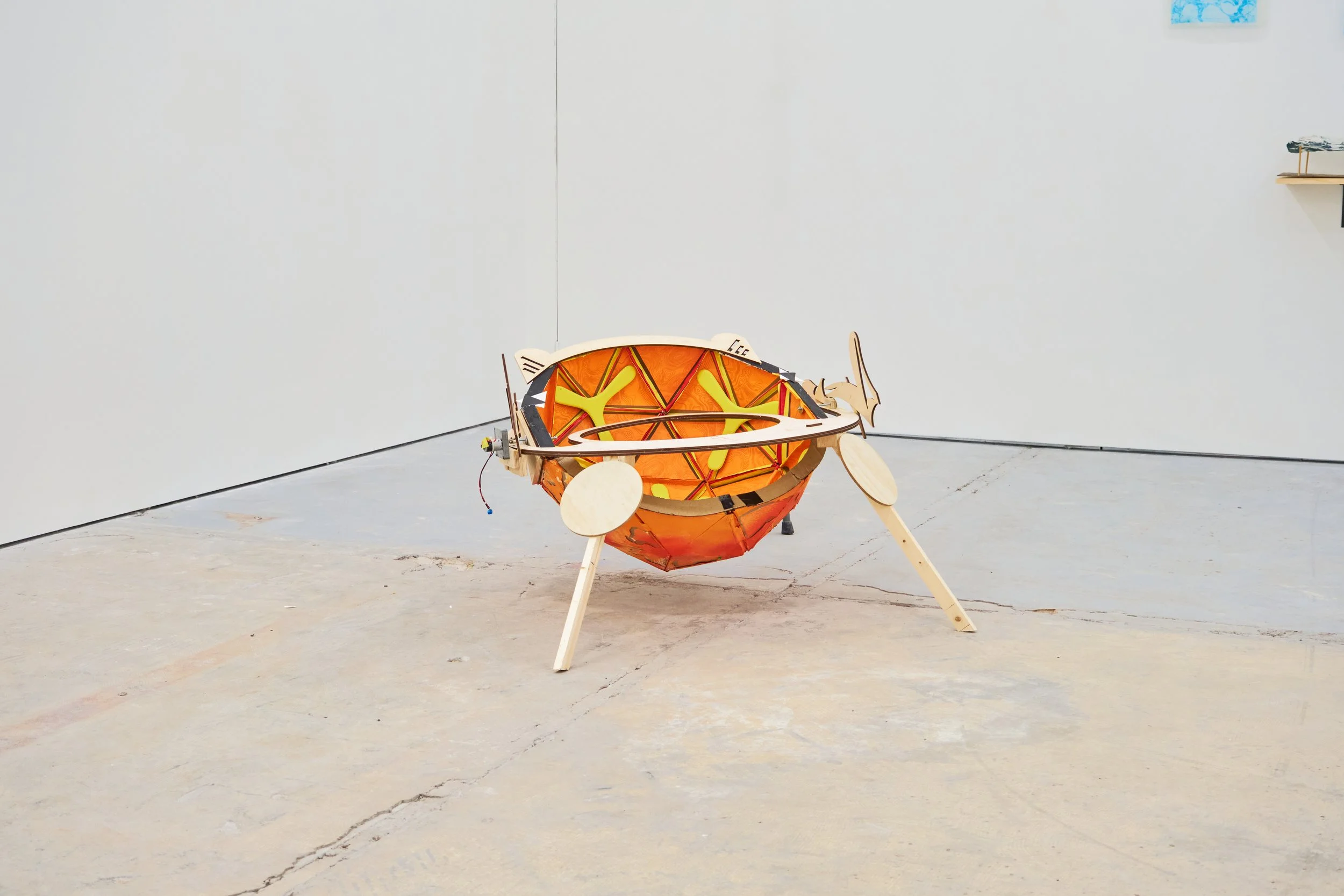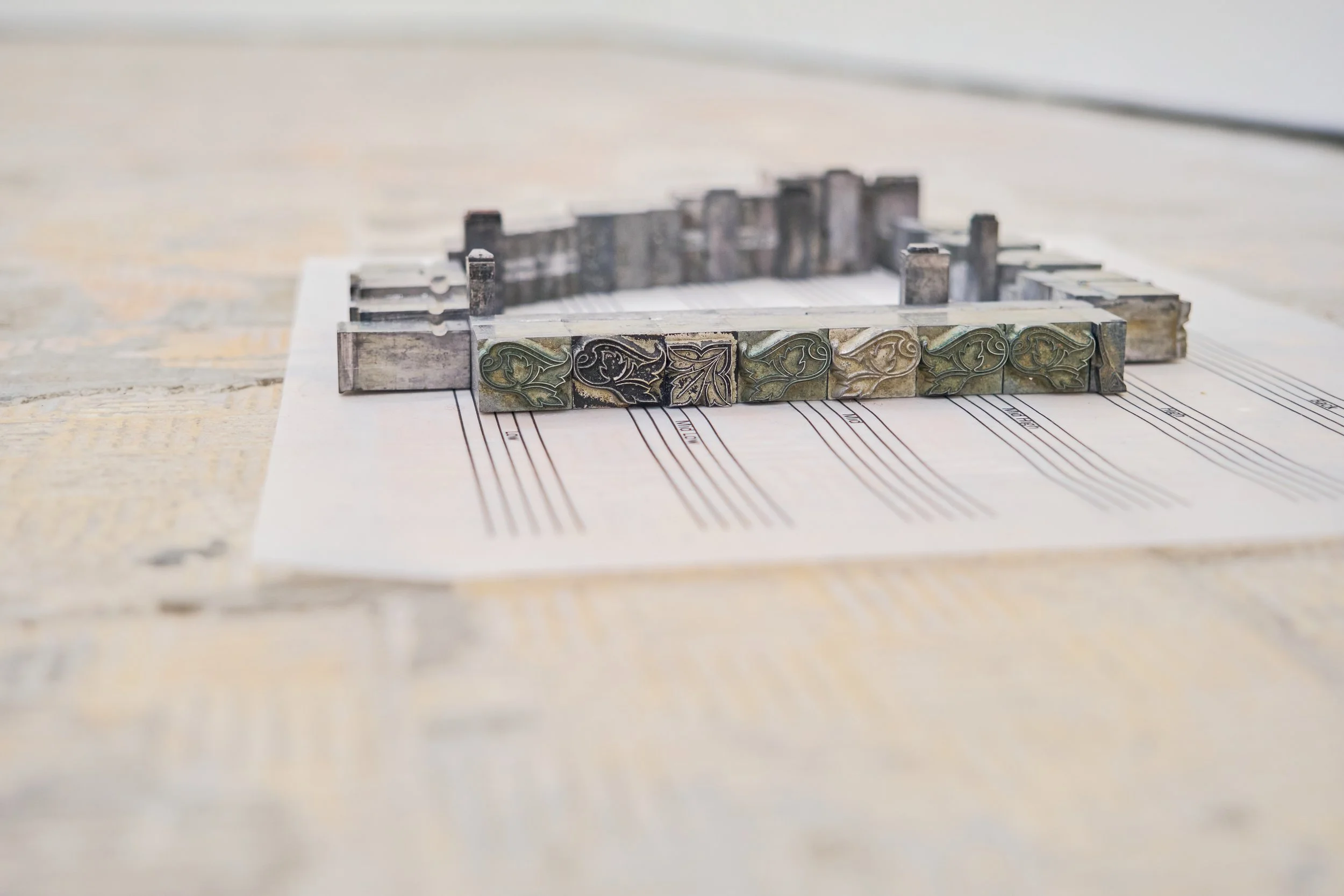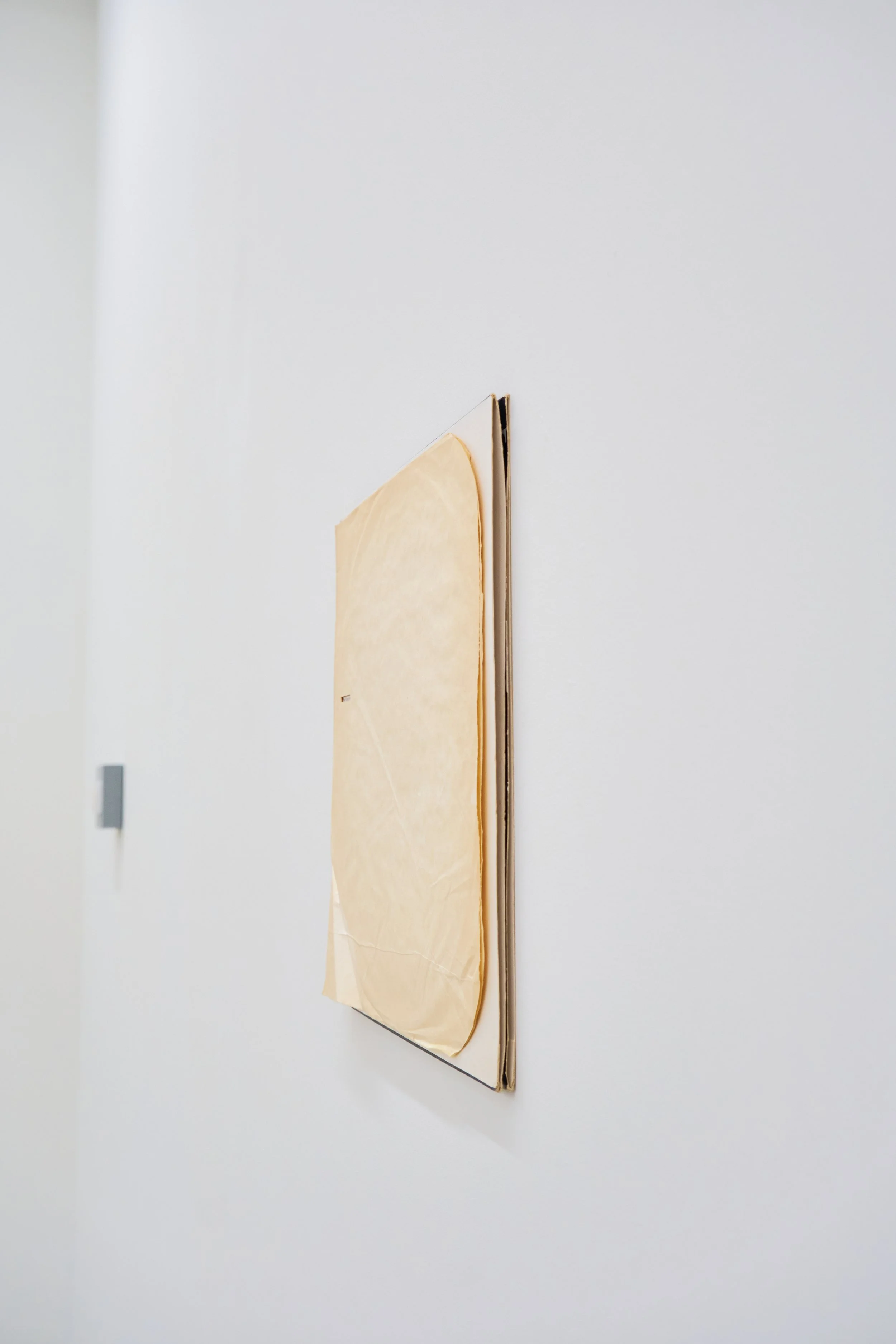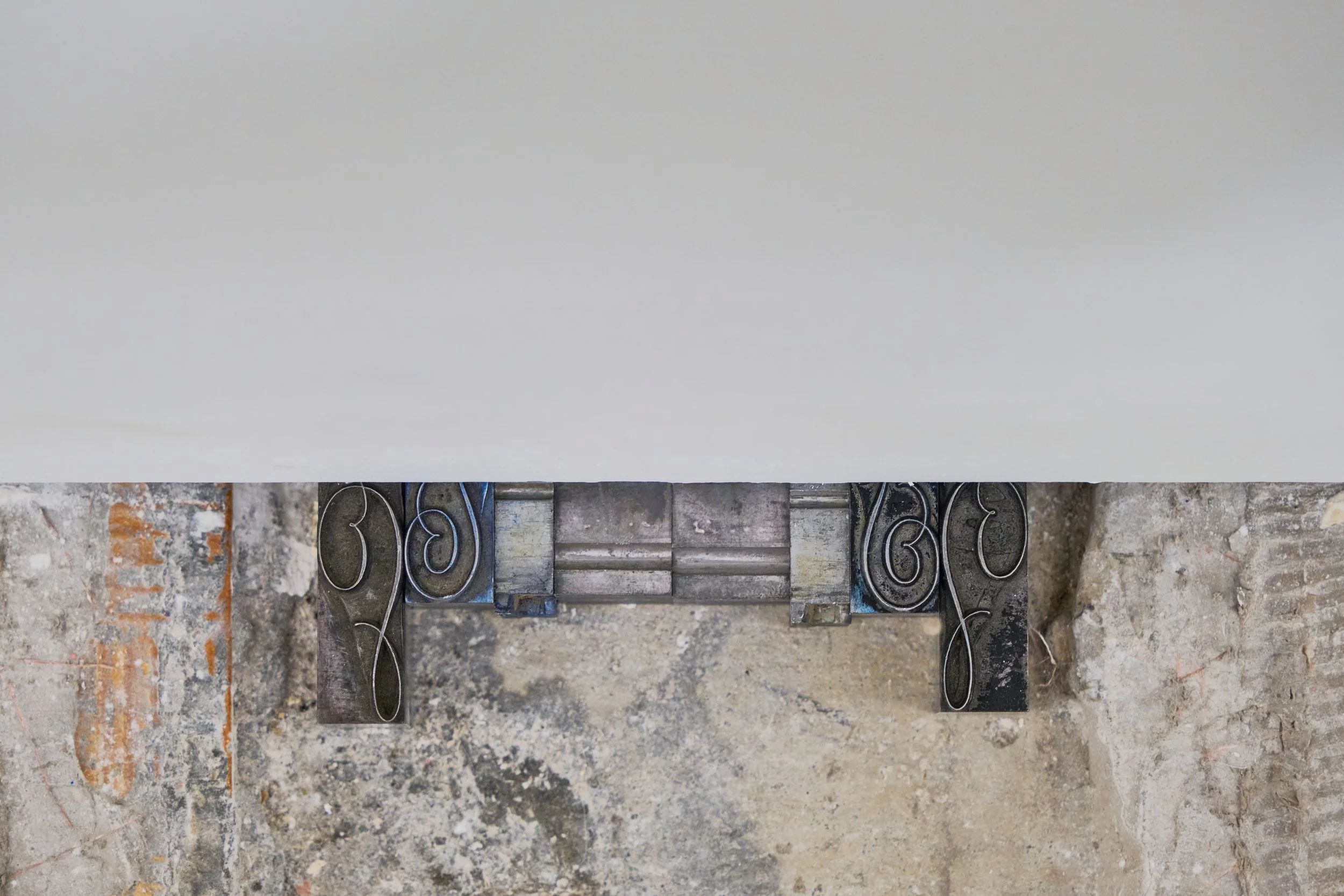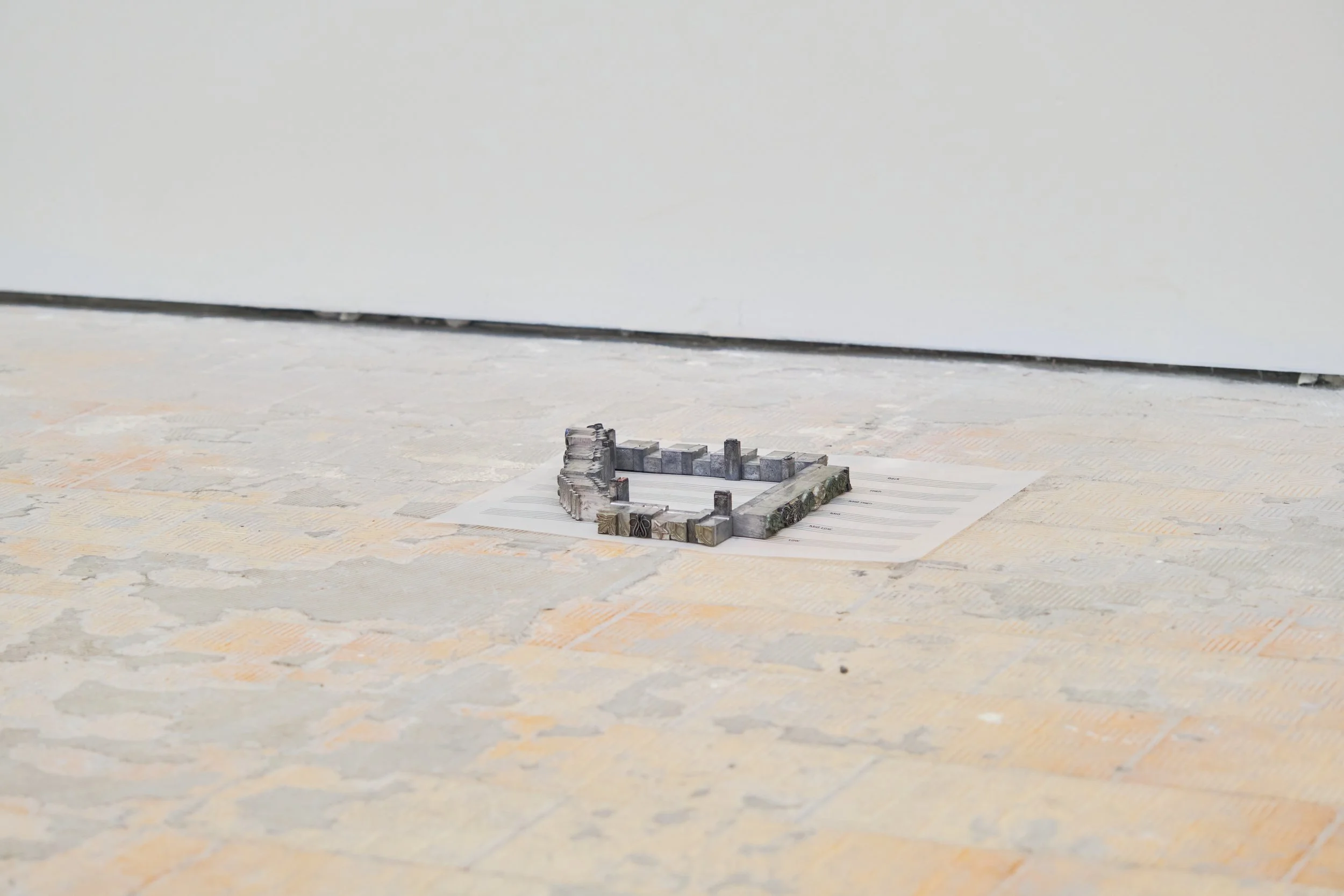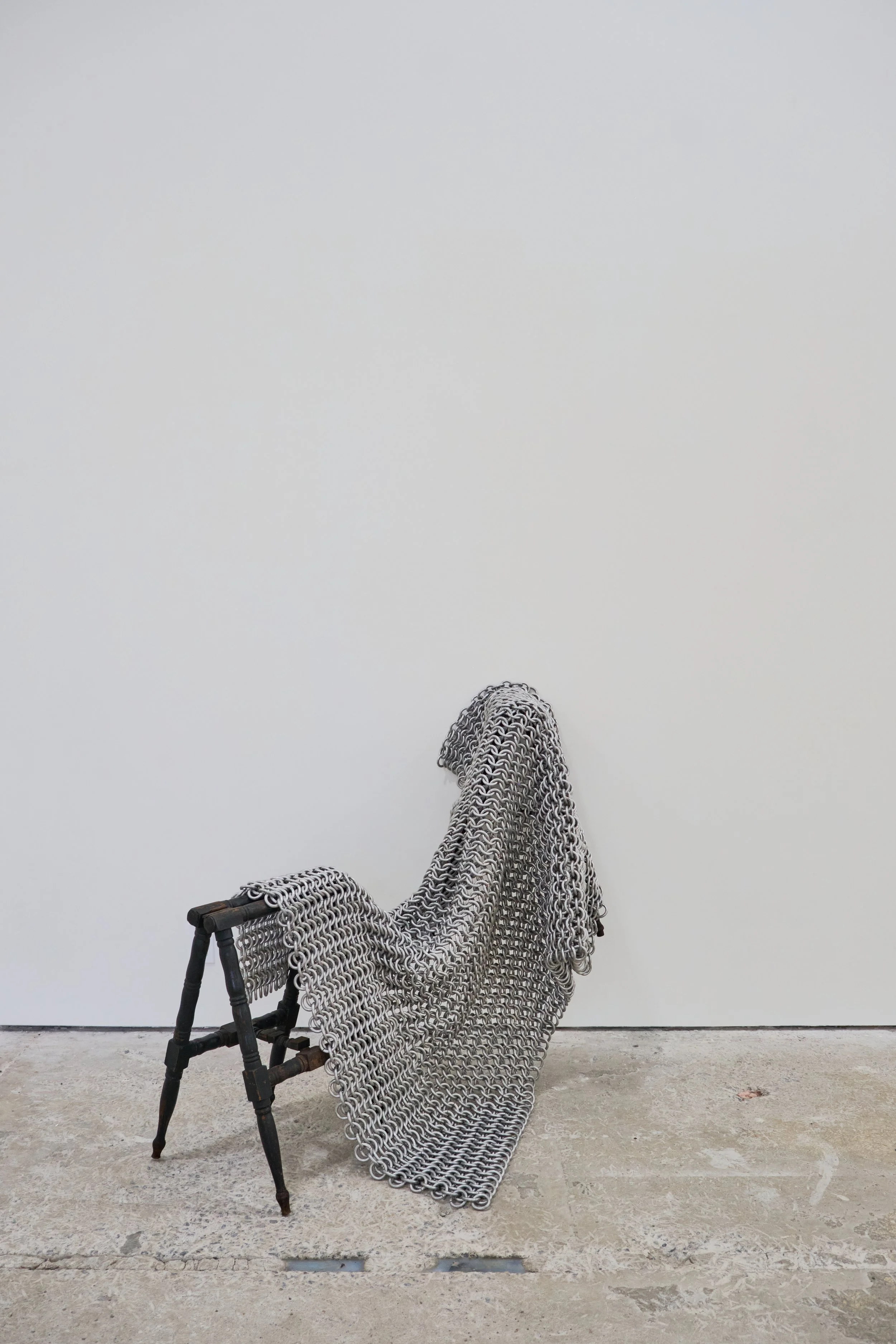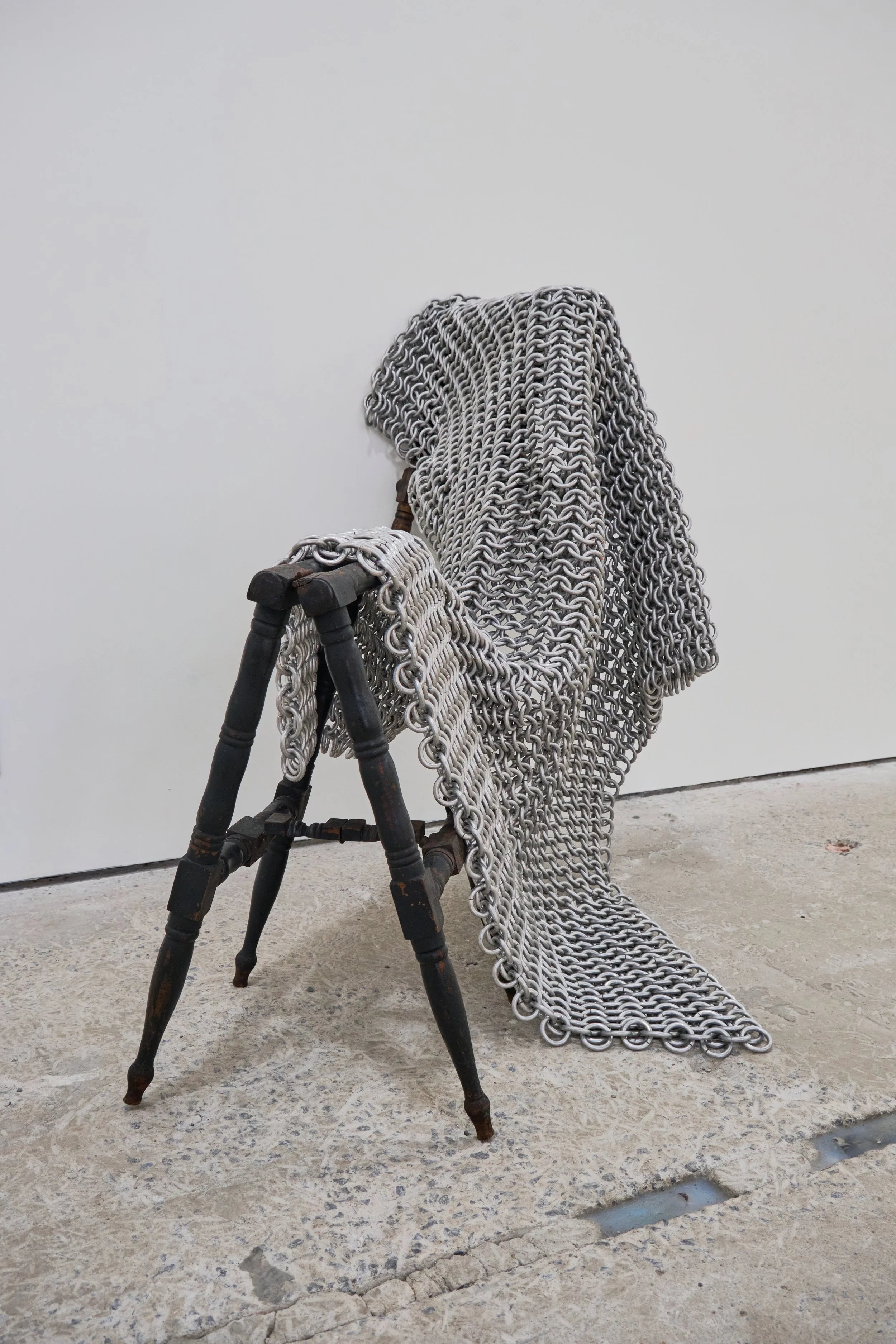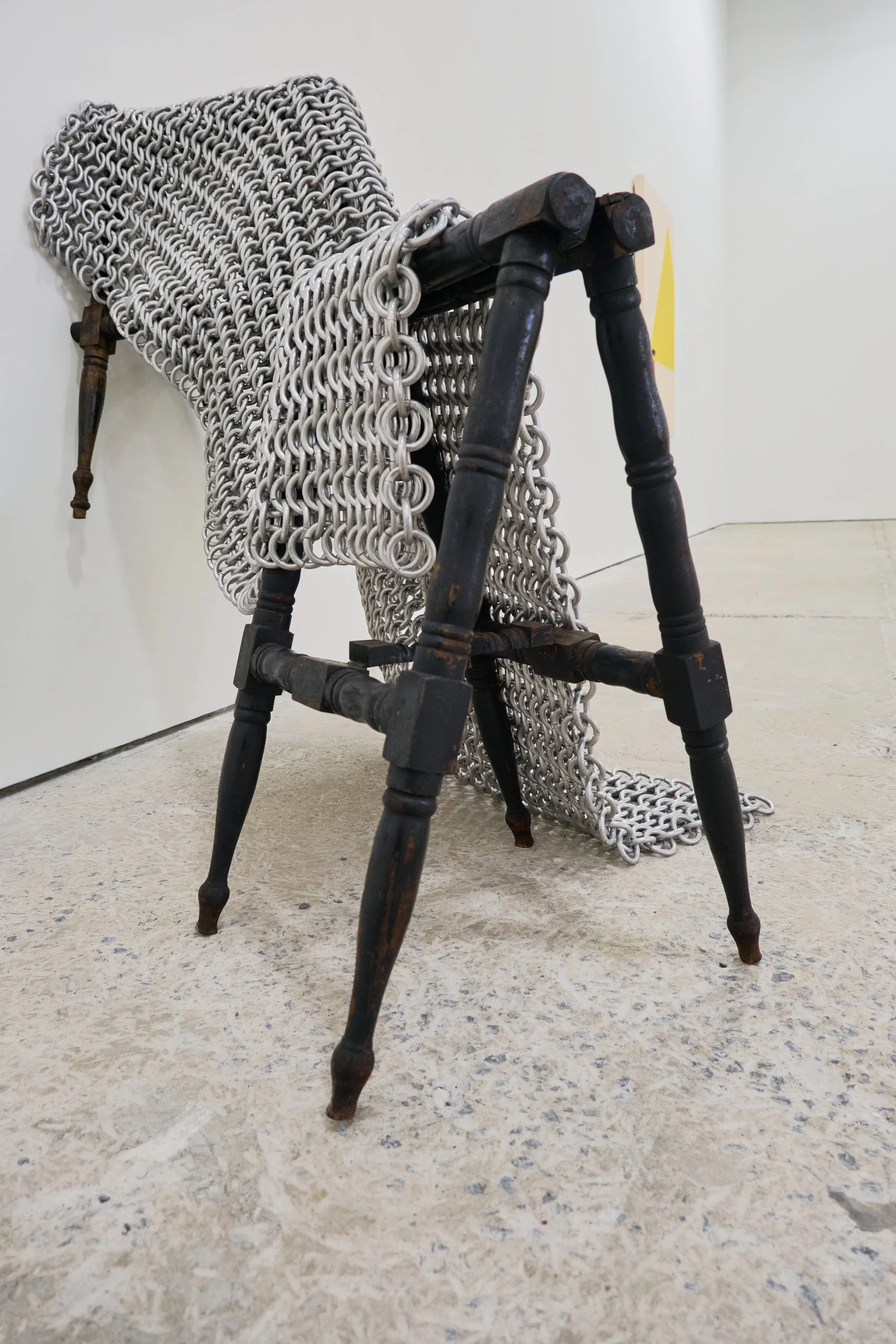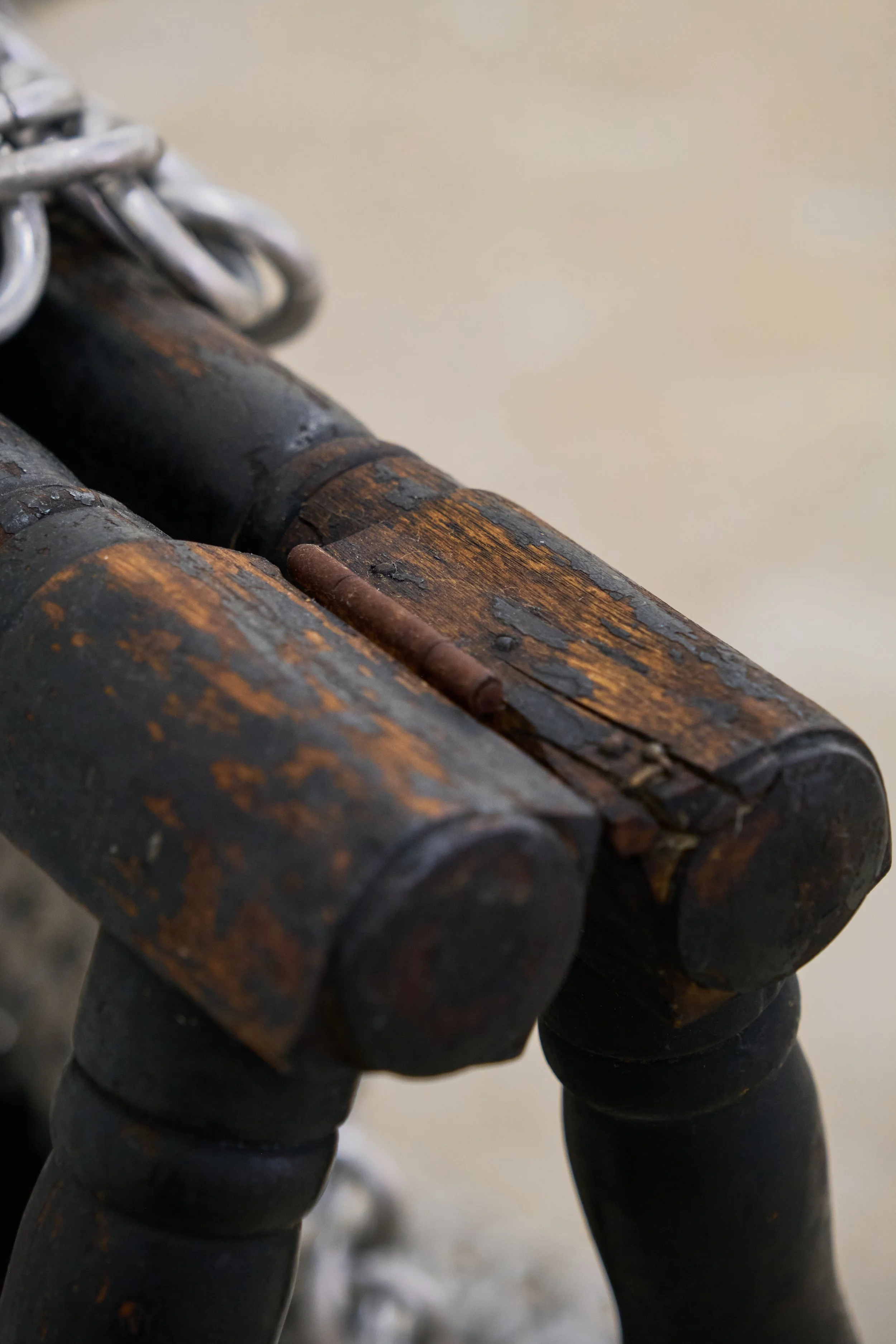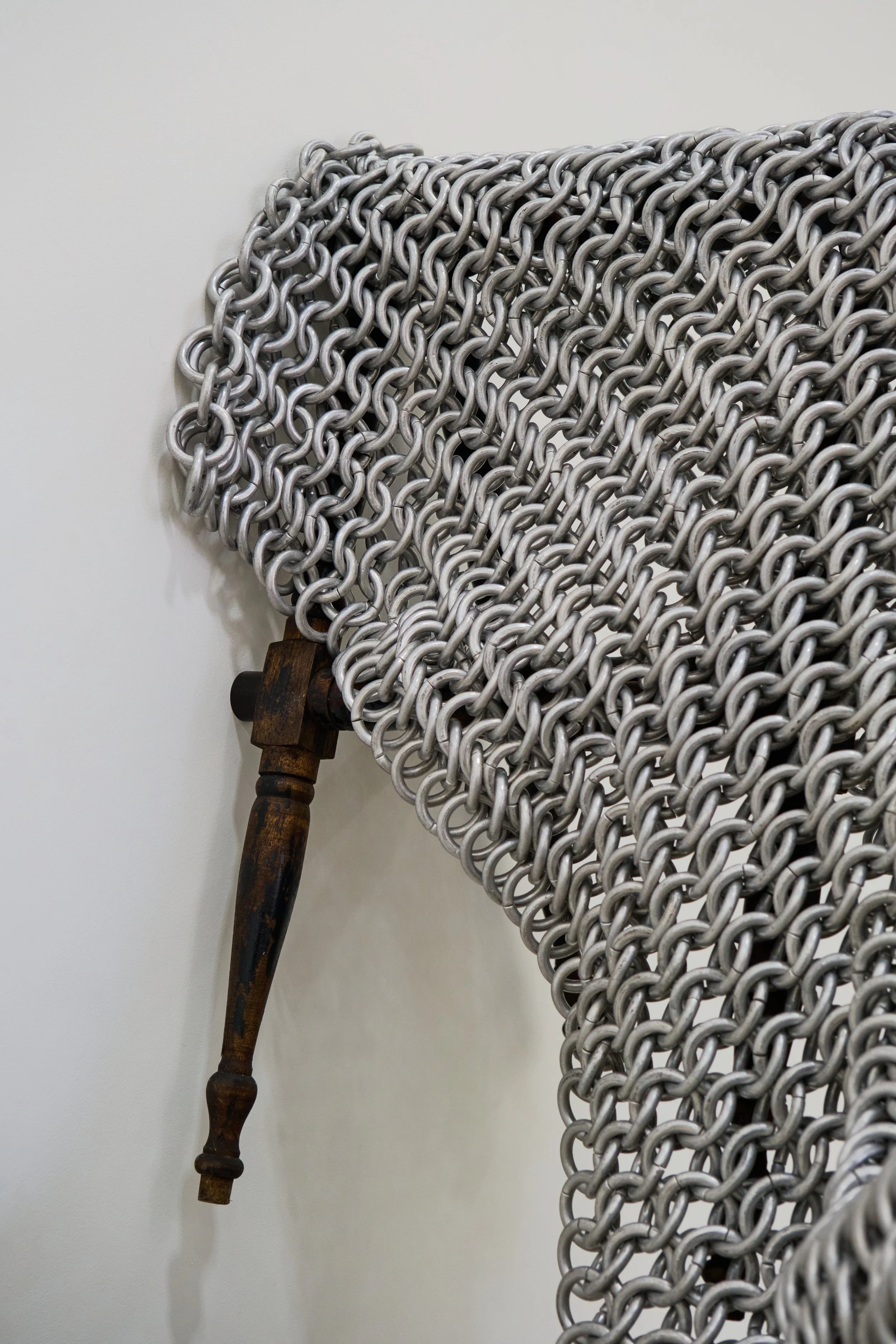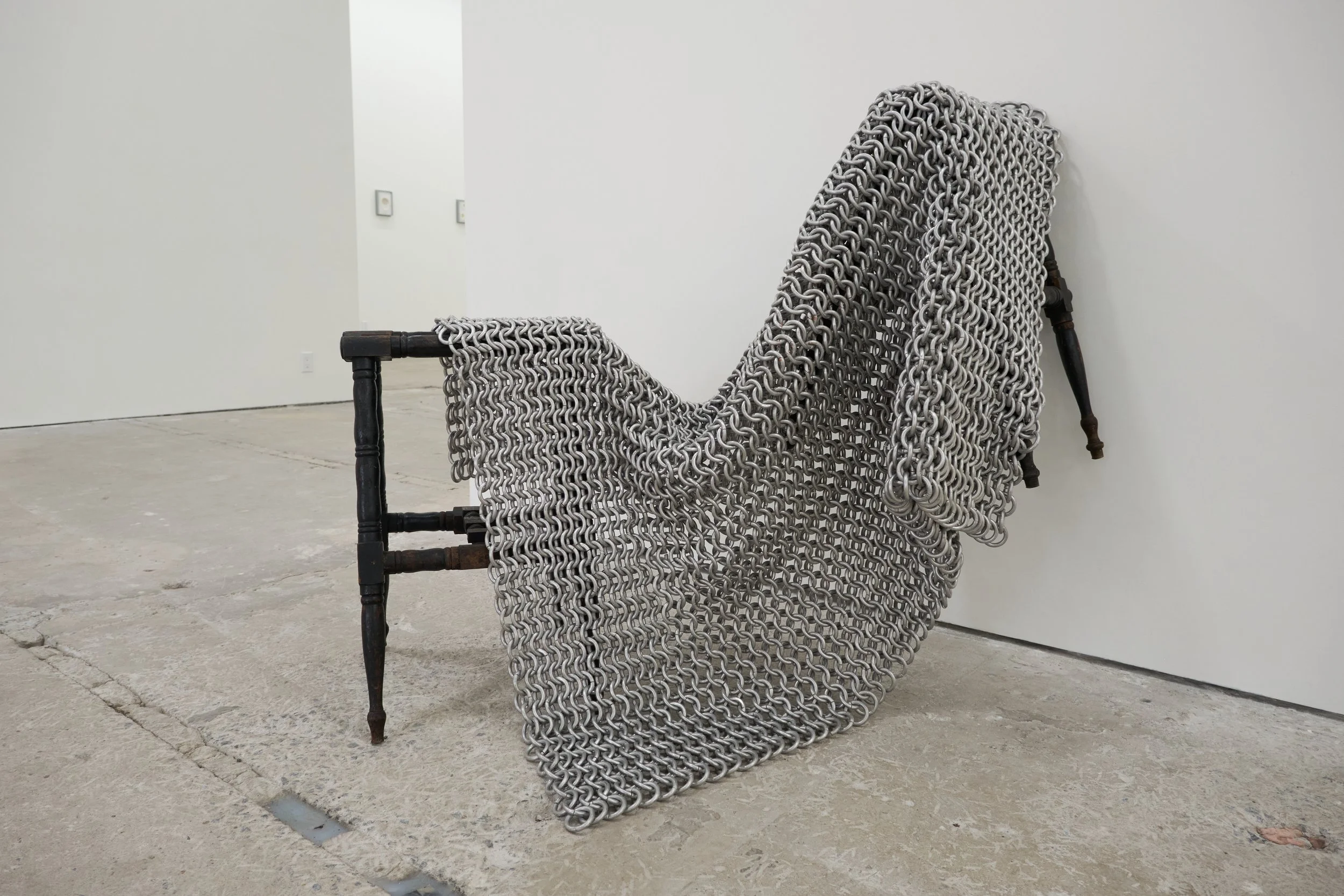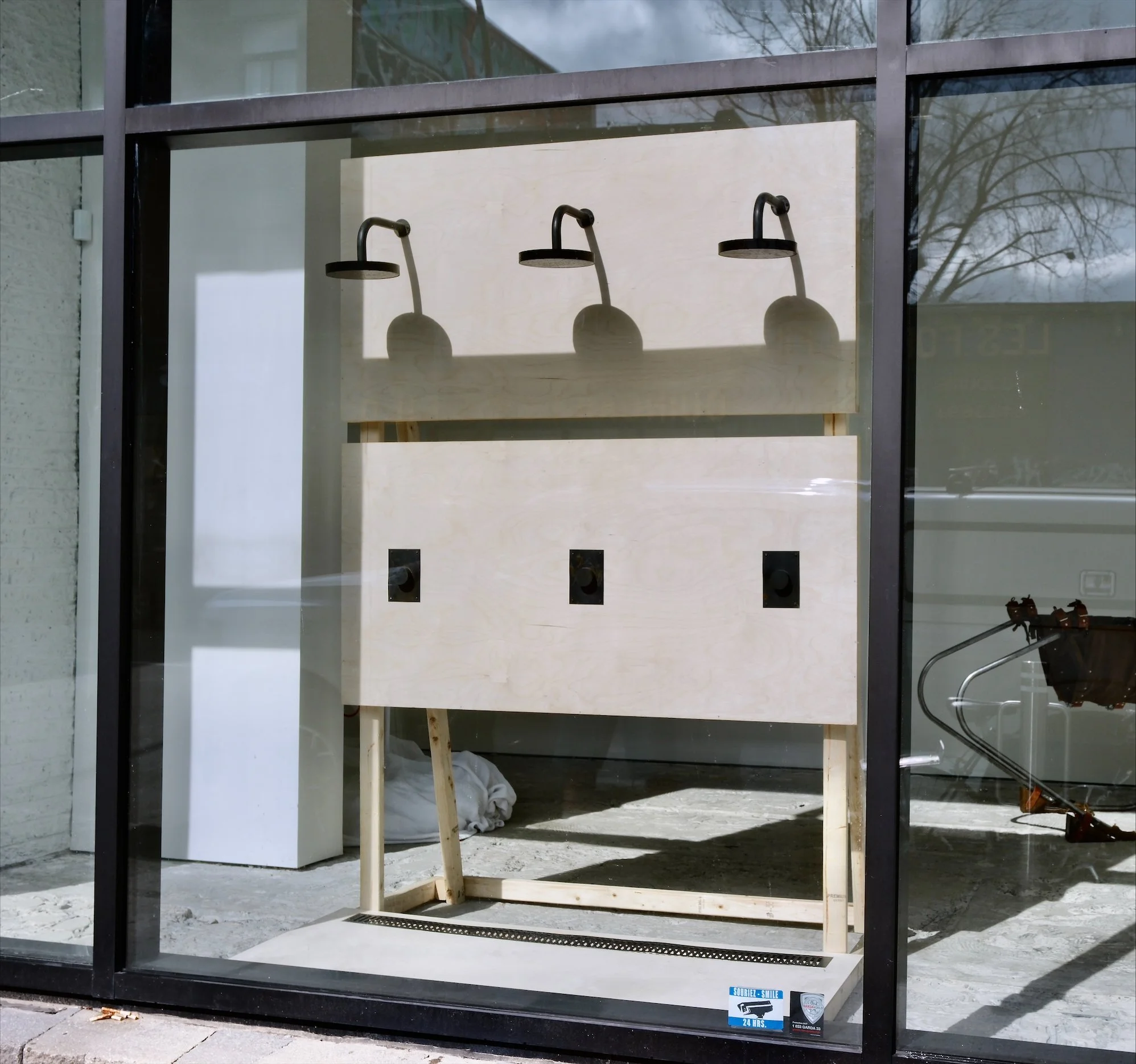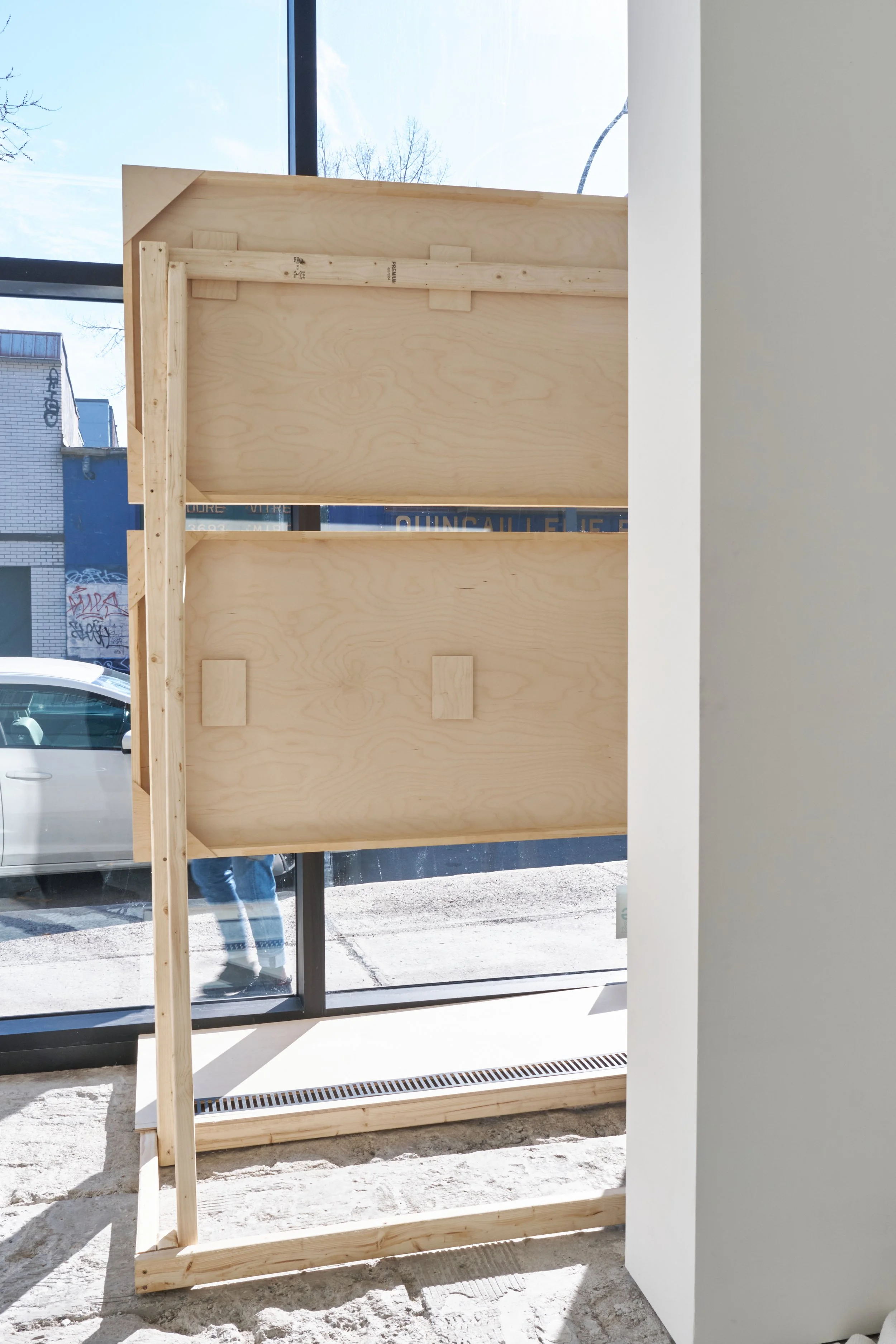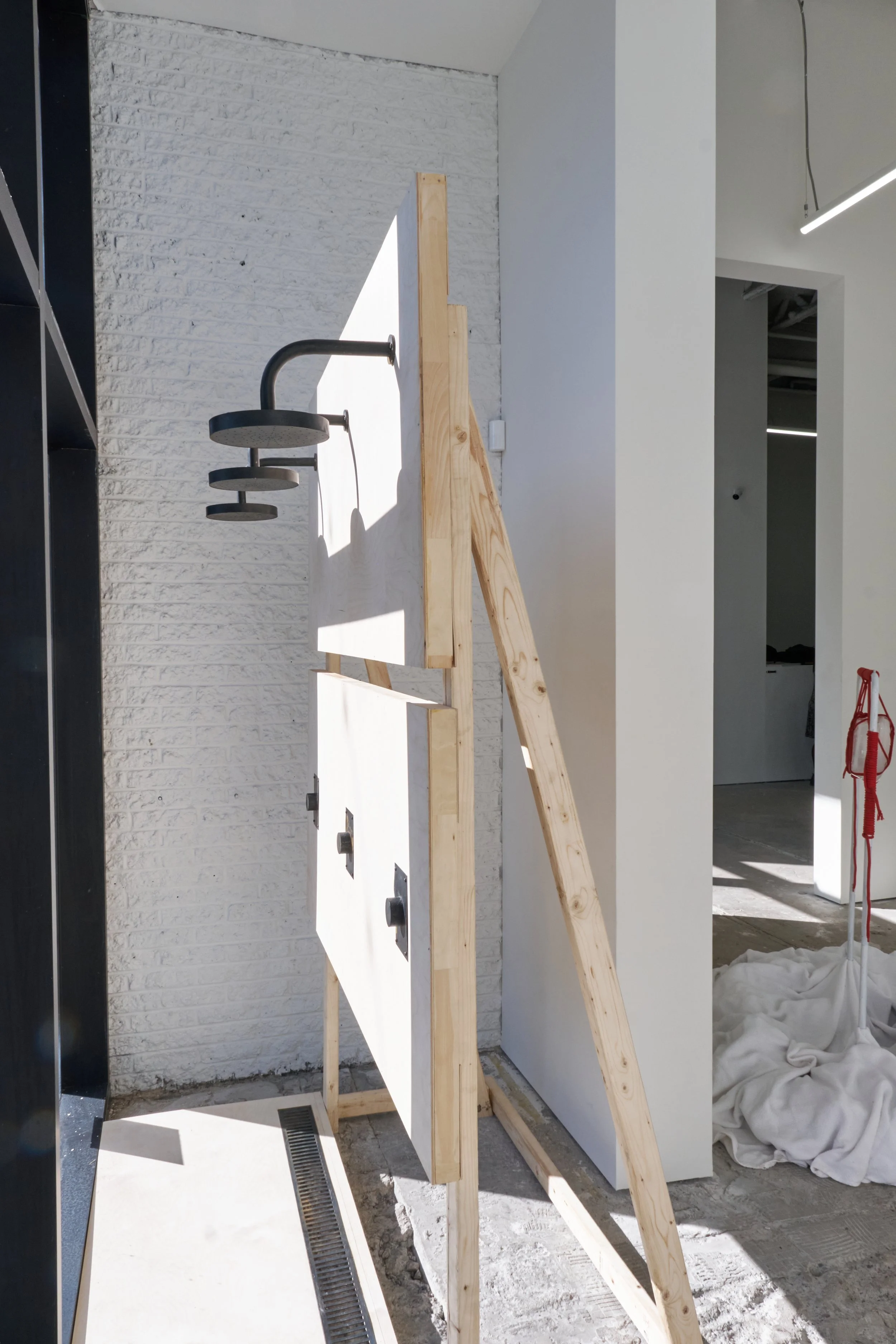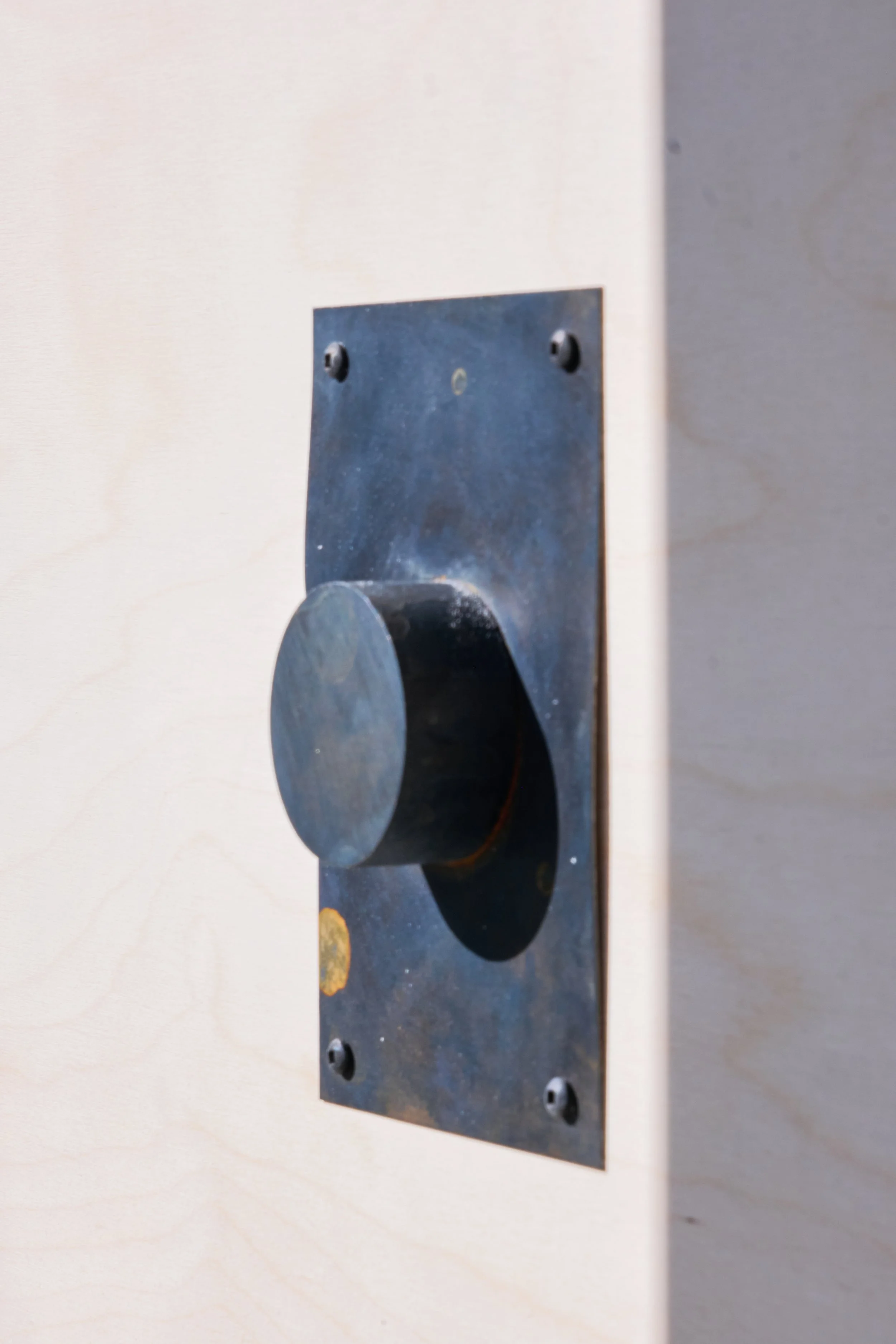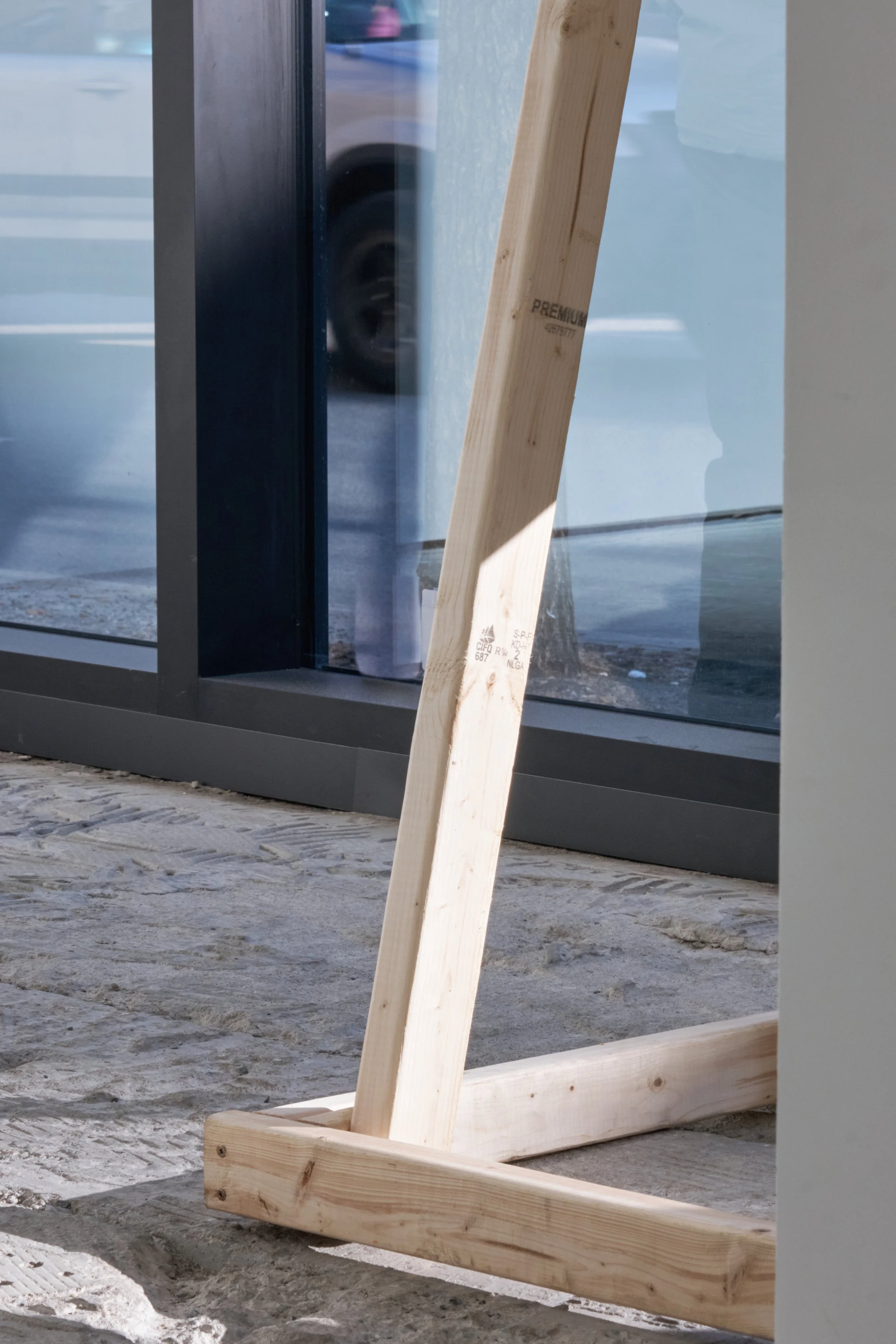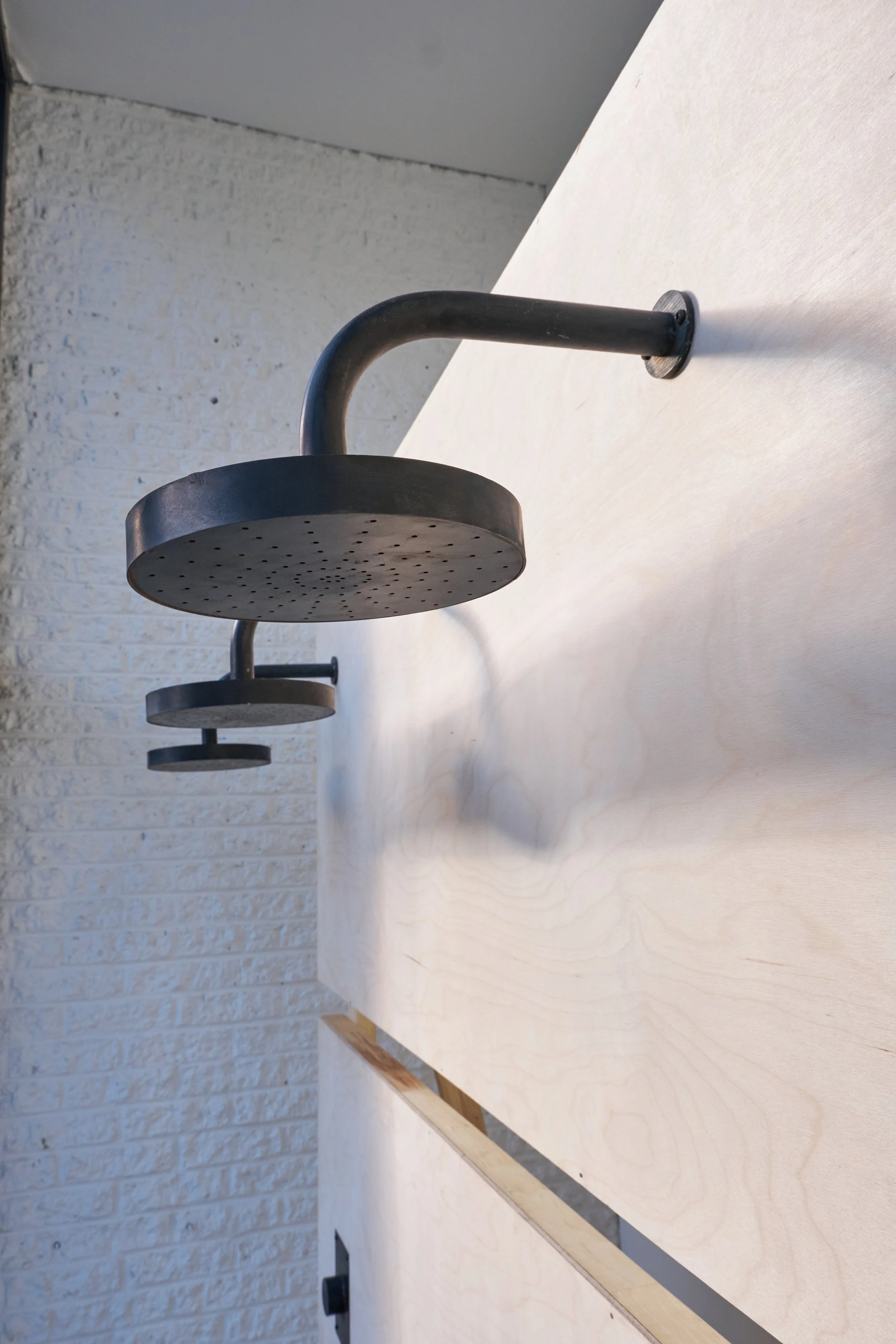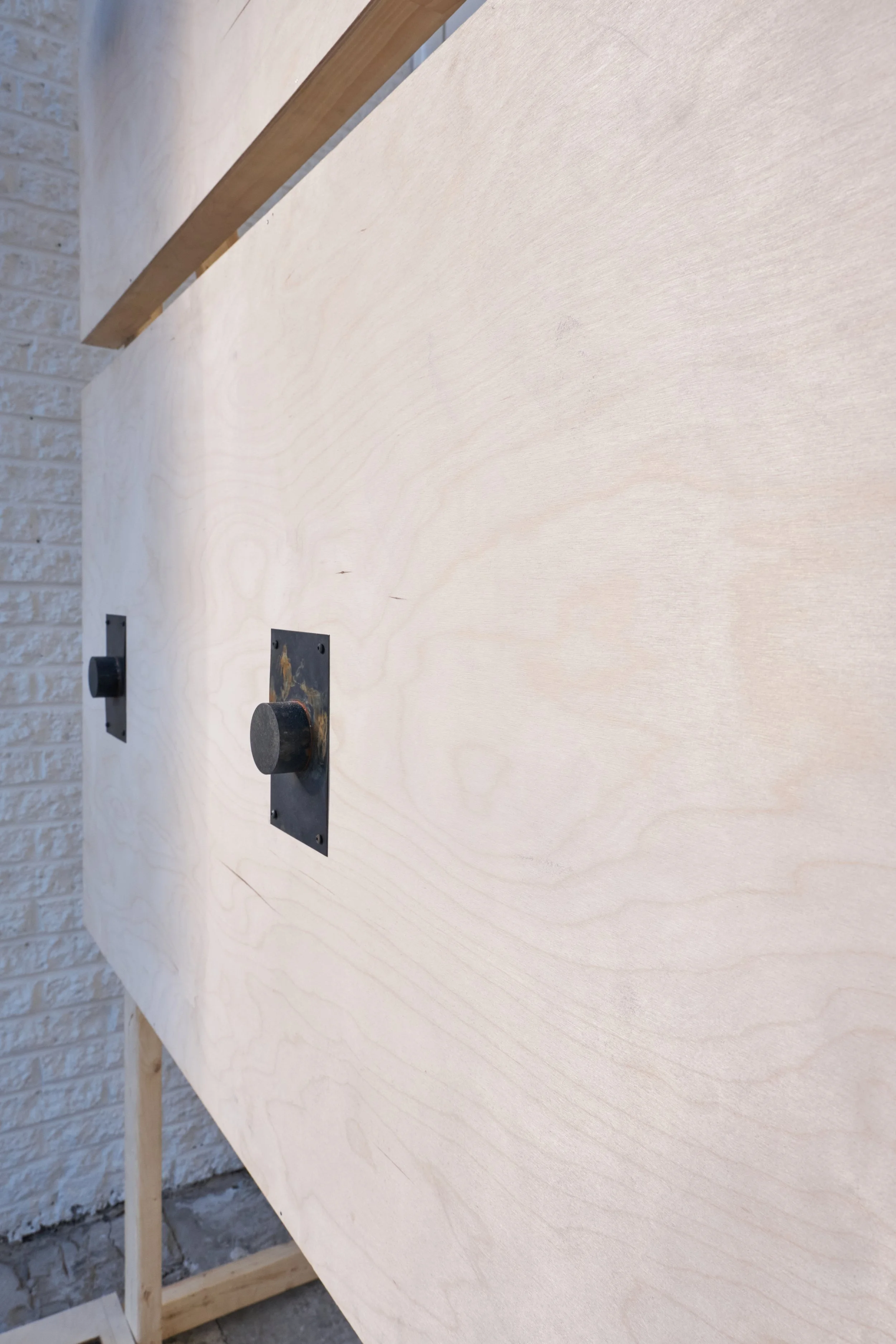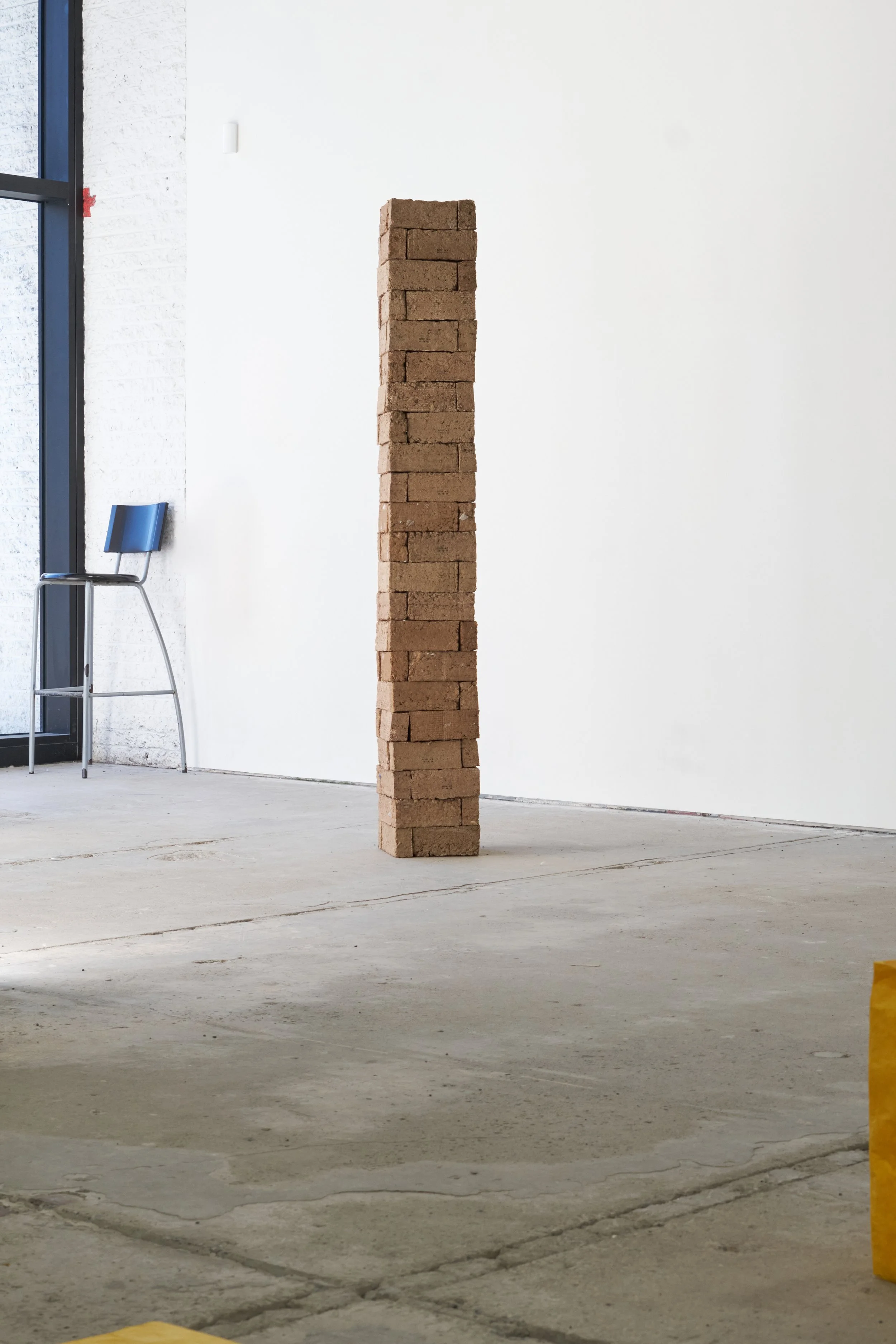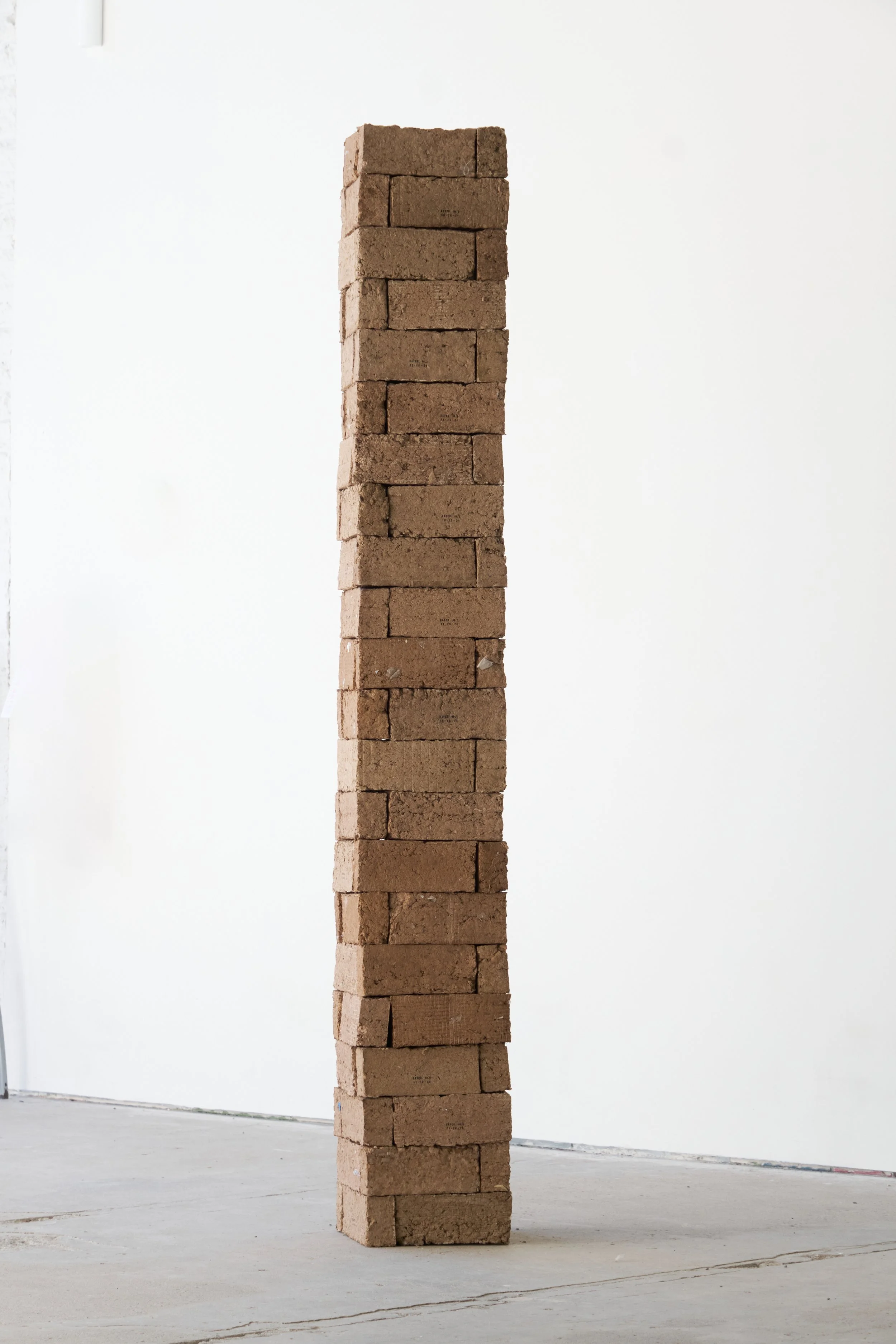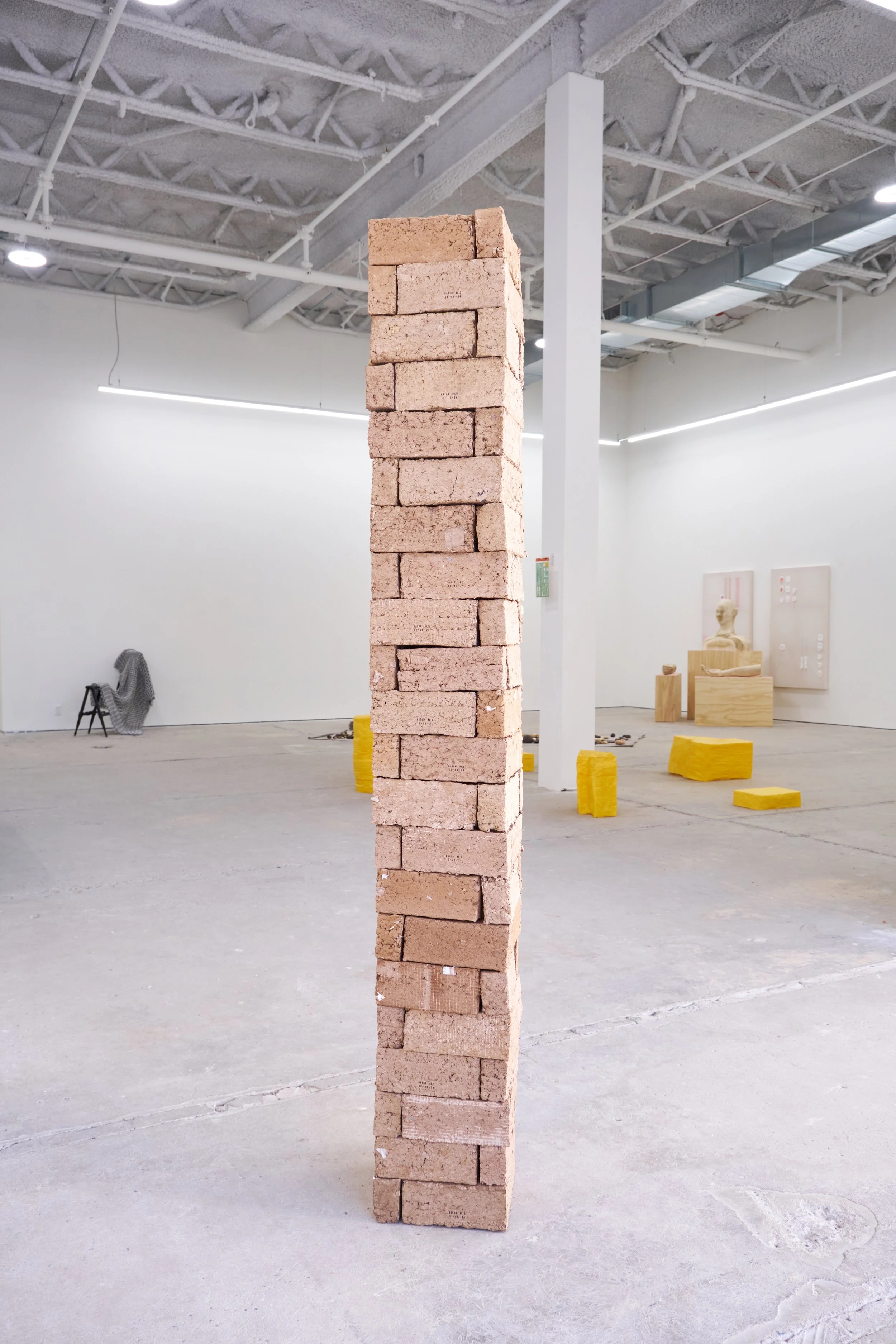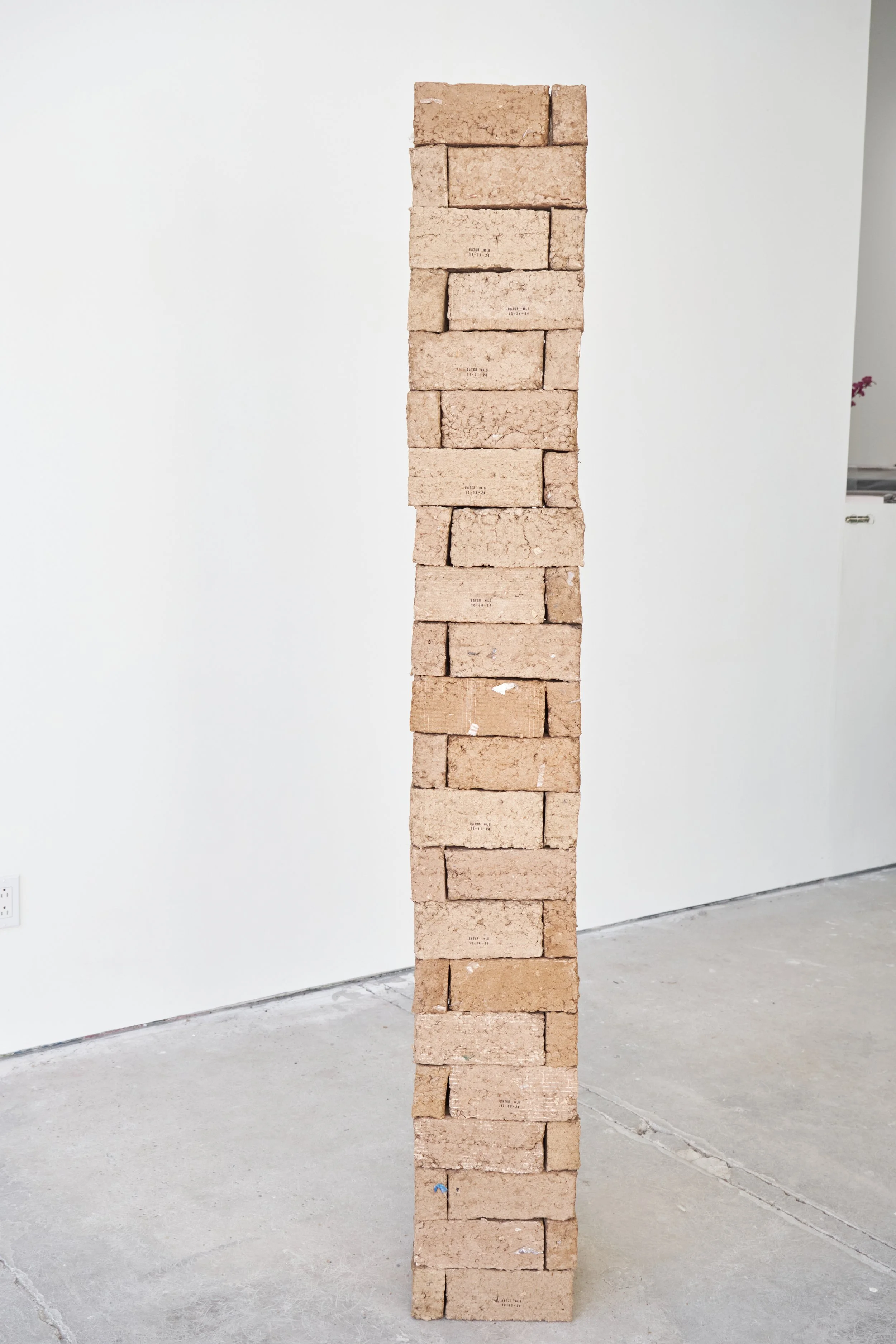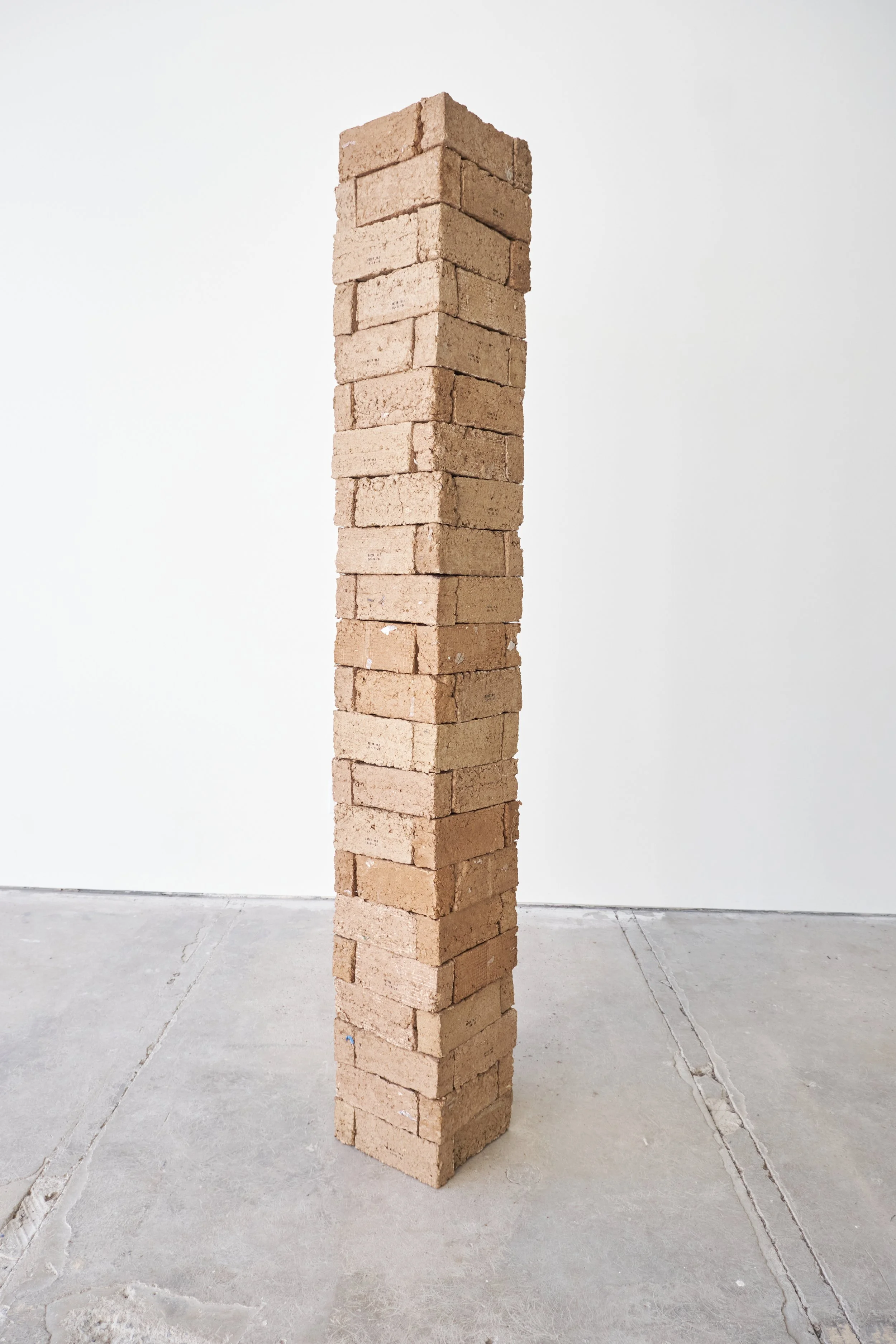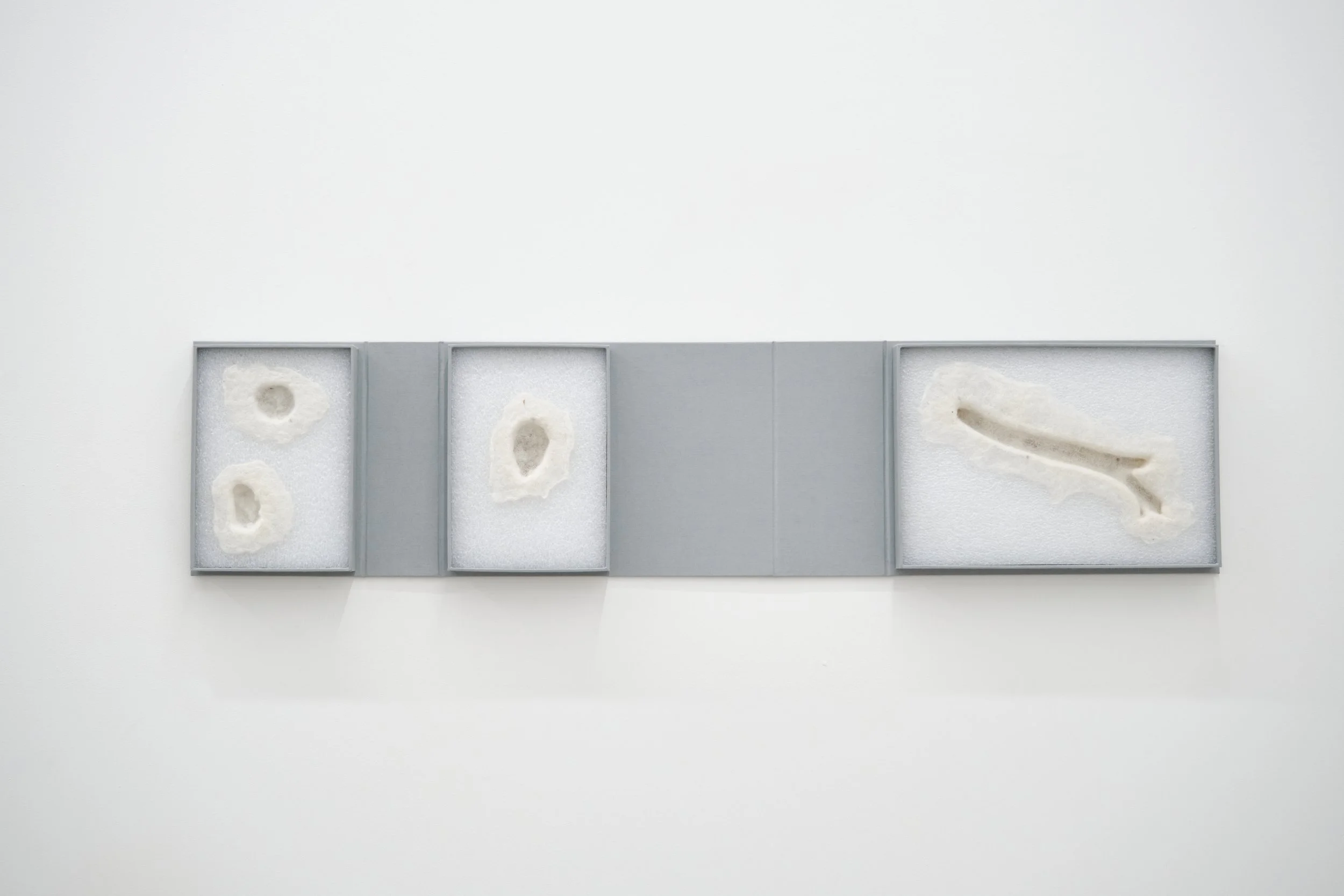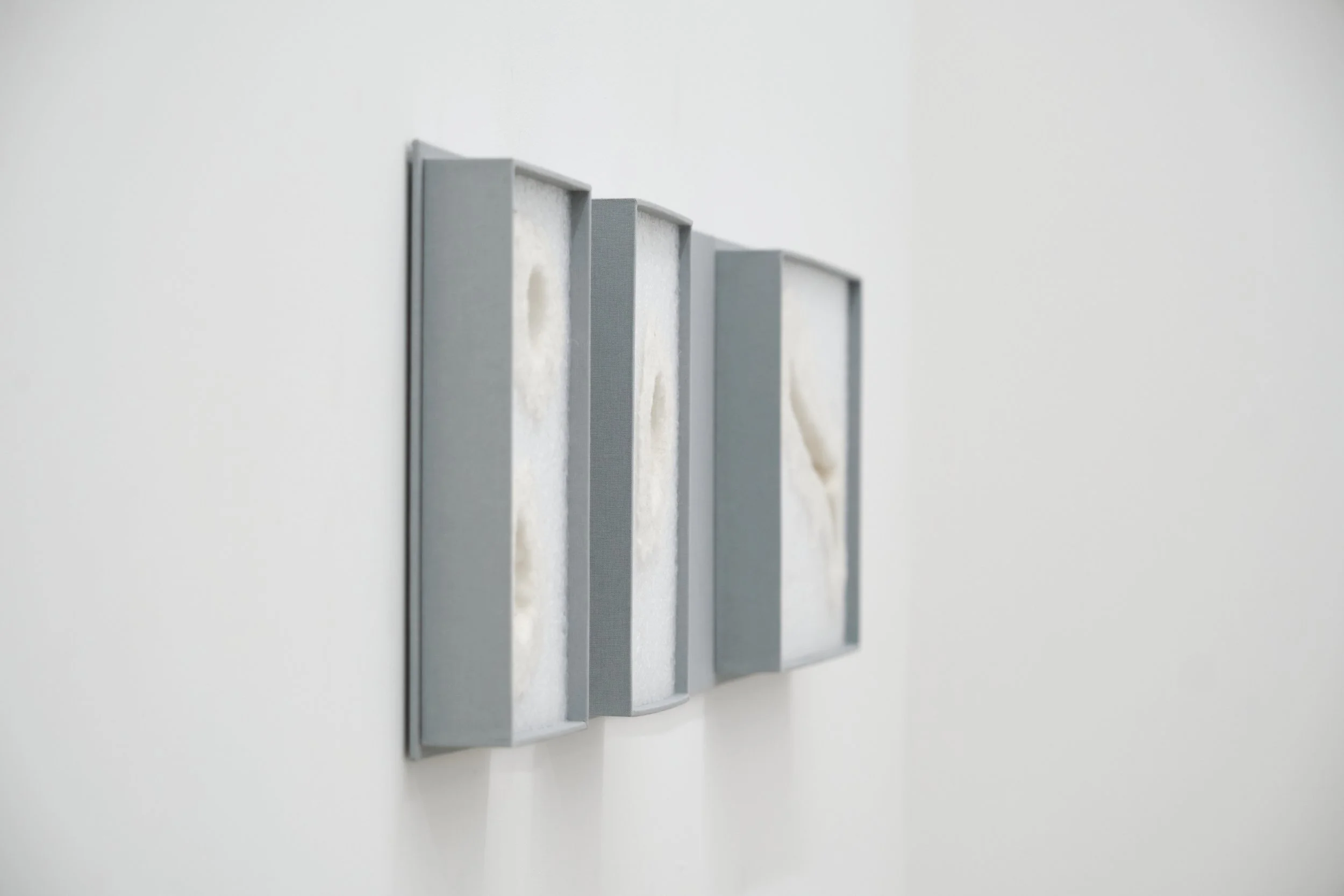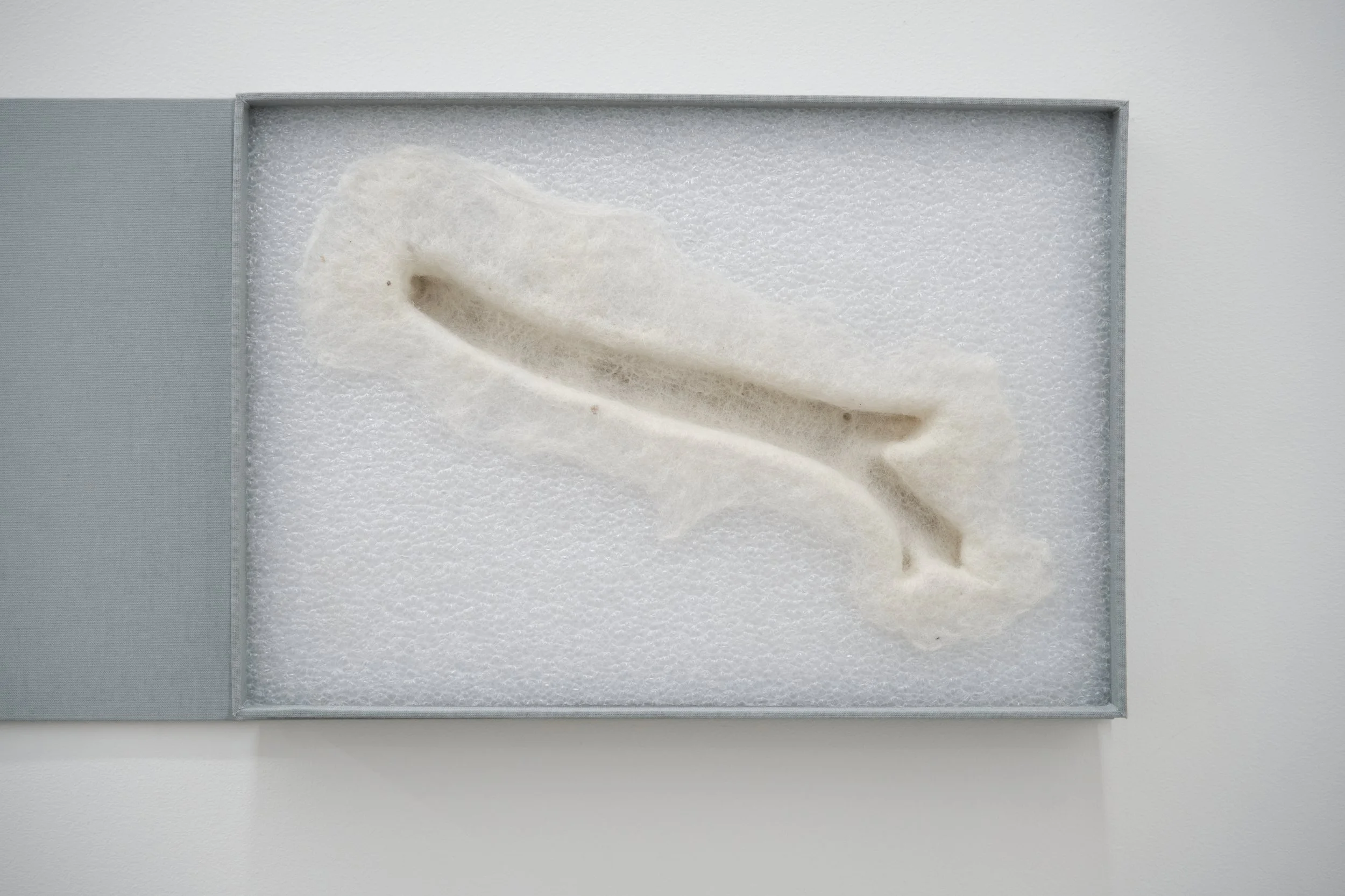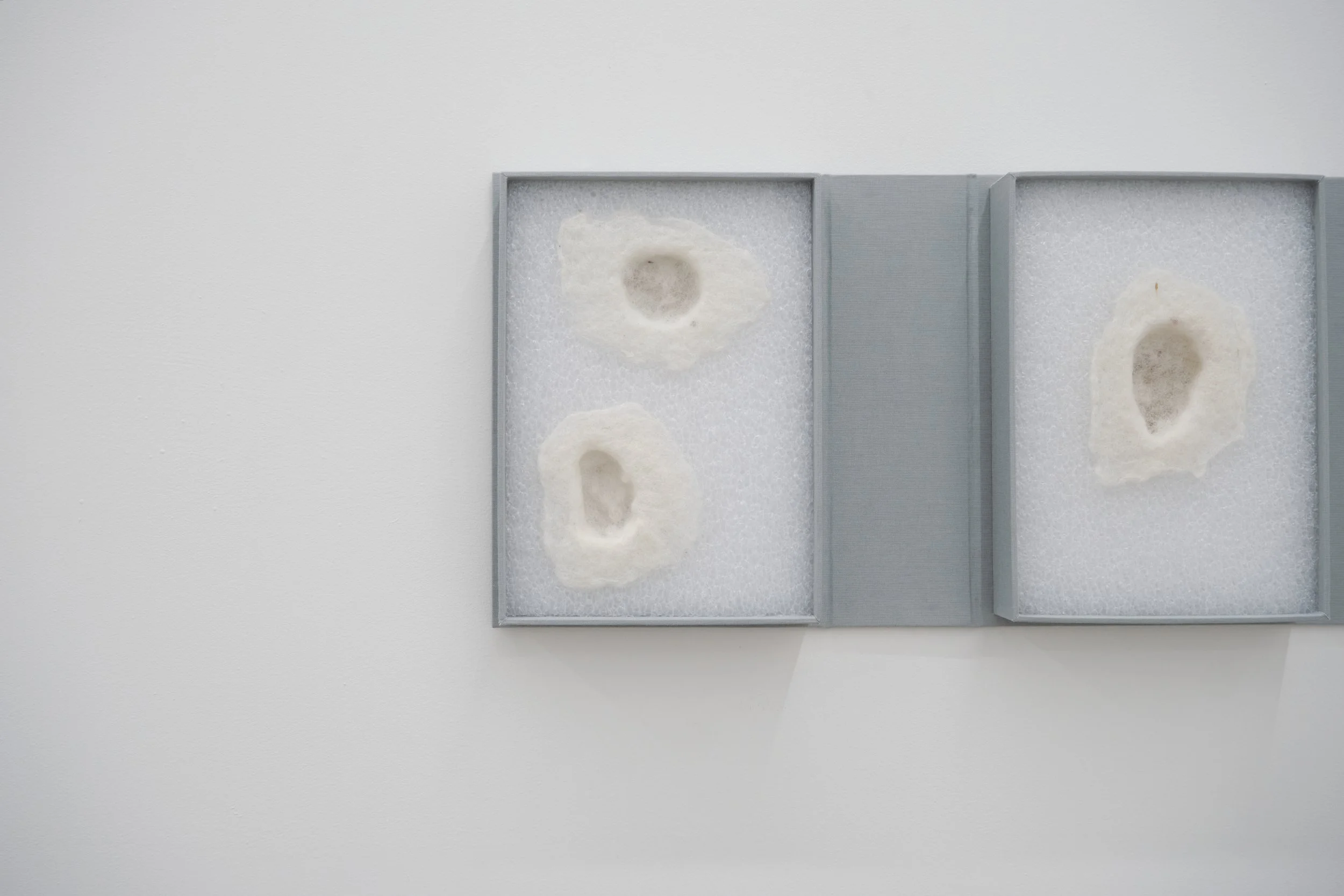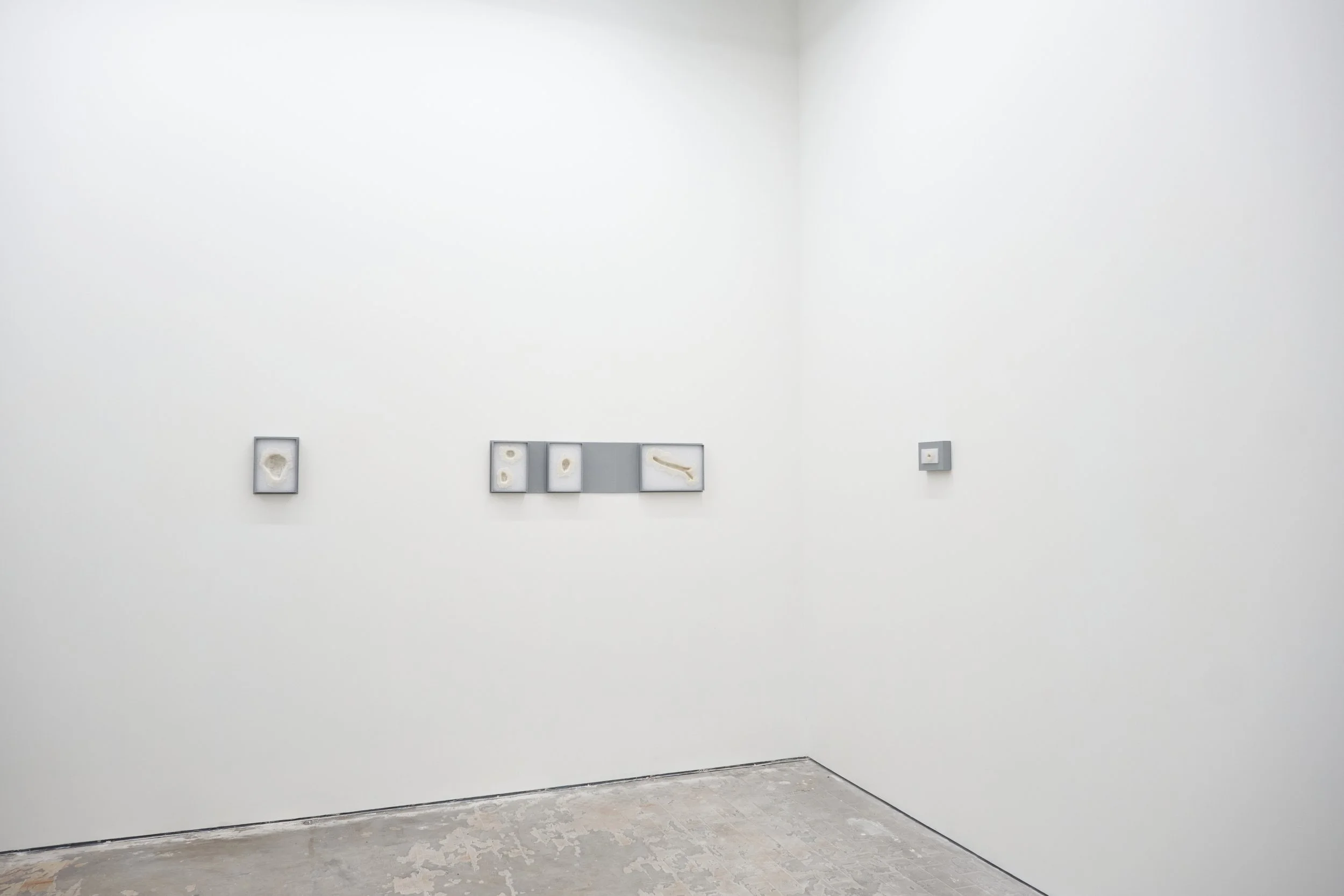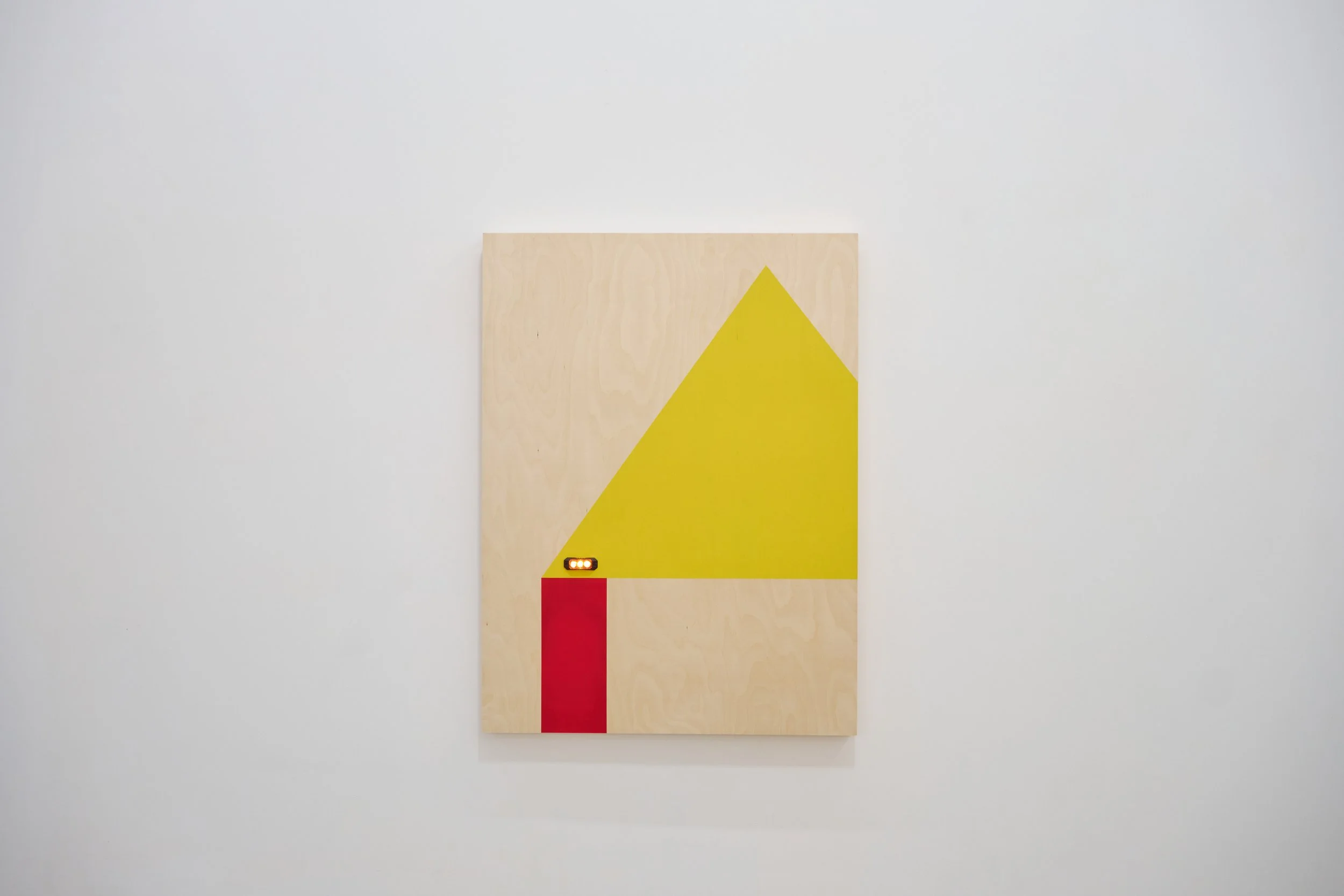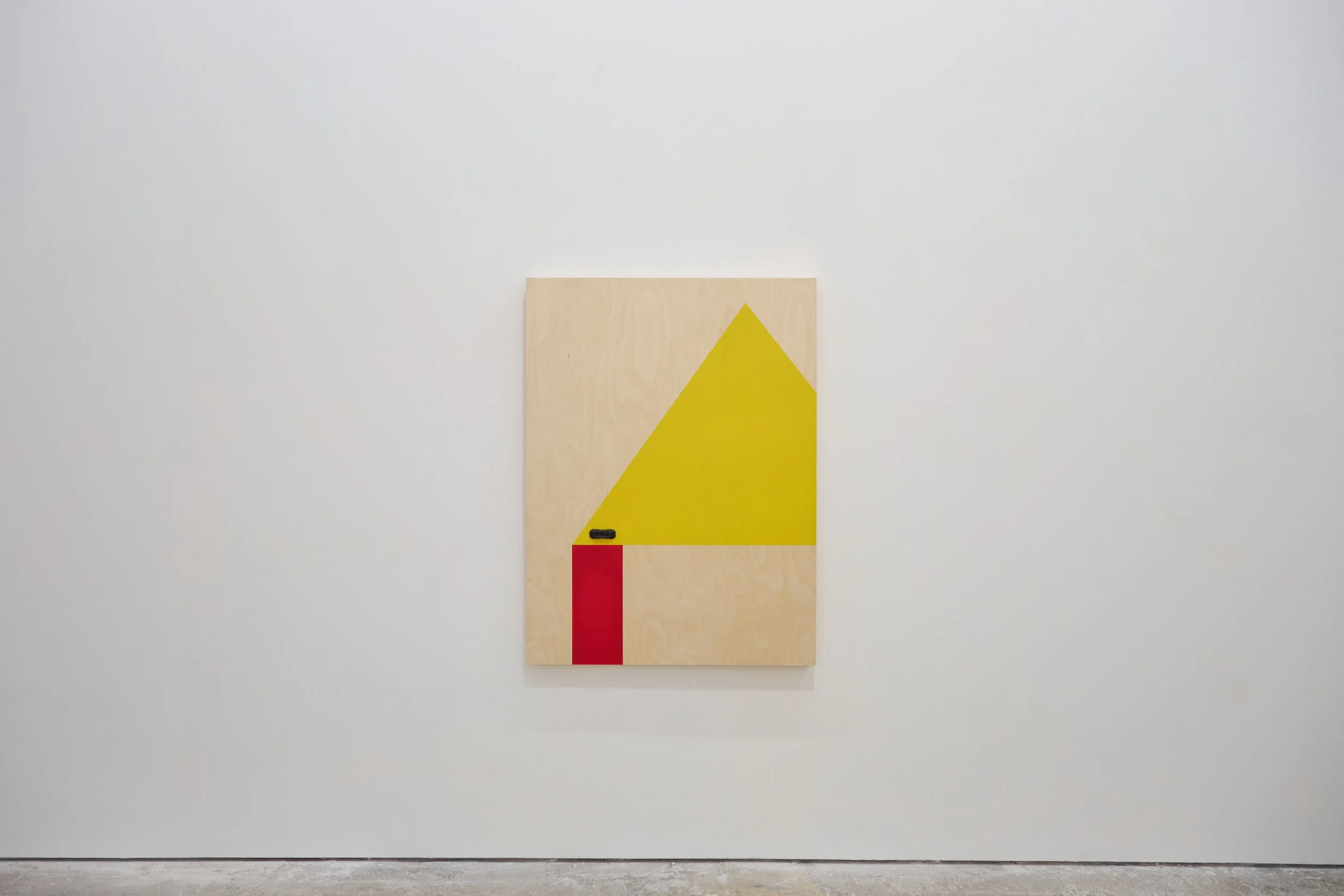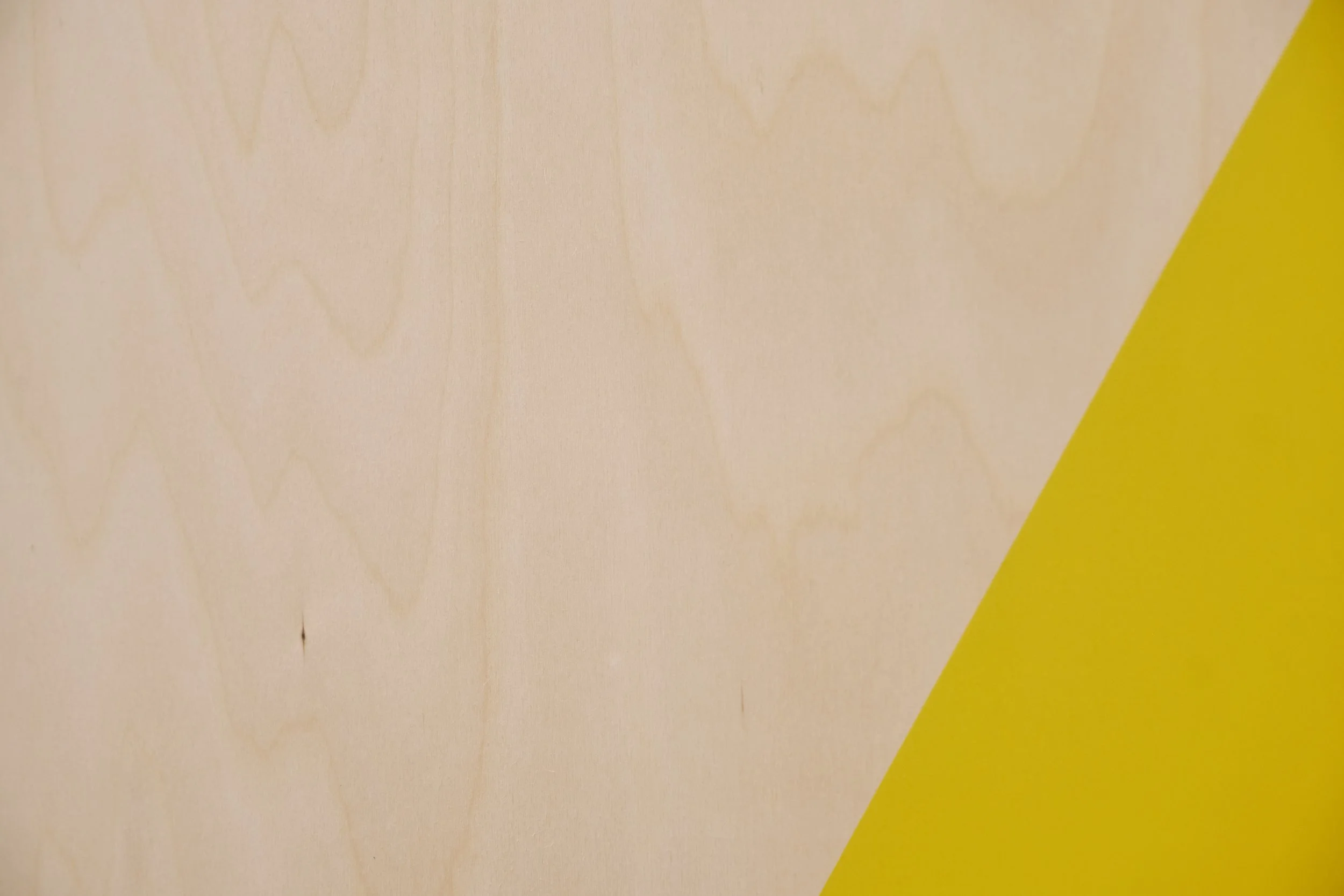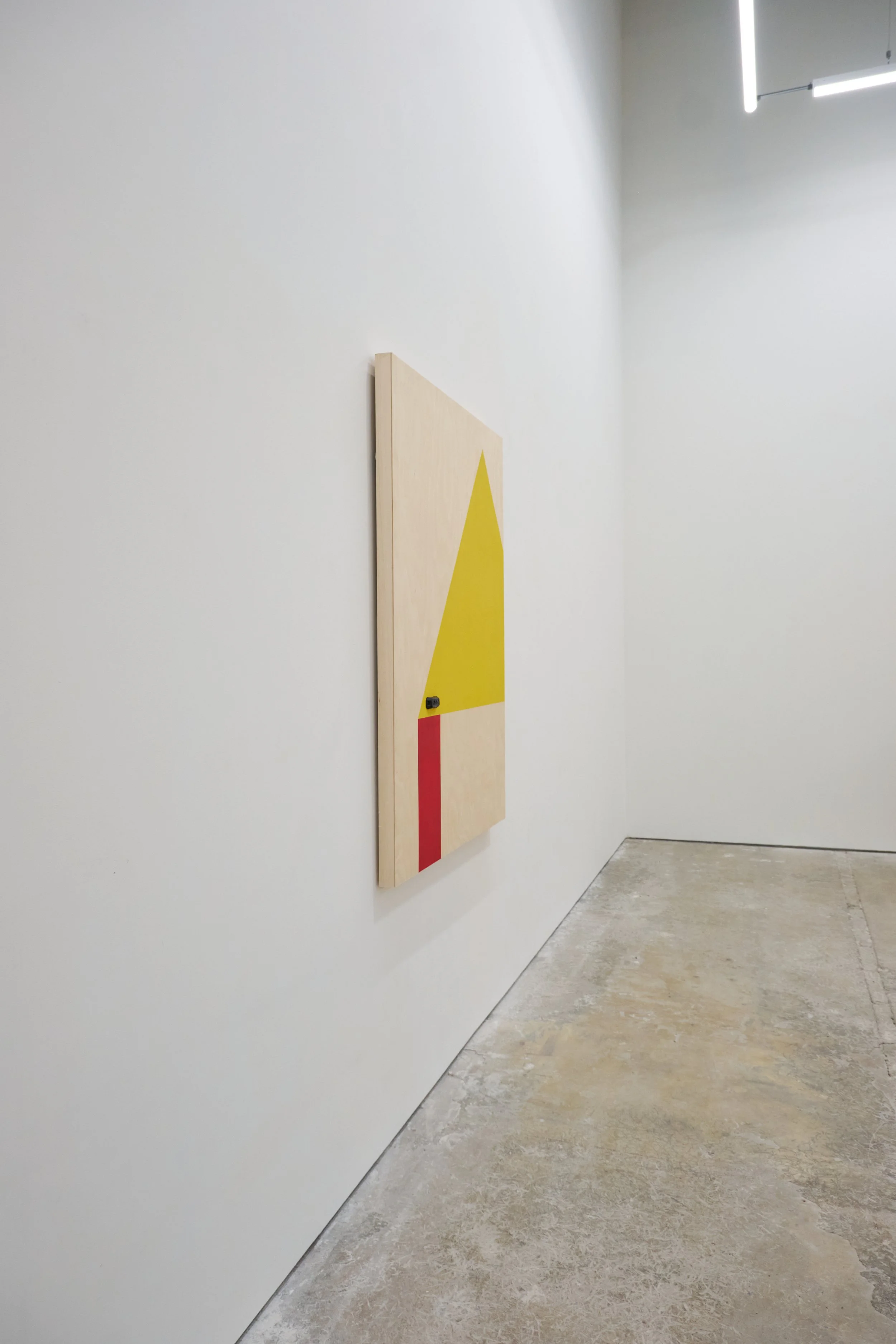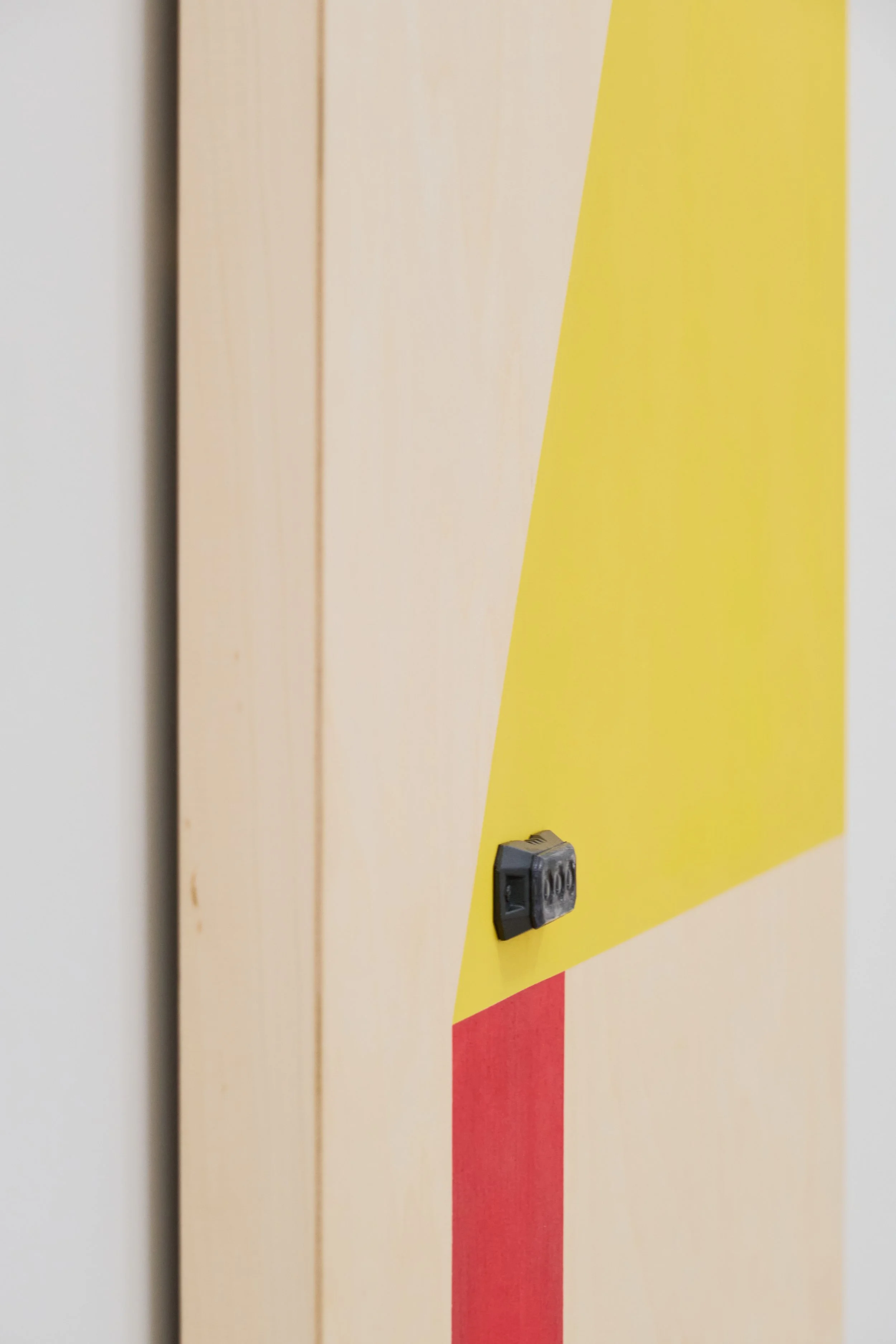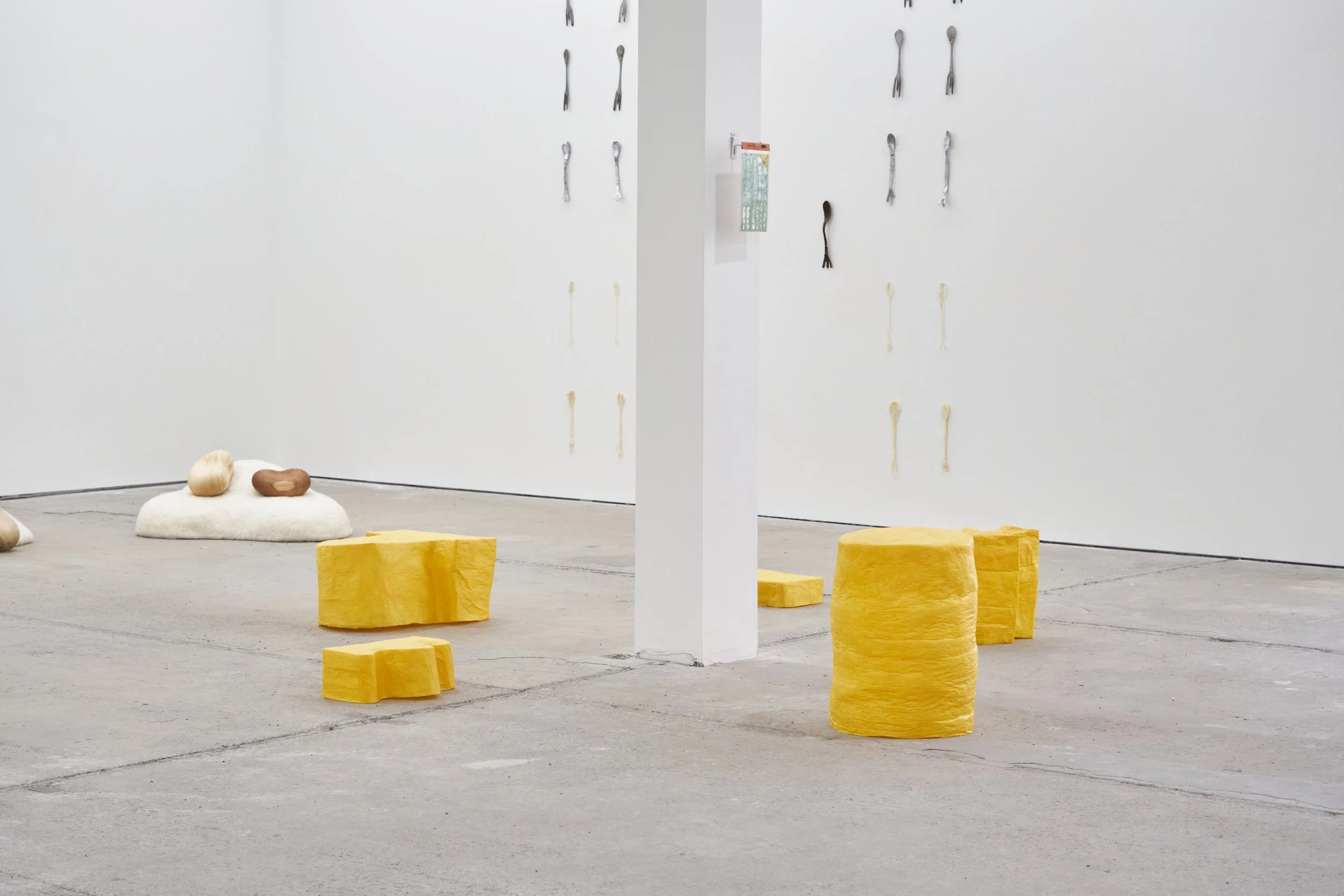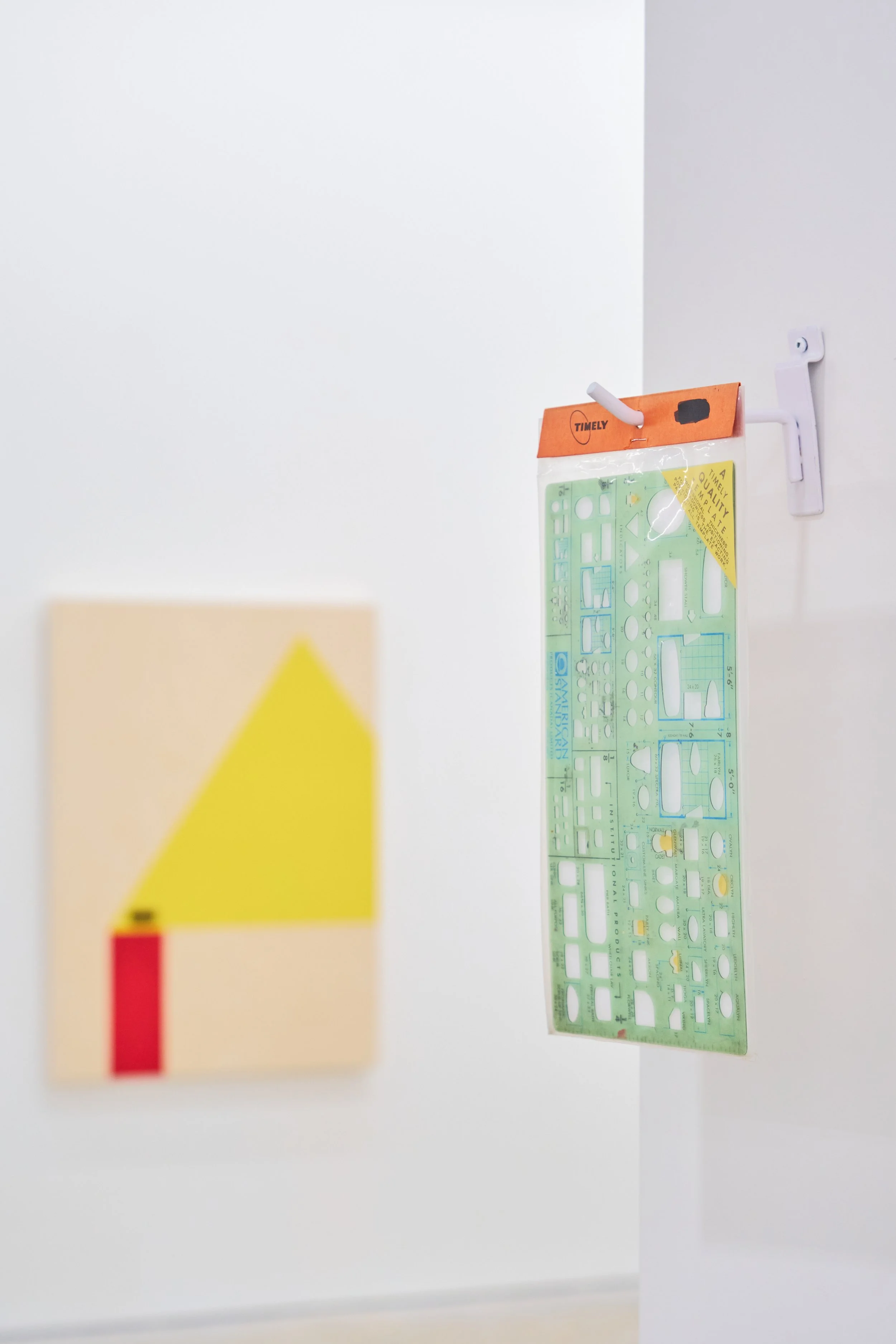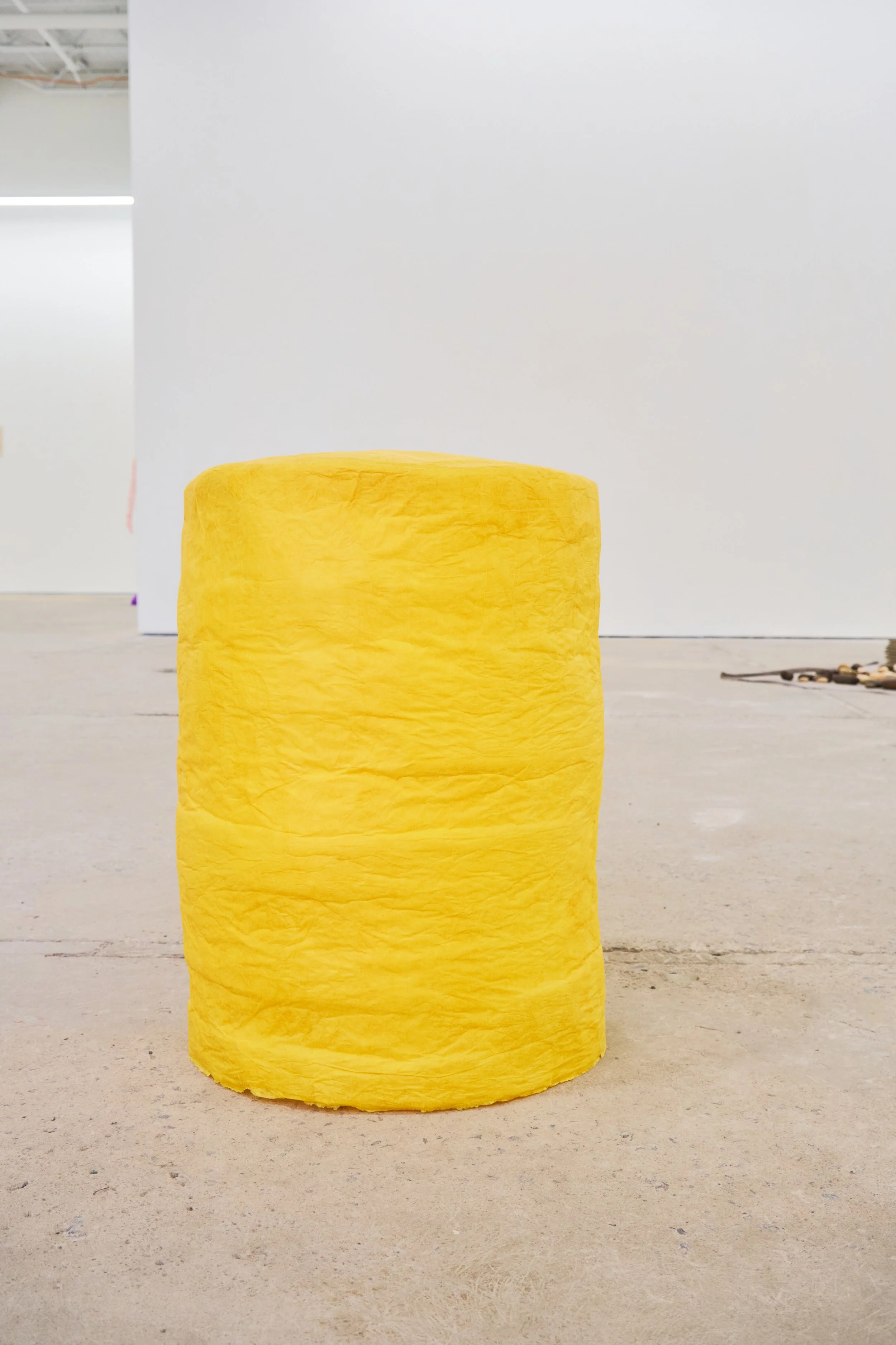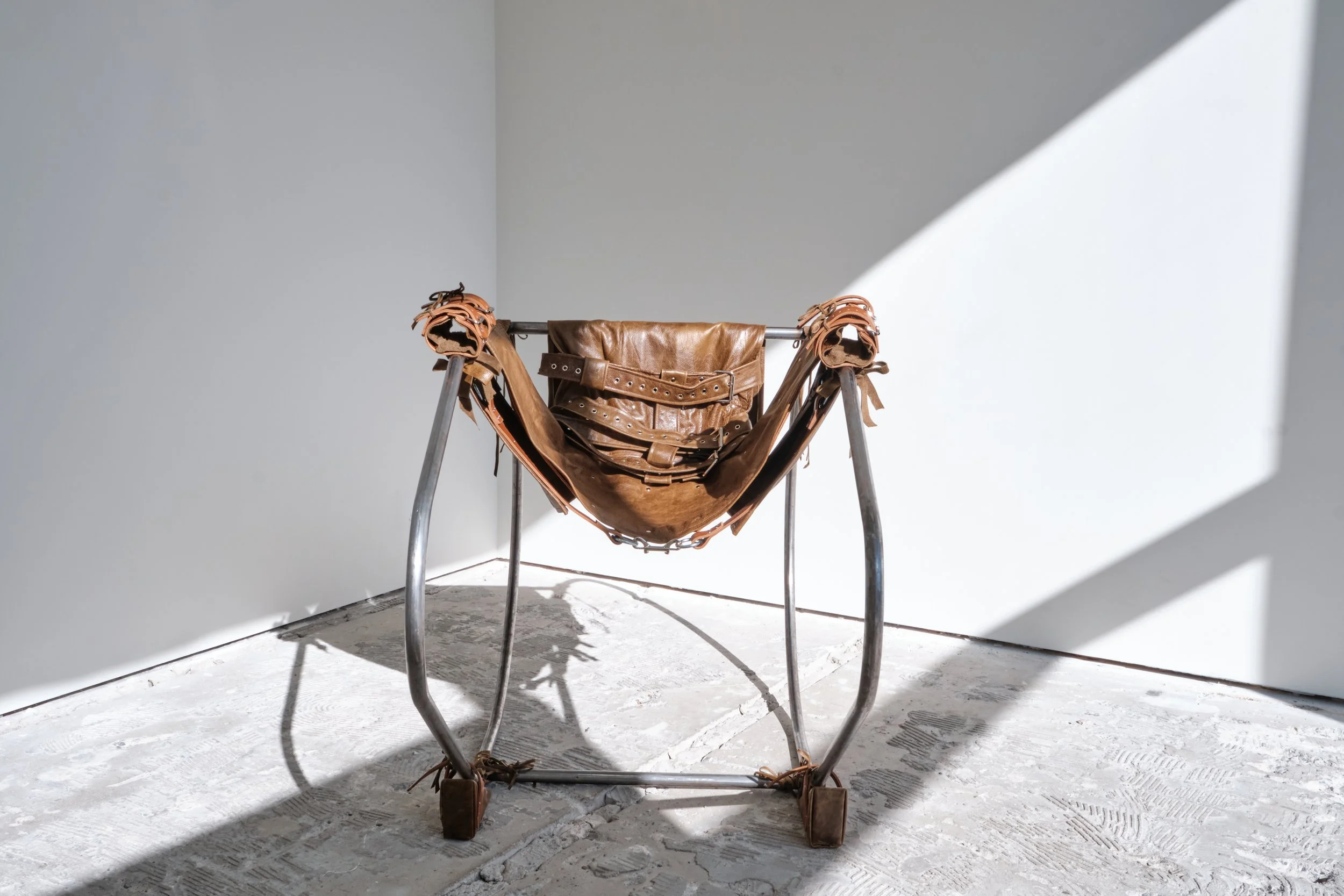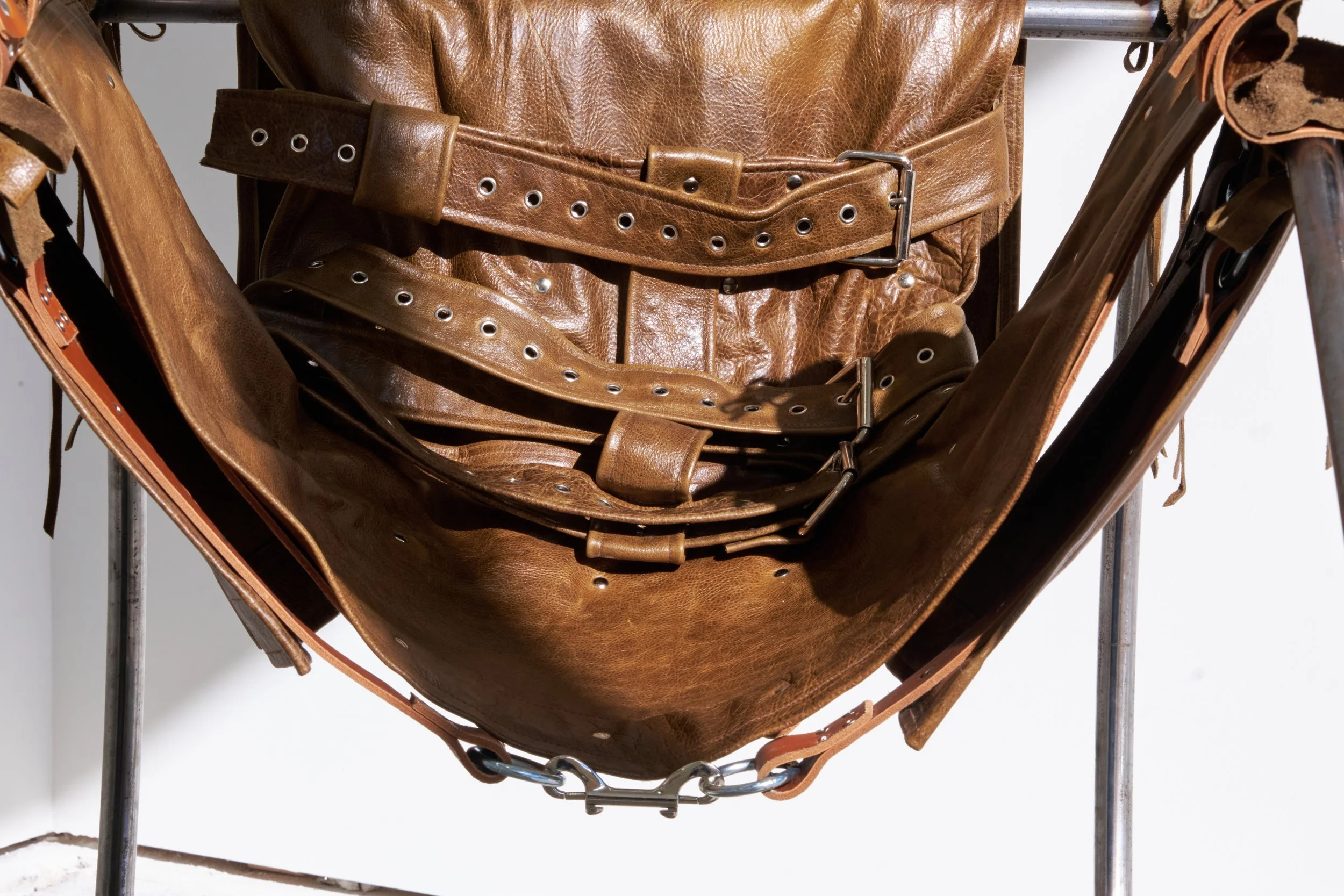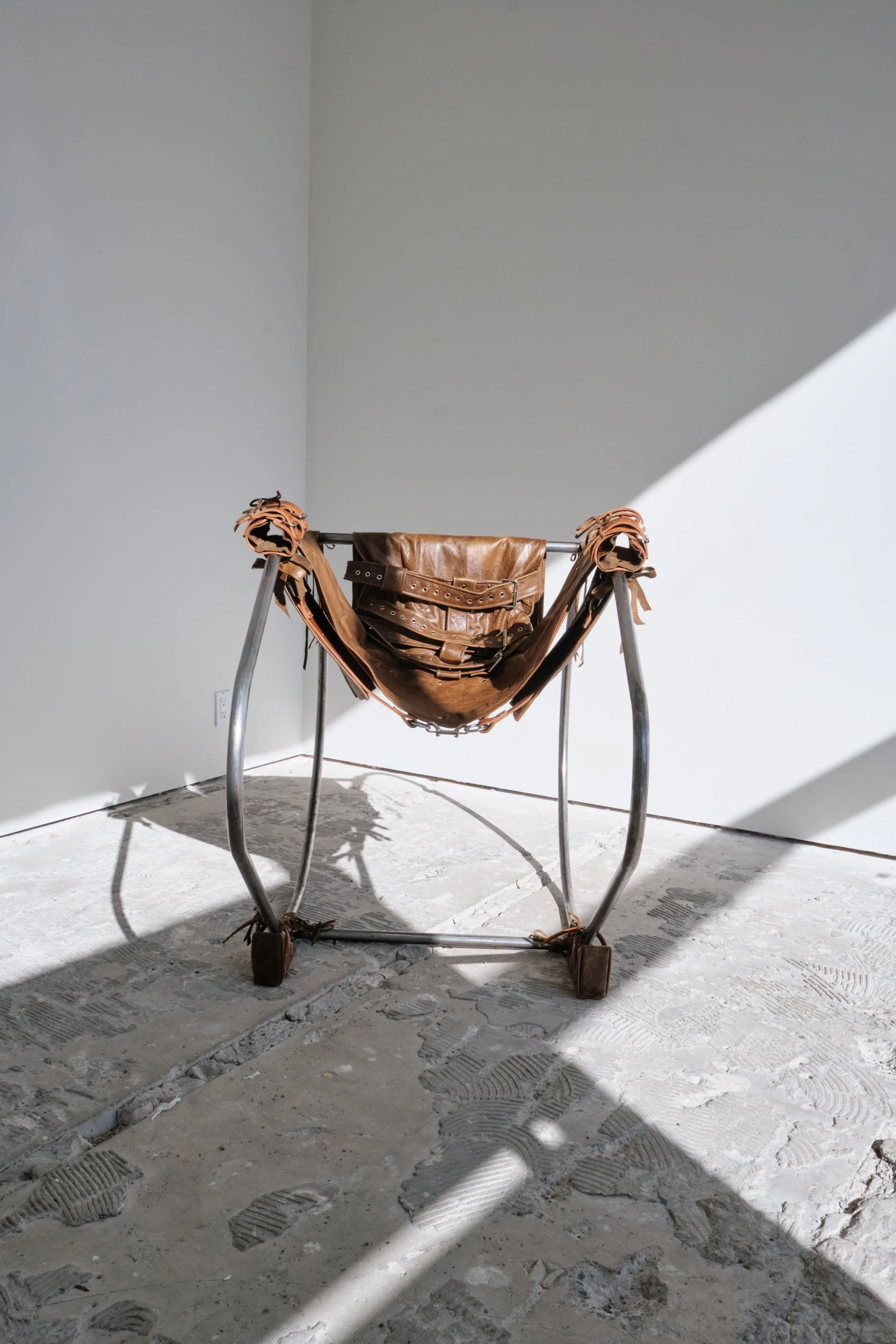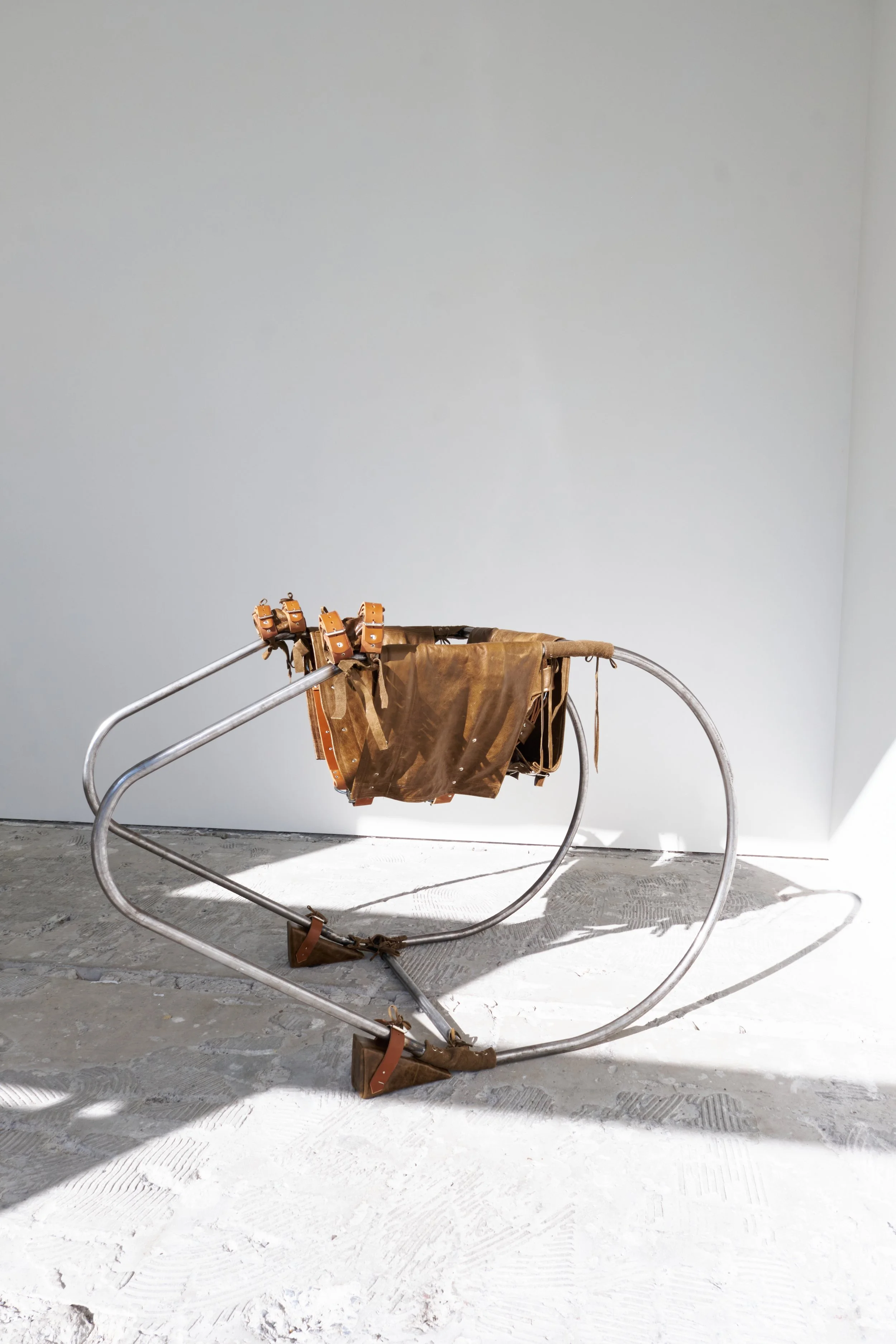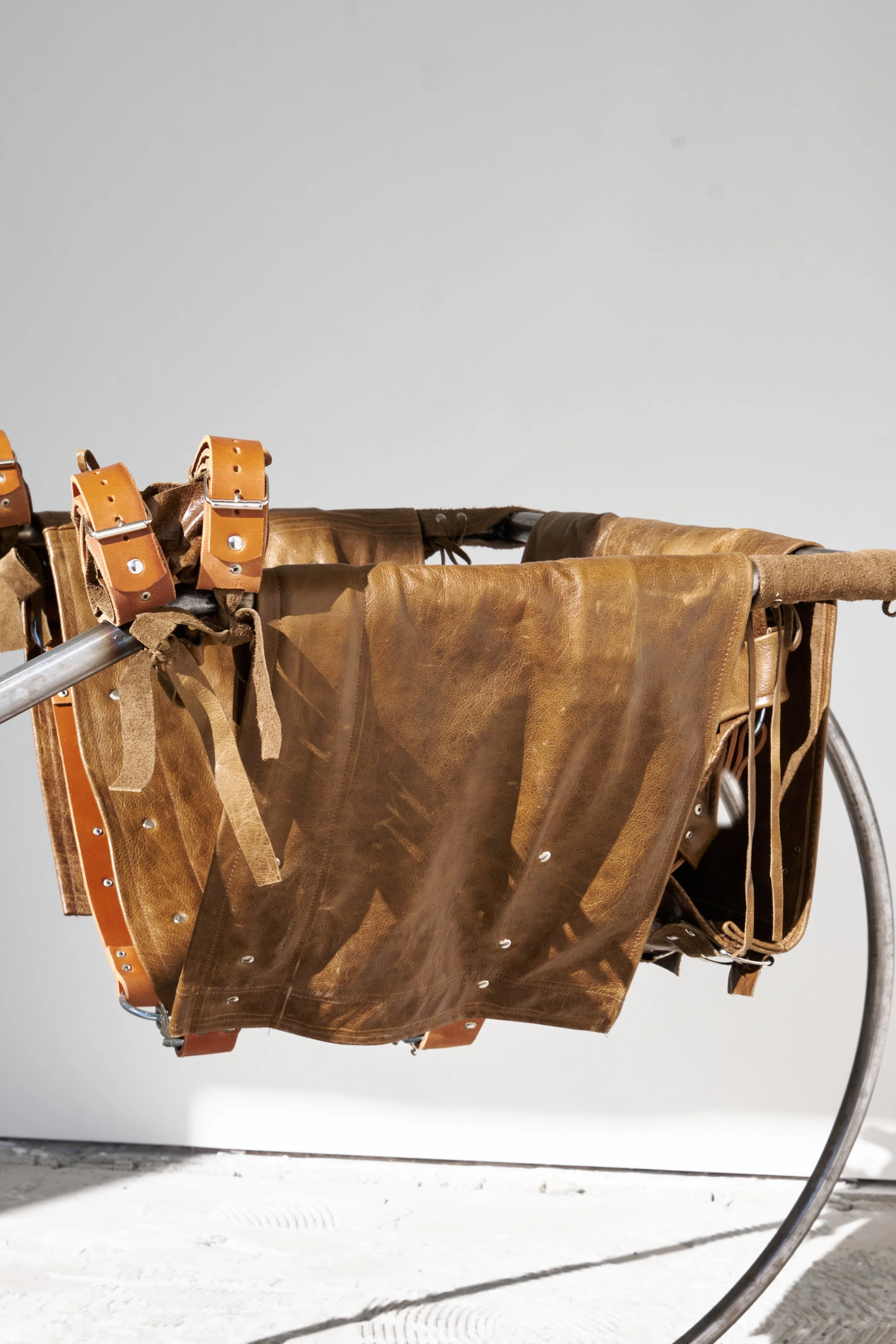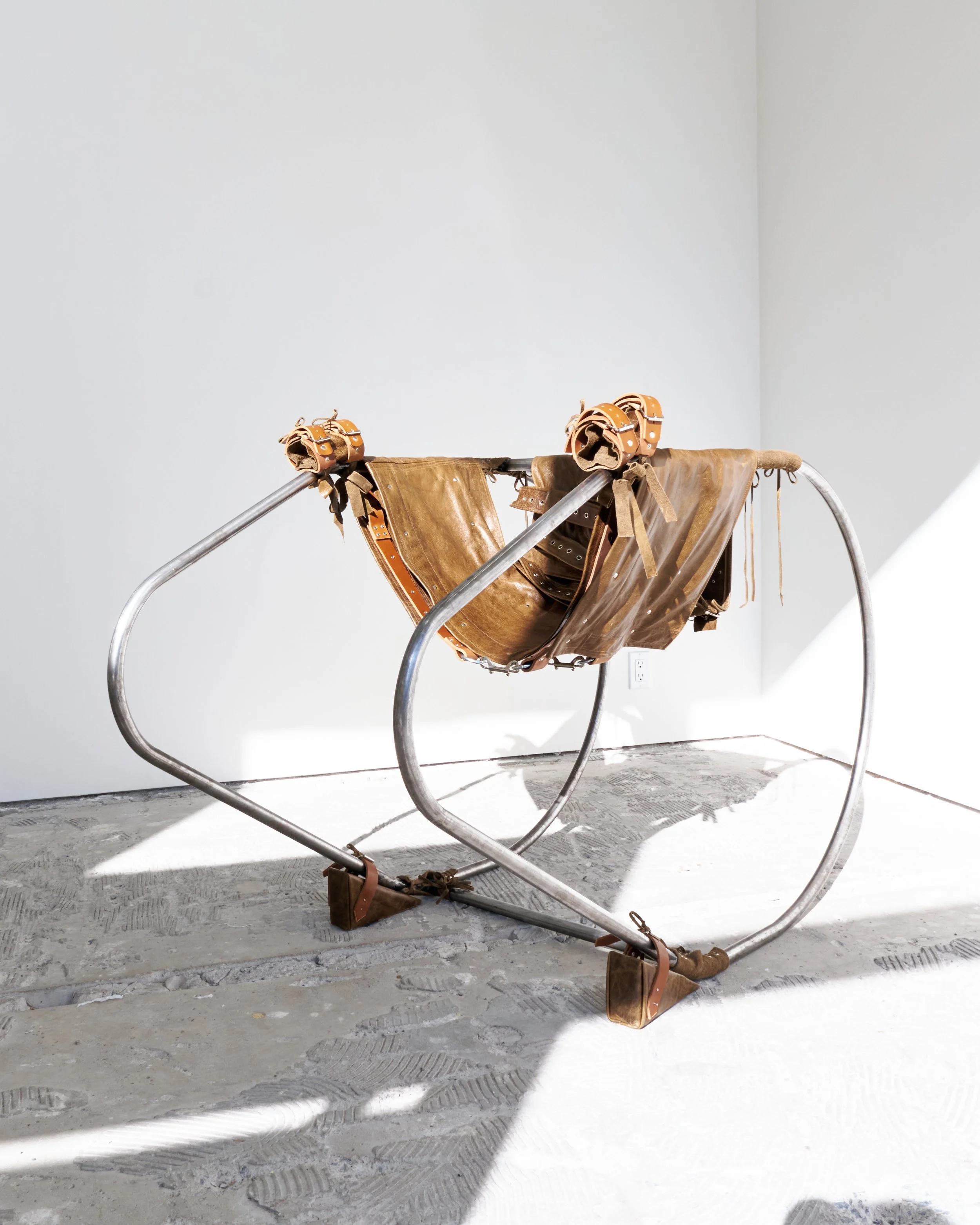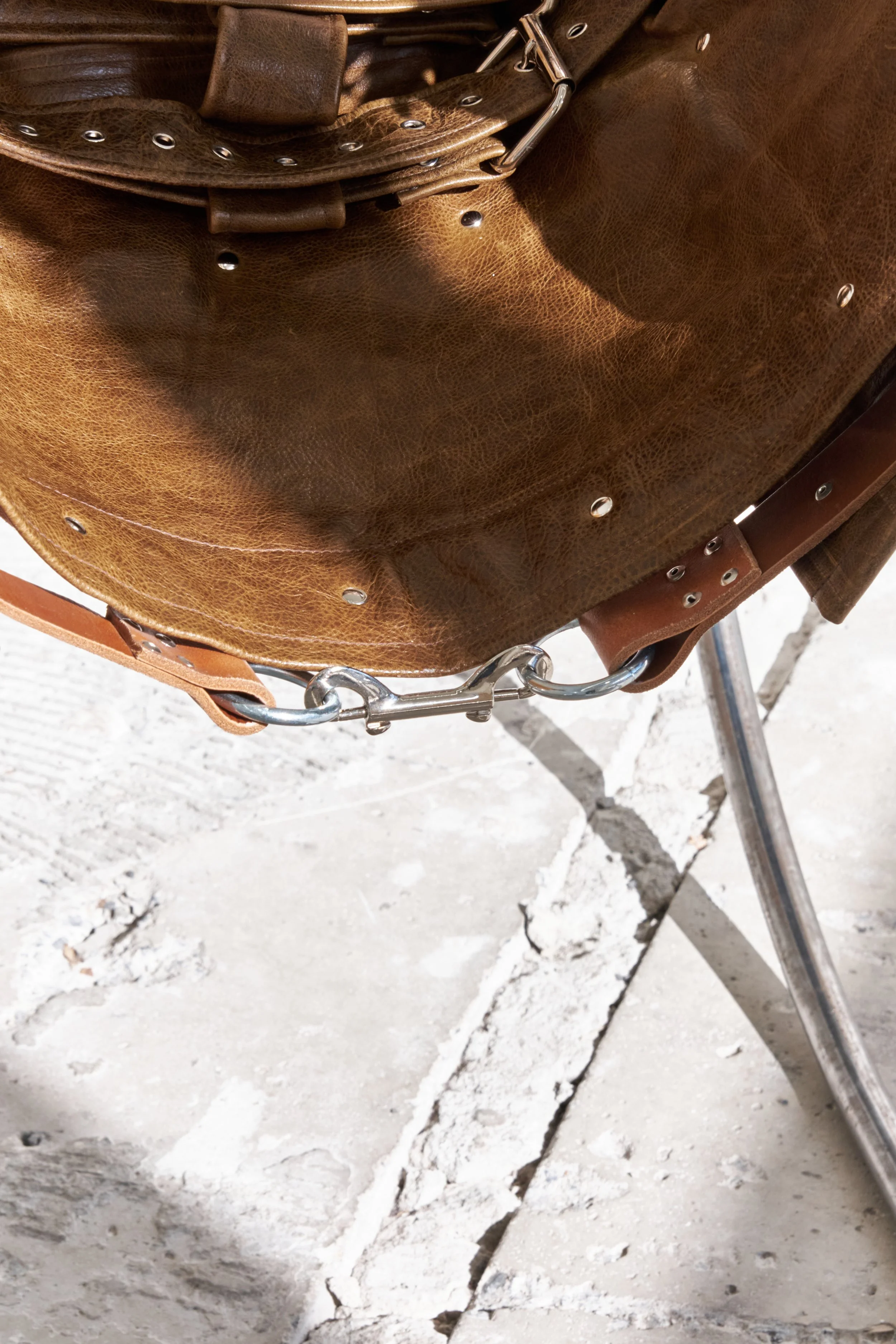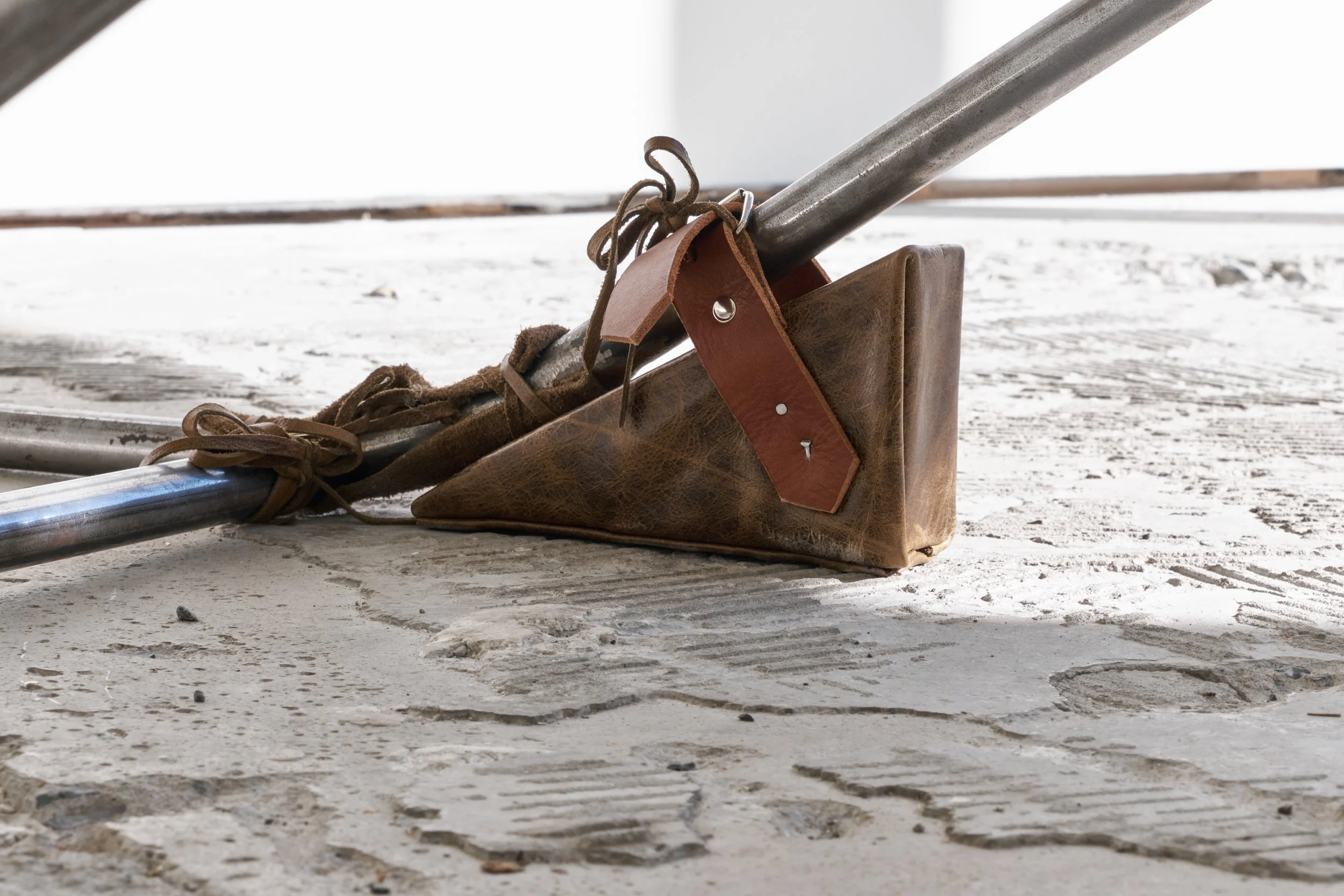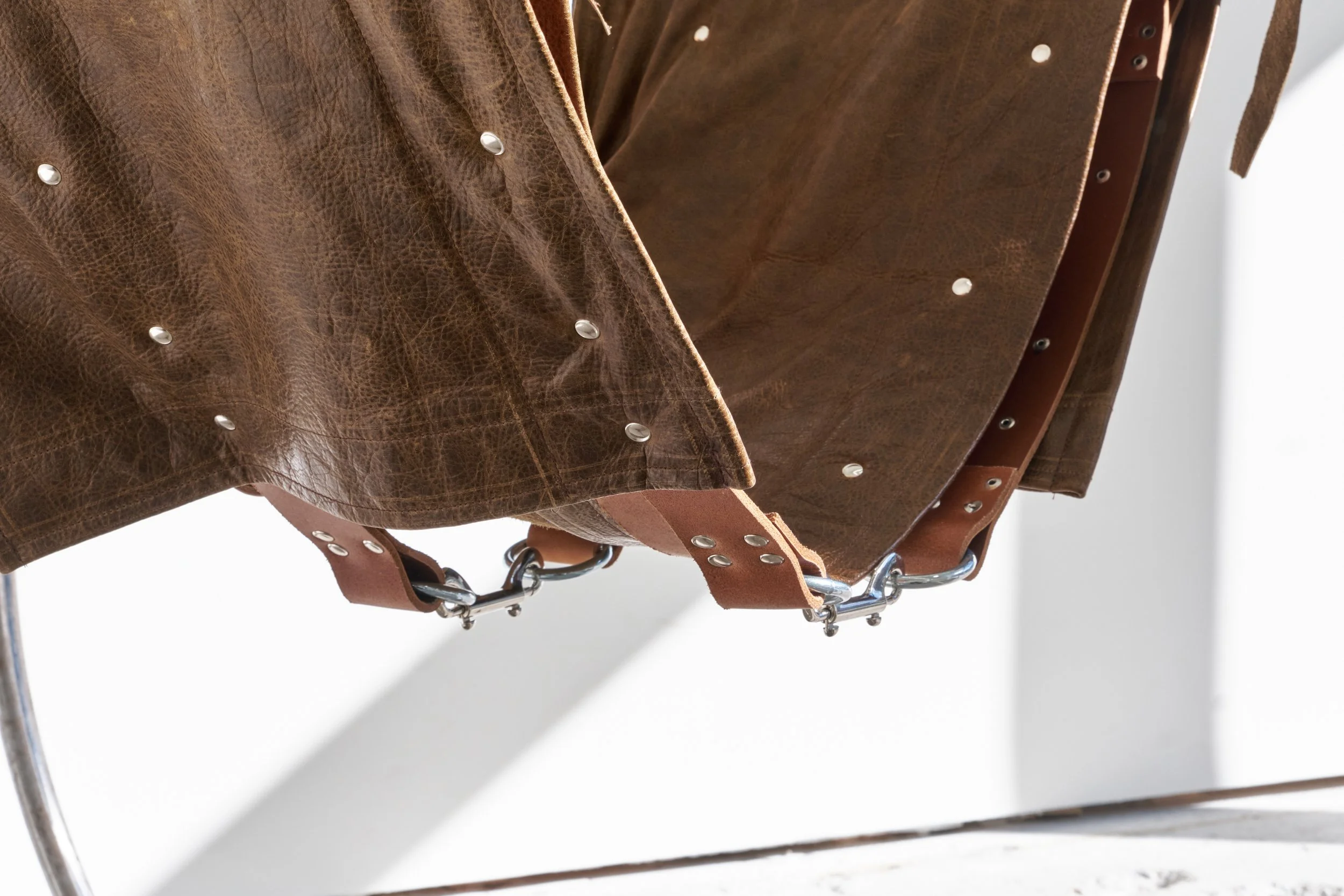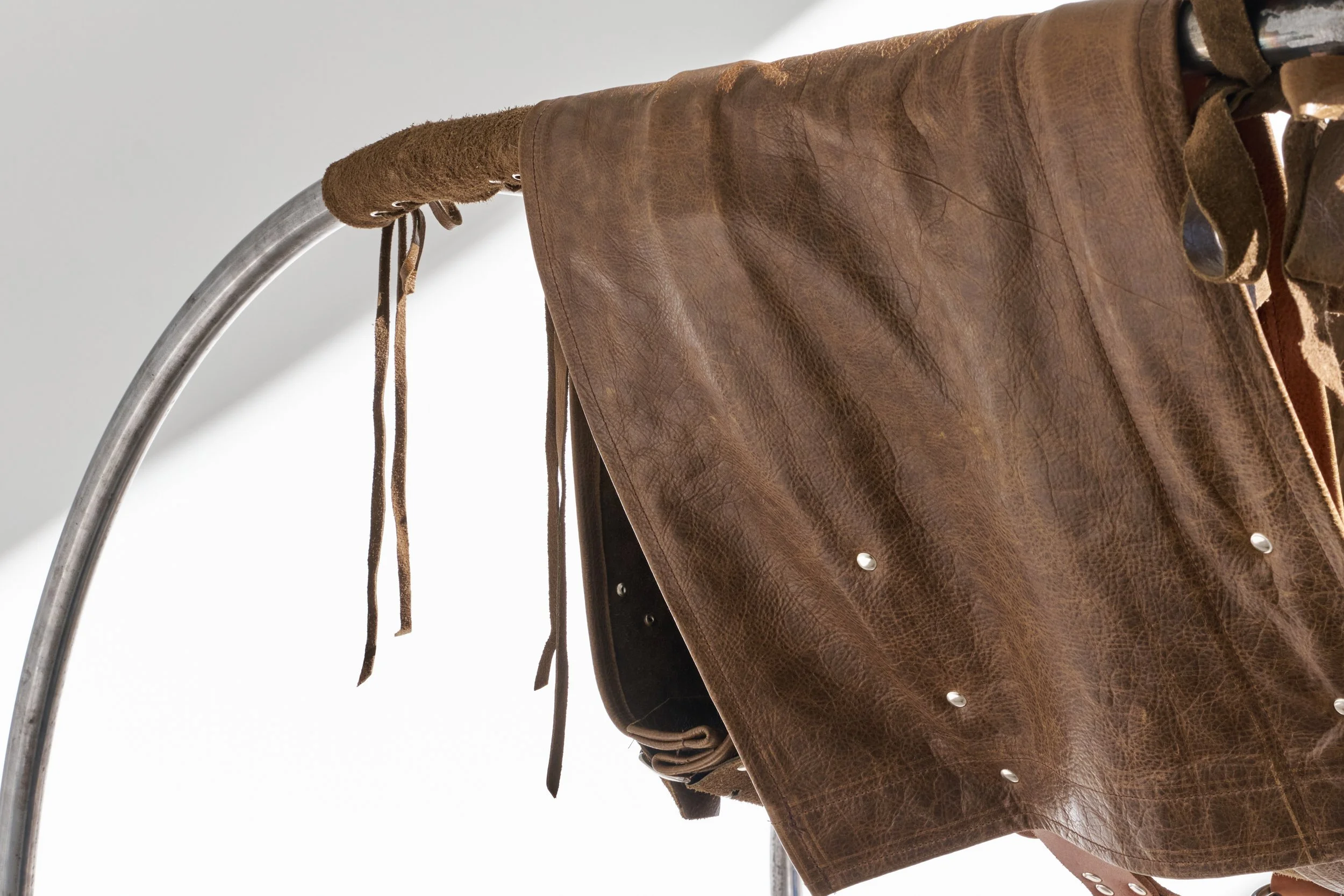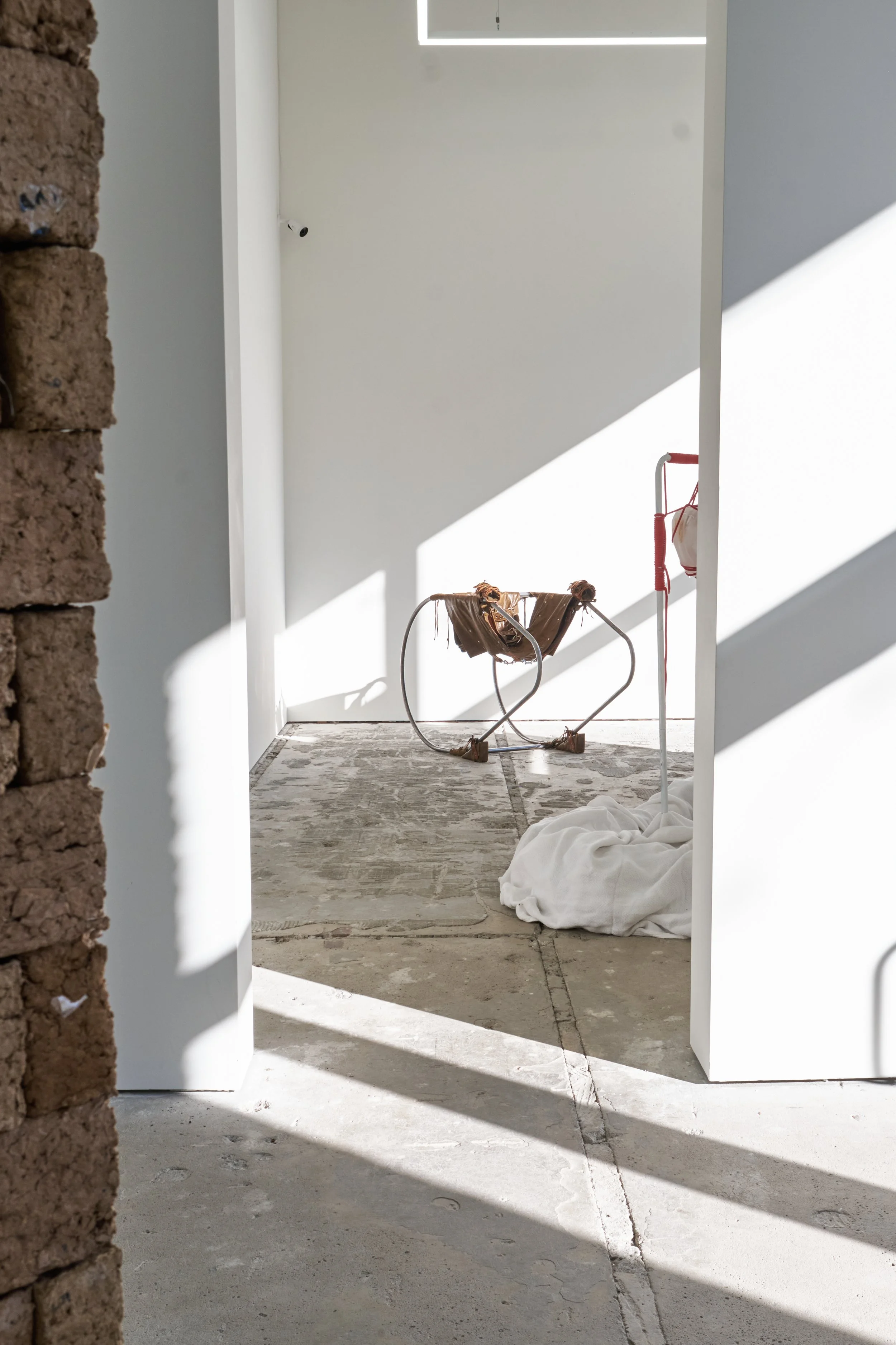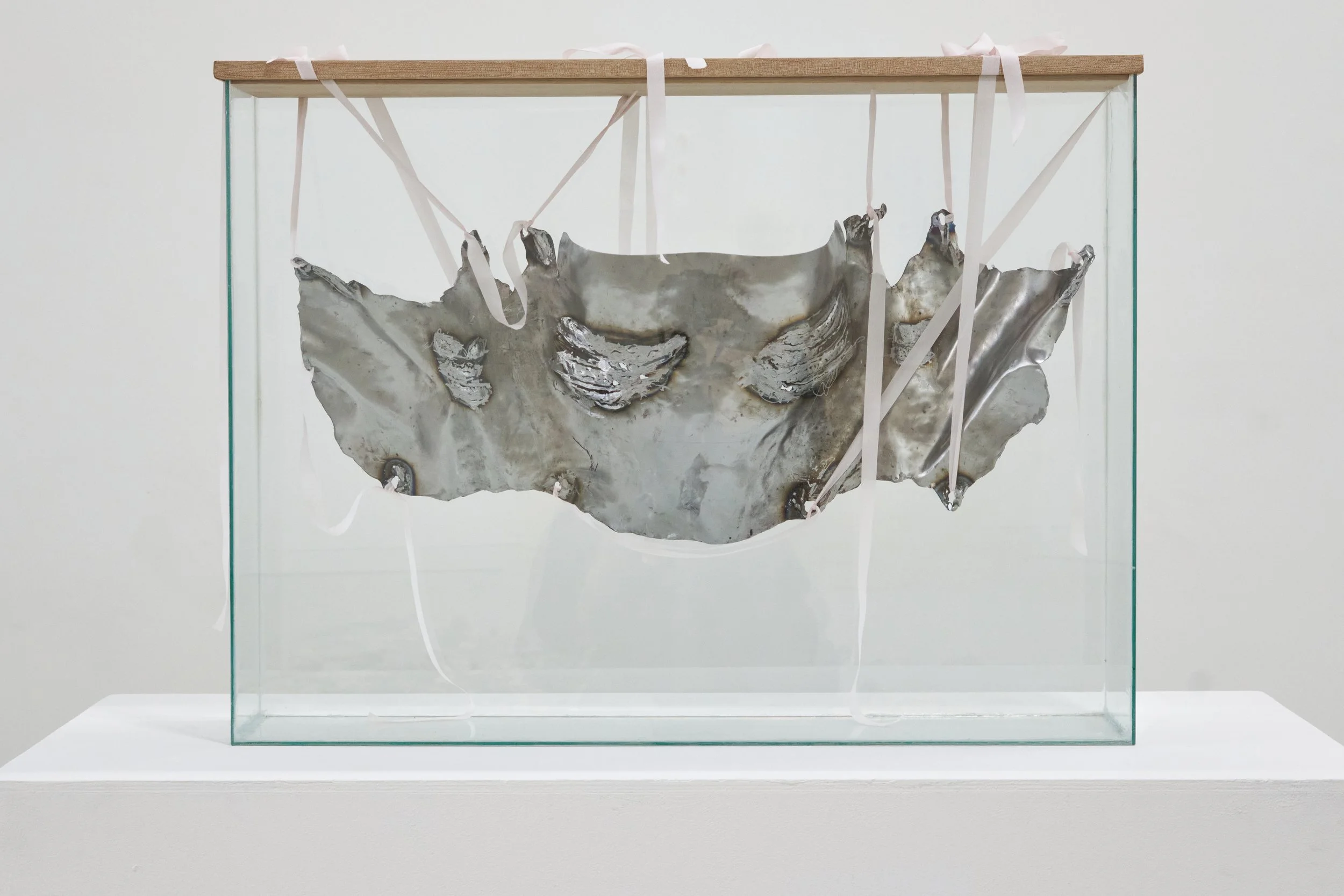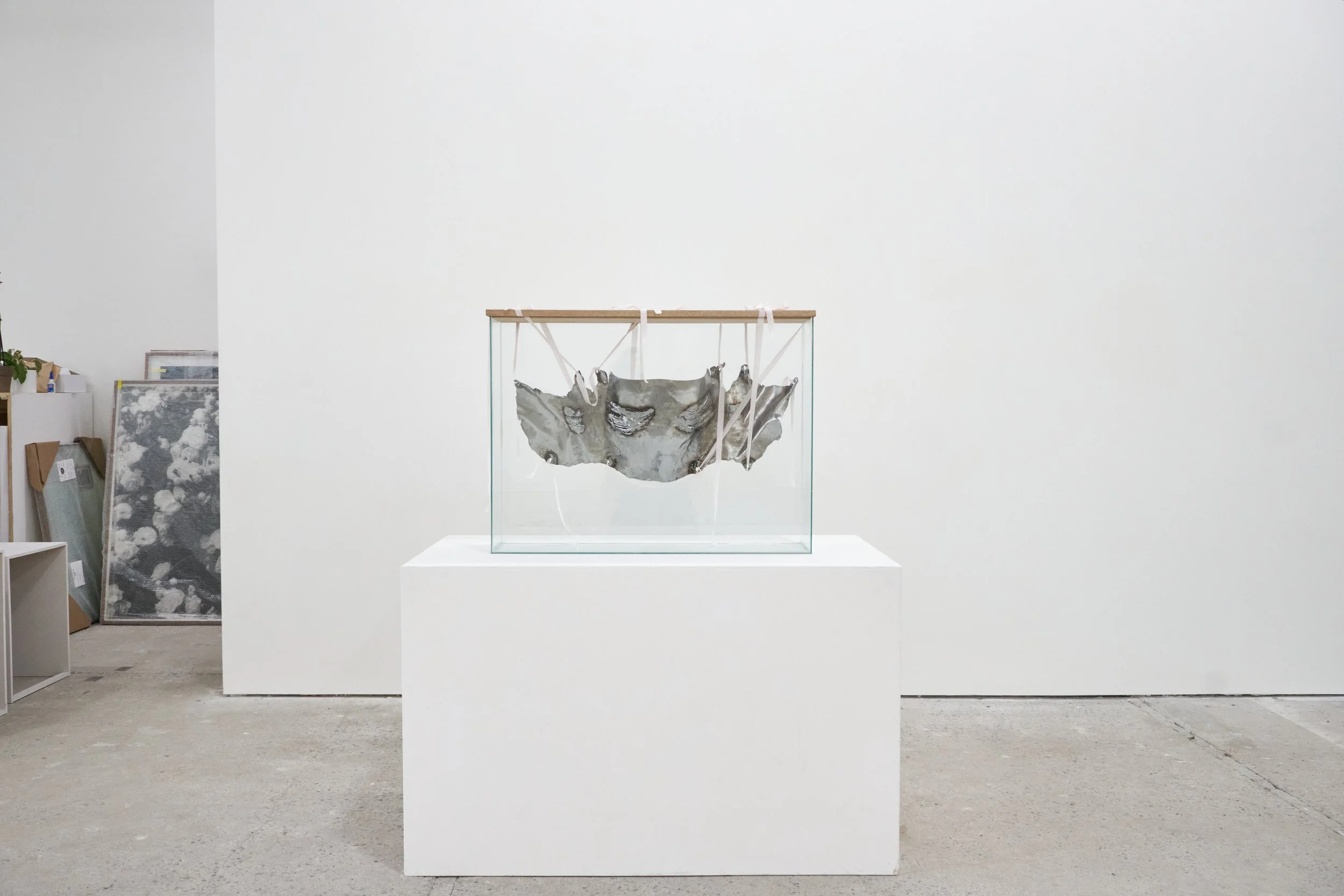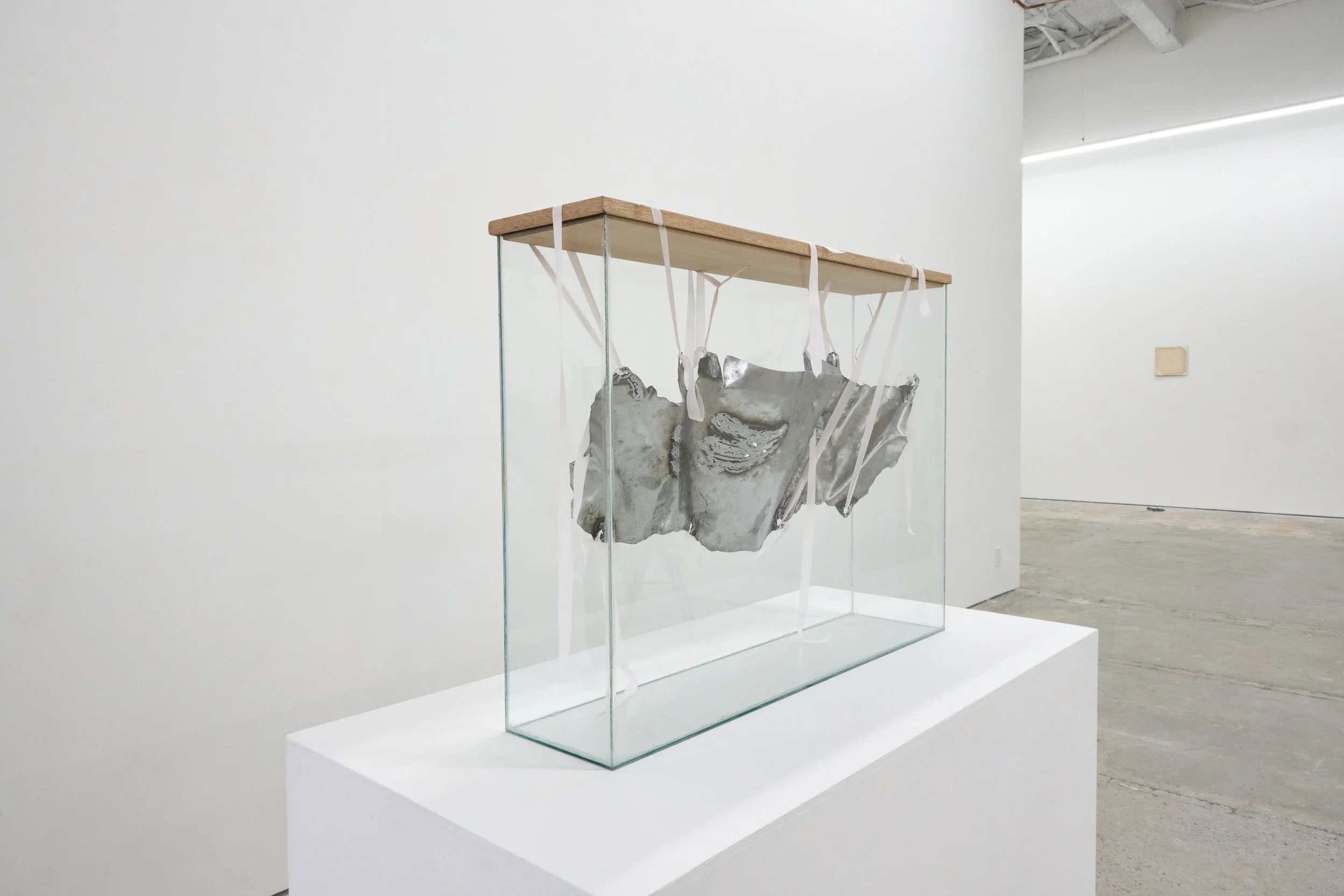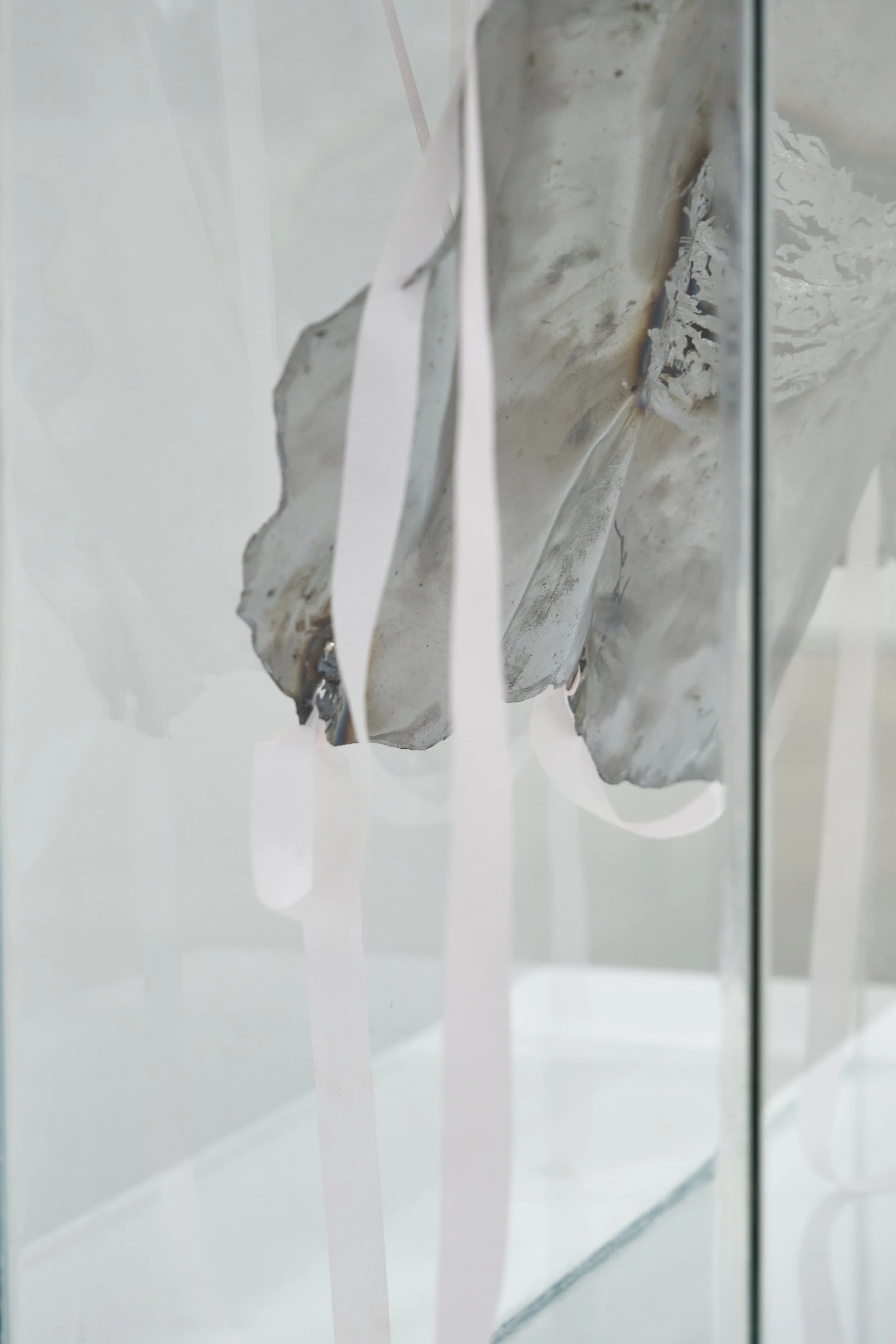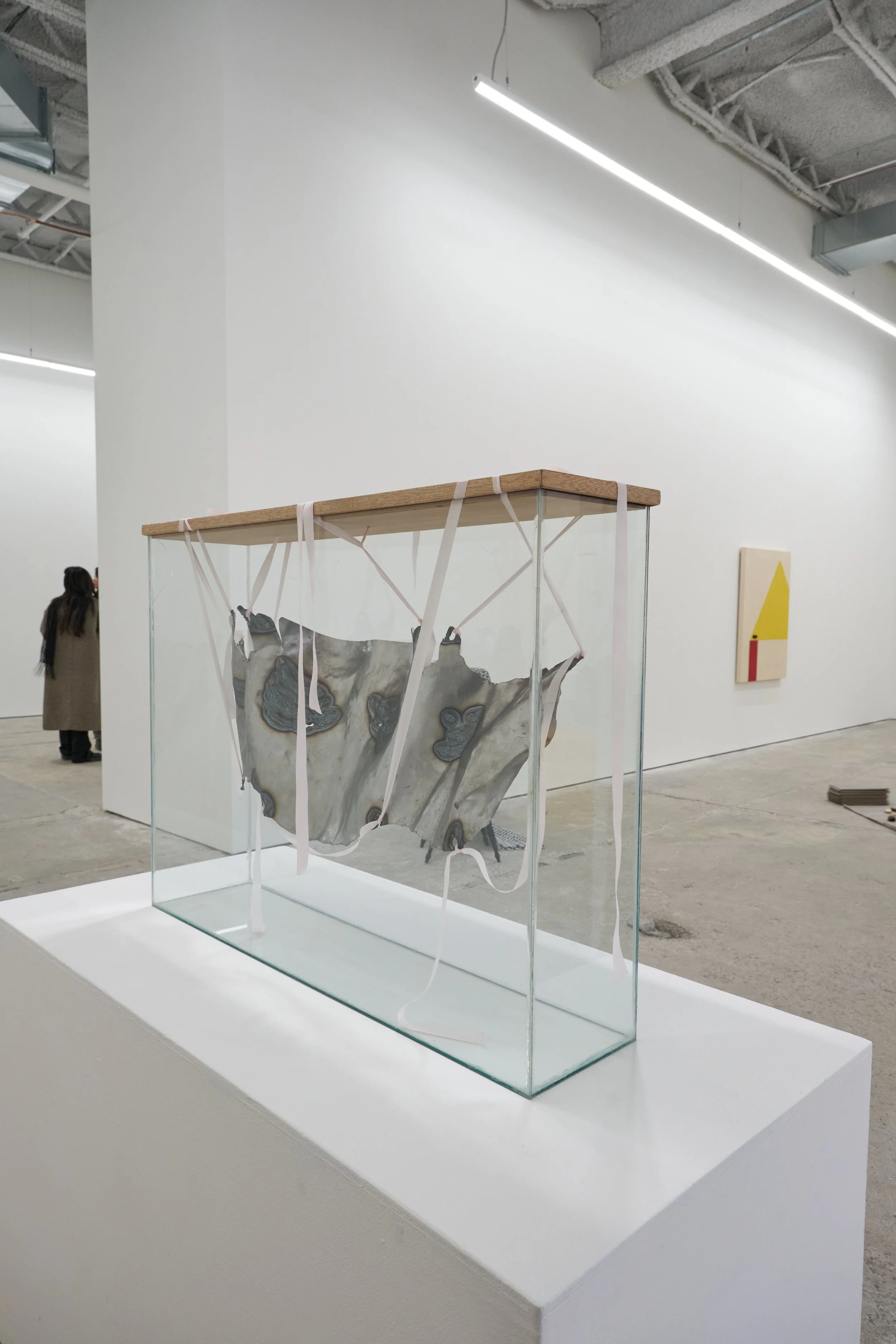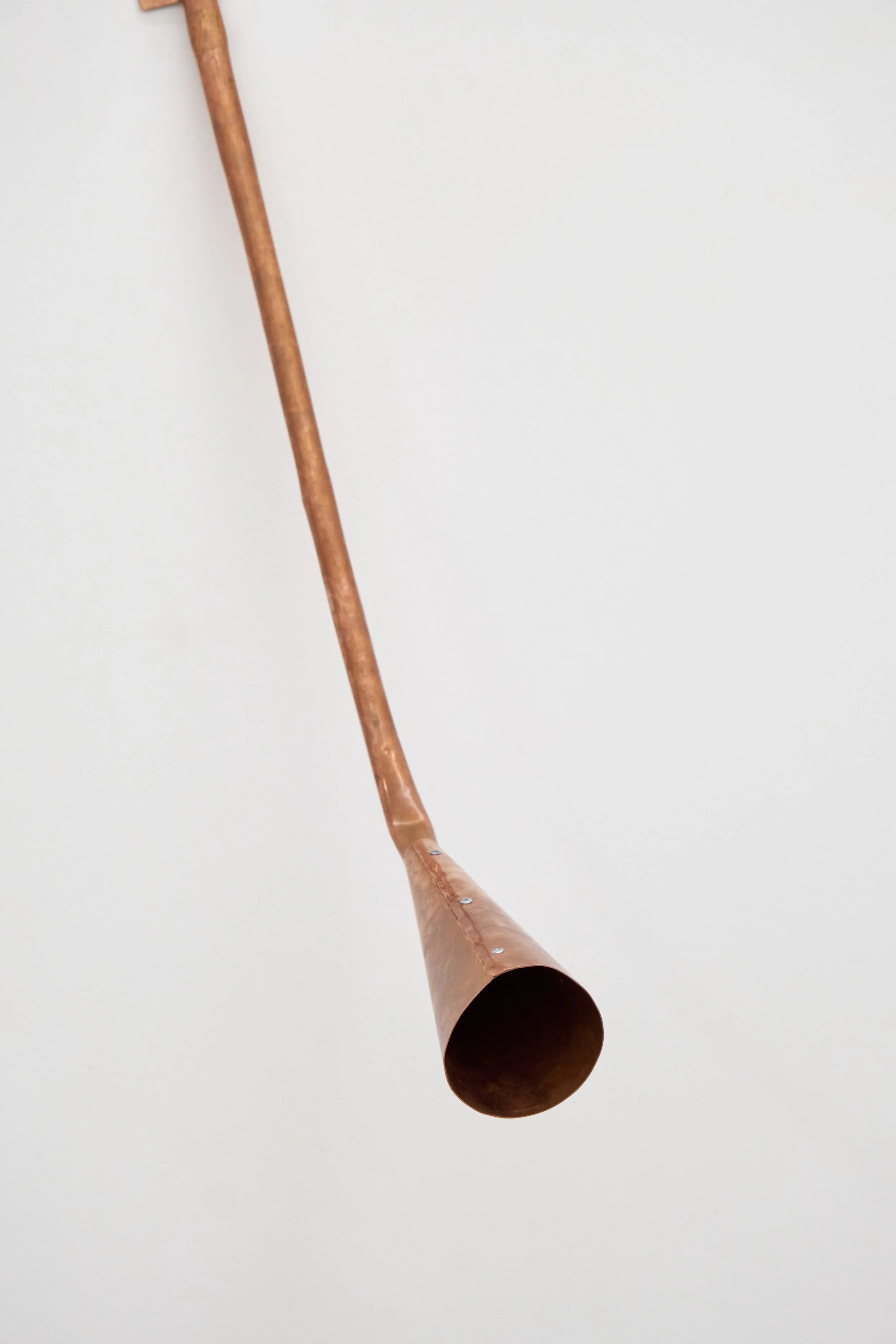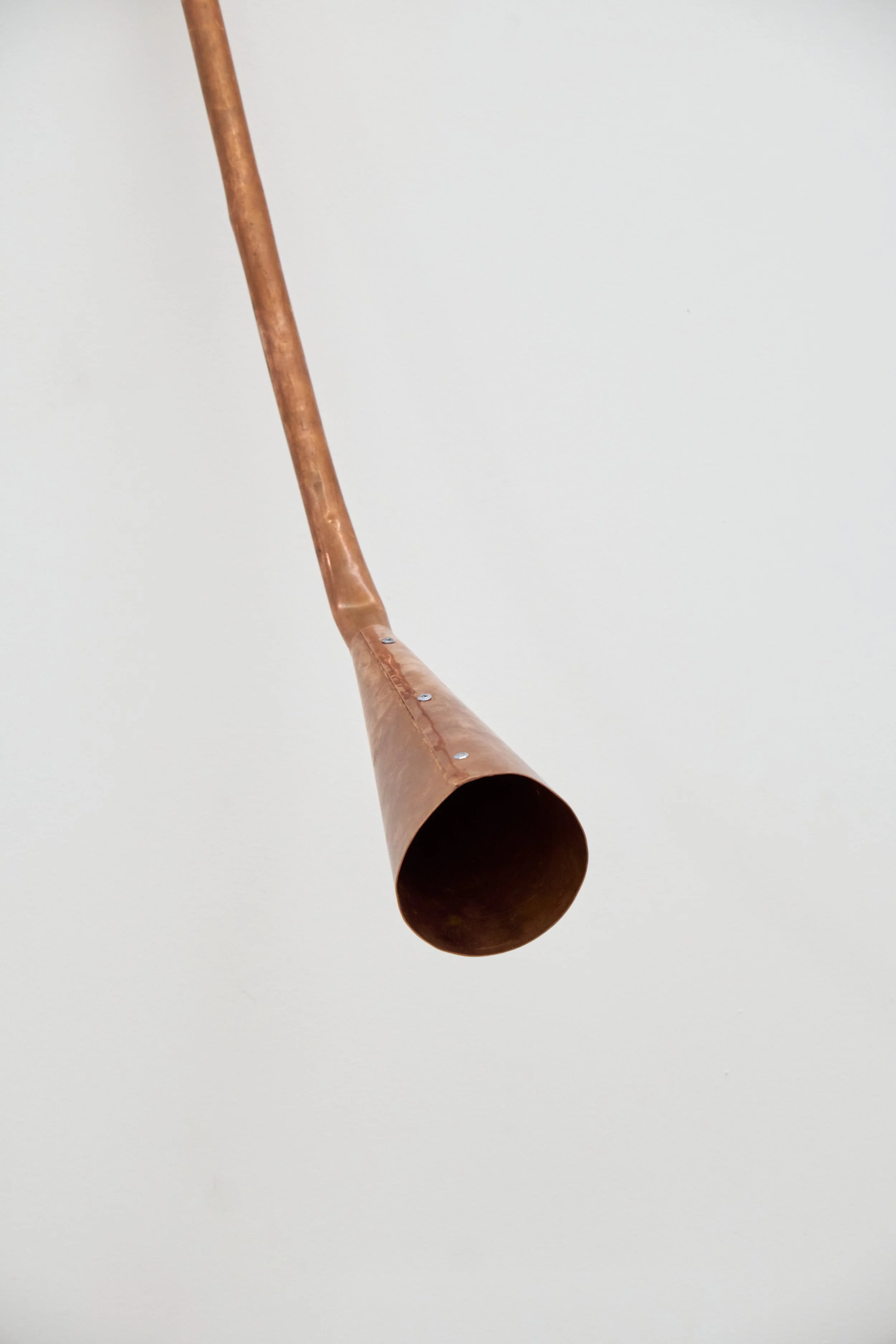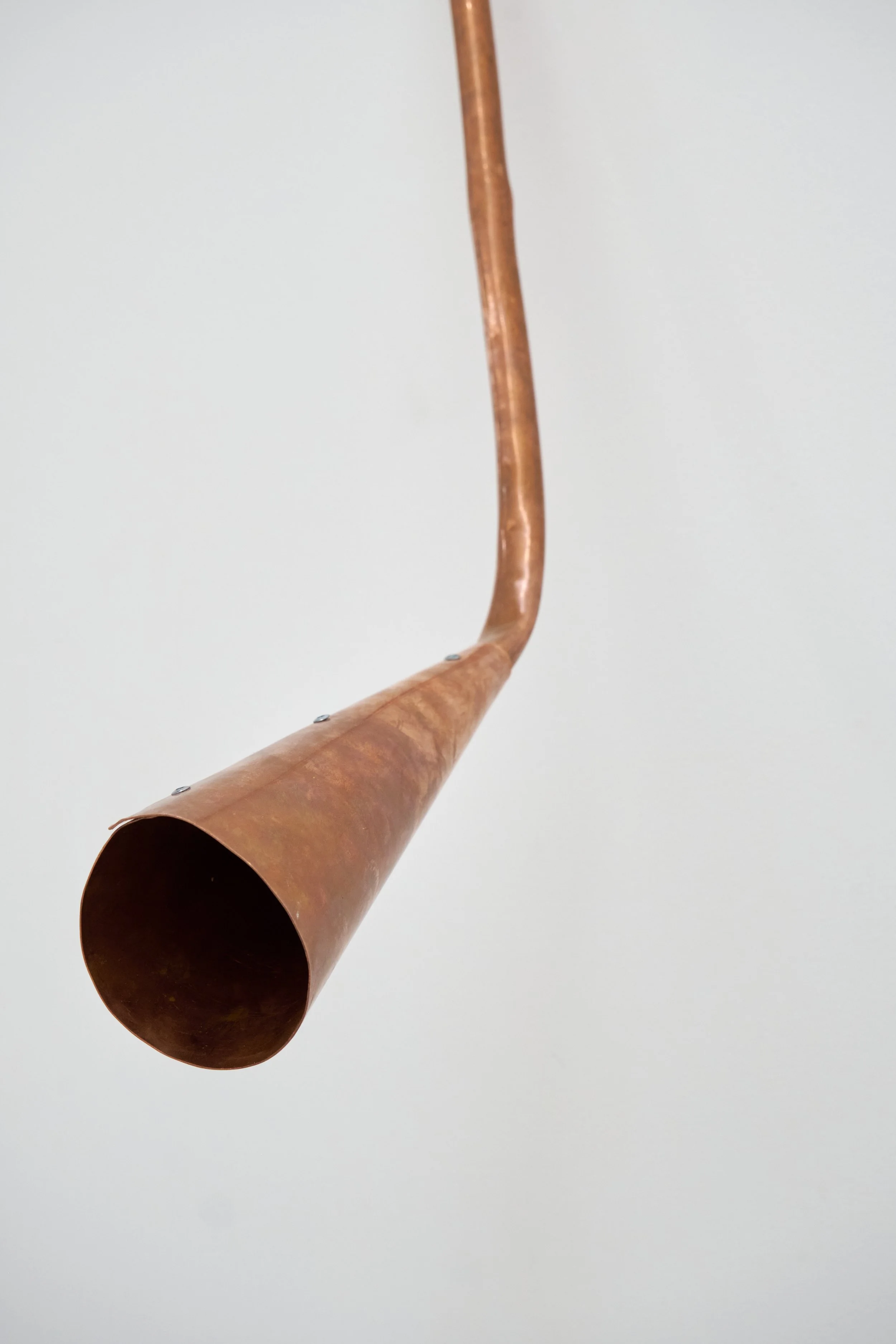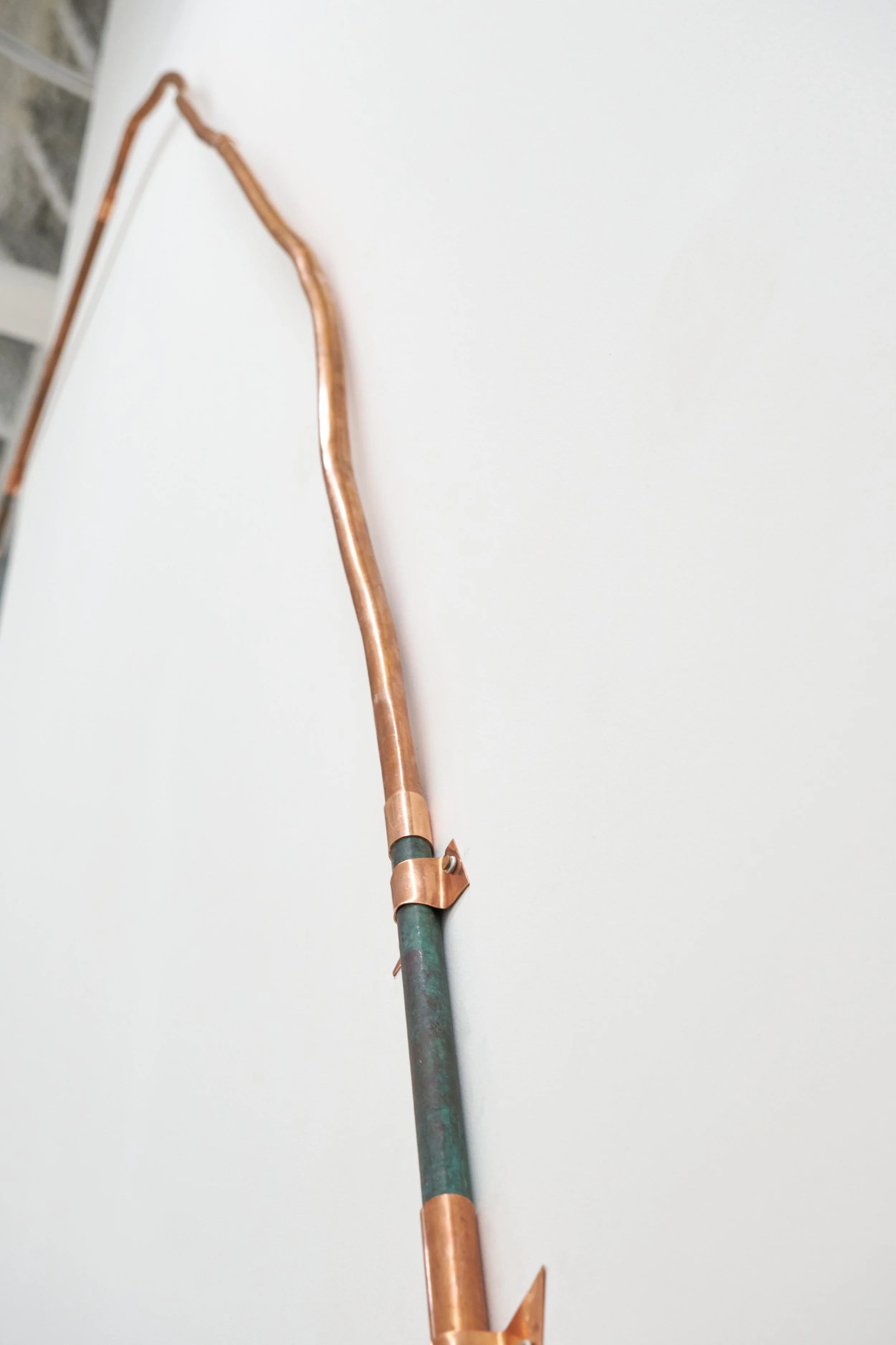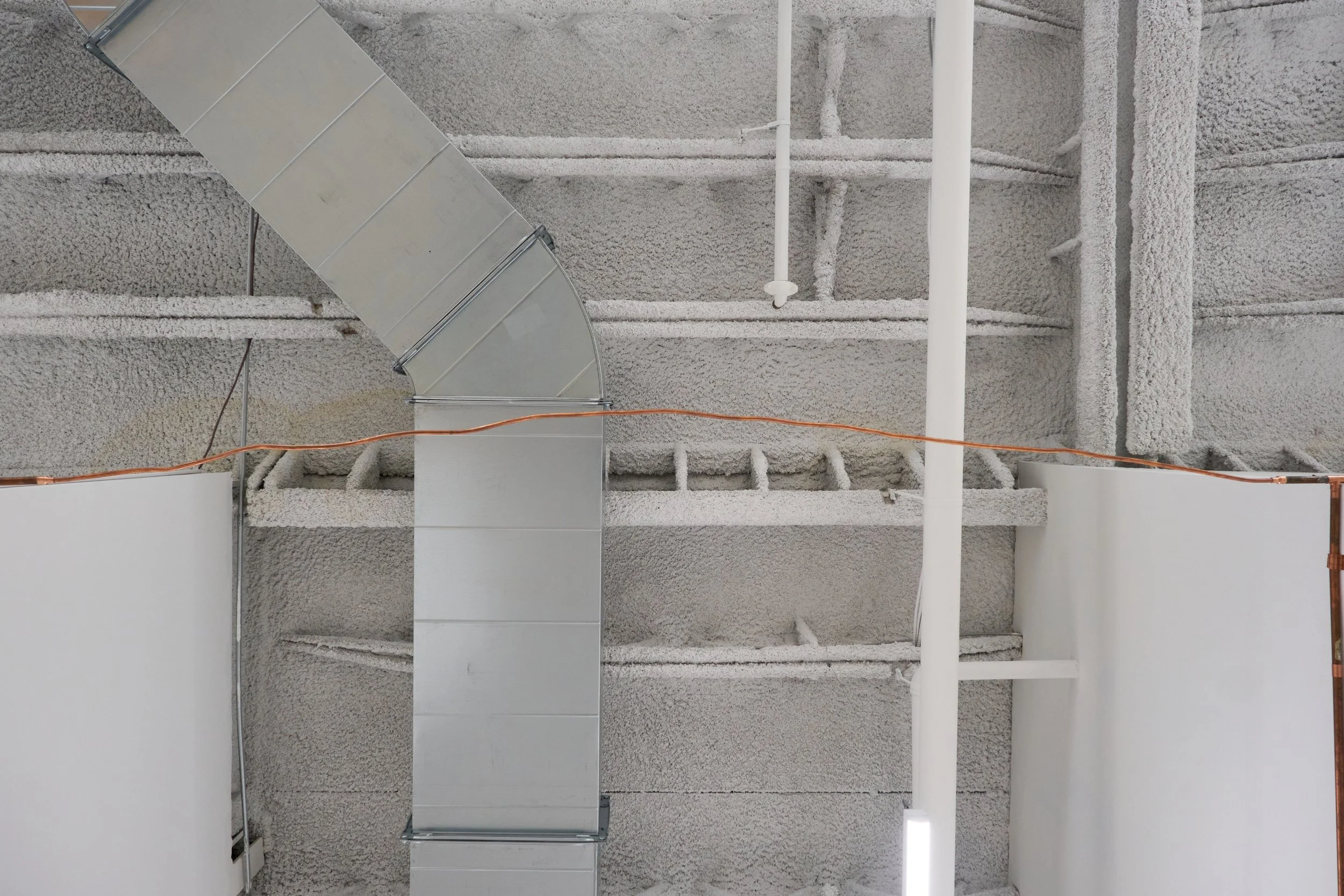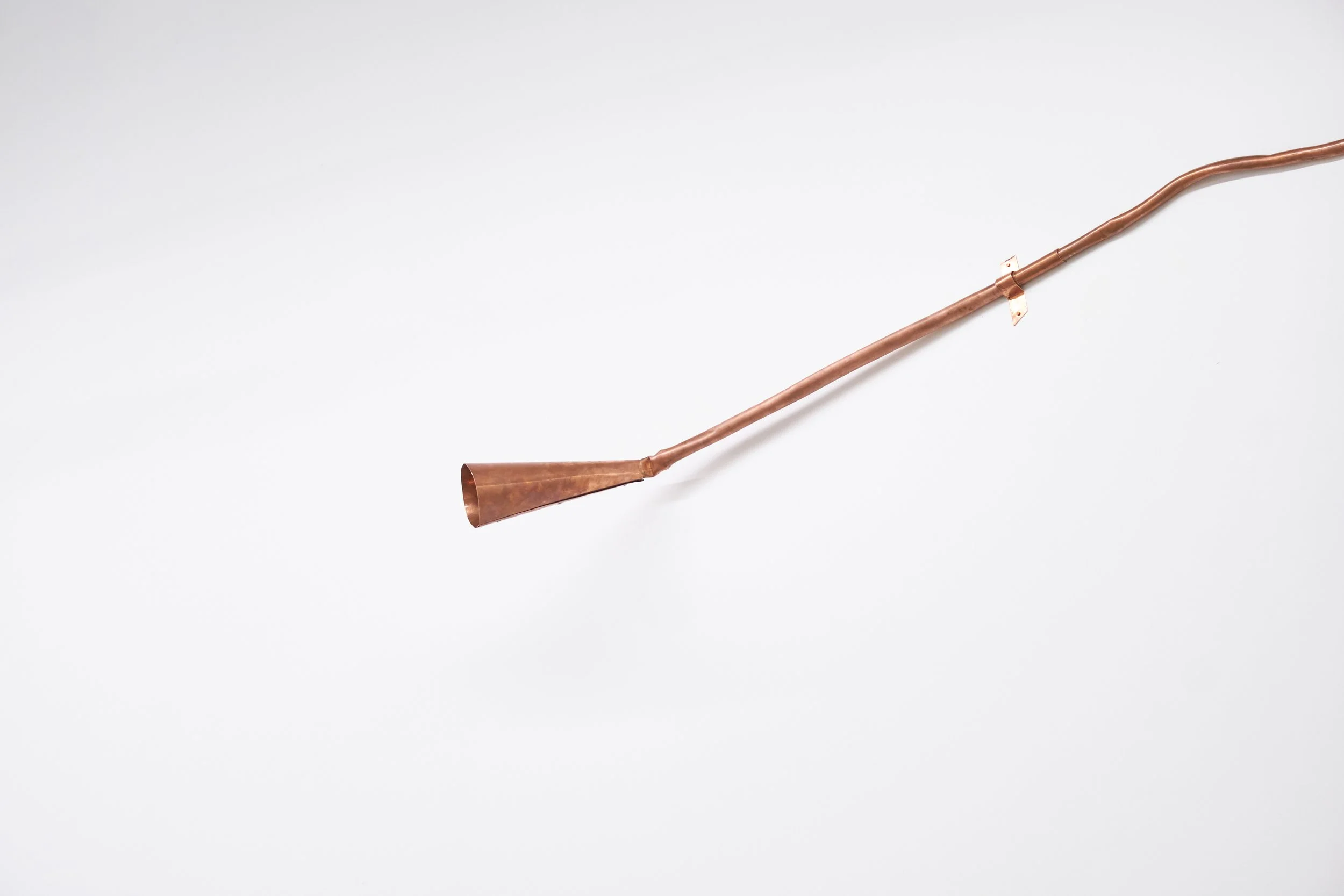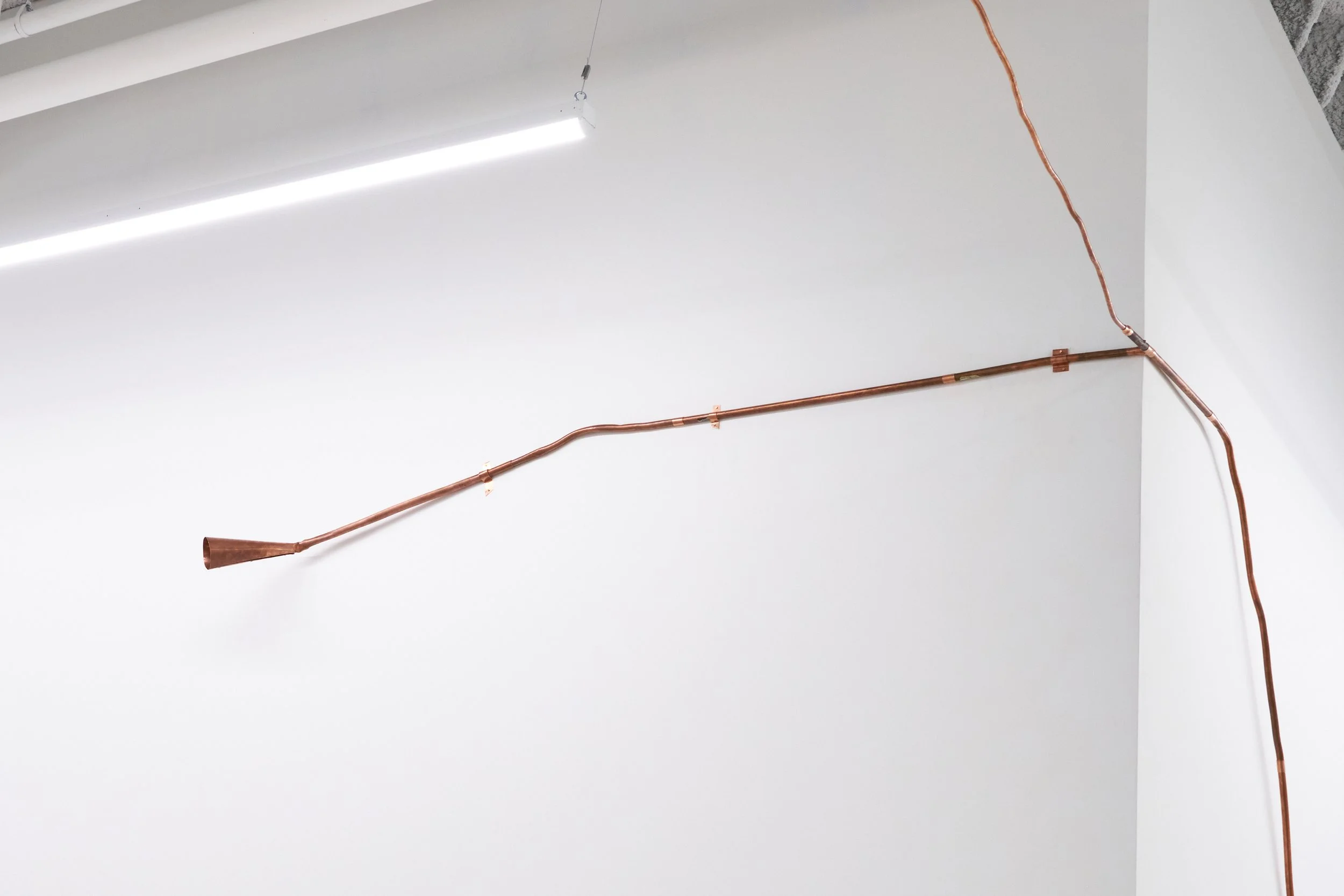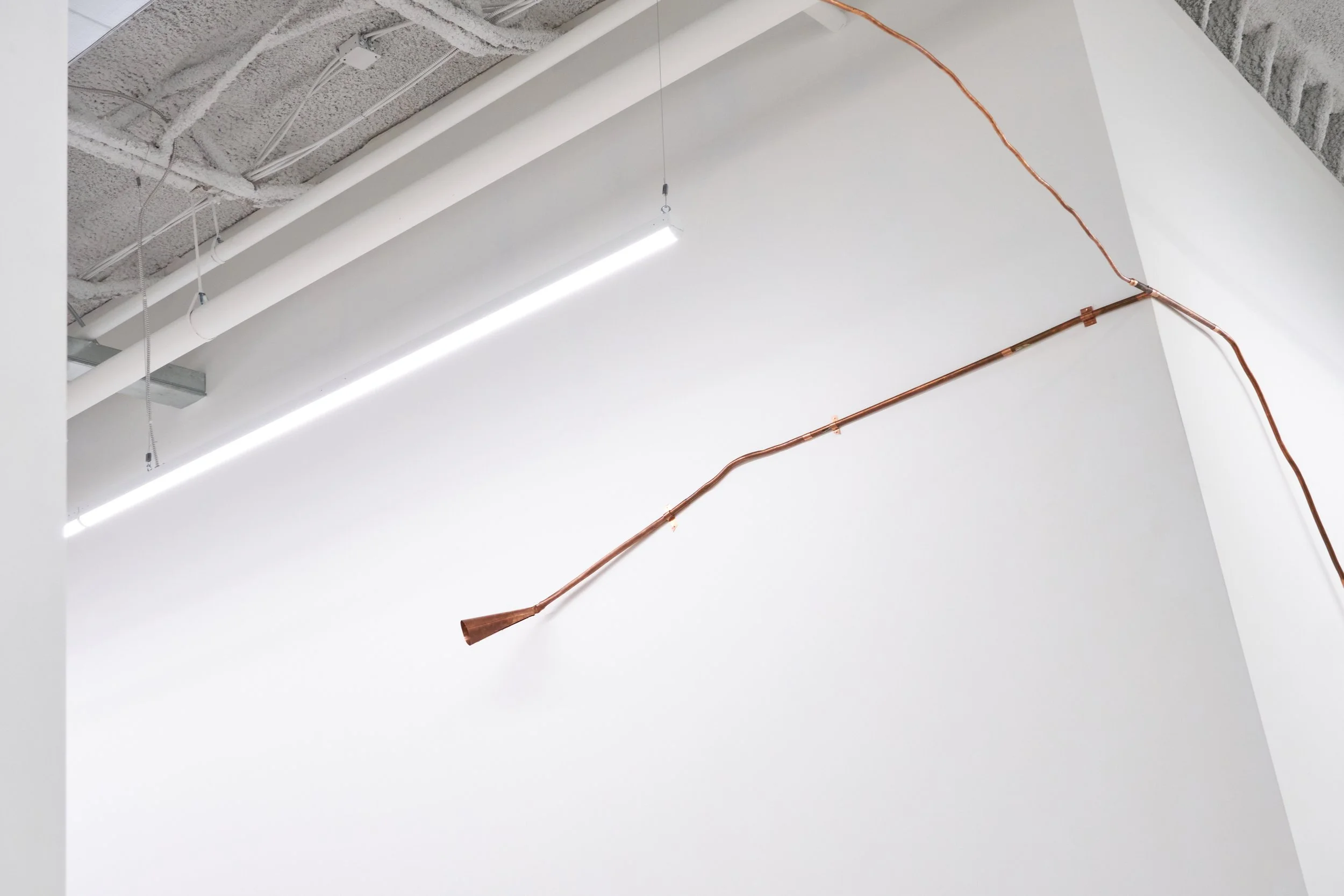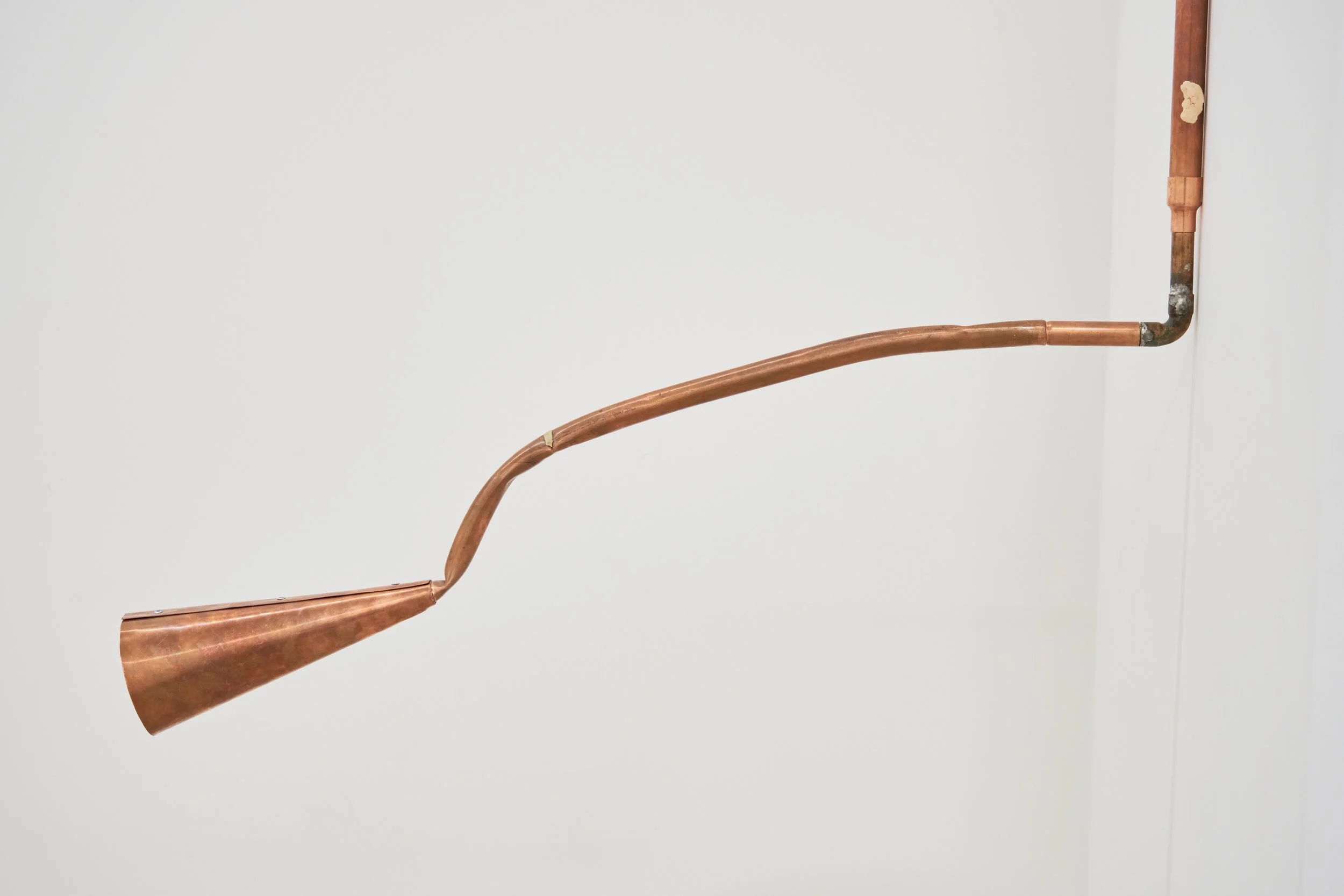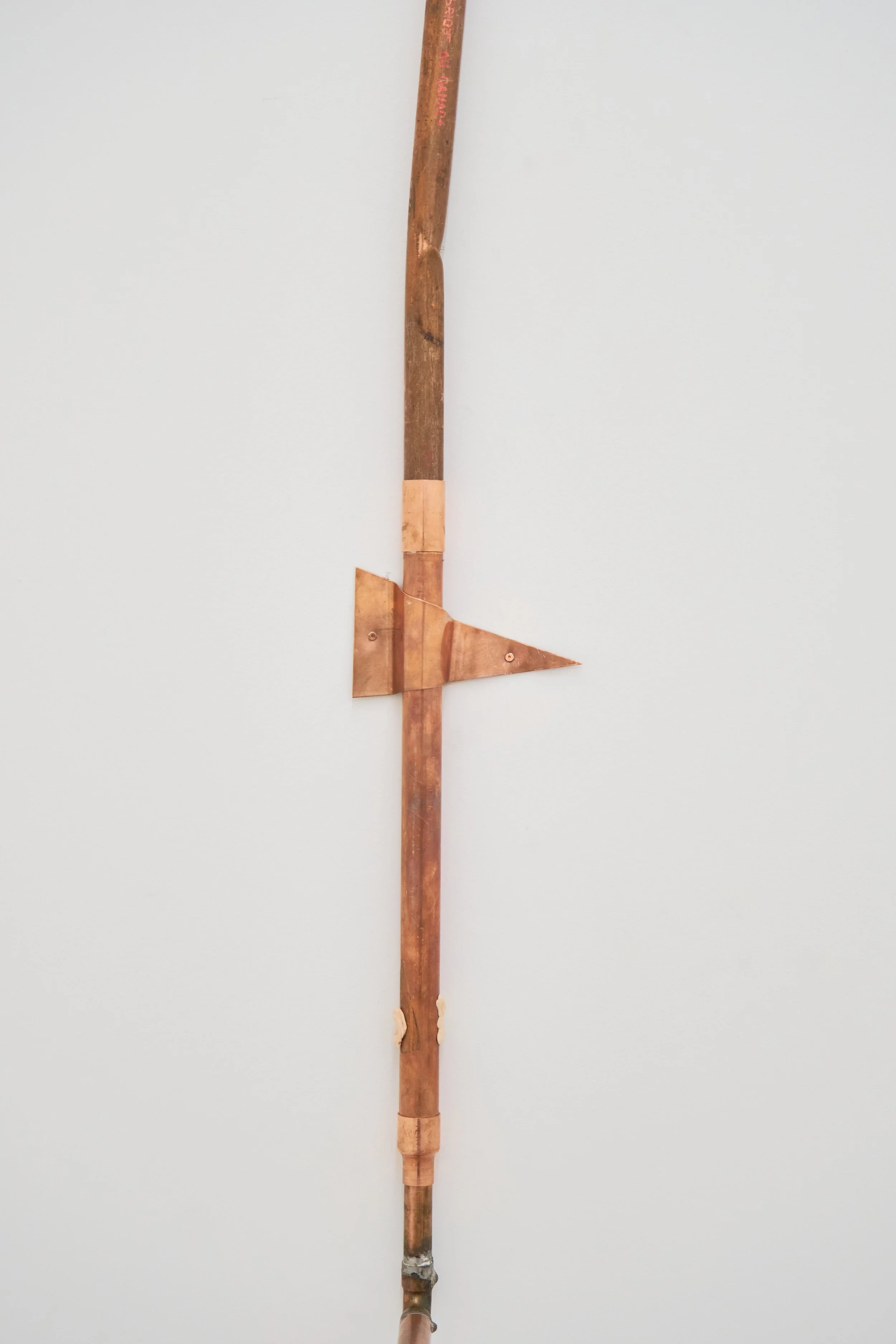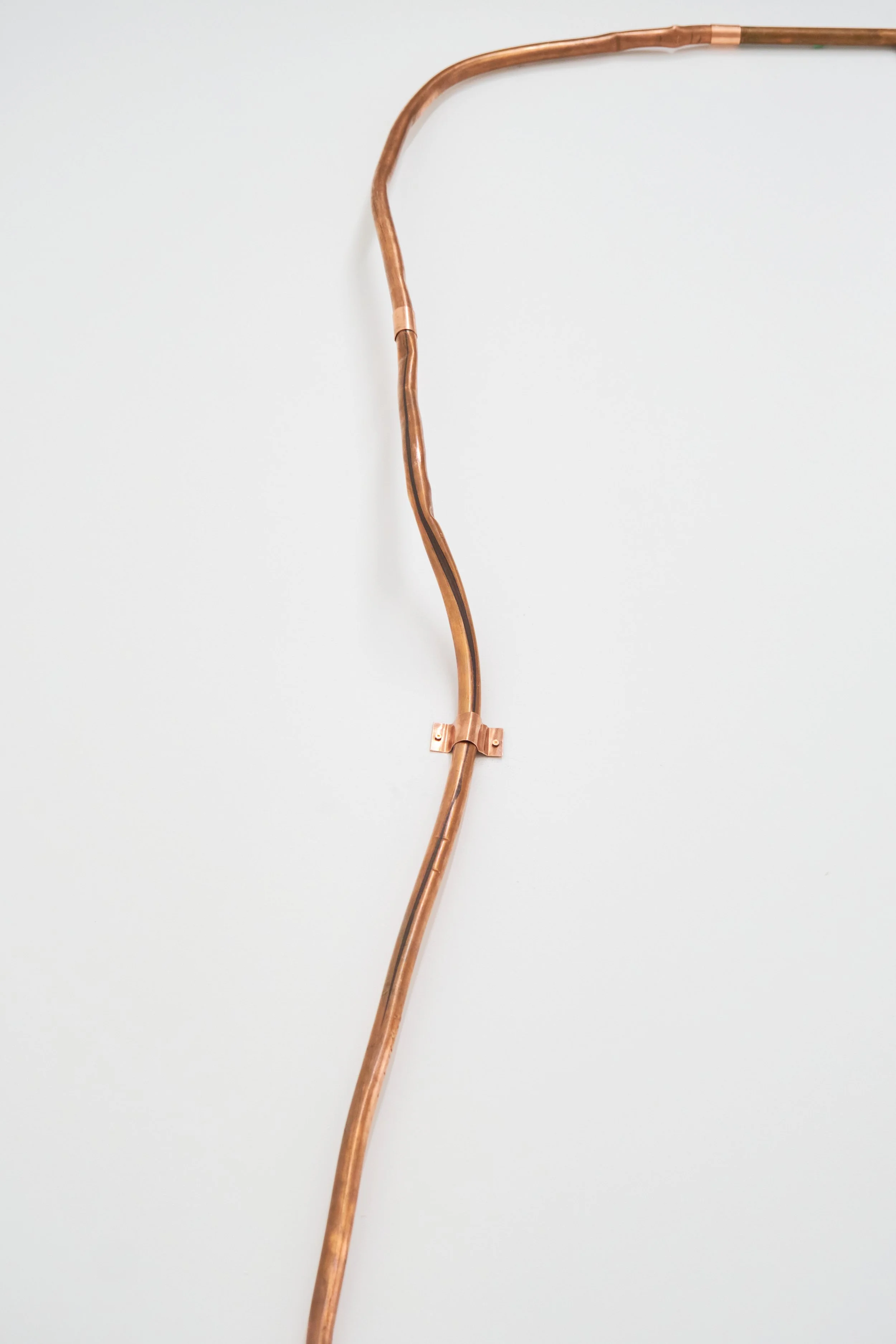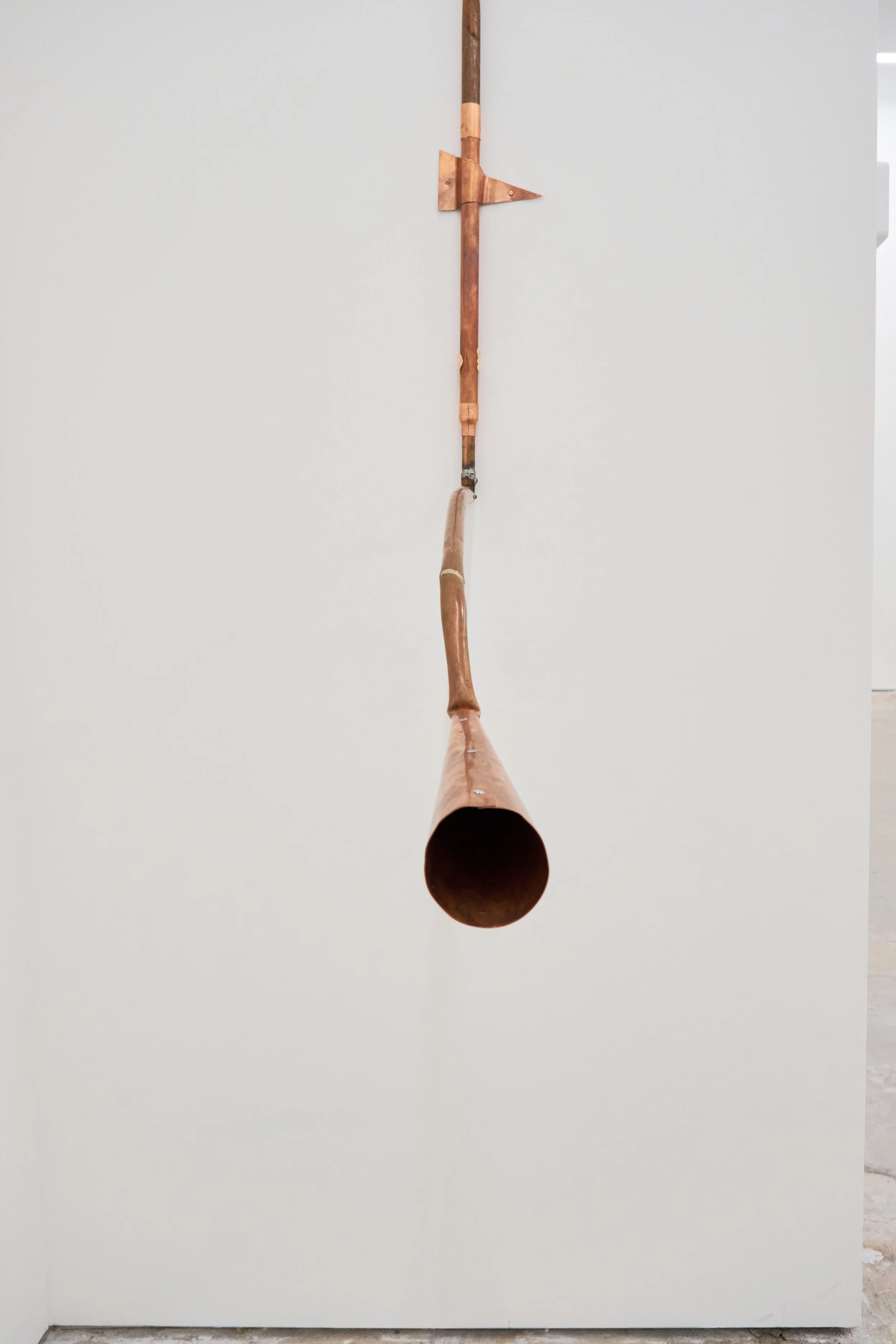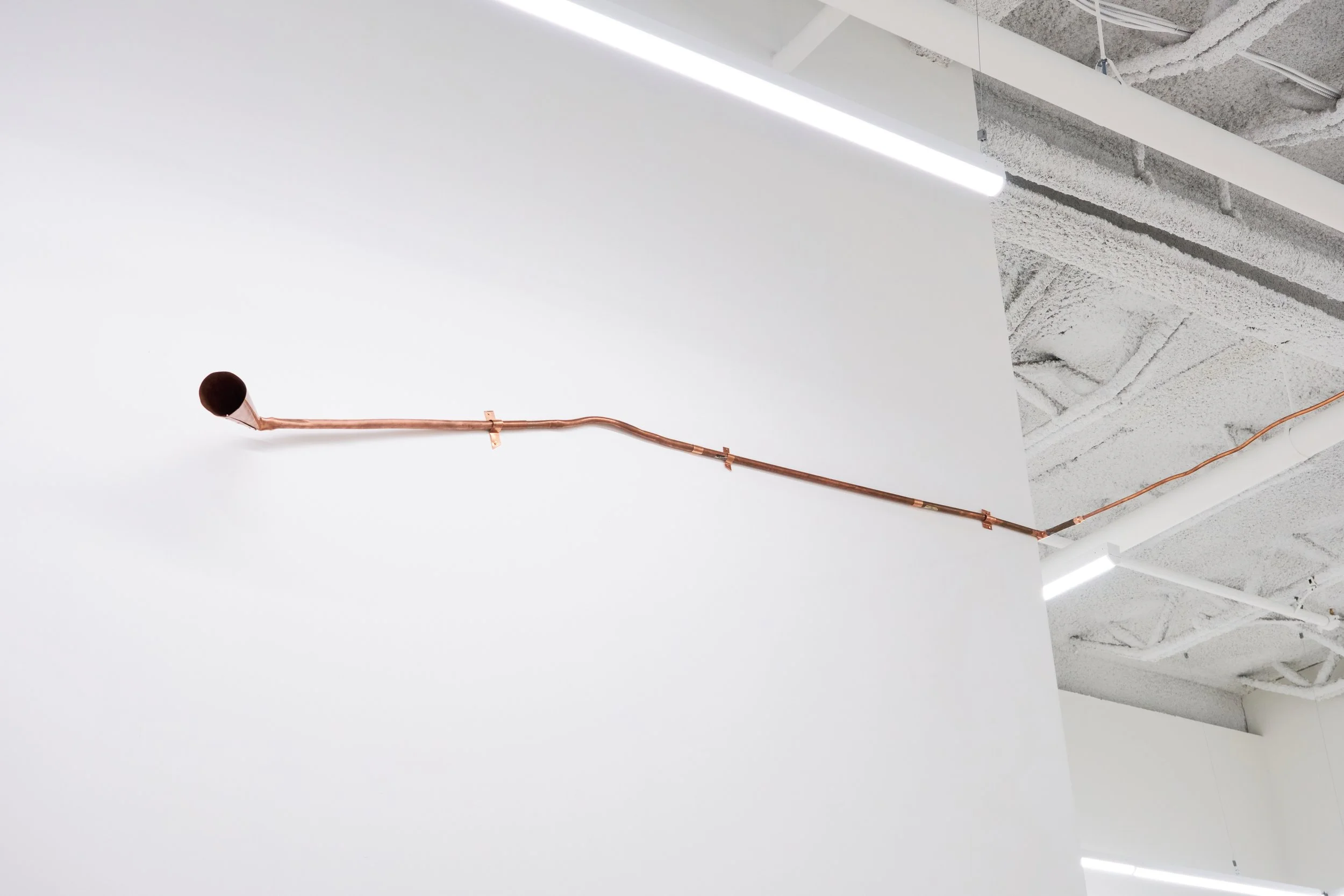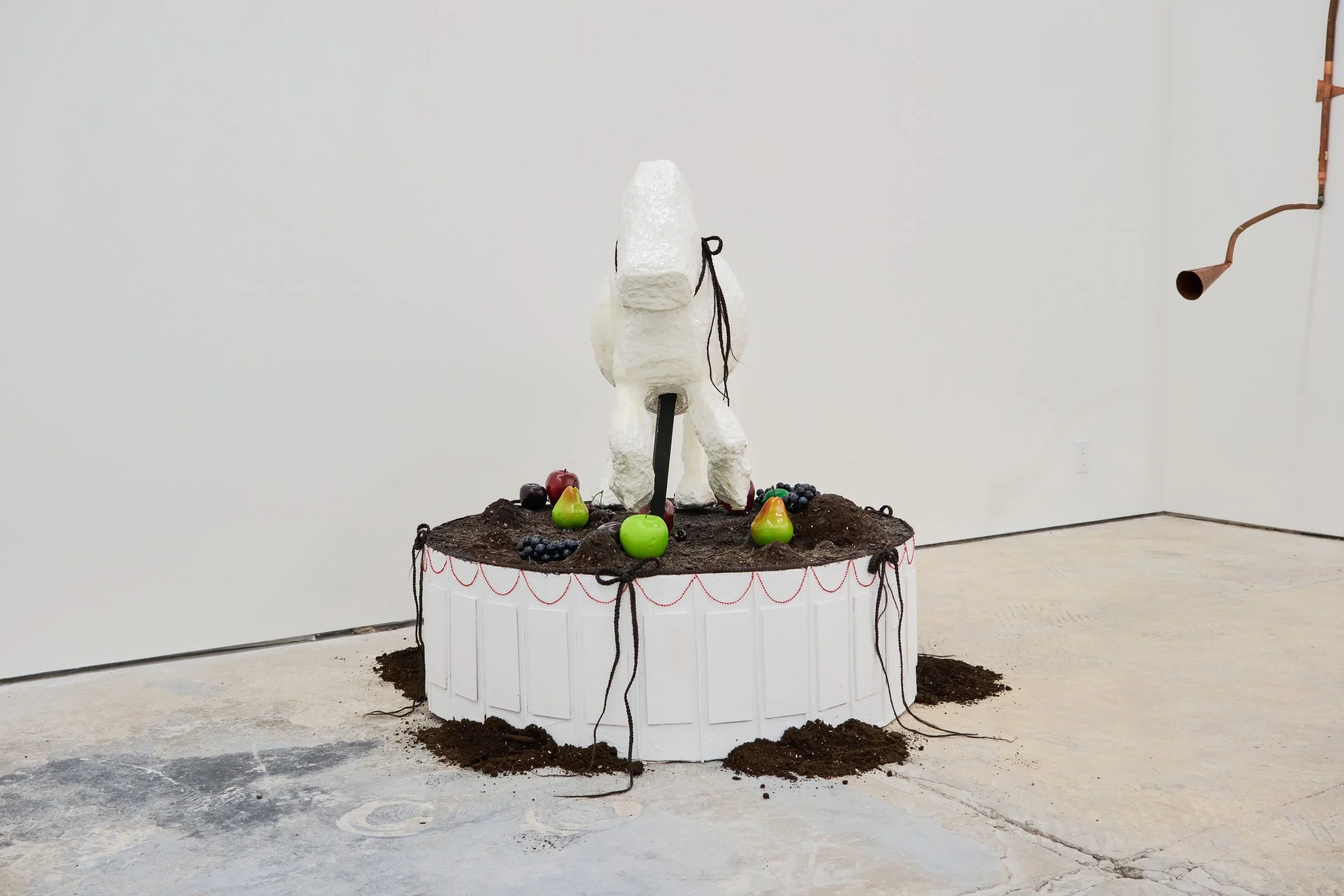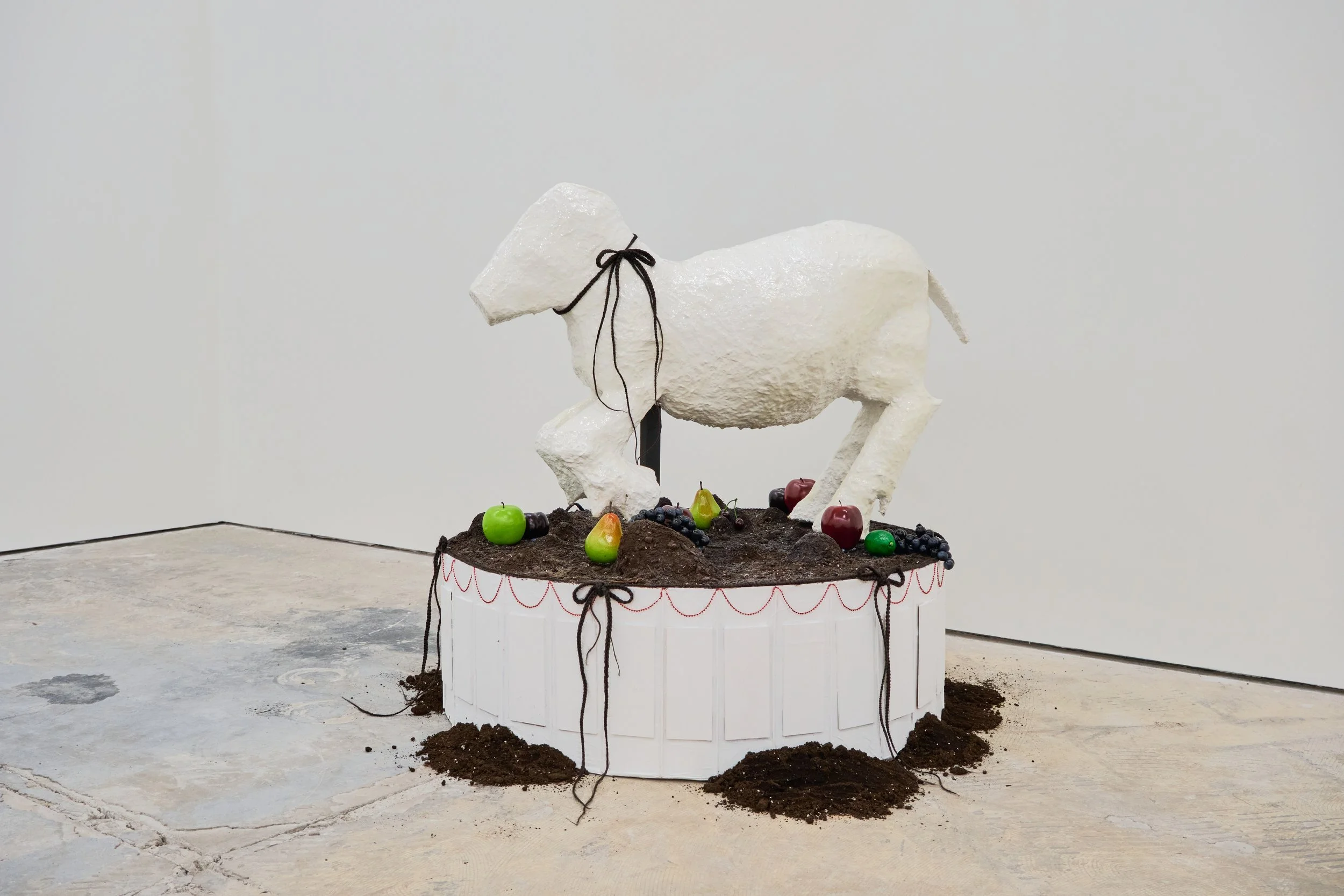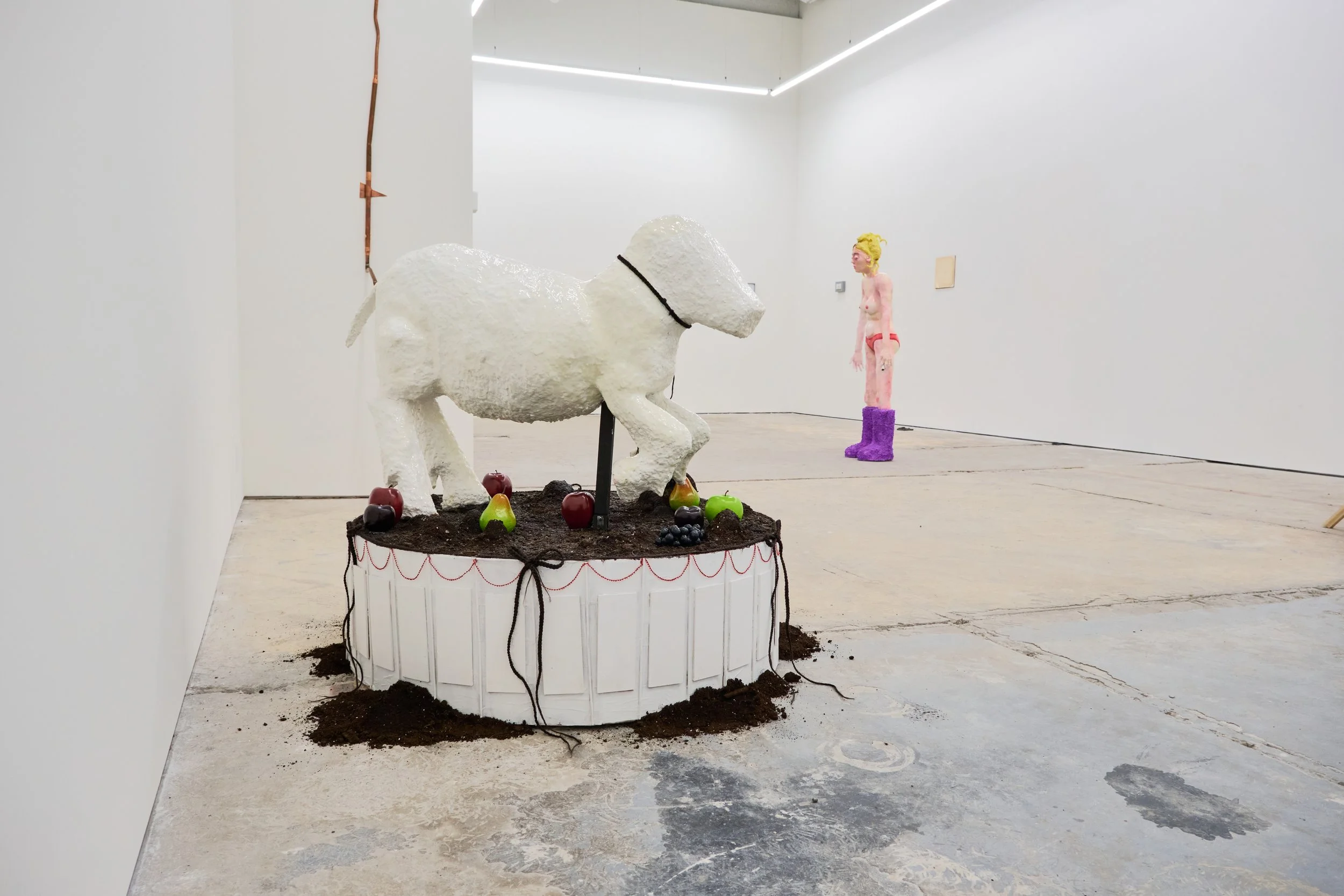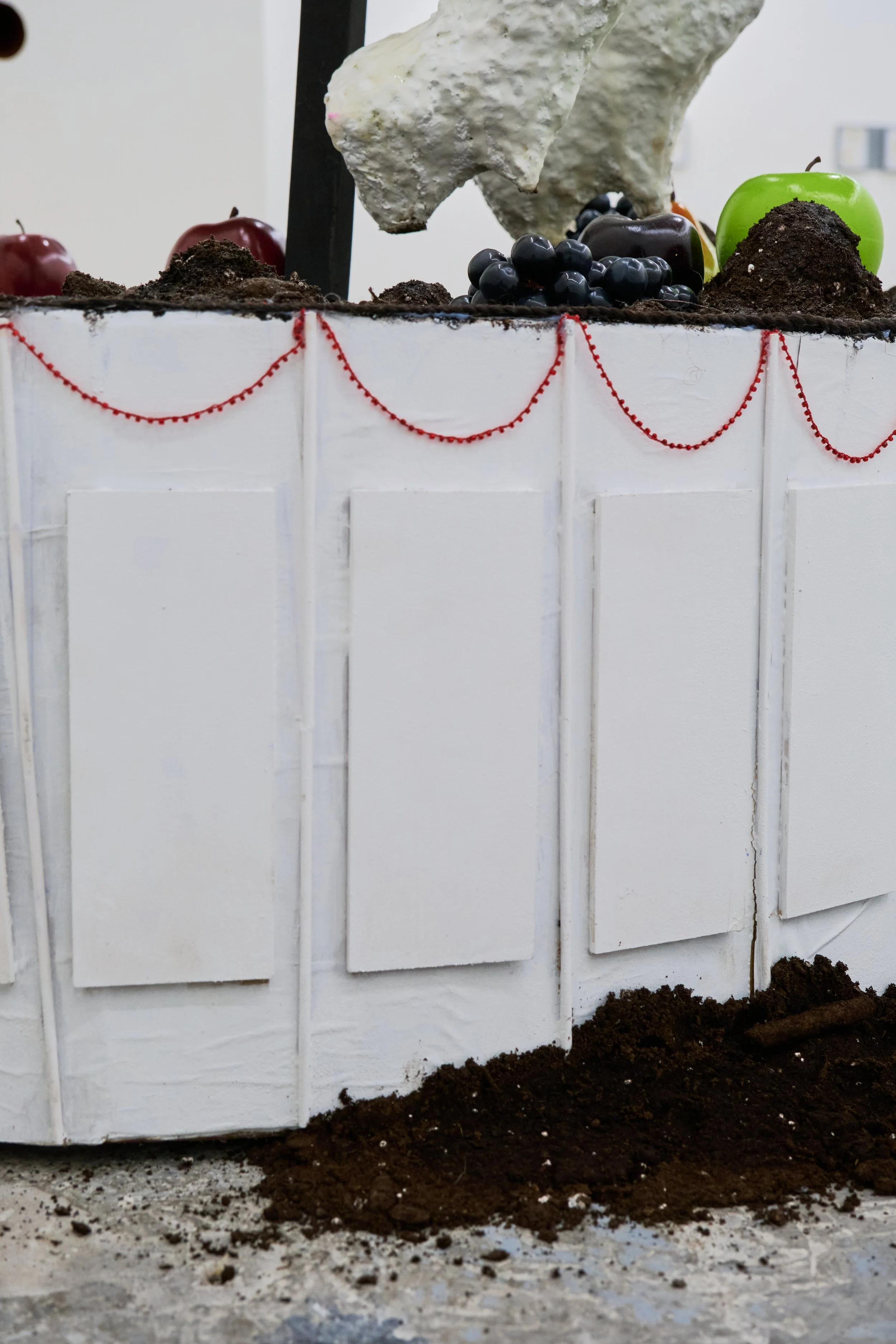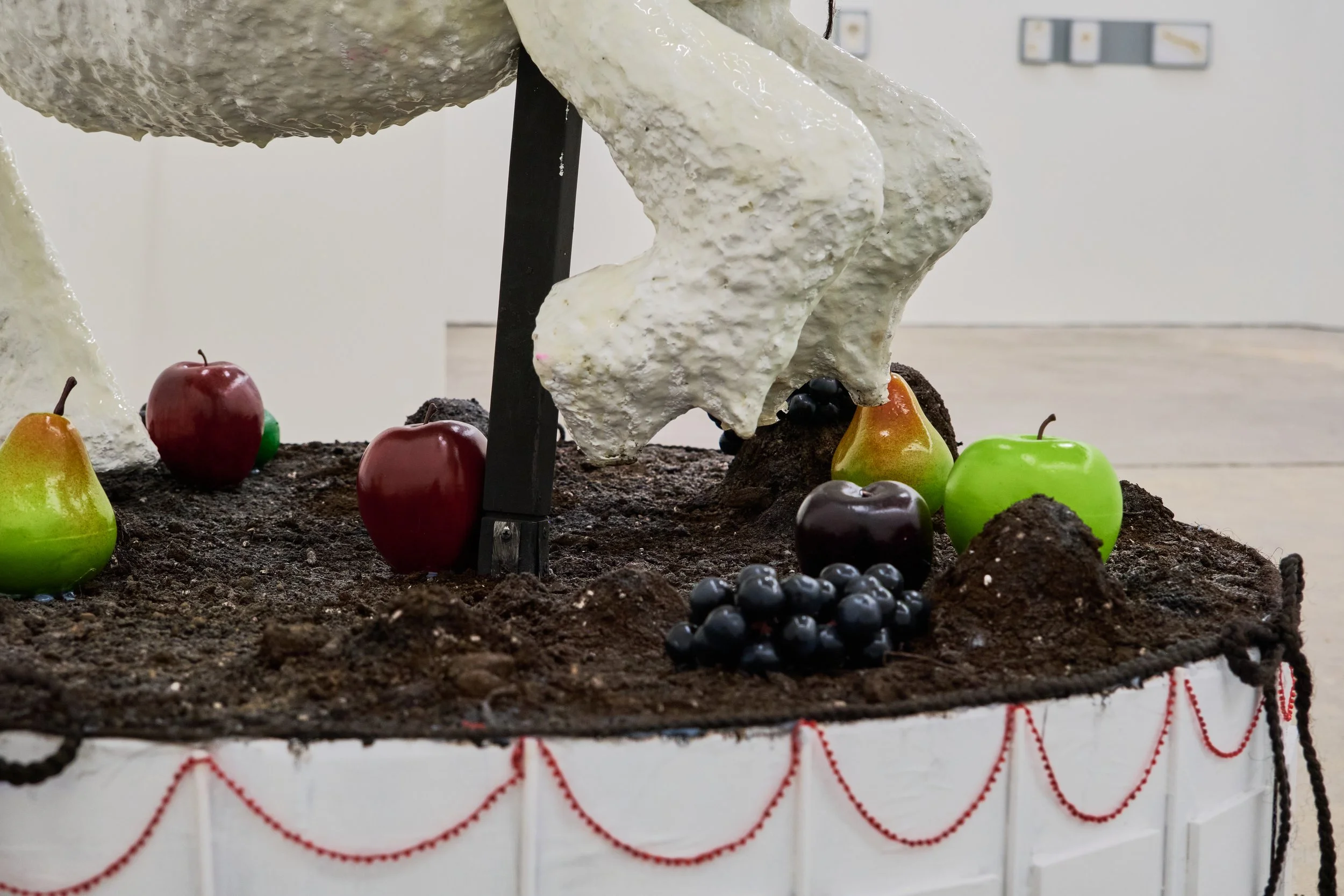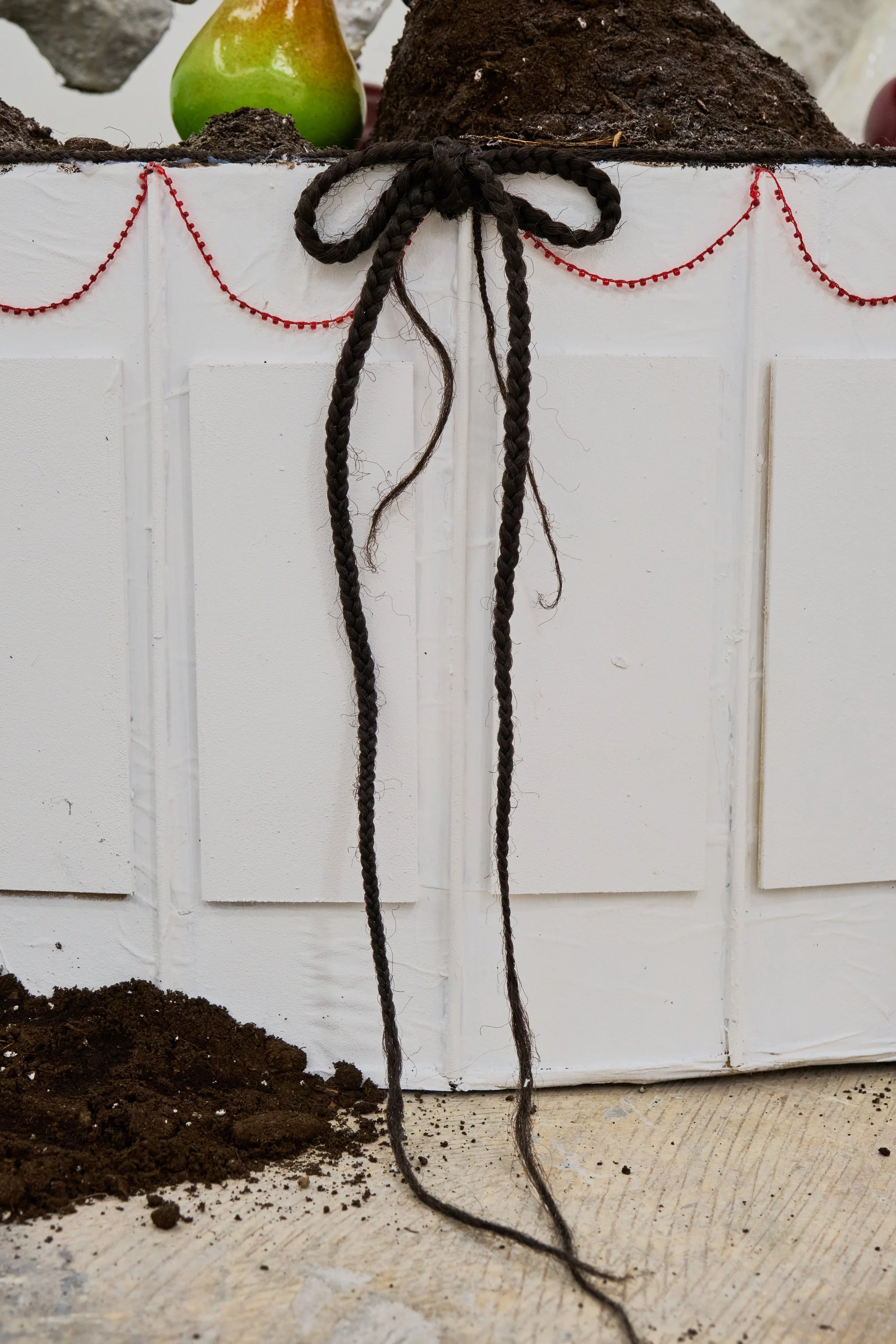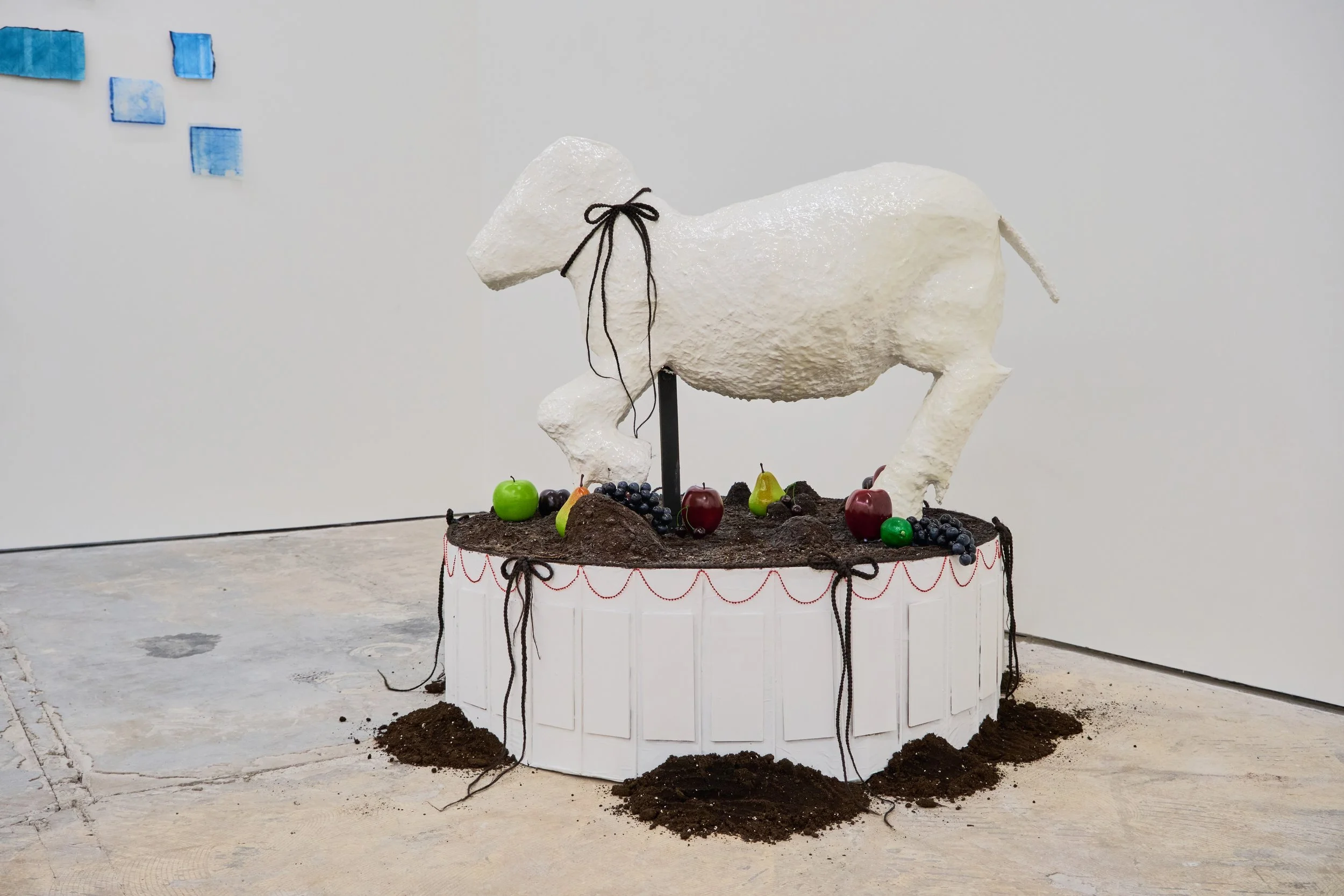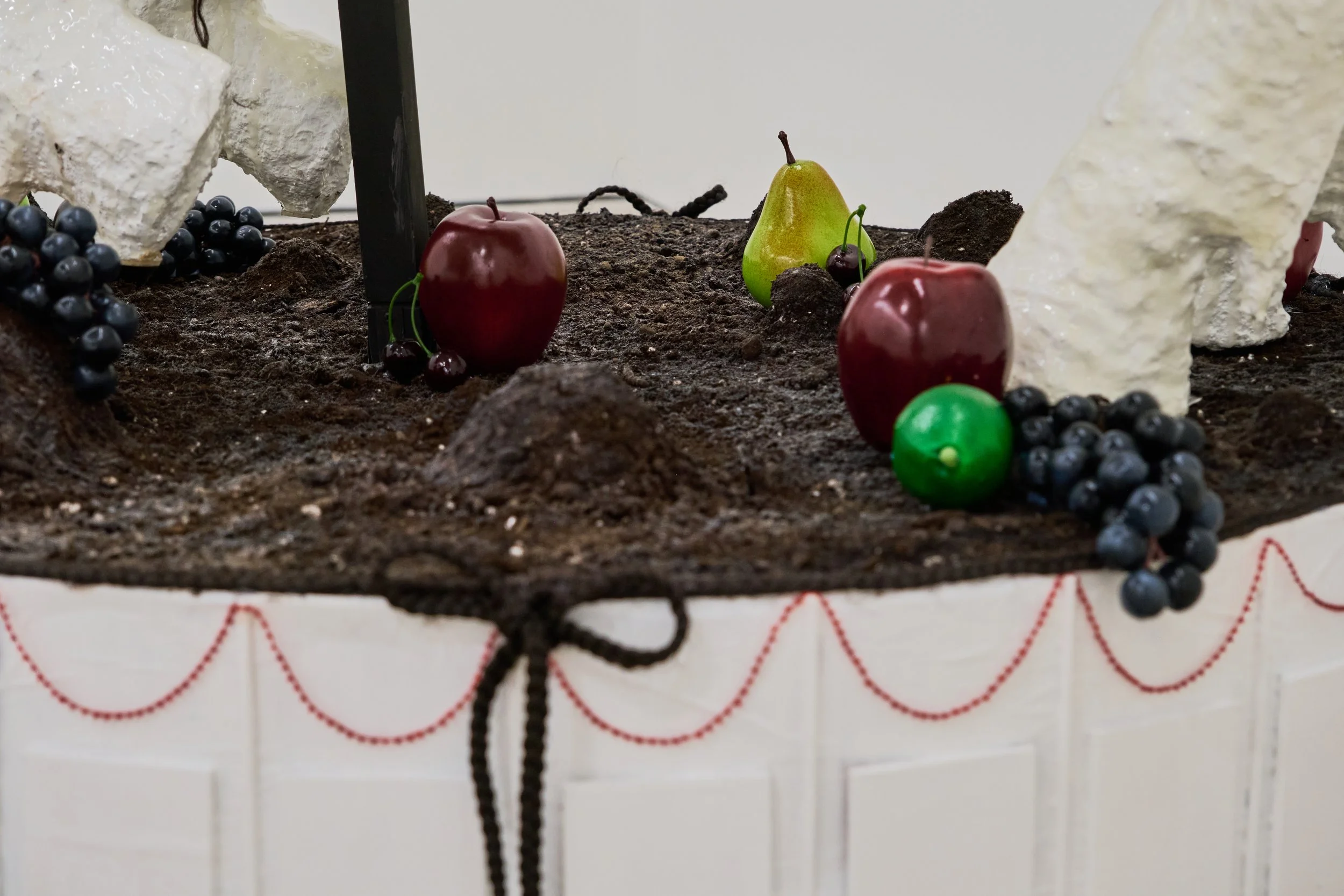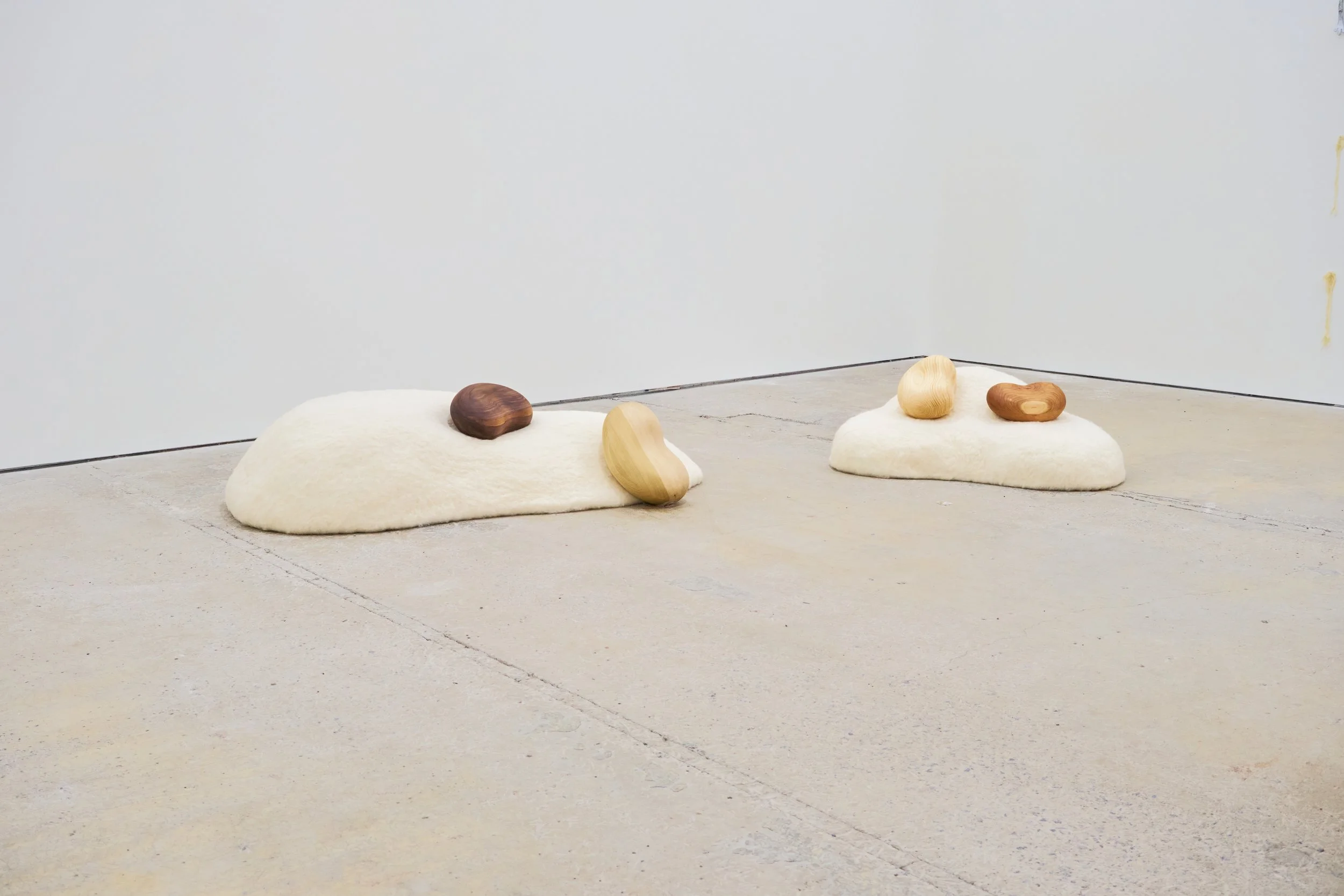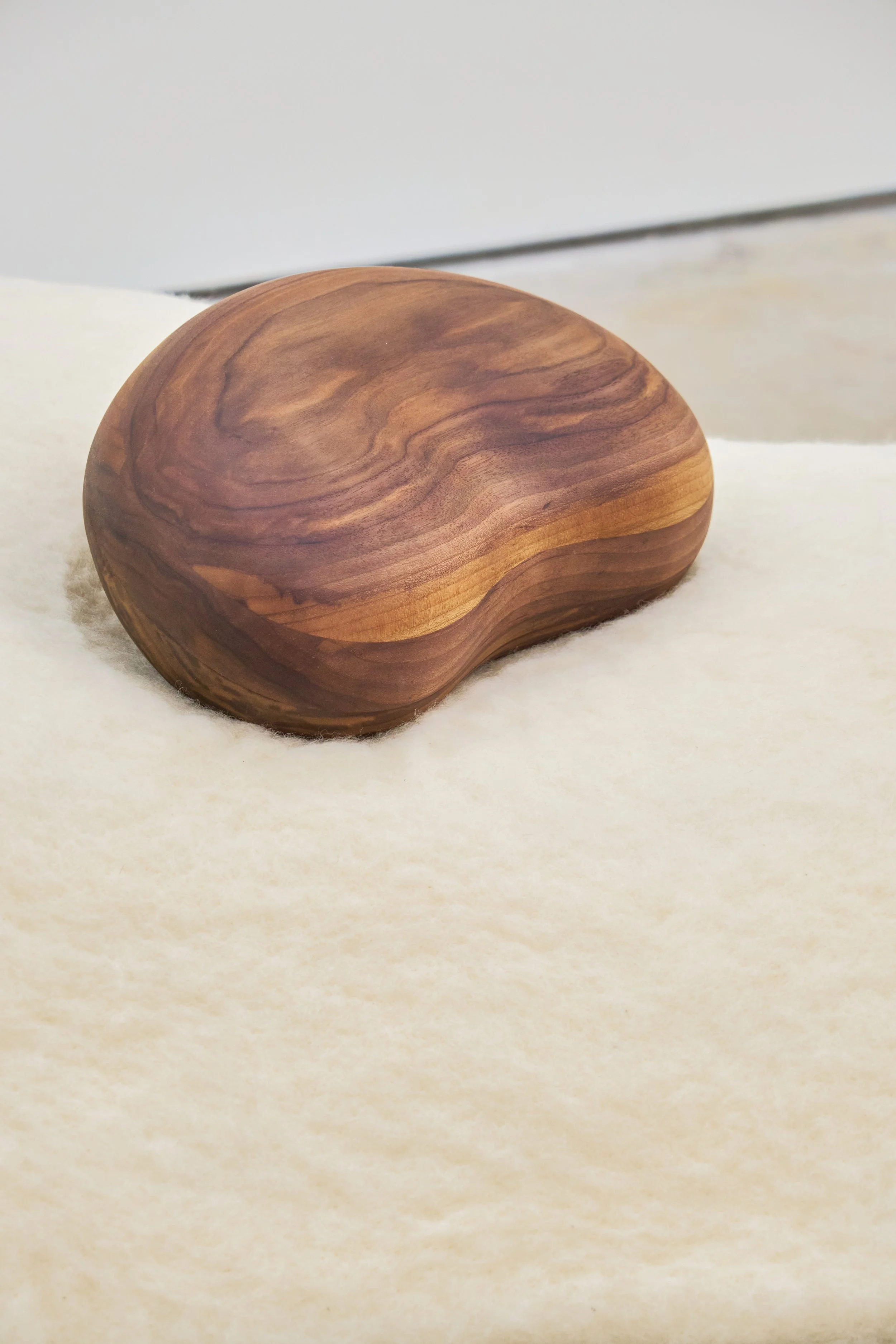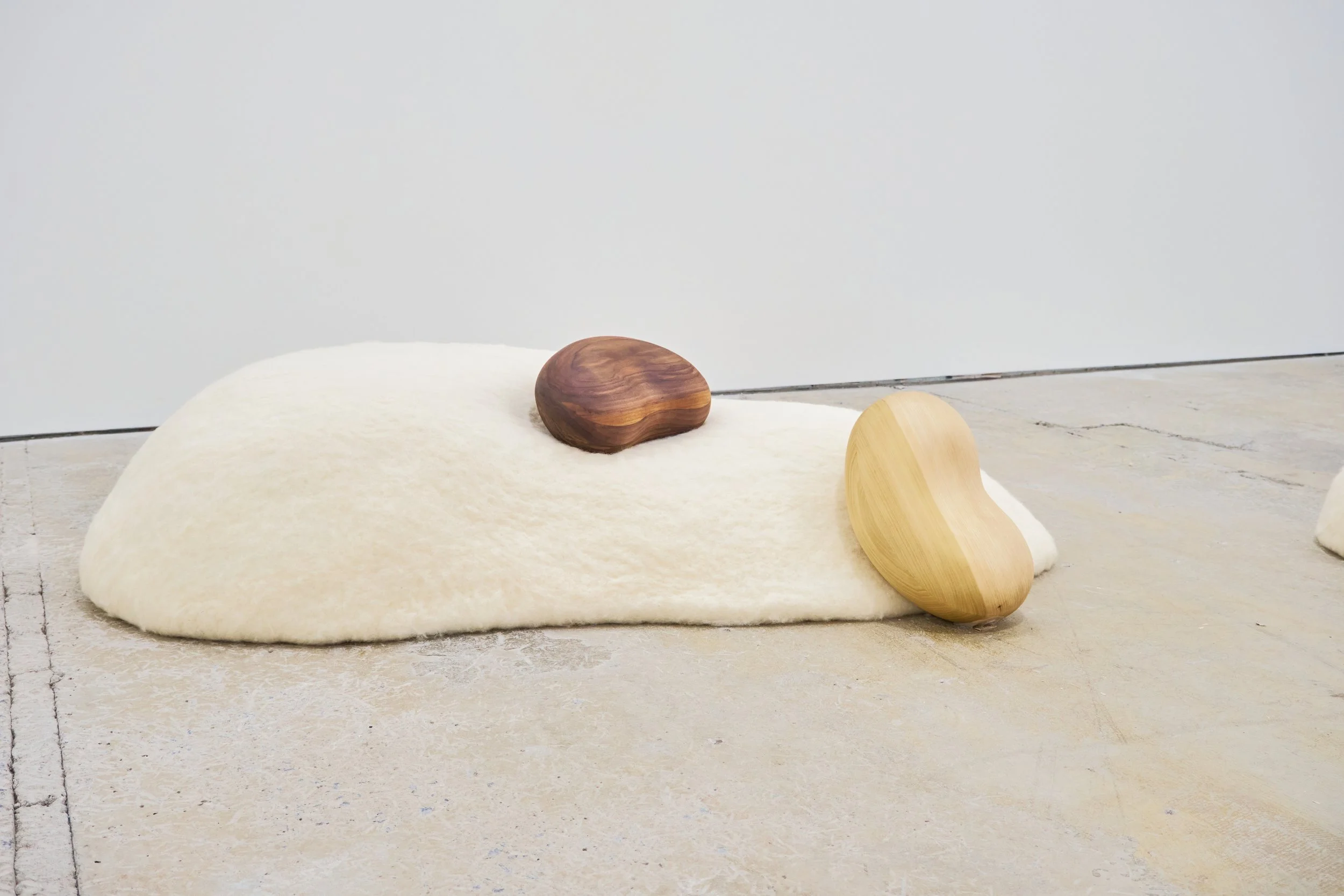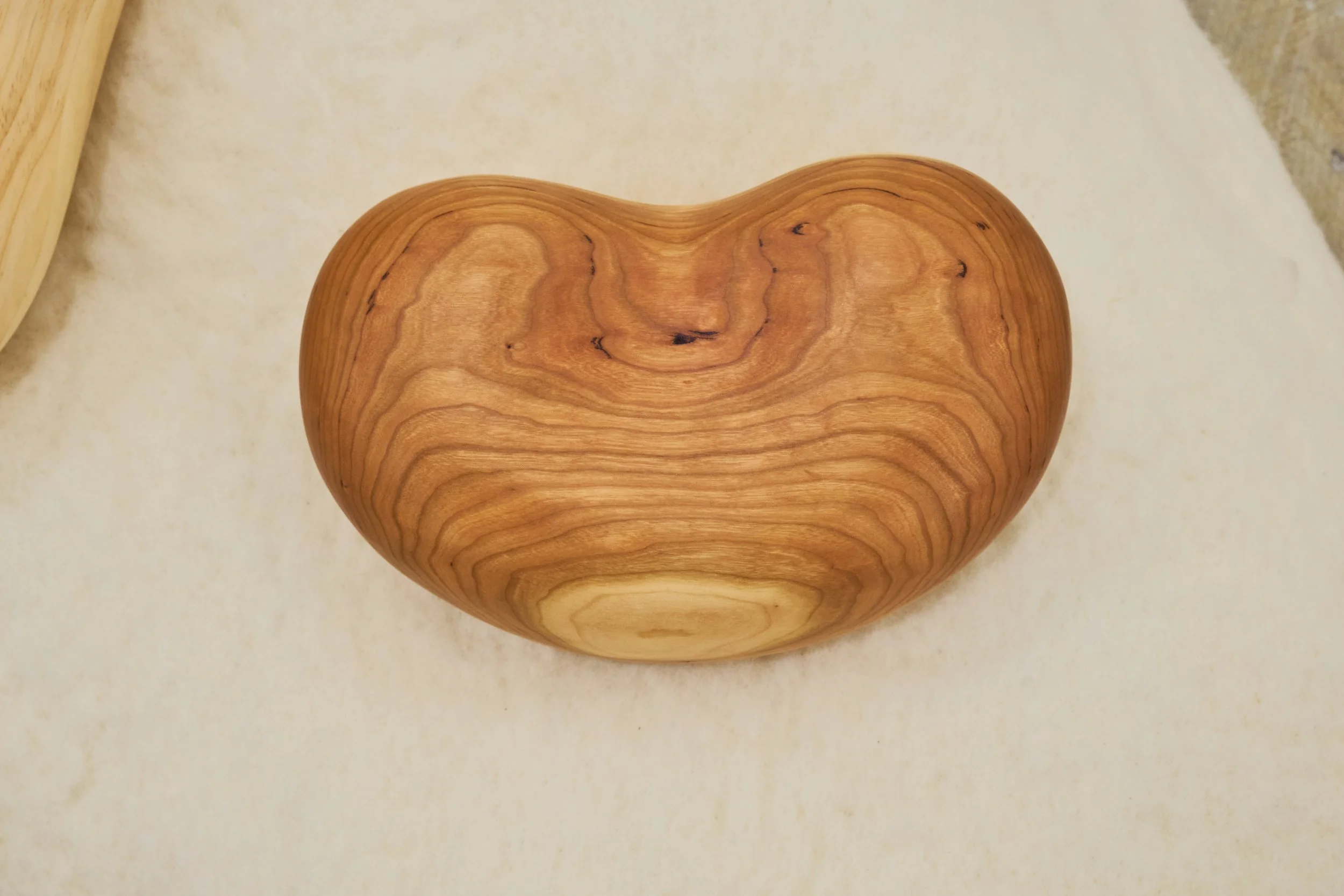AGGREGATE
AGGREGATE
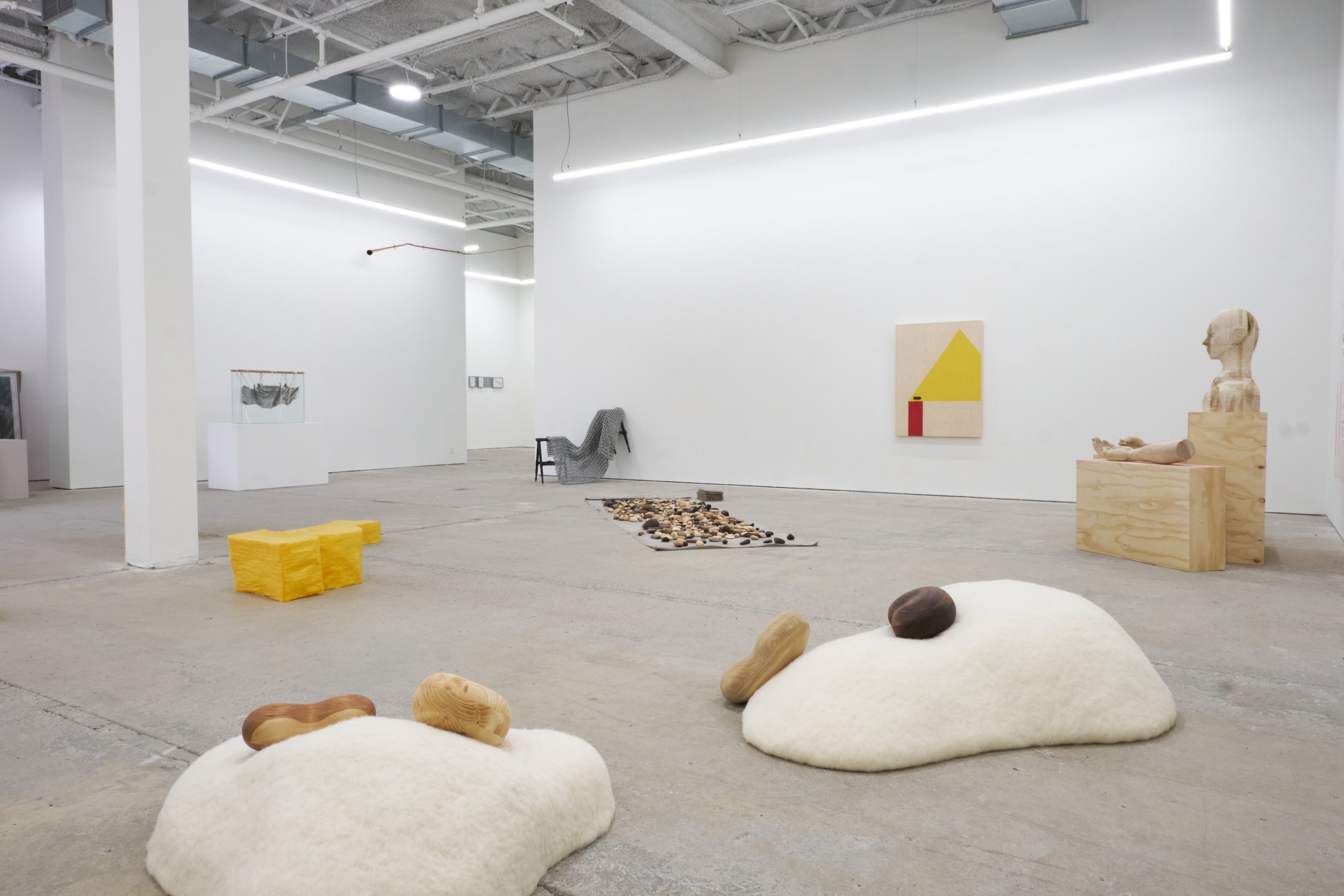



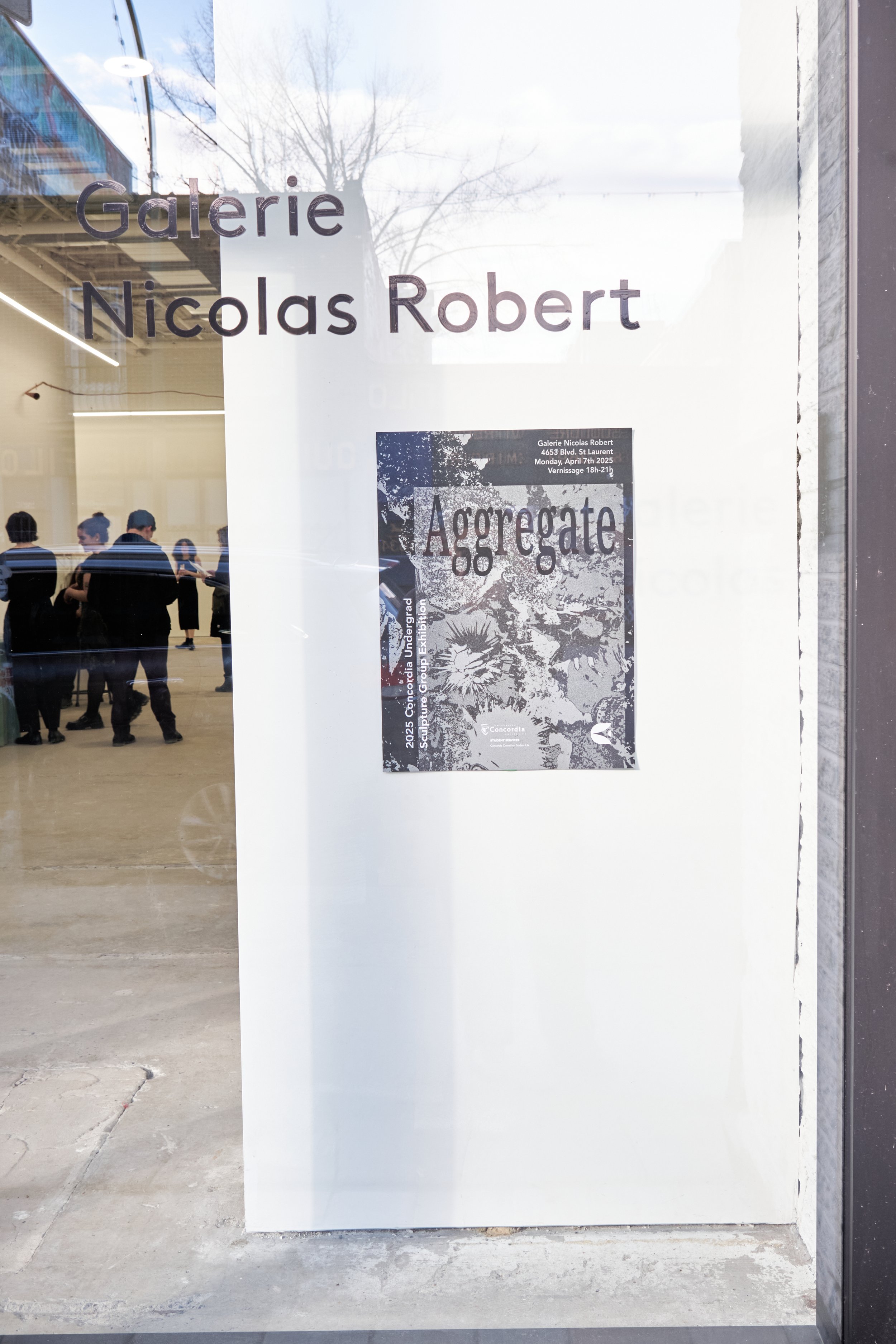

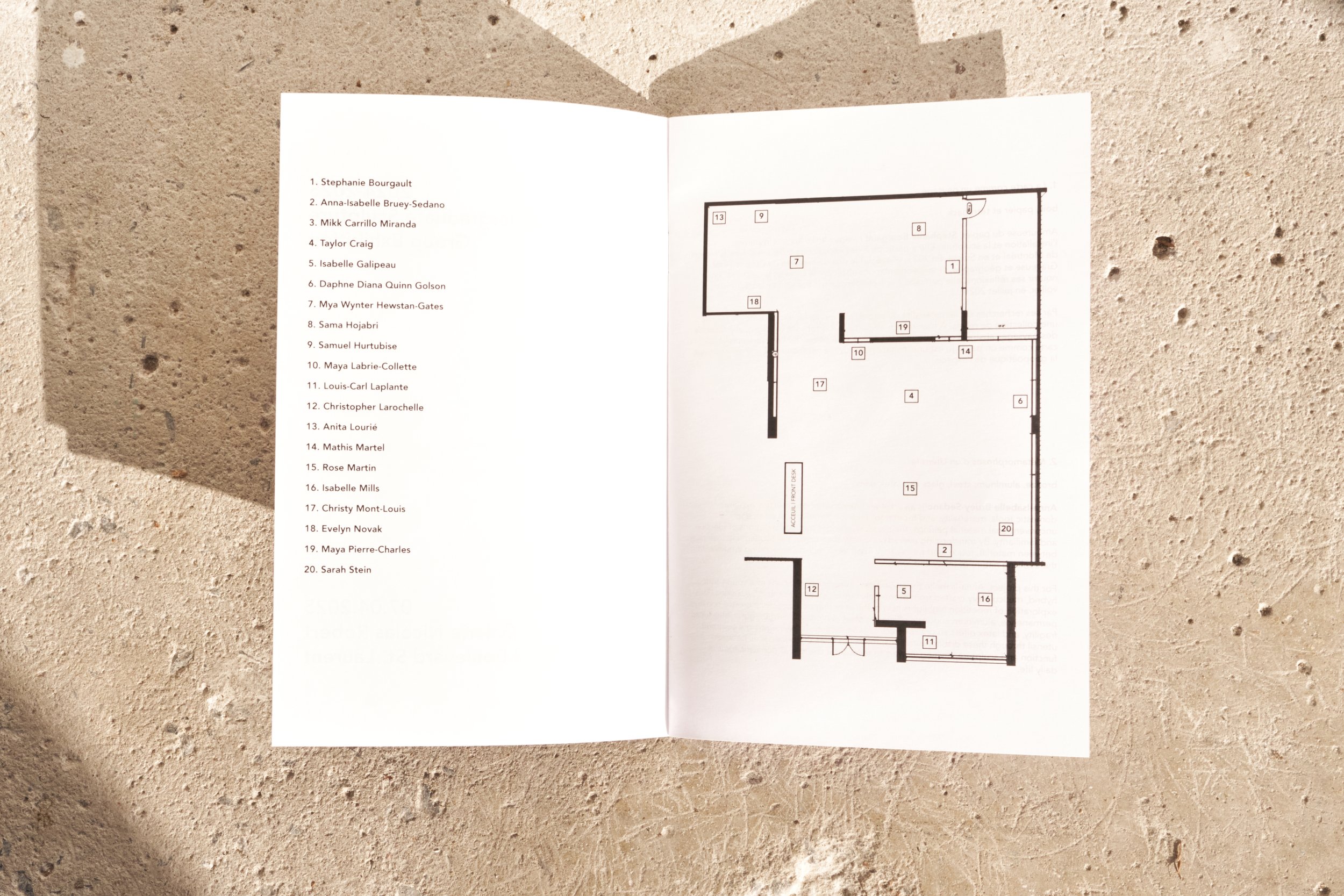
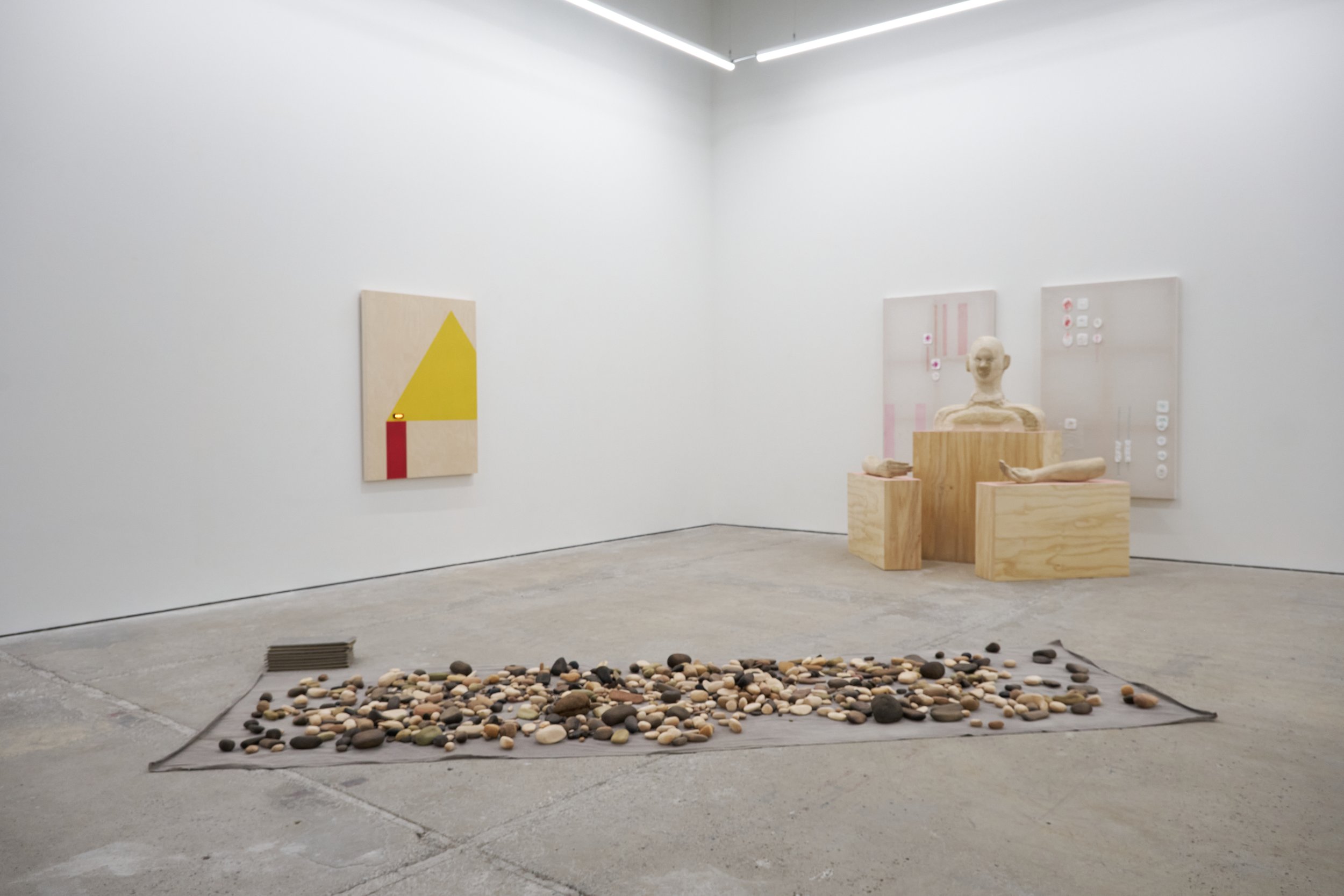
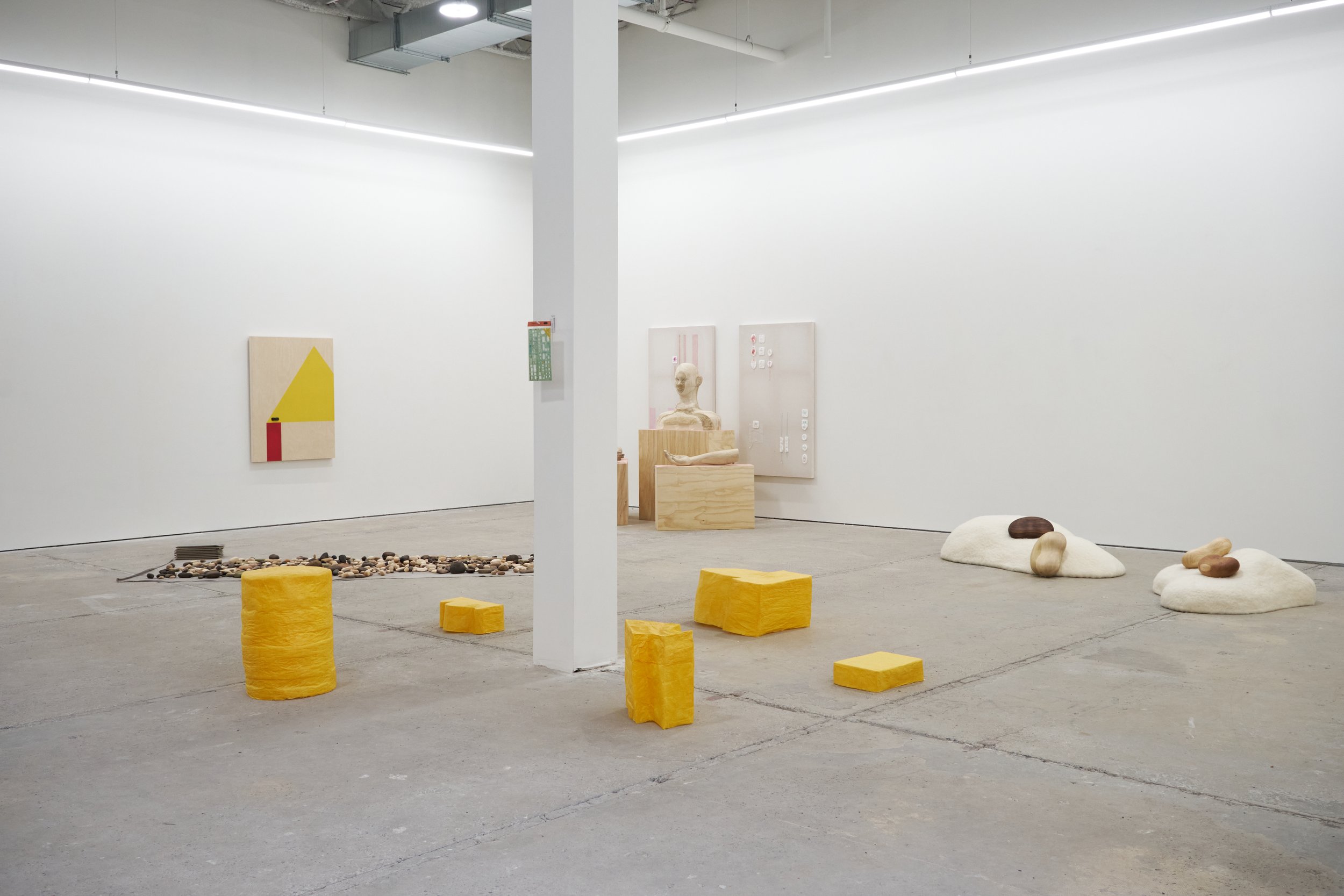
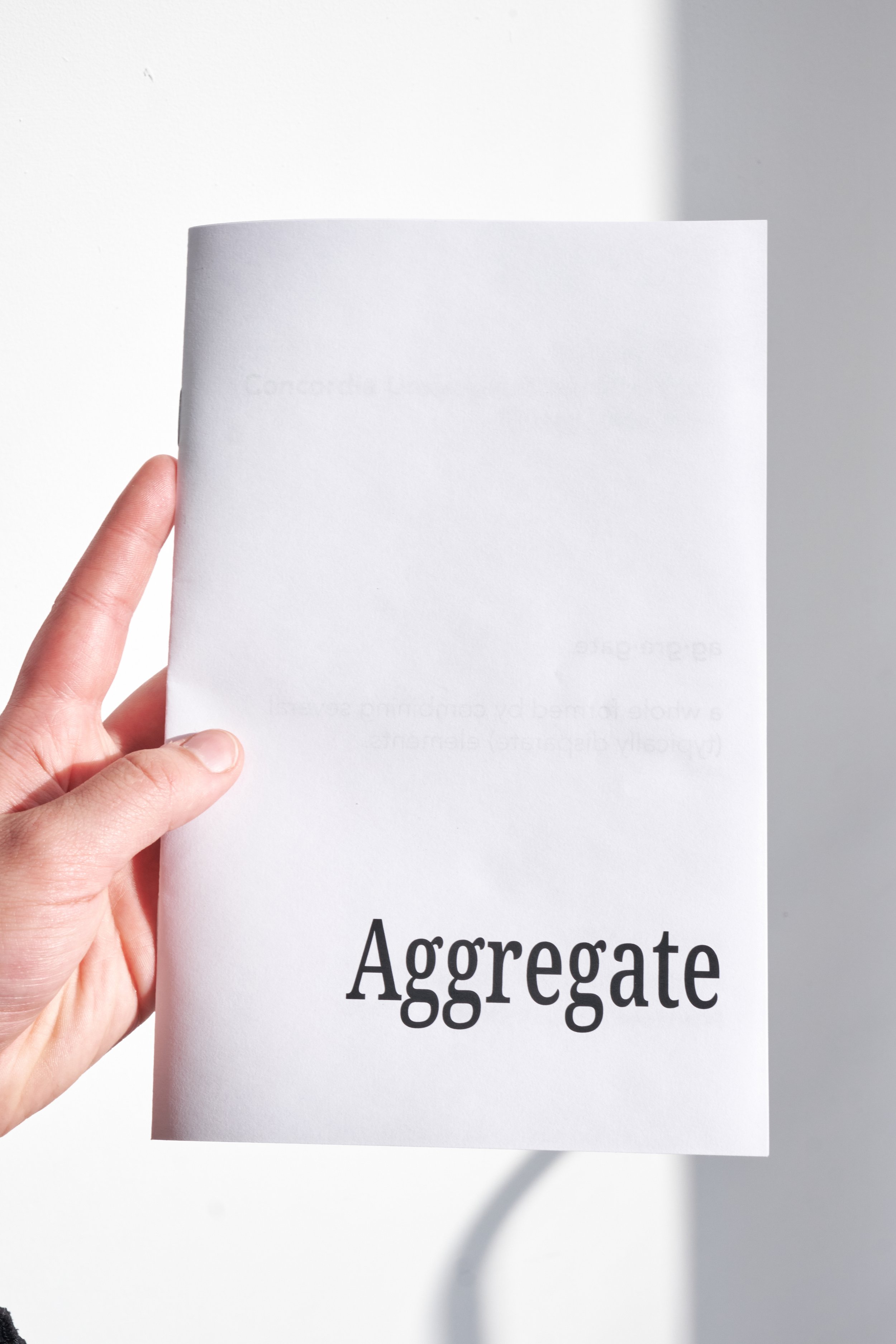
Concordia Undergraduate Sculpture Group Exhibition
2024-2025
07.04.2025
Galerie Nicolas Robert
4653 Boulevard St. Laurent
Exhibition Essay by Anaïs Castro
Aggregate, presented at Galerie Nicolas Robert in early April, brought together the work of nineteen emerging artists from Concordia University’s undergraduate Sculpture 410 class. Curated with a discerning and sensitive eye by artist and professor Kelly Jazvac, the exhibition unfolded across the gallery’s three rooms, organized not by rigid categories but by generative resonances. Eschewing fixed taxonomies in favour of fluid, thematic affinities, Aggregate offered a vibrant portrait of sculpture today. As both a site of reflection and a mode of resistance, sculpture is a means explore tactile and conceptual responses to urgent questions: how do we relate to matter, to space, and to one another?
In its complexity, intelligence and emotional range, Aggregate stood as a compelling testament to the evolving language of contemporary sculpture. No longer tethered to traditional materials or static forms, sculpture was defined here as an extraordinary vehicle for holding tension: between the intimate and the political, the ephemeral and the permanent, the utilitarian and the poetic. Far from merely showcasing emerging talent, the exhibition revealed a cohort of artists already shaping the future of sculpture—resilient, critical, and profoundly attuned to the urgencies of their time.
La carte comme un paysage
Stéphanie Bourgault
bois, papier et tétrapack
Amoureuse du papier, Stéphanie Bourgault navigue entre les arts imprimés, l’installation et la sculpture. Elle a participé à des expositions collectives dans la région de Montréal et en Suisse. En 2023, elle reçoit le prix de la relève de Culture Laval. Graveuse et géographe, ses expérimentations abordent la carte et le territoire. Pour nourrir ses réflexions, elle participe à une résidenceartistique en mer arctique sur un voilier, en juillet 2024.
Par ses recherches sur la matérialité du papier, elle recrée un microcosme de textures, une collection de reliefs. À travers ce matériau à la fois robuste et fragile, elle façonne des paysages abstraits qui évoquent la fragilité et la poésie de l’environnement. La carte comme un paysage est une invitation au voyage immobile et à une réflexion sur la géopoétique de l’espace.
Métamorphoses d’un Utensile
Anna-Isabelle Bruey-Sedano
bronze, aluminum, steel, glass and latex skins.
Anna-Isabelle Bruey-Sedano is an artist and designer whose practice explores domestic tools, materiality, and repetition. Through iterative processes and unconventional material pairings, their work challenges traditional notions of function and familiarity. By transforming everyday objects, they reveal the subtle relationships between material, touch, and perception. Their work reflects an ongoing inquiry into the evolving nature of utility and form.
For this project, Anna-Isabelle Bruey-Sedano presents 50 iterations of a spoon-fork hybrid, meticulously crafted from bronze, aluminum, steel, glass, and latex skins. This exploration of repetition highlights how materiality shapes interaction: bronze conveys permanence, aluminum suggests efficiency, steel reinforced strength, glass introduces fragility, and latex offers an unexpected, organic tactility. By reimagining a common utensil through these distinct variations, the series blurs the boundaries between function and sculpture, inviting viewers to reconsider the role of domestic tools in daily life.
Stones
Taylor Craig
wood - Basswood, Beech, Butternut, Cedar, Cherry, Fir, Mahogany, Maple, Pine, Poplar, Spruce, Walnut, vinegar, steel wool, tea, cotton.
Taylor Craig is an emerging artist from Oshawa, Ontario, currently studying Sculpture at Concordia University in Montreal. His work is rooted in an interest in materials and an appreciation for craftsmanship and labor and utilises various mediums and technical processes such as wood carving, tool making, metalworking, and assemblage. This hands-on approach allows him to create intricate sculptural forms that explore the physicality of various materials.
Stones is a work consisting of approximately 1,000 hand carved river stones atop a canvas drop cloth. Viewers are invited to physically interact with the sculpture and are encouraged to touch and hold the stones; rearrange and play with them however you feel inclined.
ice lock
Isabelle Galipeau
water, rope, pictures (we took), necklace (you gave me), rose petals (i saved), glass heart, rings and (other things i could remember).
Isabelle Galipeau is a multidisciplinary artist whose work explores identity, emotion, and the complexities of the human experience. As a queer woman born in Toronto and practicing in Montreal, she engages with themes of mental health, gender, and sexuality through installations and sculptures. Using materials like silicone, nylon, and fabric, Galipeau invites viewers to confront vulnerability and shared relational experiences through her humanist perspective and the physical presence of art.
In ice lock, Galipeau presents a suspended block of ice, encased with intimate objects from a past relationship. As the ice melts, the objects emerge, while stained water soils the clean white blanket below. Bound in a knot, the installation reflects Galipeau’s exploration of the fraught connection between intimacy and discomfort, inviting viewers to witness the slow, inevitable unraveling of memory and loss.
Double Helix
Daphne Diana Quinn Golson
wood, used bedsheets, cotton pads, makeup wipes, lipgloss, blush, nail varnish, Estrogen
Currently completing a BFA in Studio Art at Concordia University, Daphne Diana Quinn Golson is a Zambian artist whose portfolio draws inspiration from the contemporary art scene in both Lusaka and Montreal. Admiring the workmanship of other Zambian artists such as David Makala and Natasha Evans informed their materially-sensitive practice. During their time studying fine art in Canada, Golson fostered a growing appreciation for emerging innovative painters in Montreal. Their fluency with materials, ranging from typical sculptural standards including wood and metal, to conceptually engaged substances such as genetic matter and hormones, reflects a commitment to experimentation in both materiality and conceptual inquiry. Both their figurative depictions and abstractions serve to diarize the artist’s physicality, aspirations, and anxieties. This is demonstrated in their accumulation of genetic material, to be used as paint or stain, as well as in their representation of composite identities that mediate the idealized self and the doubling of the body or doppelgangers. The installation, Double Helix, reiterates these methodologies as it calls into question the status of our bodies and intersecting identities.
Redeem Your Reputation
Mya Wynter Hewstan-Gates
paper mache, drywall compound
Mya Wynter Hewstan-Gates is a multidisciplinary artist originally from Vancouver Island, B.C currently living and working between the un-ceded Anishinabe Algonquin territory, Ottawa, Ontario and Tiohtià:ke/Montreal.
Hewstan-Gates’ work is archival: she compiles and dissects her positionality and the specificity of the eras she’s lived through. She draws from ideas of shared nostalgia and collectively created memories to represent the fleeting feeling of change. By frequently representing herself, she dissects how we perceive, how the world around sees us, and how others are able to situate themselves within a shared lifetime. Within this aim to archive, Hewstan-Gates finds herself drawn to what others have deemed grotesque or monstrous: learning to love what might be outcast.
Naranja
Sama Hojabri
cardstock, cardboard, wood, electronic circuits, 2025
Seeking to familiarise with every medium, Sama Hojabri’s work opposes the limitations within the artistic world and embraces art as a diversely maximalist medium to form and inform communities. Recurring displays often portray a merge of both machine and man, evoking a sense of alien yet familiar beauty. Inspired by Ryo Kawasaki’s 1976 Juice, a jazz-funk album. Naranja is an abstract visualization of said fruit, bringing freshness into the three dimensional world.
Processed in hopes to blend both analog and digital; a companionship. This almost life sized, mechanized geodesic dome reflects the purest form of sustainable shelter. Unearthed preceding ancient mesopotamia, this structure framed by carefully calculated polyhedrons is “a whole formed by several”. Interiorized with scrap electric circuits collectively, metabolized on par to the concept of “the body”.
Sublime Transcription
Samuel Hurtubise
letterpress letters, wax, vinyl cover, printed vellum
Samuel Hurtubise’s work engages our relationships between sound and language, exploring how they condition and shape our perception. Their practice examines how sound, like language, is both a recorded trace and something that lingers in memory and space. Through installation work, Hurtubise explores how these interactions shape our ways of understanding and communicating beyond speech The work explores the tension between language as a structured system and its shifting, personal resonance. A set of letterpress letters traces the contour of a vowel diagram, evoking the mechanics of speech and its attempt at classification. How do you pronounce sounds, and could you perfectly transcribe them?
Comfort Blanket
Maya Labrie-Collette
aluminum rods, copper rivets, repurposed wood
Maya Labrie-Collette is an interdisciplinary artist whose work focuses on systems of oppression, marginalization, and the exploration of humans’ interconnectivity with their surroundings. She values labor, and dedicates her body to her process. For her, art is intrinsically political and has the power to spark openness and thoughtfulness. She strives to use her practice to open a dialogue around current social issues.
Through her sculpture, Comfort Blanket, Maya Labrie-Collette materializes the tension between resilience and isolation. During a 7-months long creation process, she put herself through mindful, repetitive gestures, mirroring the life-long act of self-preservation. The resulting large-scale aluminum chainmail is presented, exhibiting the traces of the tools and hands that shaped it. The artist wants to thank Mathieu Collette, Samy Labrie-Collette, Jean-Olivier Savard and Michael Pontrelli for their invaluable support in her process.
Tragic, Hubristic and Priapic Set
Louis-Carl Laplante
wood and metal
Louis-Carl Laplante explores the invisible architecture of identity, revealing the interaction between body and space. Through sculpture and installation, he examines queer possibilities that emerge when the boundaries between private and public dissolve, turning spaces of concealment into sites of revelation. In this tension between hidden and exposed, Laplante finds a language of transformation, where objects and bodies are fluid and in constant dialogue.
The stage is set: a communal shower excluded from its intimate setting, now turn into a background of discourse,of suggestive desire, and voyeurism while also becoming this pictorial setting where the human presence is allusive. The shower develops into both a stage and a mirror, reflecting the endless construction of self. Absent bodies are both actors and spectators, trapped in an endless loop of mimicry, questioning the performances they enact in this shared space. The work challenges us to reconsider the spaces we occupy and the identities we perform within them, embracing the fluidity of self in all its complexities.
In translation
Christopher Larochelle
pressed cardboard pulp, glue, ink
Christopher Larochelle is a multidisciplinary artist, born in Vancouver, British Columbia, currently completing his BFA in Studio Arts. His practice is centered in themes of production, consumption, and hierarchical systems of value in the Anthropocene. His sculptures have been featured in group exhibitions at Pierre Francois-Ouellette Art Contemporain, and Produit Rien, as part of Art Matters Festival (2023, 2025), as well as in an ephemeral outdoor public-sculpture garden in Parc Jean-Drapeau (2023), and in the courtyard of Concordia’s Visual Arts building (2023-2024).
In translation is a process-based work centered in analyzing the material transformation, or translation, of complex organisms as they become commodified objects. The utilitarian form of the sculpture embodies the logic of value systems that humans impose onto non-human matter; its identity and ontological meanings are erased and its surface becomes a record of human activity, reflecting our needs, desires and perceptions. The work bears a vague resemblance to familiar materials, objects, and shapes but is completely recontextualized and unrecognizable in its highly processed state.
Perplexe
Anita Lourié
felted wool, linen, foam, cardboard
Anita Lourié is a Canadian/French multidisciplinary artist, specializing in sculpture. She frames her research through institutional codes, such as conservation and preservation techniques. She was recently awarded the Daniel Forgues Scholarship for art, engineering and environment and the Outdoor Sculpture Competition at Concordia University. She has also taken part in group exhibitions including at Gallery Produit Rien during Art Matters festival. Lourié defines her practice as an act of care. Her process uses imprints, memories and material traces as proof of past events, often creating vessels that implies emptiness.
Her installation, Perplexe, invites reflection on presence and absence within the archiving techniques used in cultural institutions such as museums. Here, the artist questions preservation methods, highlighting the contrast between static preservation and the living, caring body.
Unit
Mathis Martel
wood pannel, acrylic paint, LED strobe light
Born in Montréal, Québec, Mathis Martel is a Studio Arts student at ConcordiaUniversity, following his studies in Visual Arts at Cégep du Vieux Montréal. His work highlights the minimalist beauty in overlooked utilitarian forms and objects.
Unit merges minimalism with industrial aesthetics on a 36 x 48-inch wood panel. Featuring two geometric forms in yellow and red, intersected by an amber strobe light, the piece embodies Martel’s dual practice as both painter and sculptor. It reflects his interest with composition, color, and form, exploring their presence in both abstract art and the industrial world
American Standard
Rose Martin
template FORM No. 9383-A (1970), yellow tracing paper and wheat paste
Rose Martin is a Montréal-based visual artist originally from Québec City. Currently completing her BFA in Studio Arts at Concordia University, her sculptural practice explores how objects can become tools and serve as vehicles for material transformation. Her work is deeply influenced by design, typography, and architecture. Through her studies, she has been fascinated by the visible and invisible structures that dictate how we connect with our surroundings.
American Standard is an installation exploring the standardization of our inhabited spaces. The artist created sculptural interpretations of architectural tools that dictate our built environment. The project takes its name from a plumbing company and is inspired by the templates they created to promote their designs in buildings and homes. American Standard recognizes overlooked objects and structures that shape our collective experience.
Impact Chair
Isabelle Mills
one inch metal tube, leather, wood, rivets, and hardware
Isabelle Mills is a multidisciplinary artist whose practice currently takes place in Tiohtià:ke, Montréal. They explore identity and sexuality in provocative manners. Through the incorporation of photography, performance, and visual art. Mainly exploring leather, metal, and their own body as a canvas and tool. Their research in sexuality finds itself in all their works and is the starting point for most of their pieces.
Impact Chair is an exploration of what impact play furniture can look like in a contemporary setting. Inspired by Ludwig Mies van der Roche’s chair; Mr 534 Mies ARMCHAIR Isabelle aims to develop a new kind of sex furniture that doesn’t look medieval since most sex furniture typically stems from medieval torture for its inspiration. They want people new to kink to feel more welcomed to explore their sexuality since a lot of the current furniture found in dungeon rooms can be quite intimidating.
Specimen No. 23: The Marks of a Woman’s Soul
Christy Mont-Louis
steel, pink ribbons, wood, glass
Christy Mont-Louis is a Haitian sculptor based in the greater Tiohtià:ke/Montréal area. She is the recipient of the Elspeth McConnell Award and completed an internship at the artist-run nonprofit foundry, l’Atelier La Coulée. Through her exploration of metal as material, she addresses the social issues that characterize her experiences as a Black woman,
Mont-Louis’ work critiques how society inadvertently perpetuates and reinforces social biases. Her exploration of the body evokes physical and sensory reactions, highlighting how these responses are shaped by or related to social constructs and biases. Through the forceful manipulation of a steel sheet, this piece depicts the violence imbedded in the public discussion and dissection of women’s bodies including the casual commodification and fetishization of Black bodies.
Into the Void
Evelyn Novak
discarded copper pipe, copper sheet, plumbing joints
Evelyn Novak was born and raised in Toronto. She is currently completing her undergraduate studies in sculpture at Concordia University in Montreal. In Novak’s work she uses materiality to reveal working physical systems as conversations.
into the void is a playful exploration of copper as a communication device - one that brings us water and light on a daily basis. The work exchanges water and electricity as the common material running through copper, for sounds generated by space and the body. Novak works to manipulate the familiar context of pipes and of copper from invisible to visible connectors. Allowing people to listen and ‘scream (talk, sing, whisper, or breathe) into the void.’
rotten fruit falls on its own
Maya Pierre-Charles
wood, papier mâché, different thrifted hands
Maya Pierre-Charles is a Haitian-Canadian artist based in Montreal/Tiohtià:ke, whose multidisciplinary practice includes sculpture and object-based installations. Drawing from her experiences as the youngest member of a close-knit Haitian family, Pierre-Charles explores themes of family dynamics, identity, and self-discovery. Her work often takes a whimsical approach, incorporating thrifted and everyday objects to evoke a sense of nostalgia and personal connection.
The piece “Rotten fruit falls on its own” poses the question of whether we should avoid connections out of fear of getting hurt. This work delves into themes of loneliness, human relationships—both nourishing and toxic—and the perpetual choices we make in relation to them. With a sense of wonder and curiosity, the piece embodies the cyclical nature of our interactions, symbolizing the emotional loops we often find ourselves in.
Dorothy’s Little (Big) Beans
Sarah Stein
walnut, white pine, cherry wood, poplar, wool, recycled foam, stuffing, quilt batting, plywood, walnut oil, paste wax
Sarah Stein is a visual artist born and raised in Montreal and is currently completing her BFA at Concordia University. She primarily works in sculpture but also has a great passion for painting and a newfound love for ceramics. She enjoys integrating dream-like elements into her work, challenging the viewer’s perception of reality. She intends to complete an MFA in the near future to further push her practice and development.
Dorothy’s Little (Big) Beans is an ode to her late grandmother’s nickname for her four grandchildren, “little beans.” The piece itself is meant to portray themes of unity, comfort, warmth and rest. As the solid wood beans lay upon the soft and supple wool, they create a contrast not only in materiality but also in their role. The variation in the bean sizes and types of wood is meant to create individuality, all while remembering that together, they’re kin.


